
Himalayan 360
A Leading B2B Nepal Operator

Call Expert (Raj) 24X7

Quick Questions? Email Us
How to plan tibet tour via nepal | complete guide.
If you’re looking for a once-in-a-lifetime Cultural and Spiritual adventure then plan a Tibet Tour Via Nepal. With the opening of the overland border crossing at Gyirong Port, it’s now easier than ever to explore the stunning landscapes and rich cultures of both Nepal and Tibet in one epic journey. Here you will know A Step-by-Step Guide for Tibet tour via Nepal.
Table of Contents
Step 1: Start Your Journey in Kathmandu
Kathmandu is usually the starting point of most Nepal to Tibet tours, as it offers easy access to the overland border crossing and the international airport. But before embarking on your Tibetan adventure, make sure to spend a few days exploring the vibrant city of Kathmandu . Visit its UNESCO World Heritage Sites , such as Durbar Square , Swayambhunath Stupa , and Boudhanath Stupa , and indulge in the local cuisine and vibrant culture.
Step 2: Secure Your Tibet Travel Documents and Permits
To enter Tibet, you need to have several travel documents and permits. As an international tourist, you must have a Tibet Travel Permit, which is only available through a registered tour operator . Your tour operator will use a scanned color copy of your passport to apply for the permit on your behalf, and the processing time usually takes around 15-20 days.
In addition to the Tibet Travel Permit , you also need a Chinese Visa to enter Tibet. Unlike the standard Chinese Entry Visa, you will be issued a Chinese Group Visa upon arrival in Nepal. Your tour operator’s Nepali staff will apply for the visa on your behalf, and the processing time is three working days.
There are also other permits that you need, such as the Alien’s Travel Permit and the Frontier Pass . These permits are usually obtained upon arrival in Lhasa from mainland China, but when traveling from Nepal, you need to have them issued before your trip. Your tour operator will handle the arrangements for these permits to be ready before your trip departure date.
Step 3: Choose Your Mode of Transportation
There are two ways to Tibet Tour Via Nepal: overland and by air. If you choose the overland option , you’ll travel from Kathmandu to Lhasa via the Gyirong Port. This route offers breathtaking views of the Himalayas and allows you to experience the local cultures and traditions along the way. If you opt for the air option , you’ll fly from Kathmandu to Lhasa, which is a quicker and more convenient way to reach Tibet.
Step 4: Plan Your Itinerary for Tibet Tour Via Nepal: A Guide to Flights and Overland Routes Tibet
Once you arrive in Lhasa, it’s time to start exploring the wonders of Tibet. There are numerous attractions and destinations to visit, such as the Potala Palace , Jokhang Temple , Namtso Lake , and Mount Everest Base Camp . Your tour operator will help you plan your itinerary based on your interests and preferences, and ensure that you have a safe and enjoyable trip.
Final Thoughts
Tibet Tour Via Nepal is an unforgettable adventure that offers a unique blend of culture, history, and natural beauty. By following this step-by-step guide and working with a reputable tour operator, you can make sure that your trip is well-planned and hassle-free. So pack your bags, grab your camera, and get ready for the journey of a lifetime!
Best Travel Seasons for Tibet Tour Via Nepal: A Guide to Planning Your Adventure
Tibet and Nepal are popular travel destinations for adventure and cultural experiences in Asia. However, their climates differ significantly, with Tibet having a high-altitude plateau sub-tropical climate, while Nepal has a more varied climate dependent on season and altitude.
For an optimal trip to Tibet, travelers should visit from April to June and September to October, avoiding the rainy season. This period offers clear skies, mild temperatures, and excellent trekking conditions. The peak period for travel is from June to October. During these months, temperatures remain moderate, with no rainfall.
Nepal’s peak travel season is from October to May, during the dry season. However, weather conditions differ based on altitude. December to March is not ideal for visiting higher altitudes of the Himalayan Mountains due to heavy snowfall and intense cold. The best times to visit are during the spring and autumn seasons.
Nepal’s monsoon season occurs from June to late September, making it less ideal for travel to southern low-altitude areas. However, the dry season presents an opportunity to explore the plains and jungles of Nepal and experience various adventure sports.
In conclusion , while Tibet and Nepal share a region, travelers should consider the best time to visit based on climate and preferences. By carefully planning and timing trips, visitors can fully enjoy the natural beauty and excitement of these unique destinations.
How to Travel to Tibet from Nepal: A Guide to Flights and Overland Routes
Are you planning a trip to Tibet from Nepal? There are two main ways to get there – taking a flight or traveling by road. Here, we’ll give you the lowdown on both options.
Flights from Nepal to Tibet
The fastest and easiest way to get to Tibet from Nepal is by taking a flight. The Tribhuvan International Airport in Kathmandu offers direct international flights to Lhasa, the capital of Tibet. Currently, there are only three airlines that operate flights from Kathmandu to Lhasa, and the average one-way economy fare is around US$220-US$250 per person.
The flight takes about 90 minutes and offers stunning views of the Himalayas, including Mount Everest . However, it’s important to note that you’ll need to acclimatize to the high altitude once you arrive in Lhasa, which is over 3,000 meters above sea level. Plan to spend at least two days acclimatizing and avoid caffeine, alcohol, cigarettes, and strenuous exercise during this time.
Tibet Tour Via Nepal by road
The more scenic route for Tibet Tour Via Nepal is by traveling overland by road. The G318 Friendship Highway takes you from Kathmandu to Lhasa, passing through several towns and cities along the way. The road trip includes a visit to the Everest Base Camp , the Tashilhunpo Monastery , and the Kumbum Stupa .
The overland route starts at Kathmandu and goes through the Langtang National Park and up to Rasuwa Gadhi before crossing the border at Gyirong Port. From there, you’ll travel to Gyirong Town to acclimatize to the high altitude. The entire road trip takes several days, and you’ll need to make arrangements for accommodations and meals along the way.
Insider Tips:
As the only local Tibet travel agency with offices in Kathmandu, Lhasa, and Chengdu, we offer convenient and safe transfers across the Sino-Nepal border . Our jeep service provides a tourist-friendly experience, and we can help you obtain your China Group Visa and Tibet Permit . We also recommend the best-value hotels and can assist with booking flights and other l ogistics . Contact us for more details.
Conclusion:
Both the flight and overland routes offer unique experiences and stunning views. Choose the option that fits your schedule and budget, and be sure to plan for altitude sickness if traveling by road. With careful planning and the right resources, your journey from Nepal to Tibet will be unforgettable.
Top Travel Routes for Tibet Tour Via Nepal: Enjoy Trekking, Culture, and Wildlife
If you’re looking for an adventure that offers stunning mountain views, rich cultural experiences, and unique wildlife encounters, a tour of Nepal and Tibet should be at the top of your list. From trekking to Mount Everest Base Camp (EBC) on both the Nepalese and Tibetan sides to exploring the vibrant cultures of Tibetan Buddhism and Hinduism , to encountering rare and beautiful wildlife in their natural habitats, this tour has it all.
Trek to Mount Everest Base Camp
Trekking is a popular activity in both Nepal and Tibet, with Mount Everest straddling the border between the two countries. In Nepal, the trek to EBC on the southern side starts from Lukla and takes around 13 days to complete the trek. On the Tibetan side, the trek starts at Old Tingri on the G318 and takes just four days to reach the northern EBC. In addition to trekking and helicopter options in Nepal, you can enjoy a tour vehicle, cycling, motorcycle, and trekking to EBC in Tibet.
Tibet Tour Via Nepal map
Explore the rich culture of tibet and nepal.
Religion is of high importance to the local populations of both Nepal and Tibet, but the two countries have very different religions. In Tibet, Tibetan Buddhism is the primary religion, and the unique Buddhist culture can be found throughout the plateau and in the everyday lives of the Tibetan people. In Nepal, Hinduism is the predominant religion, but Tibetan Buddhism has been a major part of the culture as well. For the best experiences of Buddhism and Hinduism in Nepal, visit the Kathmandu Valley and the sacred site of Lumbini , the birthplace of Gautama Buddha . In Tibet, explore the Jokhang Temple in Lhasa and the sacred Mount Kailash in Ngari.
Encounter Unique Wildlife in Nepal and Tibet
Despite being on the highest plateau in the world, Tibet is home to a diverse range of wildlife, including wild yaks, donkeys, antelopes, snow leopards, and pika. In Nepal, the Chitwan National Nature Preserve is one of the best places in Southern Asia for a wildlife safari , with Bengal tigers, one-horned rhinos, crocodiles, leopards, and more.
Join the Most Recommended Tibet Tour Via Nepal
If you’re ready for the adventure of a lifetime, consider joining one of our highly recommended tours:
Lhasa to Everest Base Camp Tour
Kailash yatra from kathmandu via lhasa, 13-day kailash tour from kathmandu by road, kailash mansarovar yatra tour packages 2024, join the most recommended mt.kailash tour via nepal for indian religious people.
Are you an Indian religious person looking for an unforgettable journey to Mount Kailash? Our Mt. Kailash tour via Nepal is the perfect choice for you. This tour will take you on an incredible journey to one of the most sacred sites in Hinduism, Buddhism, and Jainism. Join us on this spiritual adventure of a lifetime Through these tour packages.
- Kailash Yatra via Lhasa
- Kailash Yatra via Kerung
- Kailash Yatra via Kathmandu
- Lhasa Overnight Tour
- Kailash Mansarovar Yatra via Kathmandu
Nepal and Tibet offer some of the most intense and amazing travel experiences in Asia. From high mountains and vast prairies to dense jungles and alpine valleys, these two destinations on either side of the mighty Himalayas make for one of the best tours this blue planet has to offer. Stand at the foot of the world’s highest mountain and gaze up at its massive peak, knowing you’ve truly reached the Roof of the World. Book your Nepal to Tibet tour today!
Leave a reply … Cancel reply
Your email address will not be published. Required fields are marked *
Save my name, email, and website in this browser for the next time I comment.
Keep Reading See All
Mardi himal trek guide 2024 | popular trek itinerary, getting a new sim card in nepal | best data pack ntc ncell.

Travel to Tibet and Nepal: Essential Guide to Planning Your Adventure

Tibet and Nepal are some of the most popular places in the Himalayan region and no surprise that many people want to visit both at the same time. They are located nearby, and there is a choice of a short flight between them or a beautiful road connecting Lhasa and Kathmandu. In this article you will find information about documents required to travel to both Tibet and Nepal, information about the ways of traveling, when to visit and where to start your adventure.
VISA REQUIREMENTS
If you travel from tibet to nepal.

You will arrive in Tibet from China either by plane or on a train. First, most of the visitors will need to apply for a Chinese visa in their home countries. It typically takes about one week.
After you have your visa, your travel agency will arrange a special permit for you to visit Tibet . It will additionally take about 15 days.
That means you should start planning your trip 1 month in advance .
You will also need Nepalese visa when you enter Nepal (either at the overland border or in the airport). Most visitors are eligible for visa on arrival.
If you travel from Nepal to Tibet

Nepal has a very relaxed visa policy. Most of the travelers can receive their Nepalese visa upon arrival at the airport.
Read about traveling to Kathmandu, visa on arrival requirements and things to do in the capital of Nepal .
When you travel to Tibet from Nepal, you will also need a Chinese visa. It won’t be a regular visa, but a Chinese group visa . It is a single entry visa, and it is issued on a separate paper. You can receive it as early as in 3 working days with urgent service or save some money and apply for 5 days service.
While waiting for your visa, you can travel in Nepal.
Even though it only takes 3-5 days to apply for a Chinese group visa, you still need to arrange your Tibet tour in advance. Your travel agency has to apply for an invitation letter for you, as well as Tibet travel permit. It can take approximately 15 days.
If you started planning your visit very close to your travel dates, traveling through Nepal can save you some time on processing required documents. It can take only 15 days to arrange all necessary documents for your visit. We still don’t advise to wait until the last moment.
WAYS TO TRAVEL BETWEEN TIBET AND NEPAL
There are two ways to travel between Tibet and Nepal: flying and going overland. Taking a plane will get you from Kathmandu to Lhasa or from Lhasa to Kathmandu in a very short time. If you are lucky, you will even get a beautiful view of the Himalayas. However, if you want to see the Himalayas from up close, you might want to opt for an overland tour.
Below are the pros and cons of both ways of traveling.
Flight connecting Lhasa (LXA) with Kathmandu (KTM)

There is one daily flight between Lhasa and Kathmandu. Air China and Sichuan Airlines offer nonstop flights and their schedule alternates.
The flight is only 1 hour 30 minutes long. When the weather is clear, you can get an incredible view of the Himalayan mountains while flying over them on that route.
Because the weather in Himalayas changes quickly, delays and schedule changes are not uncommon. Allow some extra time when taking a plane.
Lhasa airport is one of the highest airports on the planet. It is surrounded by a mountain range. Flying from this airport or landing there is a wonderful experience on its own.
Overland Route Through Gyirong Port

The overland route between Tibet and Nepal goes through the Gyirong port border town. The road is wonderful, and the journey is pleasant.
However, there is one major factor to consider while planning an overland tour. It is much easier to travel from Lhasa to Kathmandu than the other way around because the road goes through high altitude areas, and the order is essential.
Altitude Change on the Overland Route
When traveling from Tibet, most visitors start in Lhasa at an altitude of 3,650 meters above sea level. After initial acclimatizing that takes a couple of days, you are ready to continue to higher areas. On the way to the Nepal border, you will be gradually increasing the altitude. The highest point of the road is in the Everest region, where most visitors usually stay for the night. Rongbuk monastery lies at 5,000 meters, and you will be rewarded with a fantastic view of Everest. After that, altitude decreases to about 1,800 meters by the time you reach the border.

When you travel overland from Nepal to Tibet, it is the opposite. You gain altitude very fast, and you cannot acclimatize properly for the elevation of Everest Region. You start at the Gyirong port border (1,800 meters), then ascent to Gyirong town (2,800 meters), and on the next day, you reach an altitude of 5,000 meters in the Everest Region. This route is a good option if you did some trekking in high mountain areas of Nepal. Then you will already acclimatize for altitude and can travel to Tibet.
Overland Route Through Purang/ Taklakot

One of the most adventurous ways to cross the border between Tibet and Nepal is to travel through Burang or Purang (also known as Taklakot in Nepalese). If you start traveling in Kathmandu, you will first need to take two short flights: Kathmandu to Nepalgunj, and from Nepalgunj to Simikot. From Simikot, you will take a helicopter for a short flight to the border village Hilsa. Once you cross the border, it will be a short ride to Burang.
This gateway takes you directly to the most revered places in Western Tibet – Manasarovar lake and Mount Kailash. That’s why this route is very popular among pilgrims traveling to Kailash from both Nepal and India.
This is also a great option if you love views of the mountains, and the helicopter ride is very picturesque. You will be flying over mountains, river canyon, and forests. It is best to travel during the dry season to enjoy the view and to minimize chances of flight delays.
How long is the overland route

The reasonably paced tour from Lhasa to Tibet-Nepal border takes at least 7 days. It includes the time necessary for acclimatizing to the high altitude of Tibet, and the actual travel time. Almost no one takes the shortest possible route to the border. Instead, visitors combine travel time with sightseeing in Tibet.
The typical itinerary starts in Lhasa, where you will stay for three days acclimatizing. After that, you will travel to Shigatse through Yamdrok Lake, Karola glaciers, Gyantse monastery, and Kumbum Stupa. At the end of the next day, you will reach the Everest region and stay for the night at Rongbuk monastery. On day six you will drive to the border town. In the morning of the seventh day, your Tibetan guide will take you to the Tibet-Nepal border.
Once you cross the border, you can hire one of the jeeps that are always there waiting for tourists. You can share the ride to lower the cost.
From the border, it usually takes one full day to drive to Kathmandu. However, road conditions in Nepal sometimes won’t allow traveling that fast. It is always better to have some extra time before your scheduled departure from Nepal. The situation on the road varies depending on the time of the year and the weather. We explain it in detail in the next section.
Weather consideration
The road from Lhasa in Tibet to the border is usually good. Sometimes there is construction on a road, often near the border area, but generally, there is a little delay in the travel plans. In Nepal, the landscape is different, and the road is rough. During the dry season, it takes one day to drive from the Tibet-Nepal border to Kathmandu.
During the monsoon season in July – August, the road in Nepal becomes less pleasant, as mudslides occur along the way. It can delay traveling on the road. If you travel during those months, have some extra free time and be prepared to adjust your plans.
PRIVATE VS GROUP TOUR BETWEEN TIBET AND NEPAL

All overland group tours go only in one direction: from Tibet to Nepal. Because you can acclimatize better traveling from Tibet, a lot more people travel in this direction.
For those who did some trekking in high altitude in Nepal, the option to travel overland from Nepal to Tibet is also available. In most cases, it will be a private tour (unless you are traveling as a group).
If you are planning to fly to Tibet and take any tour withing Tibet only, you will have a wide choice of both group and private tours.
Even if you are traveling from Tibet to Nepal, you might still prefer the private tour option. While the group tour visits only the highlights, you can extend your visit to Tibet for better acclimatizing or traveling to other areas. One of the great options can be extending your visit to see Mount Kailash or possibly even trek around the mountain.
SHOULD YOU VISIT TIBET OR NEPAL FIRST
You can start your trip in either Kathmandu or Lhasa. However, there are some situations, when direction matters.
Here are some of these individual cases:
- If you are planning close to your vacation dates, it might be easier to start your tour in Nepal. As explained in the visa section, it generally takes a little less time to arrange all paperwork for a visit if you start from Nepal
- If you want to travel in China as well, it is best to start your tour in China or Tibet and then go to Nepal. If you travel from Nepal, you have to apply for a Chinese group visa. This visa is typically valid for less than a month, and you cannot extend it. That’s why it is best to start a tour in China or Tibet and then travel to Nepal.
- If you want to take an overland route, it is generally much more comfortable to take an overland route from Tibet to Nepal than the other way around. The reason is easier acclimatizing and choice between private and group tours.
- If you want to spend only a day or two in Nepal, you should start your trip in Tibet. It takes at least 3 full business days to process your Chinese group visa necessary to enter Tibet. If you are staying only a short time in Nepal or your 3-4 days stay includes weekends, you should plan traveling from Tibet to Nepal.
- If you travel during long Chinese holidays, you might be better starting your tour in Tibet. During the holidays, the Chinese Embassy in Nepal doesn’t work, and you might have to wait for your group visa for more than a week. There is no way to pre-process your group visa before your arrival in Nepal. If you are not planning to stay in Nepal for long, you should start traveling from Tibet. The long Chinese holidays happen in May, beginning of October and during Chinese New Year (usually falls on the end of January- February).
TOURS CONNECTING TIBET AND NEPAL

7 DAYS GROUP TOUR FROM LHASA TO NEPAL
During this 7 days tour you will see the most beautiful places in the Himalayas. We start in Lhasa, the capital of Tibet, where we visit UNESCO World Heritage sites Potala Palace and Jokhang Temple, and two important monasteries – Sera and Drepung. After that we will drive to Shigatse through Yamdrok Lake, Karola Glaciers, Gyantse monastery and Kumbum Stupa. On the following day, we reach the world’s highest mountain Everest to spend one night by the Rongbuk monastery. Finally, the road will take us to Nepal border at Gyirong port.

NEPAL TO LHASA, TIBET – 7 DAYS TOUR
This private tour will take you from Tibet-Nepal border at Gyirong port to the heart of Tibet, it’s capital city Lhasa. On the way, we will spend one night at the world’s highest mountain Everest. After that, we will drive through Shigatse and Gyantse to Lhasa. In Lhasa, we will visit Potala Palace, Jokhang temple, Sera, and Drepung Monasteries.

LHASA TO MOUNT KAILASH AND NEPAL
The tour takes you from Lhasa across the Tibetan plateau to the Western part. On the way, we will visit all highlights in Lhasa, Gyantse and Shigatse, and spend one night by the Everest. We will walk the three-day pilgrimage trek around Mount Kailash and visit Manasarovar lake. After that, you will continue your journey to Tibet-Nepal border at Gyirong port.

MOUNT KAILASH FROM NEPAL BY FLIGHT AND HELICOPTER
This tour will take you from Kathmandu across almost the entire Nepal to the North West town of Hilsa. From Hilsa, you will take a scenic heli flight to the border with Tibet. Your first stop in Tibet will be in a Purang village, where you will stay for the day to acclimatize. From there you will continue to visit Manasarovar lake and to Mount Kailash pilgrimage kora. When we will finish the kora, you will return back to Nepal.
TOUR INQUIRY
Recent blog posts.

7 Tips for Altitude Sickness Prevention

Traveling with a private vs group tour in Tibet

Visa Free Entry to China for Citizens of Several European Countries, Thailand, and Malaysia

Yamdrok Lake or Namtso Lake: which lake to visit in Tibet

China tourist visa requirements are simplified for US citizens making it easier to travel to Tibet

Traveling during holidays in Tibet

Alternatively, hike up to the Everest’s North Base Camp in Tibet. There are ample tour guides and agencies to help you get there. It’s recommended to hire a Tibetan-owned travel agent to help get your adventure rolling along. Be aware that many agencies know travellers prefer to hire Tibetans, which makes for a good deal of imposters.
Thank you for this comment! That is 100% true. Thank you for supporting Tibetan local agencies and guides!
Leave a Reply Cancel reply
Your email address will not be published. Required fields are marked *
- 133 Facebook
- More Networks

Borders Of Adventure
Leading Culture and Adventure Travel Blog by Becki Enright. Looking at the world with a different angle to change perceptions of misunderstood places, for the best in travel.
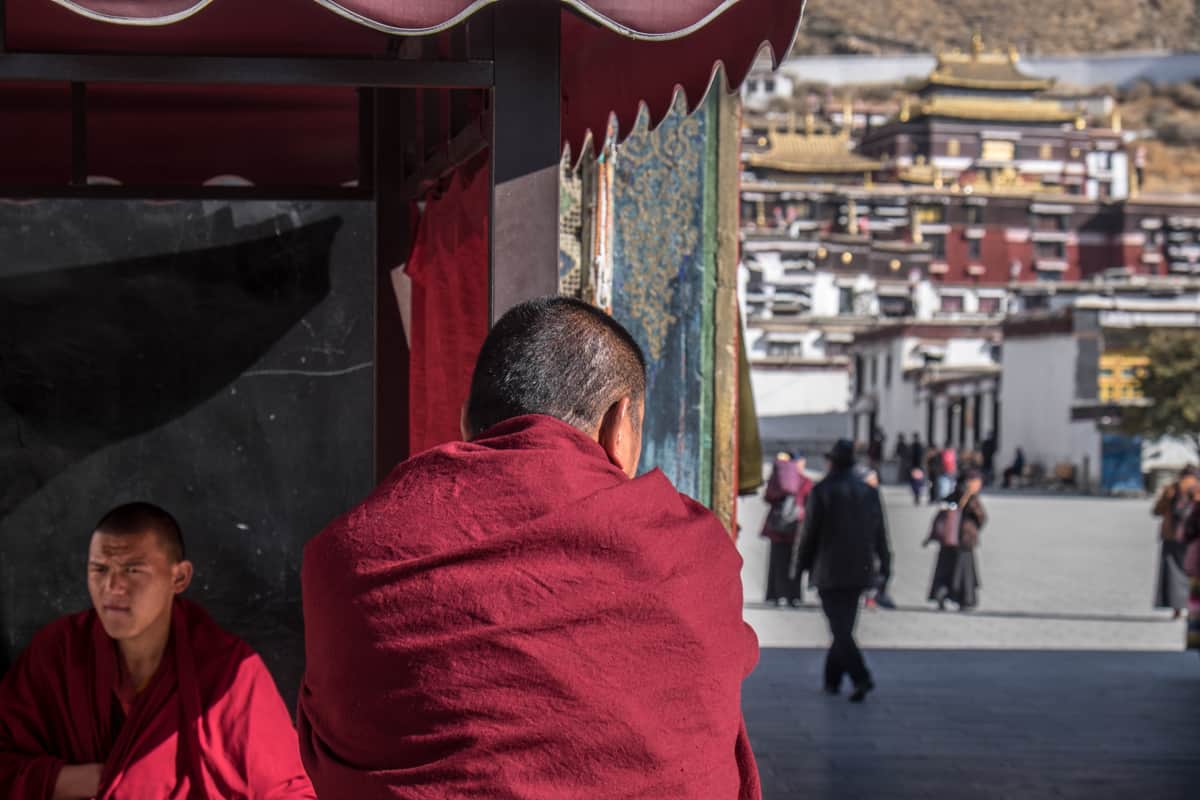
Misunderstood Destinations , Tibet
This is How to Travel Tibet – The Reality of the Roof of the World
Disclaimer: This post contains affiliate links to handpicked partners, including tours, gear and booking sites. If you click through or buy something via one of them, I may receive a small commission. This is at no extra cost to you and allows this site to keep running.
How to travel Tibet and experience its ancient culture. Everything you need to know about how to enter, getting around, and the truth in visiting.
To be able to travel to Tibet is both a privilege and a different kind of experience that requires some degree of more profound observation. What was once closed off to outsiders and one of the most isolated cultures globally is now an Autonomous Region of China. Therefore, it is more tricky to traverse since you can’t travel there independently.
While China heavily manages Tibet tourism, visiting means helping to keep Tibetan culture alive and experiencing those pockets of Tibetan Buddhism so profoundly entrenched in the form of spiritualism you won’t witness anywhere else.
Your visit is about using your freedom to return home to tell the world about it.
You won’t forget your time in Tibet easily, but it is a place where some pre-romanticised ideas shatter, and you leave with more questions and emotions than when you first arrived. It’s a mix of fascinating otherworldly spiritualism in mountainside monasteries and palaces and nunneries and temples. It’s the sadness at seeing a long history eroded that conflicts with such remarkable beauty.
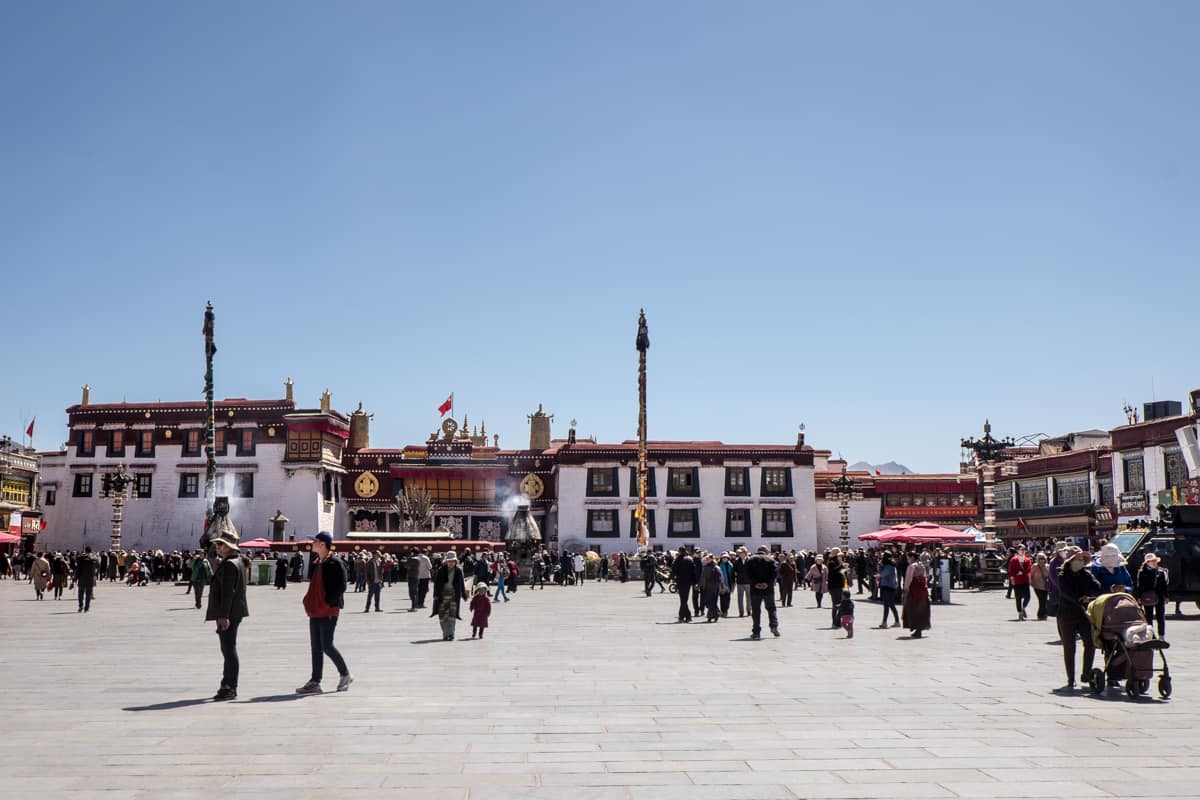
Tibet Today
Why you should travel to tibet, the reality of tibet travel, getting a group visa for tibet, travel tibet from china, travel tibet from nepal, getting around tibet, the best time to visit tibet, how much does it cost to travel to tibet, is tibet safe to travel, responsible travel in tibet, rombuk and everest base camp tibet, kyirong border town to nepal, essentials and extras, avoiding altitude sickness in tibet, travel to tibet guide – pin it.
What remains of old and sacred Tibet – left untouched after China’s occupation in 1950 that turned Tibet into what is now known as the Tibet Autonomous Region – is a testament to its mysterious and spiritual history and the retelling of it.
Today, seeing Tibet is about getting lost in an ancient culture that dates back to nearly 1,500 years, set within lake-filled valleys and rocky plateaus. To set foot inside some of the world’s oldest monasteries and temples, flanked by the endless peaks and ridges of the Himalayas that naturally hug Tibet in protection, with mighty Everest watching over.
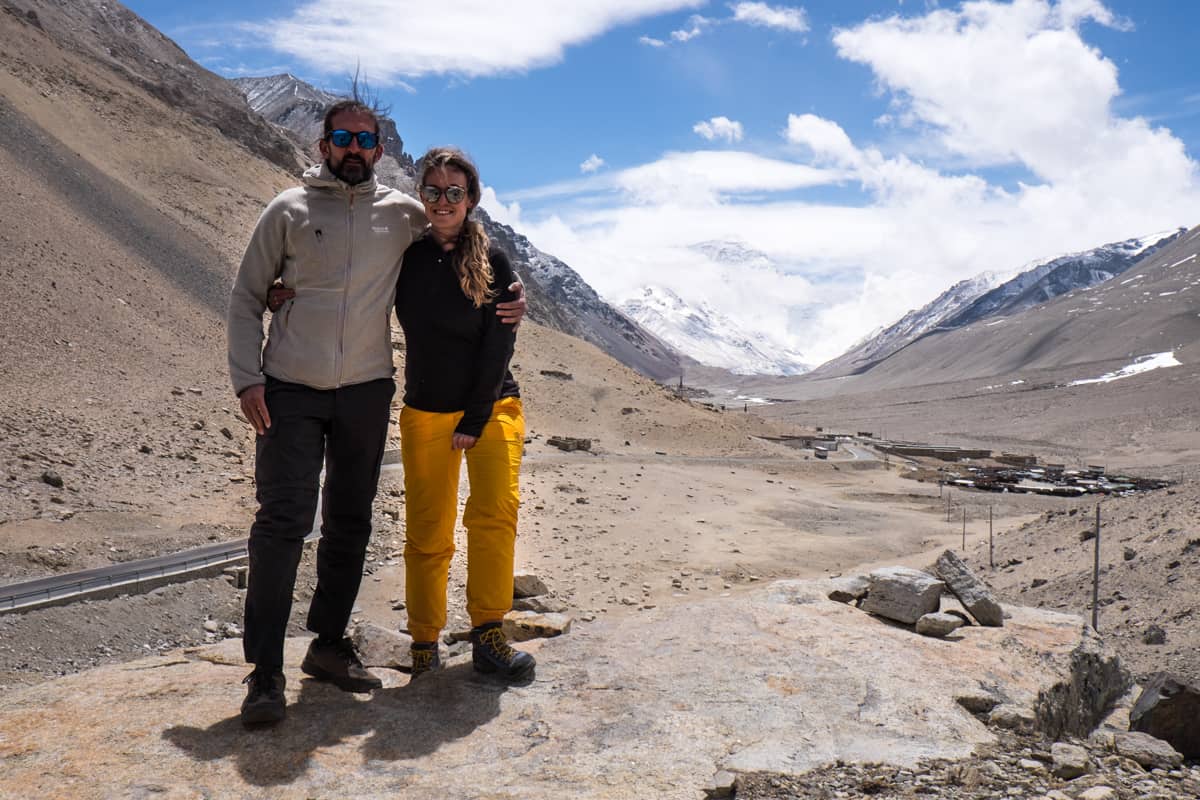
The view of Mount Everest near Everest Base Camp, Tibet
It’s about understanding that while there are plenty of things to see in Tibet, swaths of its original wonder no longer exist. Patches of a far-reaching space we should not take for granted as visitors here when so much has already been lost.
Tibet is best experienced via an overland tour and one covering a lot of ground. On the two-week High Road to Tibet trip with G Adventures , I flew from Kathmandu to Lhasa, spent four days in the Tibetan capital before moving on to Gyantse, Shigatse, Rombuk and Everest Base Camp Tibet for the final highlight. An overnight stay in the border town of Kyirong was the last stop before the long and scenic drive back to Kathmandu.
Choosing exactly how to travel in Tibet and embarking on this particular trip goes hand in hand with travelling responsibly and supporting Tibetans in keeping their culture and traditions alive.
Here’s how to make the most out of your Tibet visit, alongside logistics and how best to experience and support the ancient Tibetan culture and its people.
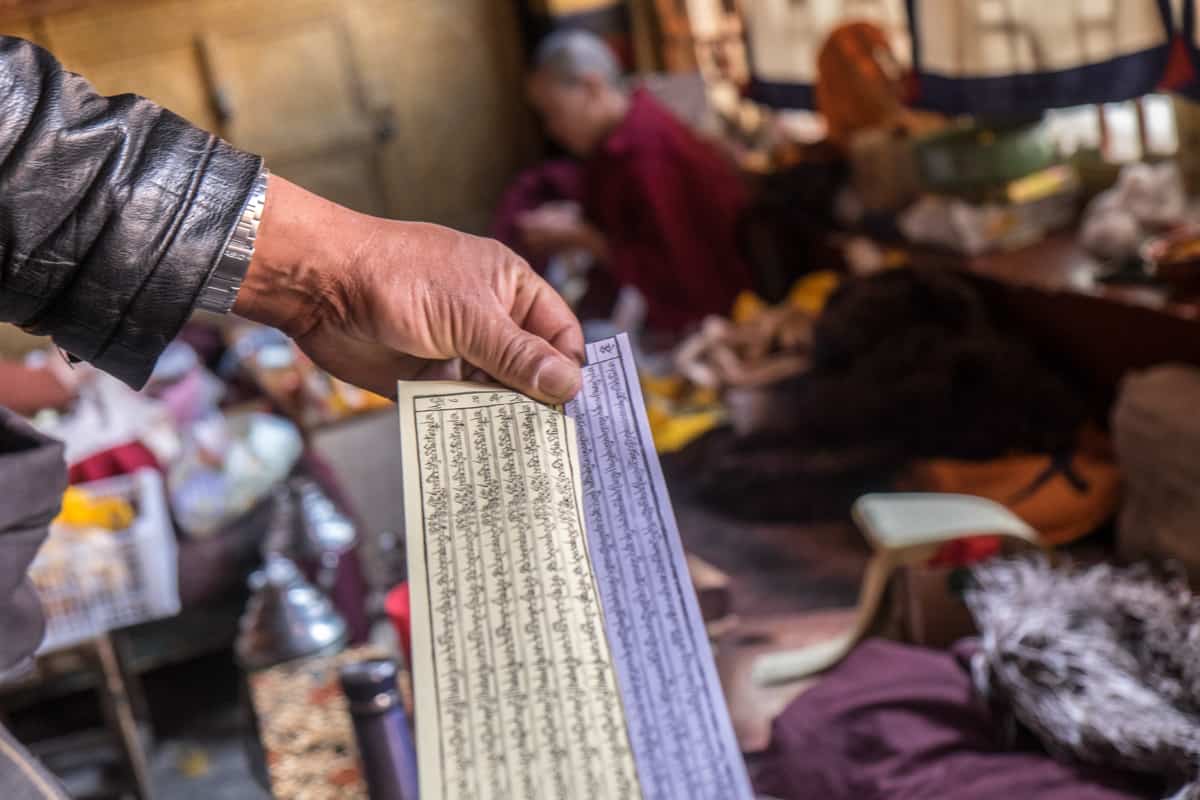
Is it Ethical to Travel Tibet?
The question of whether it is ethical to visit Tibet is a justified one, but without an easy answer and one that you should make from a personal but informed choice.

On the one hand, the Dalai Lama encourages travel there to see the country first-hand and bring those stories home. That’s what I wanted to do. Your presence is a chance for Tibetans to know of the outside world and know that people can witness their beliefs and then return home and tell people about their incredible culture.
On the other hand, your visa money doesn’t go to any form of Tibetan organisation. I struggled with that. Since Tibet is now under Chinese rule, the rights to travel in Tibet and who can enter the country is determined by China. Tibetan religious sites that have been left intact are for tourism dollars, and therefore it’s hard (although possible) to keep all your expenditure in the hands of Tibetan enterprise.
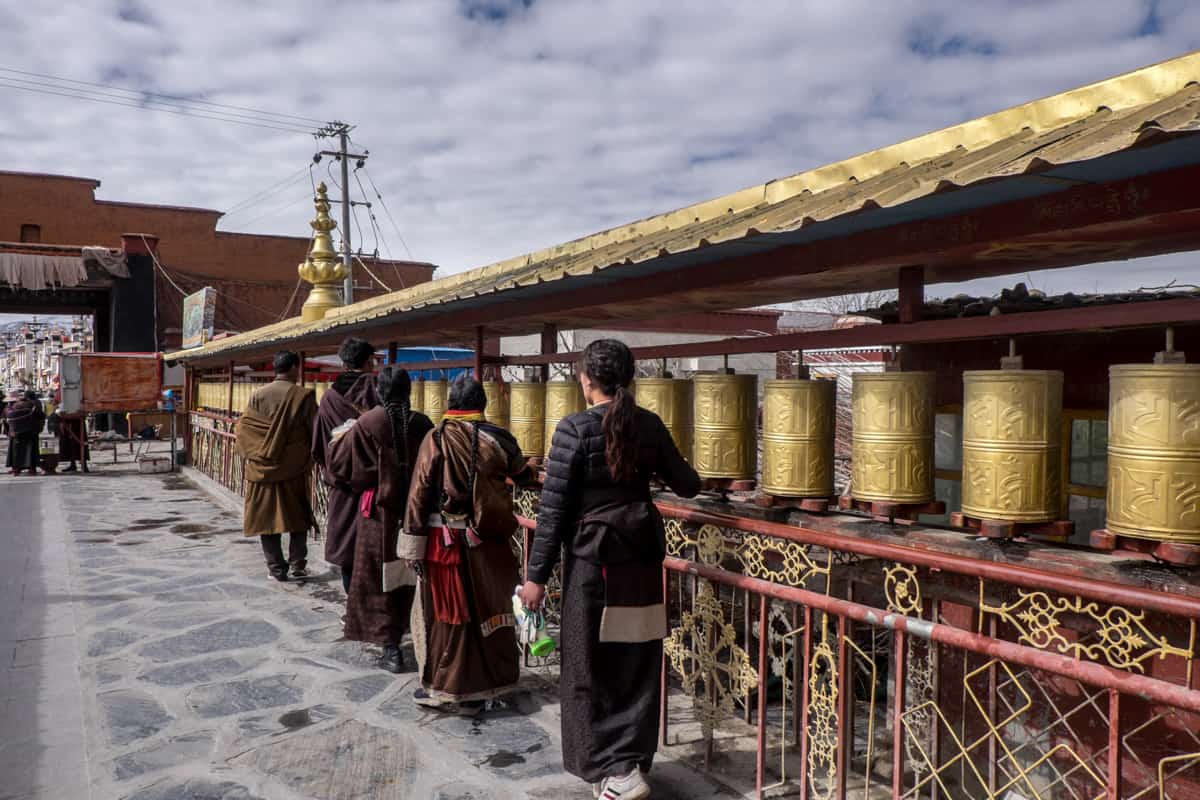
You’ve made your decision to go and experience this destination steeped in intrigue, but what is it really like to go to Tibet?
You will hear from your guides as you make your way through the region that thousands of Tibetan sites were destroyed during the Cultural Revolution after the Tibet Autonomous Region of China was formed 60 years ago. It is patchy information since the history of the country or mention of the Dalai Lama cannot be spoken of in detail or publicly, even if it is evident to you as a visitor. It would be best if you did your background research at home before visiting.
What remains are the Tibet sites considered most important and sacred, which you enjoy throughout your journey across the country.
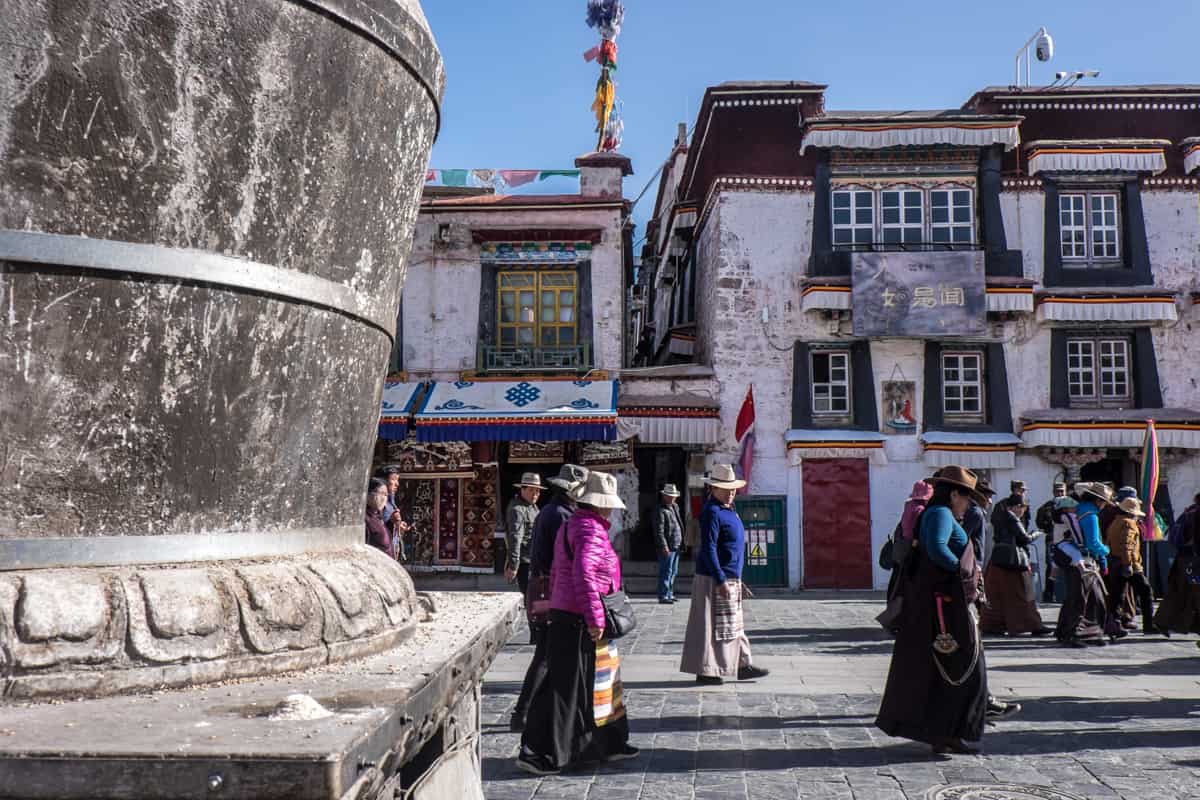
Chinese surveillance and military presence is something you too may notice, including CCTV cameras and plain-clothed guards that often appear close to tourism groups when visiting significant sites. These monitoring systems are not something to be afraid of, and you quickly get used to them as a part of travelling here.
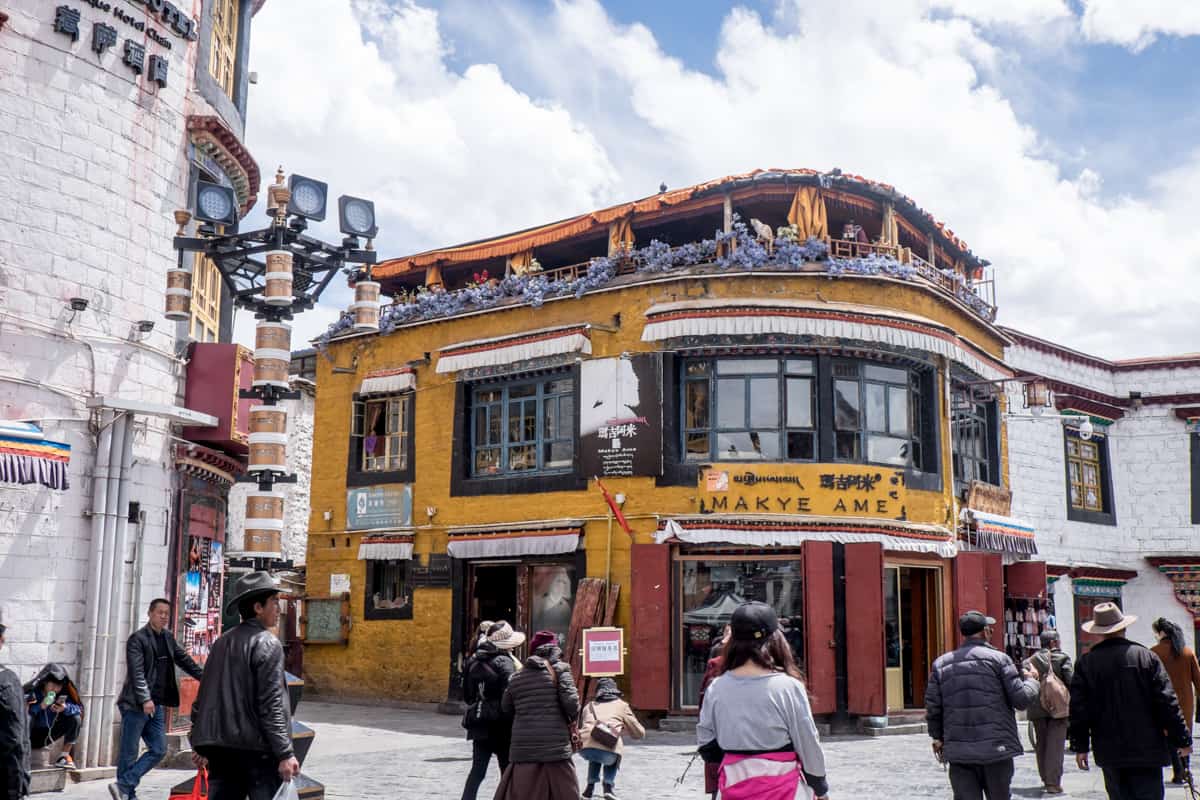
For example, when some excited Tibetan ladies wanted their photo with me, it was a form of interaction that created some level of paranoia. So I kindly shut down the situation more quickly than I would generally. It’s better for everyone and the reality of where you choose to travel and adhering to rules.
The organisation of tourism in Tibet also means that your itinerary is pre-approved and cannot be altered. This means that speed restrictions and police checkpoints along the journey (according to your trip schedule) are a requirement for your group. However, the simple reality is that often your Tibetan guide shows the relevant documents and all passports, which makes the process quicker and easier.
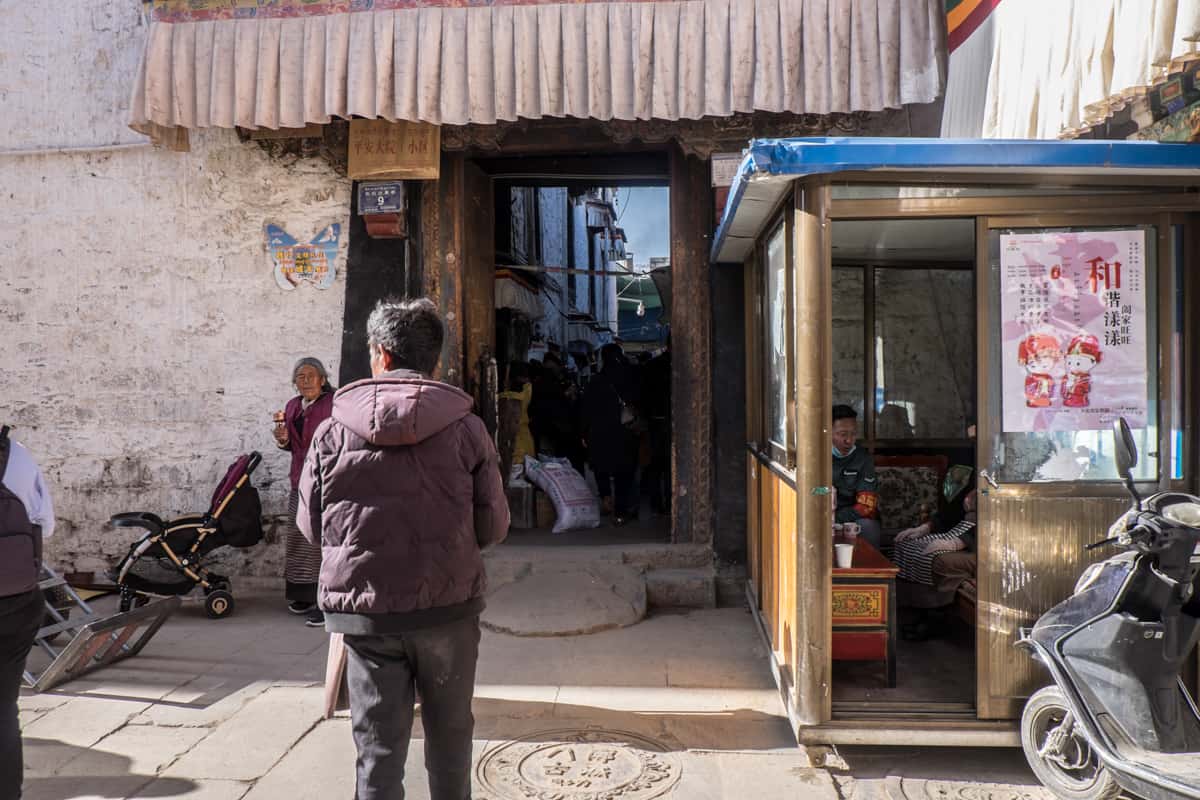
A typical checkpoint in Lhasa, Tibet
It also means adhering to specific rules and regulations at particular sites of enormous significance. The only time you will encounter inner-city police checkpoints is in Lhasa at the Jokhang temple. Given its large-scale importance, the temple has been the leading site of protest, and it’s standard procedure for the square outside of the temple to be guarded and for the army and plain-clothed officers to be present on the Barkhor sacred Kora path.
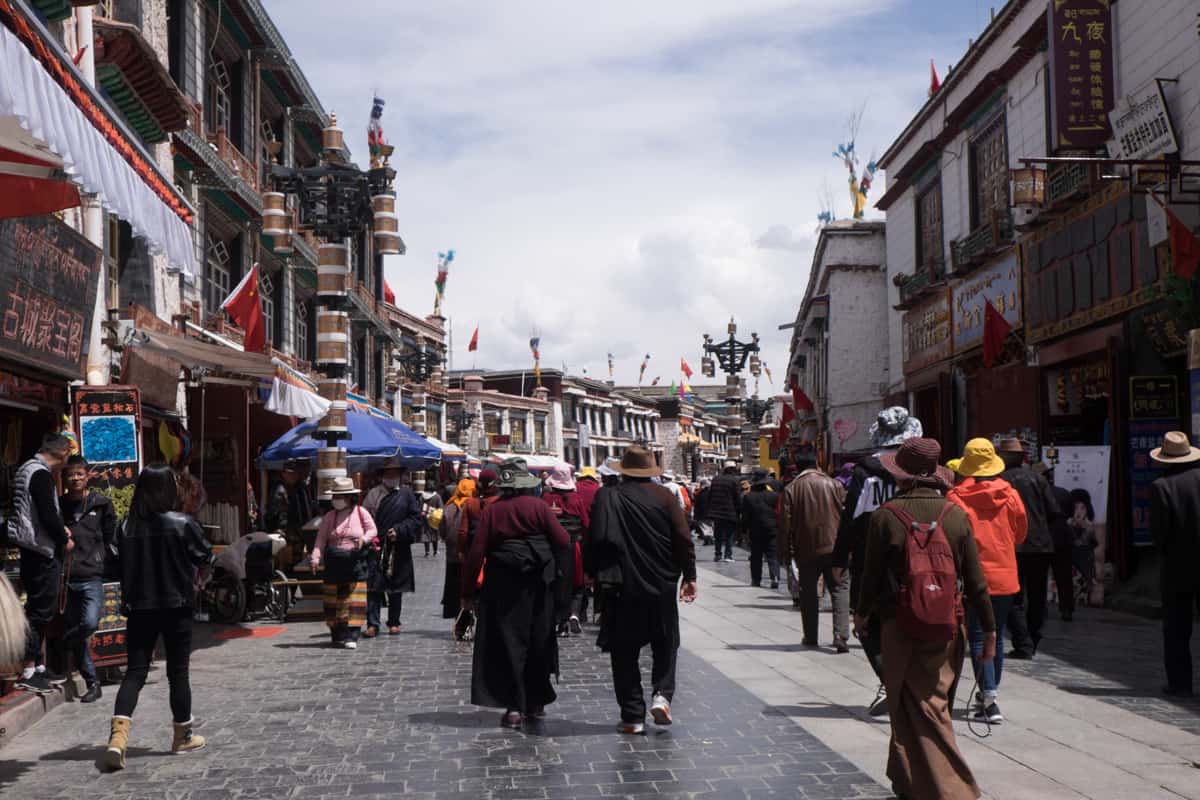
Walking the circular, sacred Kora path in Lhasa
If exploring alone in your free time, you simply show your passport and state where you are staying and your Nationality (the standard questions). We never encountered any issues going through, and we visited more than once to enjoy the incredible atmosphere of the Kora.
You can also only enter Potala Palace in your group and with your local guide, and you need to bring your passport for the restricted 50-minute viewing slot. Why such tight measures? Potala Palace is a pillar of Tibetan culture and remained the Dalai Lama’s primary residence until the 14 th (current) Dalai Lama fled to India in 1959 . The Dalai Lama is a strong point of contention, which you will realise on many levels throughout your trip.
There’s a lot to soak in, where you’ll be spiritually moved and emotionally stirred in equal measures.
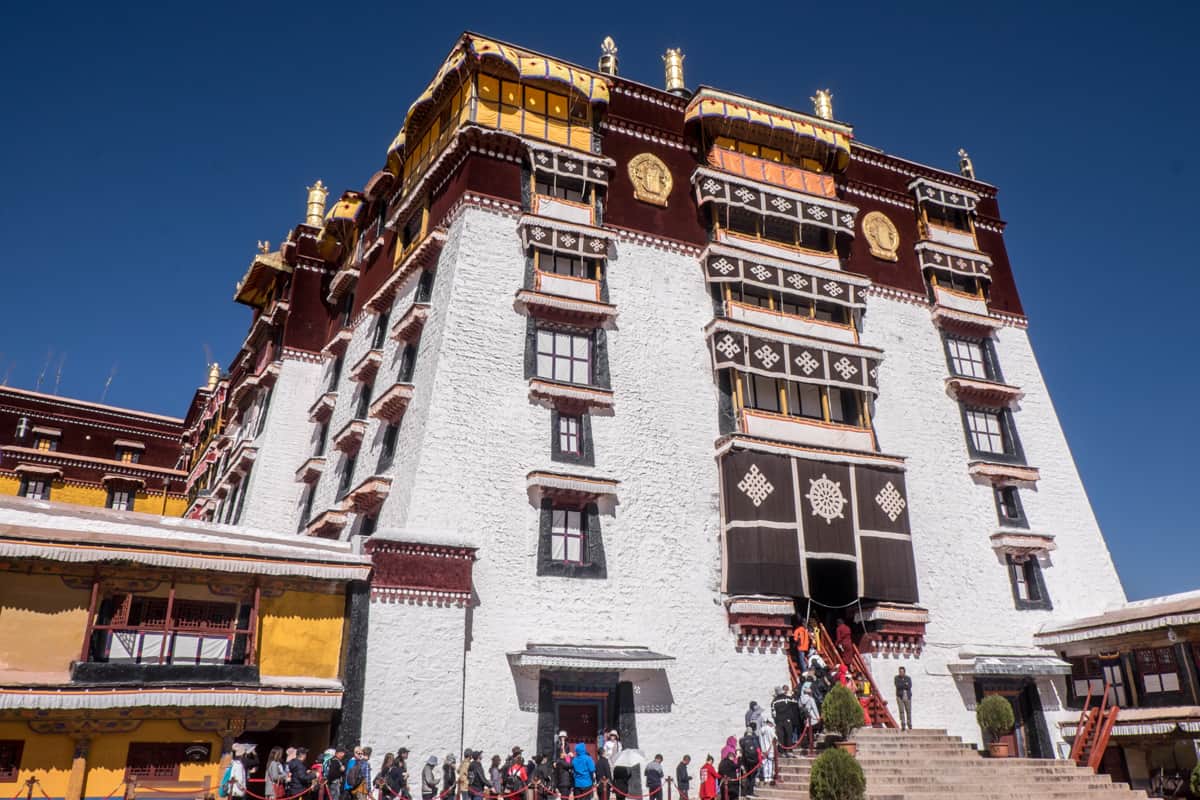
The queue at the entrance to Potata Palace, where visits are restricted to a 50-minute viewing slot
How to Visit Tibet
You cannot travel independently in Tibet and can only do so with a private guide as part of a small group . Therefore a third-party organiser must obtain a group visa for Tibet before entry.
Three days before our scheduled flight to Tibet, our group met in Kathmandu to submit details for the group visa processing.
Each of us had a four-page form to fill out, which is very much like any visa form. It asks for passport details, where else you have travelled on your particular passport in the last few months, points of contact and for a detailed breakdown of your day to day itinerary. Our G Adventures CEO (Chief Experience Officer) helped us with this process, ensuring we all had the exact itinerary and dates listed in a clear format.
Images for Tibet Visa
The images needed for the Tibet visa was tricky since nearly every person in our group had to get their passport photos redone that same evening. We were all briefed via trip notes beforehand regarding not having ears covered, needing a white background, no obvious make-up or any piercings. Even if there was a little hair covering a part of an ear, the photo had to be retaken. So much so that the women in the group were clipping every strand of their hair back.
Again, we did this as a group, ensuring we had a photographer at the passport store in Kathmandu who was briefed about our specific image request.
Application of Visa
Our Nepali CEO took our forms, photos and passports to the relevant agency and embassy for processing. It was an agonising wait to know if we could get into Tibet or not (with an itinerary in Nepal for two days to fill the time). It was a horrible feeling not having our passports.
It was a gut-wrenching wait at the airport with just over one hour until our flight from Kathmandu to Lhasa, waiting for the group visa to turn up via a China embassy worker who delivers the paper via motorcycle. Our cheers were the signal that the adventure was just beginning.
Browse dates and book a Tibet trip here.
How to Get to Tibet – Arrival and Getting Around
There are three ways to travel Tibet – via a flight to and from Lhasa or by overland via train or private vehicle.
Those who join groups in China fly mainly from Beijing or other cities on the Lhasa flight circuit. Taking a train to Tibet is doable only from China via one of the following cities – Beijing, Chengdu, Guangzhou, Shanghai, Chongqing, Lanzhou and Xining- and is subject to your particular itinerary and booking.
I chose to travel to Tibet from Nepal, soaring over the Himalayas via a flight from Kathmandu to Lhasa. This flight route also allowed for the grand adventure of being able to overland in Tibet and travel back to Kathmandu in a loop that took around ten days.
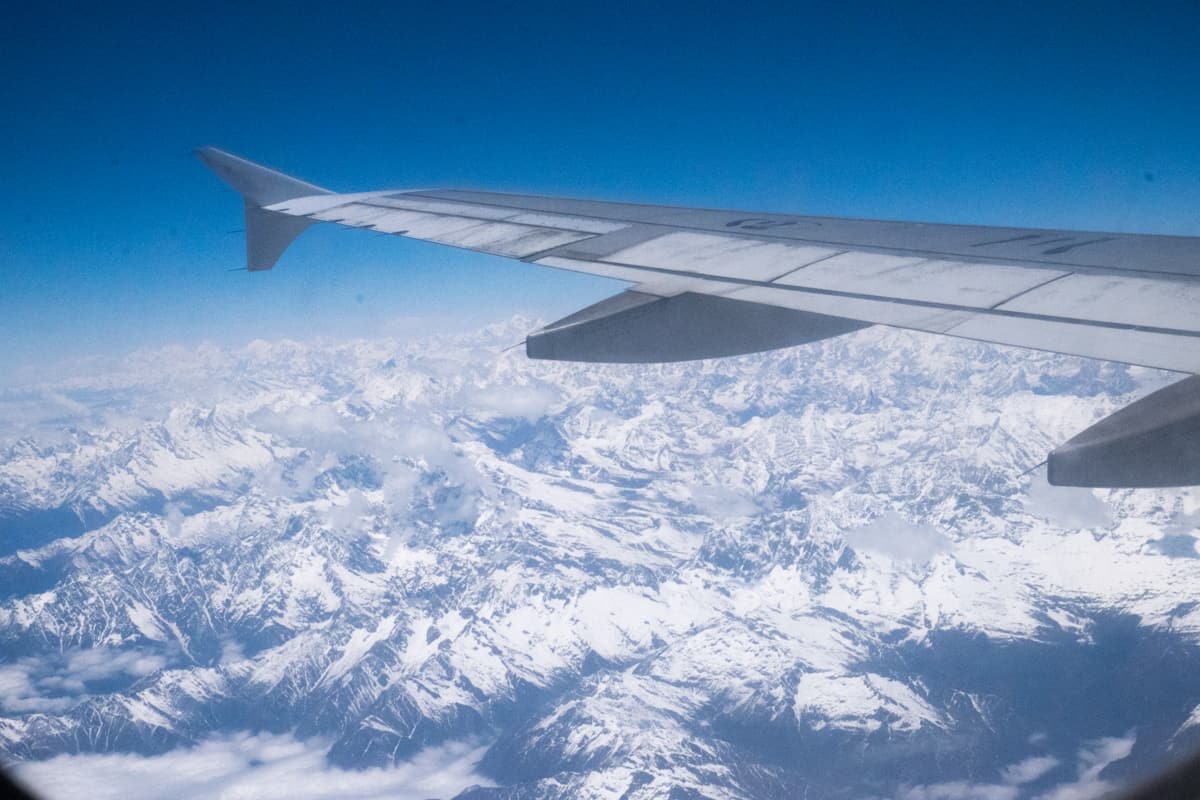
I picked this particular tour because of its Nepal start and endpoint, as I did not want to travel from China for my ethical reasons about where I spend my money. Nepal is also a country close to my heart, where I encourage people to visit and contribute to the local economy.
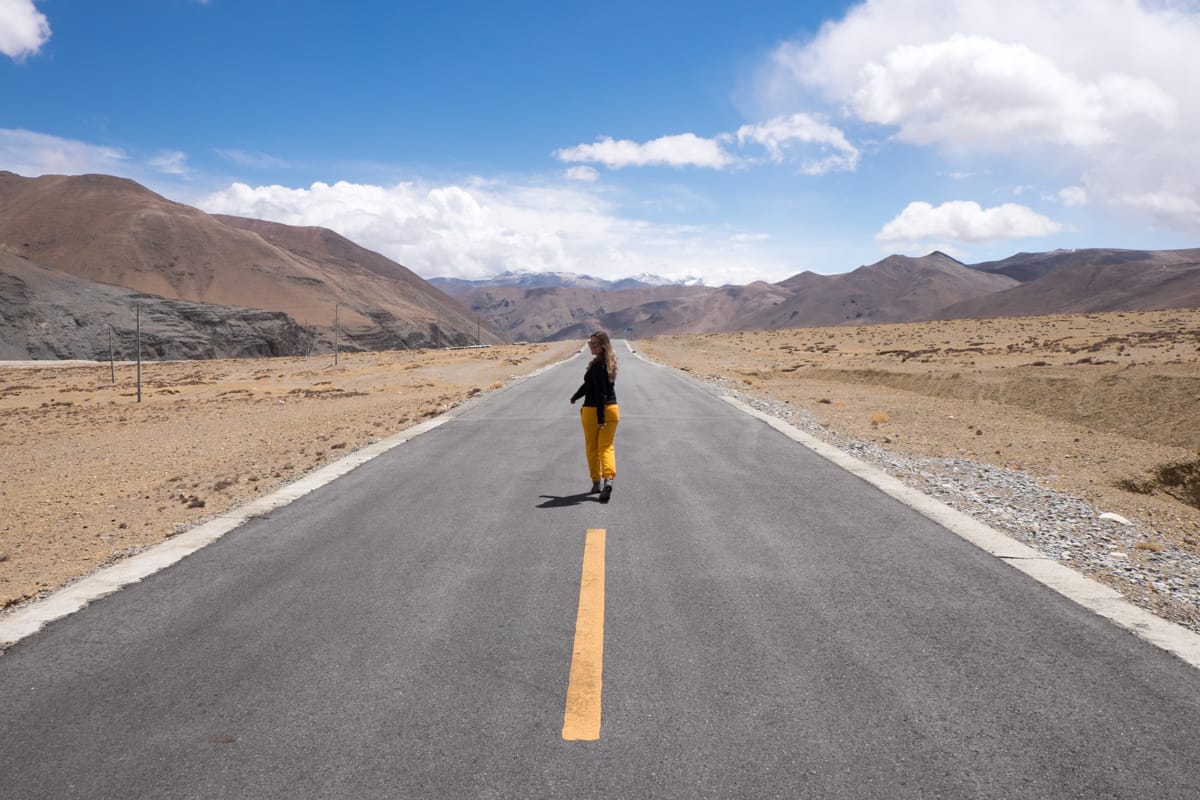
As per the group visa and organisation rules, you can only travel around Tibet with an organised guide and private vehicle and driver.
Solo travel and the use of public transport are not permitted for foreign travellers. We rode the local bus in Lhasa for a few stops, but we were with our guide.
This private guide and vehicle also apply since you must arrive at designated police checkpoints in your route by certain dates and specific times. At times you will be asked to get out and present your passport one by one in your group before continuing with the next leg of the journey.
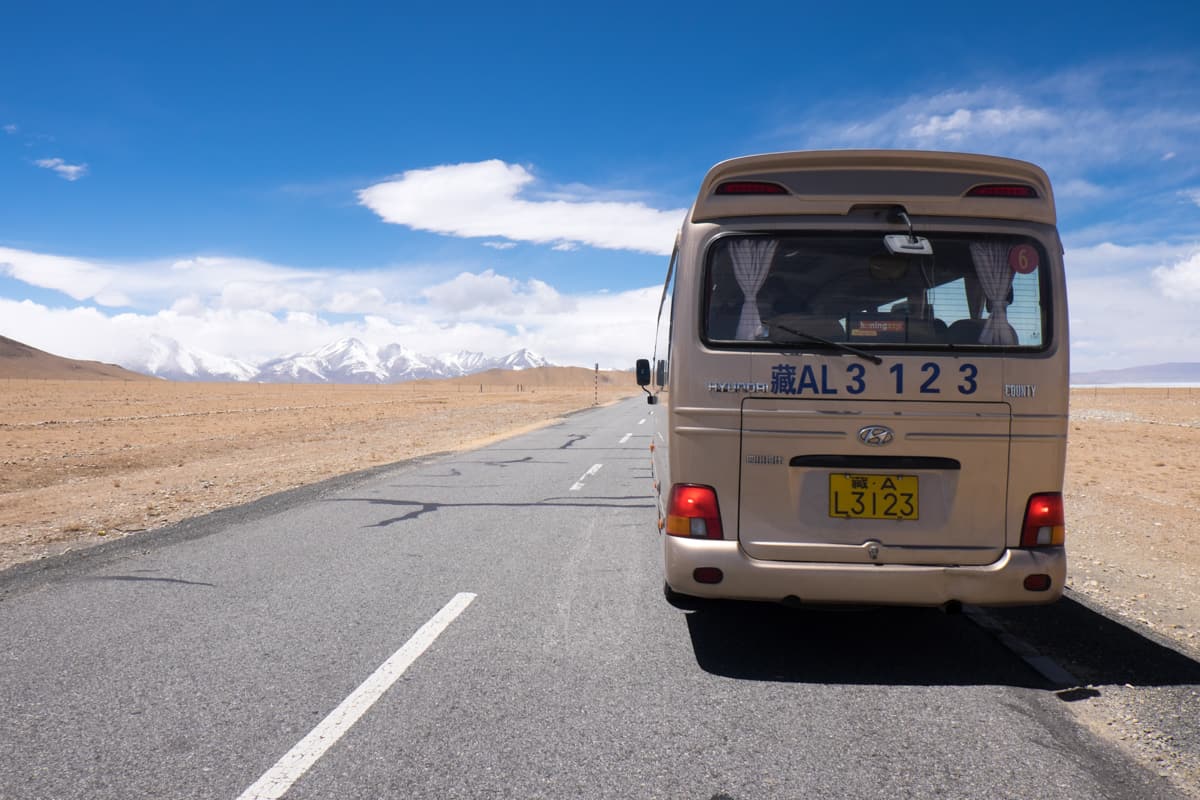
The season typically starts in mid-April and runs until October, covering the spring, summer and autumn months in Tibet. The height of summer can be stifling, which is why it’s best to try and get on one of the first tours in April or the last remaining in October .
Tibet isn’t closed for tourism because of the weather, more so for the New Year’s Losar Festival in late February or early March and is closed during political dates such as the anniversary of Chinese occupation at the end of March.
One thing that can’t be changed is Tibet’s incredible scenery. The dominant background of the Himalayan strip of peaks is one of the best things about this trip.
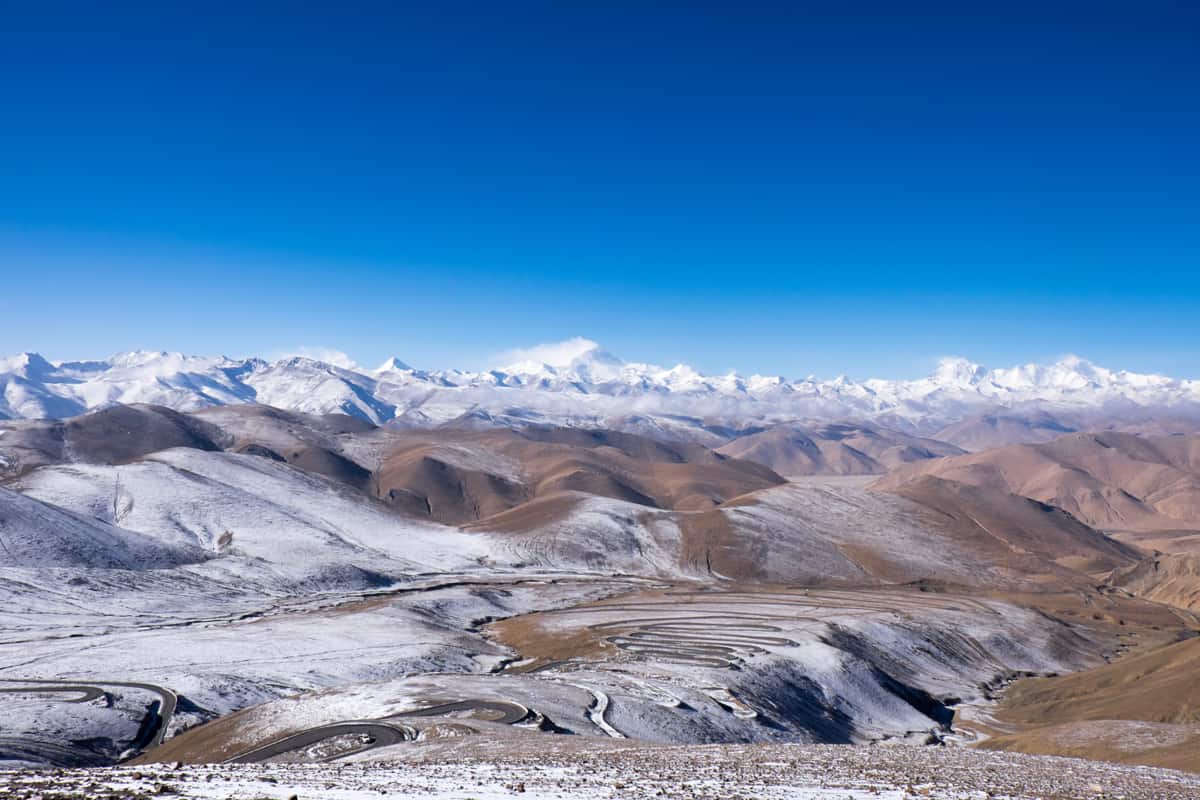
With all these elements in mind, regarding group travel and a group visa, a private guide and vehicle, alongside organised activity, visiting Tibet isn’t a budget experience.
However, with prices ranging from €2,200 – €2,800 (dependent on what time of the year you go), Tibet is a once in a lifetime opportunity.
The cost also encompasses all elements of facilitation from visa organisation, the flight and point-to-point travel.
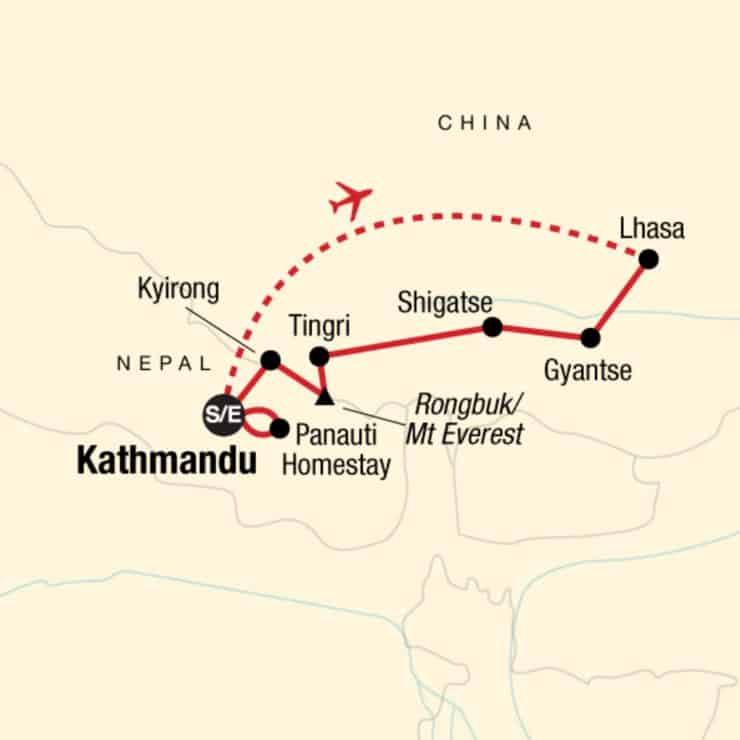
The extra costs aside from the tour cost itself were:
- Cost of the Nepal visa ($30 for 15 days, $40 for multiple entries if staying for more days before or after your trip)
- American and Brazilian: 195 USD per person
- Canadian and Romanian: 150 USD per person
- Israeli: 104 USD per person
- All other nationalities: 114 USD per person
- Food and drink costs (Approximately €400 for two weeks)
- Money for extras such as souvenirs and some entry prices for extra excursions or activities
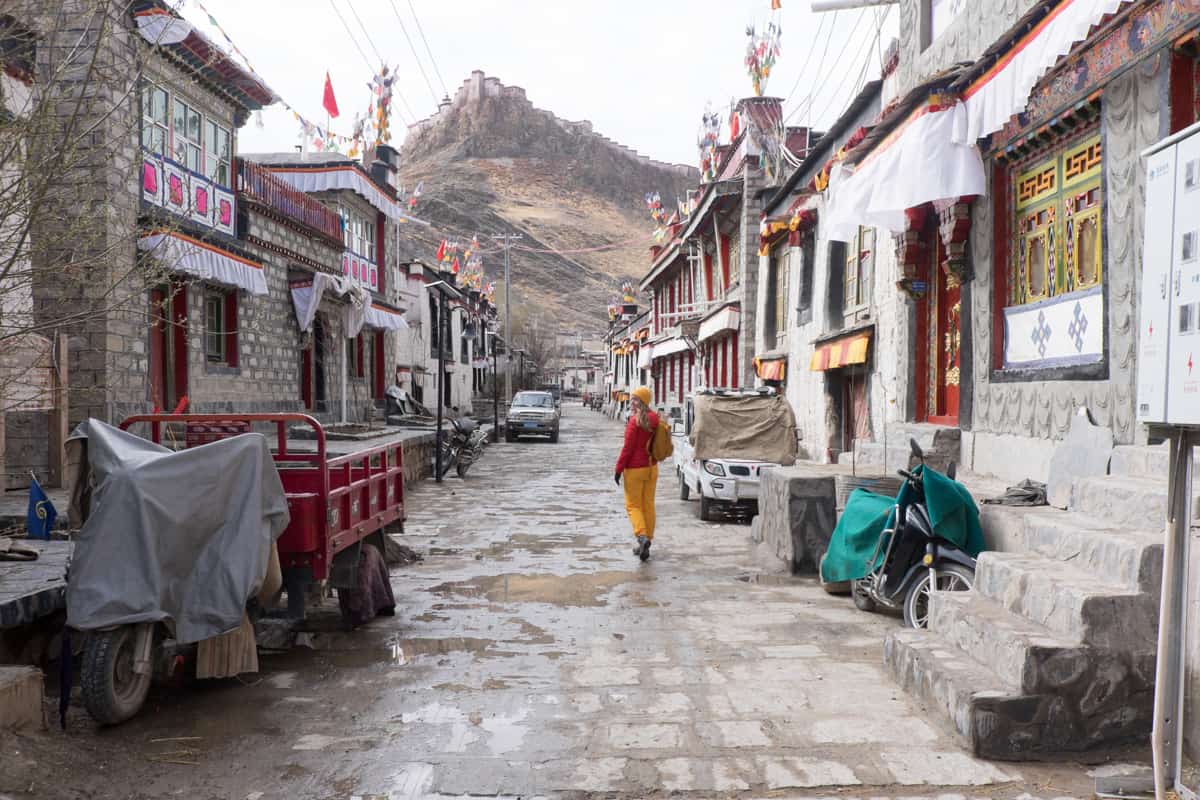
A traditional Tibetan village street in Gyantse
Safety in Tibet is a common question and a precursor to the decision to travel here. While you may hear about acts of political demonstration in the media, this is not something you are ever likely to see since the country is closed during critical political dates and anniversaries.
However, it pays to be aware of where you are and what could get you and Tibetans into trouble. This means:
Not taking or carrying any form of Tibet guidebook, related literature or any political materials into the country . The scanners at Lhasa airport scan laboriously for books.
Not carrying or having in your possession any images of the Dalai Lama while in Tibet. Possession of Dalai Lama pictures is illegal here, with severe consequences for Tibetans.
Respecting that your Tibetan guides cannot engage in any kind of political discussion, whether about the Chinese occupation of Tibet or the Dalai Lama’s current situation. They will tell you who people are in the pictures, cultural references and historical references about Tibetan Buddhism, but do not further push them.
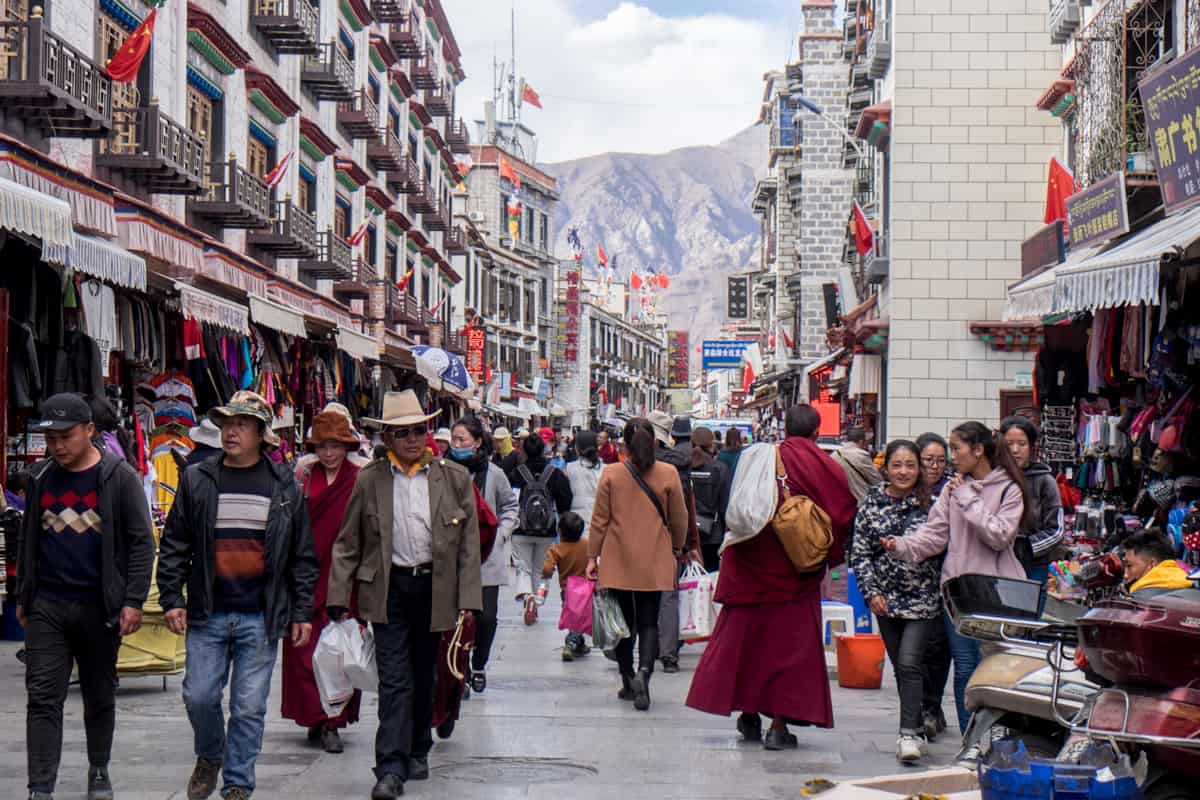
The bustling, busy streets of Lhasa
D o not engage in any kind of political discussion with any Tibetans you meet. All tourism movement is monitored, even if you think at any given moment that it is not, and such debate has far worse consequences for Tibetans.
Do not take any photos of police, army or other military personnel or set-up. If you see anything while taking pictures of sites, buildings, and street views, lower your camera, wait, or move on.
Keep to your itinerary and times. The guide has to ensure the group (and vehicle) reports at designated police checkpoints on the set days of your city departure and new city arrival and by a specified time.
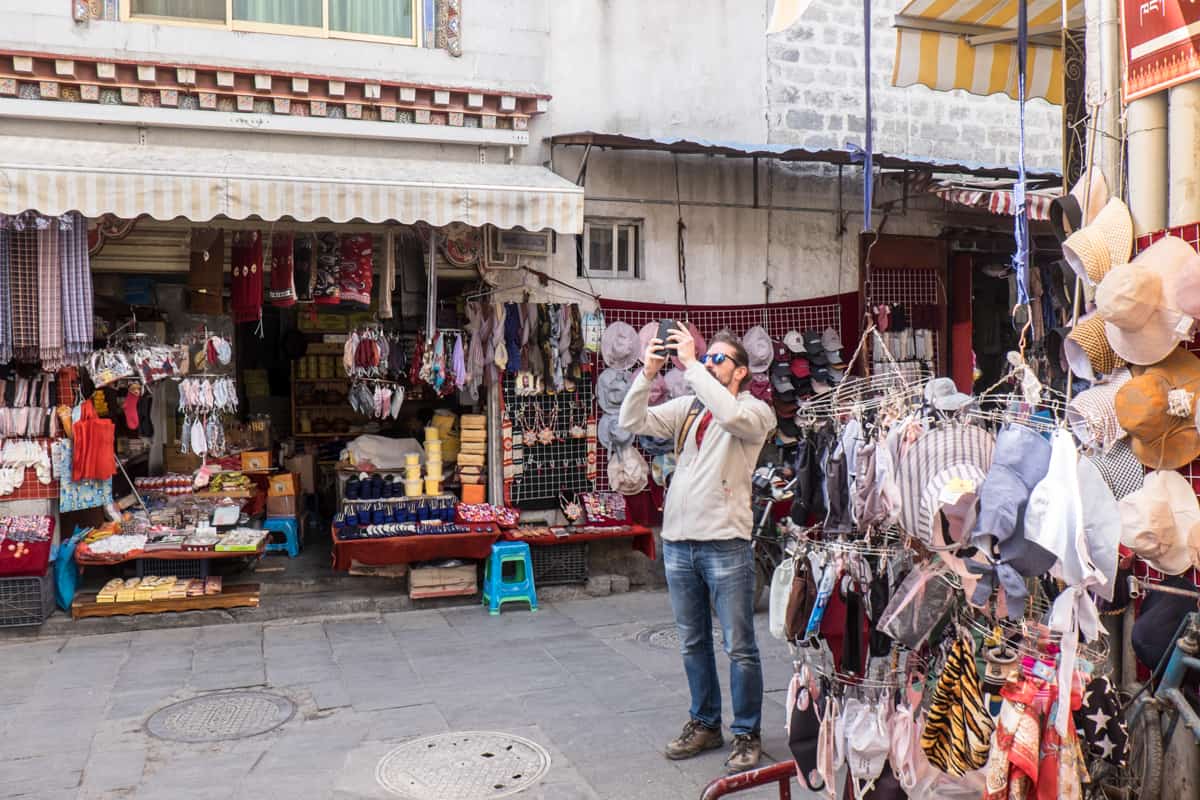
One of the main things I liked about this particular Tibet tour is that (where possible) we stayed in Tibetan owned accommodations, ate at Tibetan owned restaurants and were informed of where to shop at Tibetan owned stores and souvenir stalls.
It’s hard to distinguish what is in between the labyrinth of superficial Chinese town structures, so having someone point you in the right direction was a welcome gesture.
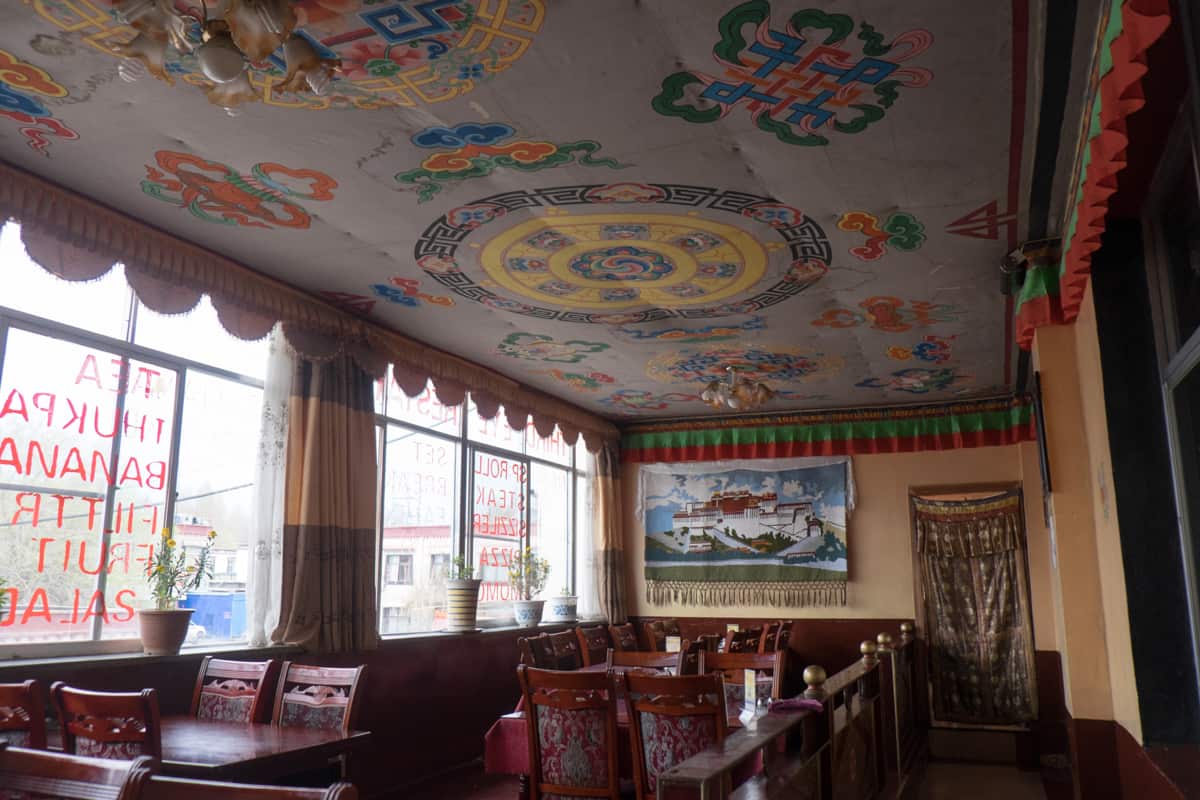
One of the few Tibetan owned restaurants.
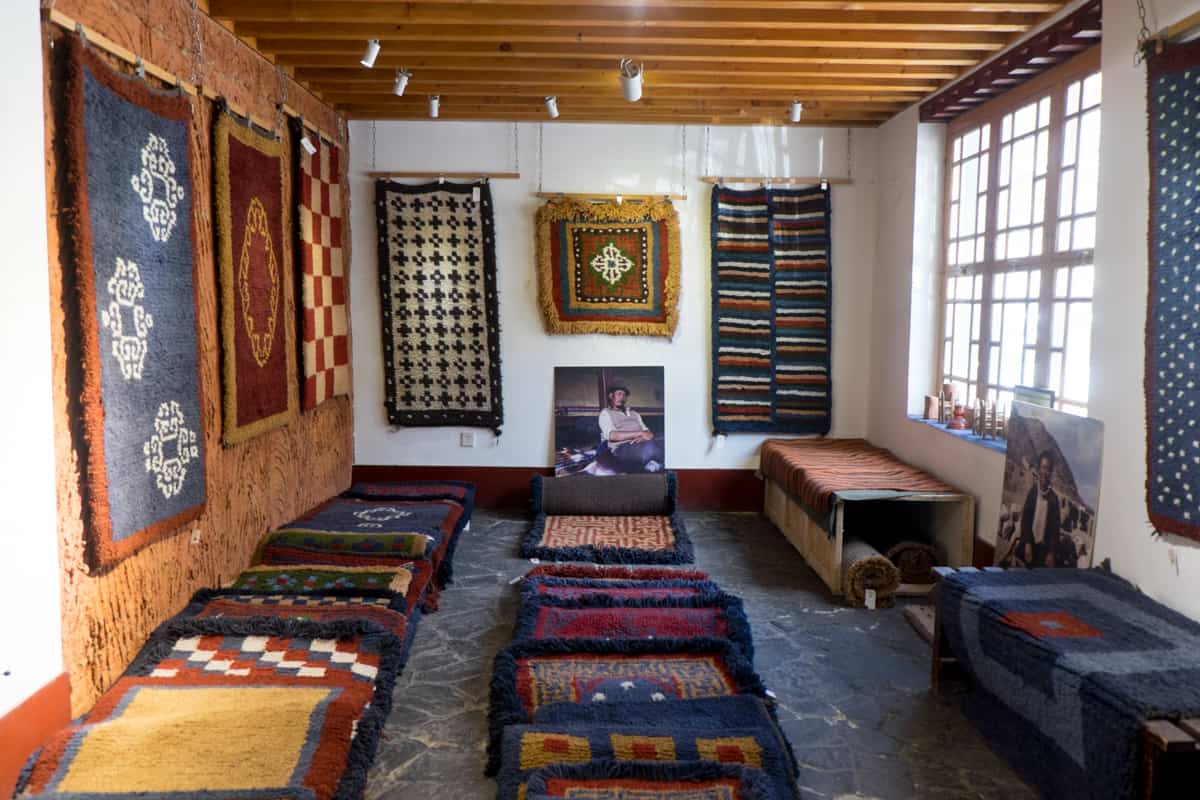
A Tibetan owned shop in Lhasa
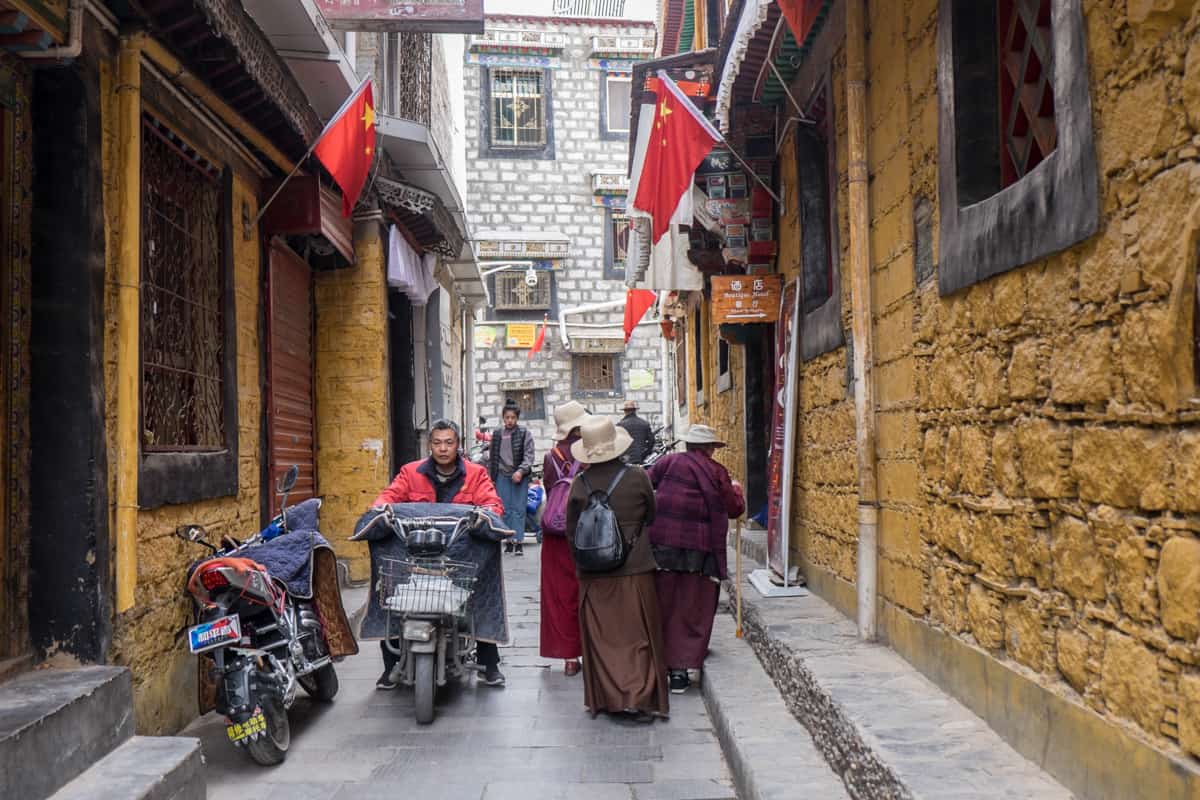
Tibet street scenes, where buildings display Chinese flags
In a destination where Chinese control affects all aspects and layers of daily life, where your tourism money goes, and what and whom it supports, is especially important.
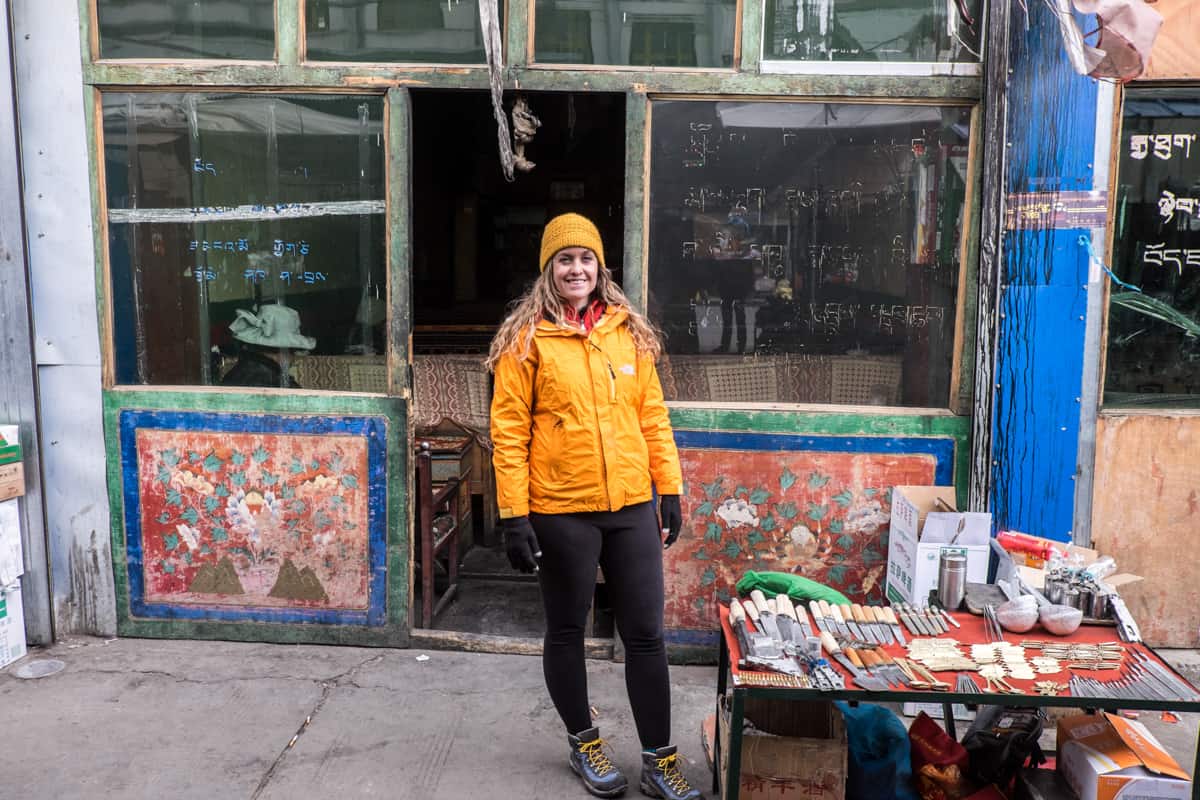
Outside a Tibetan teahouse in Gyantse
The nature of an overland trip in Tibet means many roadside stops for viewpoints and toilet stops. Therefore, forms of tourism enterprise have sprung up in key spots, and while buying food and souvenirs is fine, don’t engage in the practice of photography with the Tibetan Mastiff dogs. Chained and poorly treated, this tourism gimmick is far removed from any level of positive animal welfare and participating in it encourages its continuation.
Where to Visit in Tibet?
Due to strict control by the Chinese government, your trip is organised and scheduled, especially since the driver, guide and the group need to be at police checkpoints along the journey by a specific time. However, with approximately ten days on the ground, you get to cover a lot of Tibet and see the country’s major highlights and differences across cities and landscapes. You also have plenty of free time for extra exploration in each city.
Elevation 3658m
A focal point and centrepiece for Tibetan Buddhists and pilgrims who come here from through Tibet and further afield, Lhasa is more than just the new capital of the Tibetan Autonomous Region.
Johkang Temple (the oldest part was built in the 600s and enlarged over the centuries) and the circular Barkhor Street surrounding it is the most sacred area and the beating heart of Tibetan Buddhism of Tibet. Barkhor is one of the primary pilgrim circuits, where Tibetans come to walk in prayer clockwise around the Kora (sacred) path. It is believed that every Tibetan should visit and pray and at Johkang at least once in their lifetime.
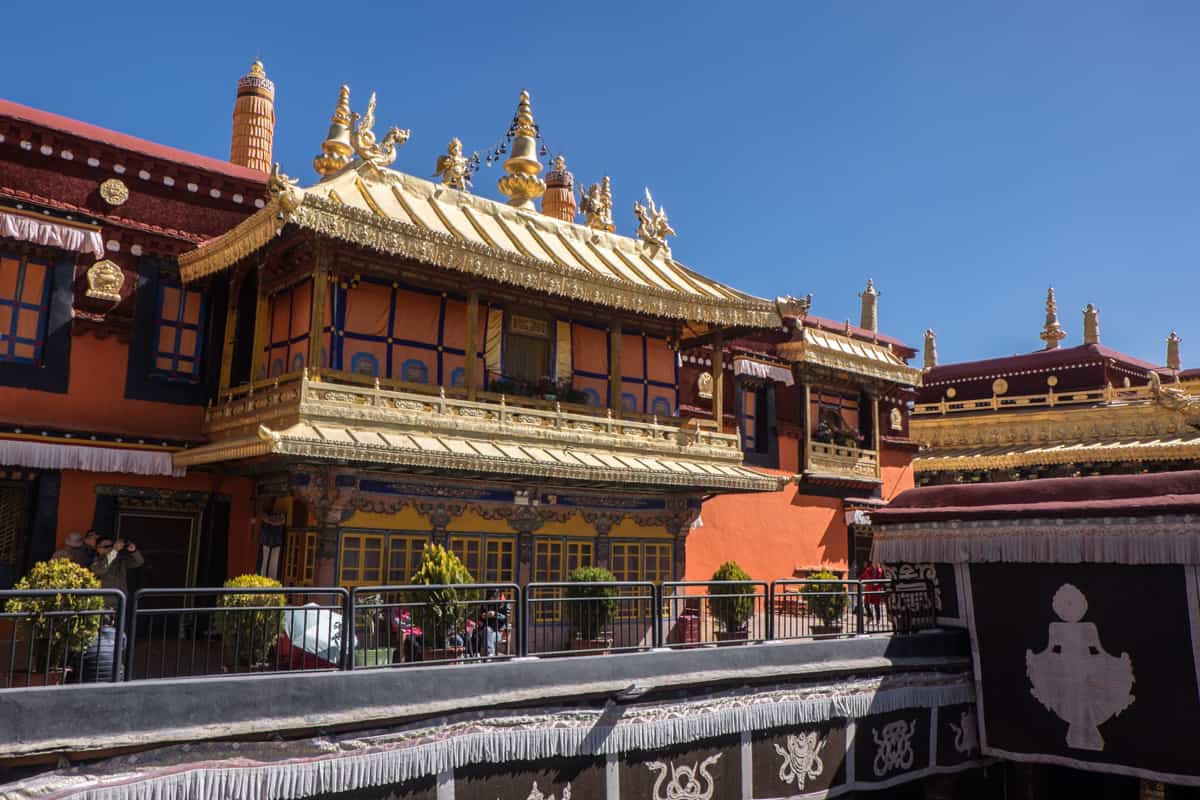
Inside the Jokhang Temple in Lhasa
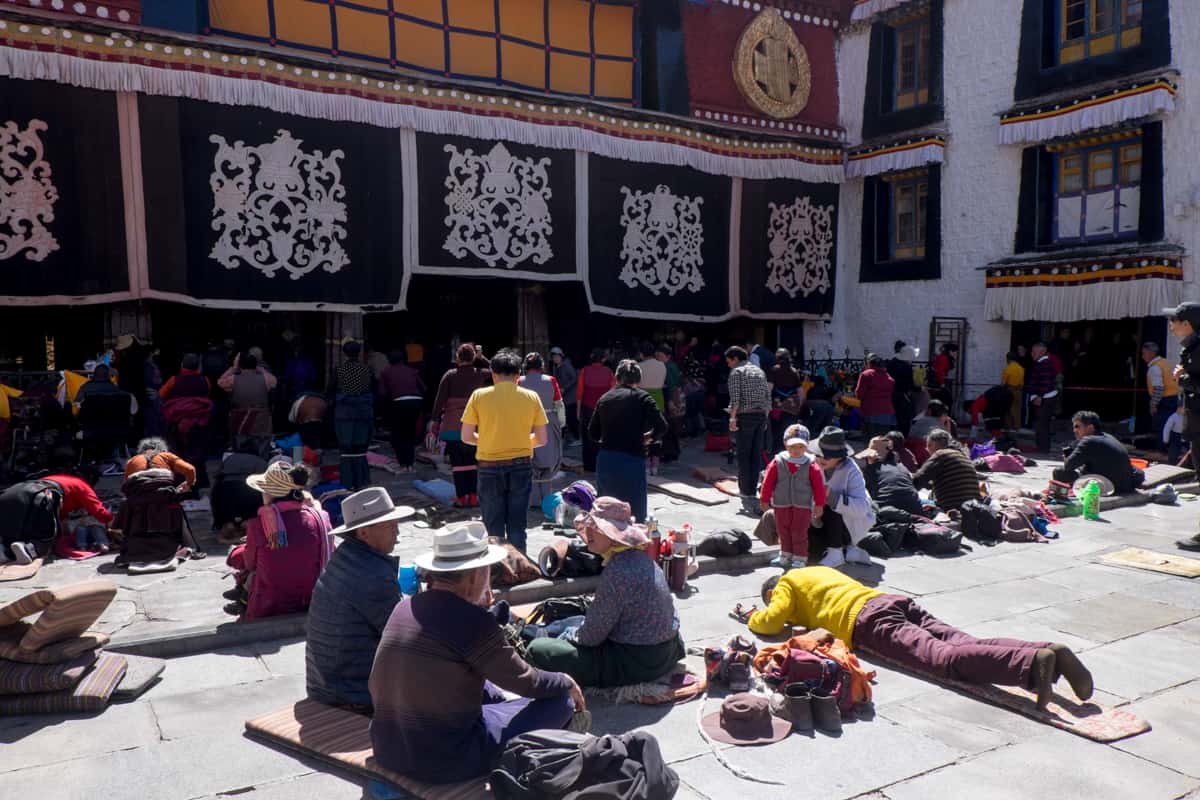
Praying Tibetans on the floor outside the main entrance of the Jokhang Temple
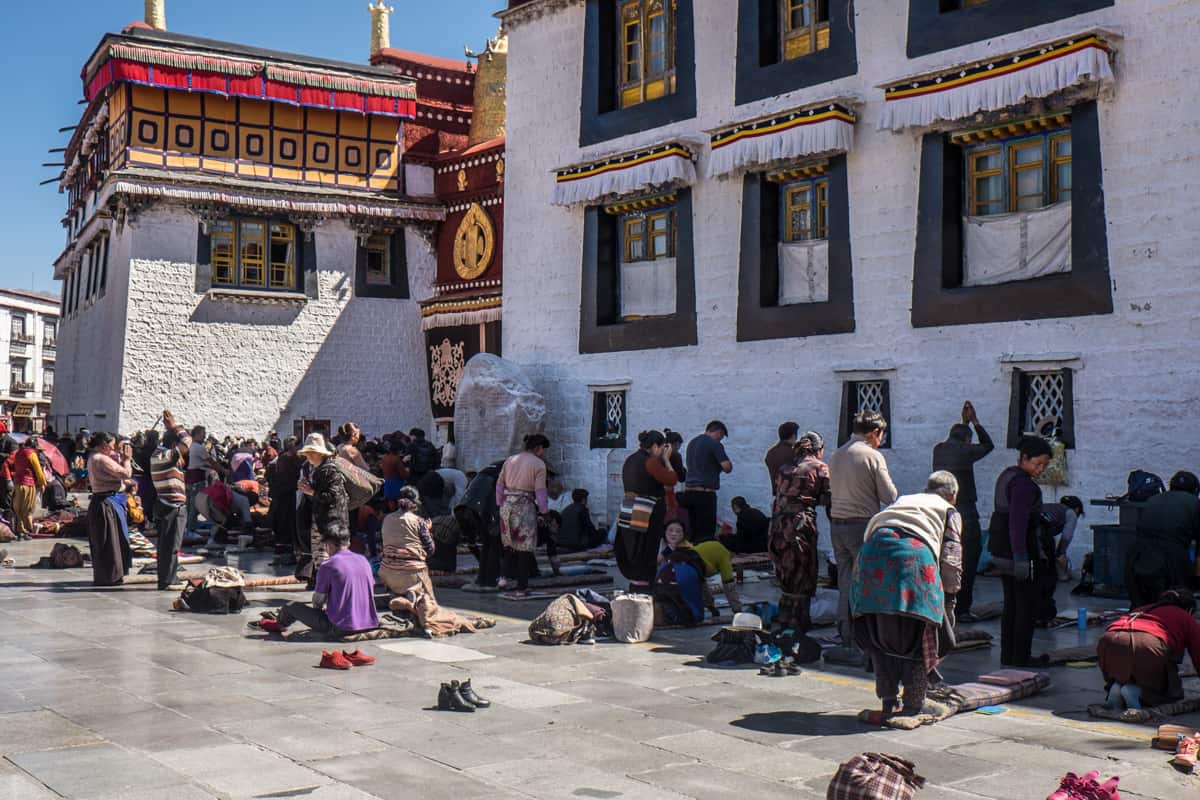
The Sera Monastery is one of the last remaining three core monasteries in the country (together with Drepung Monastery and Ganden Monastery) and one of the two great monasteries of the Gelugpa order. It is better known as the place to see the monks debating – a mesmerising hum of fast-paced chatter and hand-clapping echoes that every visitor should experience. While the number of monks has been reduced significantly (by the hundreds), you can still encounter a grand sense of spiritualism here.
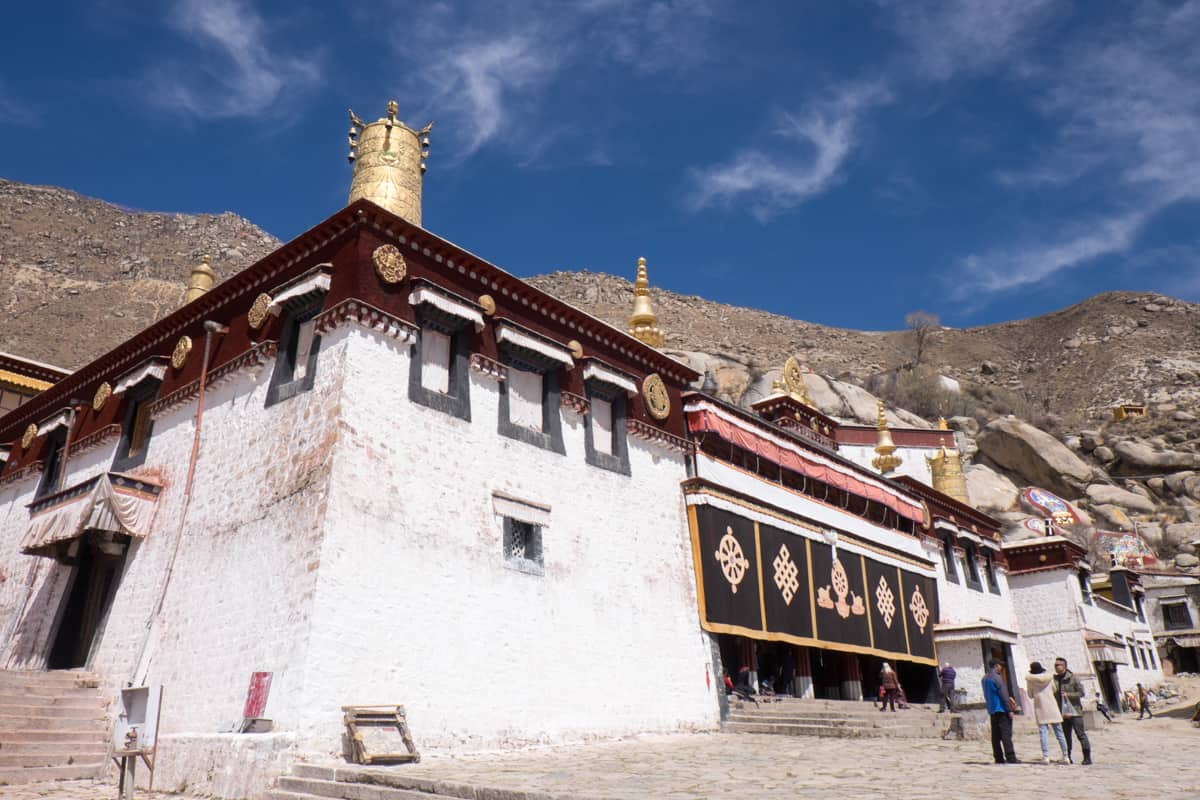
Sera Monastery in Lhasa
Potala Palace is Tibet’s icon – the looming, 1000 roomed structure that sits on the hillside presiding over the capital is now a UNESCO World Heritage Site and museum. It’s a symbol of power, the old administrative centre and the seat of government of spiritual Tibet, built during the reign of the 5 th Dalai Lama in 1645.
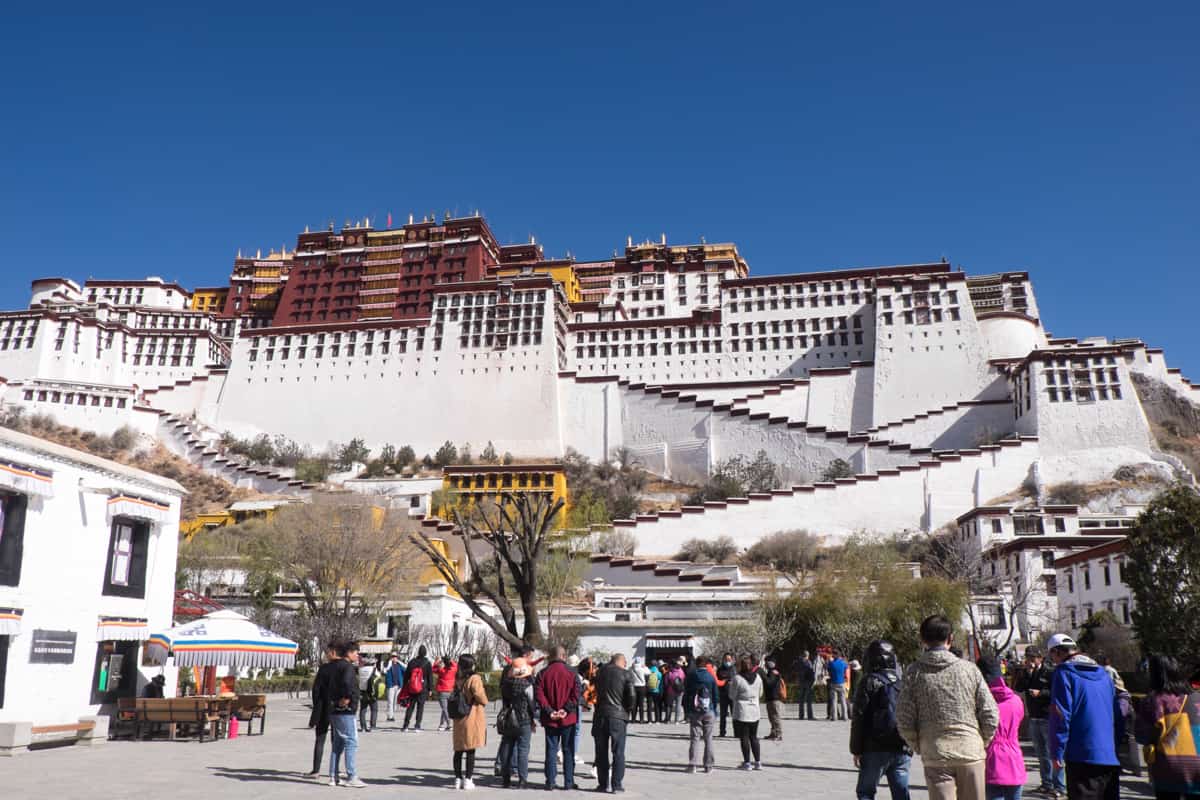
The 1000-roomed Potala Palace in Lhasa, Tibet
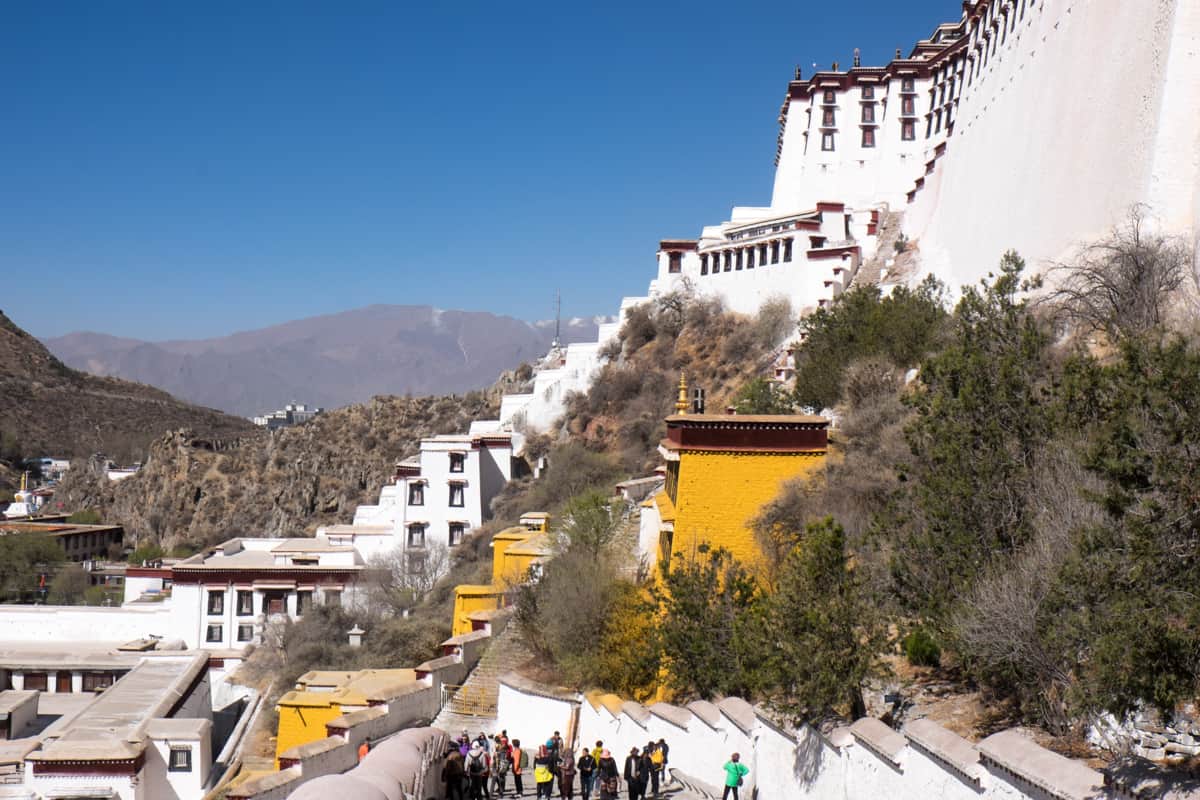
Norbulingka (Summer Palace of the Dalai Lama) was founded by the 7 th Dalai Lama in 1755 and is where the 14 th Dalai Lama made his escape in 1959. It’s known for having the most extensive human-made garden in Tibet, and so its grounds are great for visiting also.
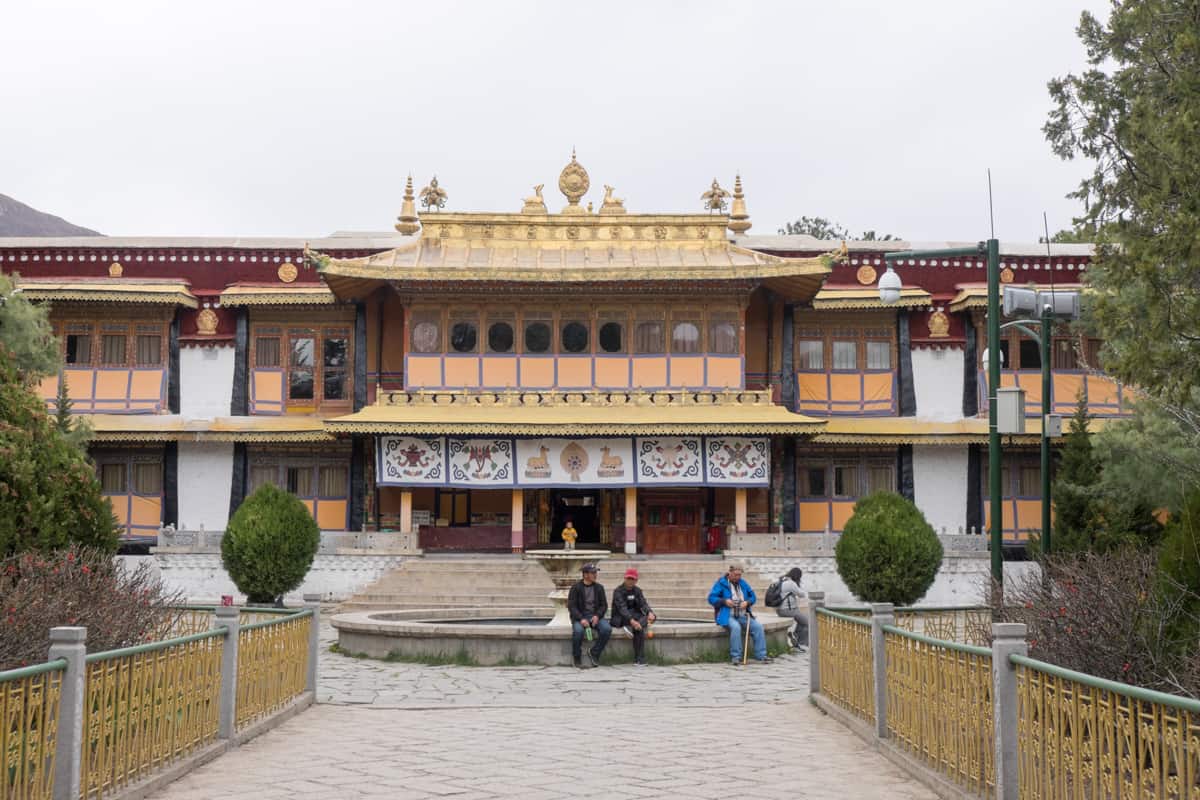
Norbulingka Summer Palace in Lhasa
We were also encouraged to visit Ani Tsamlchung Nunnery to support the nuns. Although the monks get paid a form of salary now, the Chinese government does not support the nuns. Therefore, the $6 ticket cost helps to maintain the nunnery, as does the funds made from supporting their handicraft store and teahouse, the latter of which is a truly local experience.
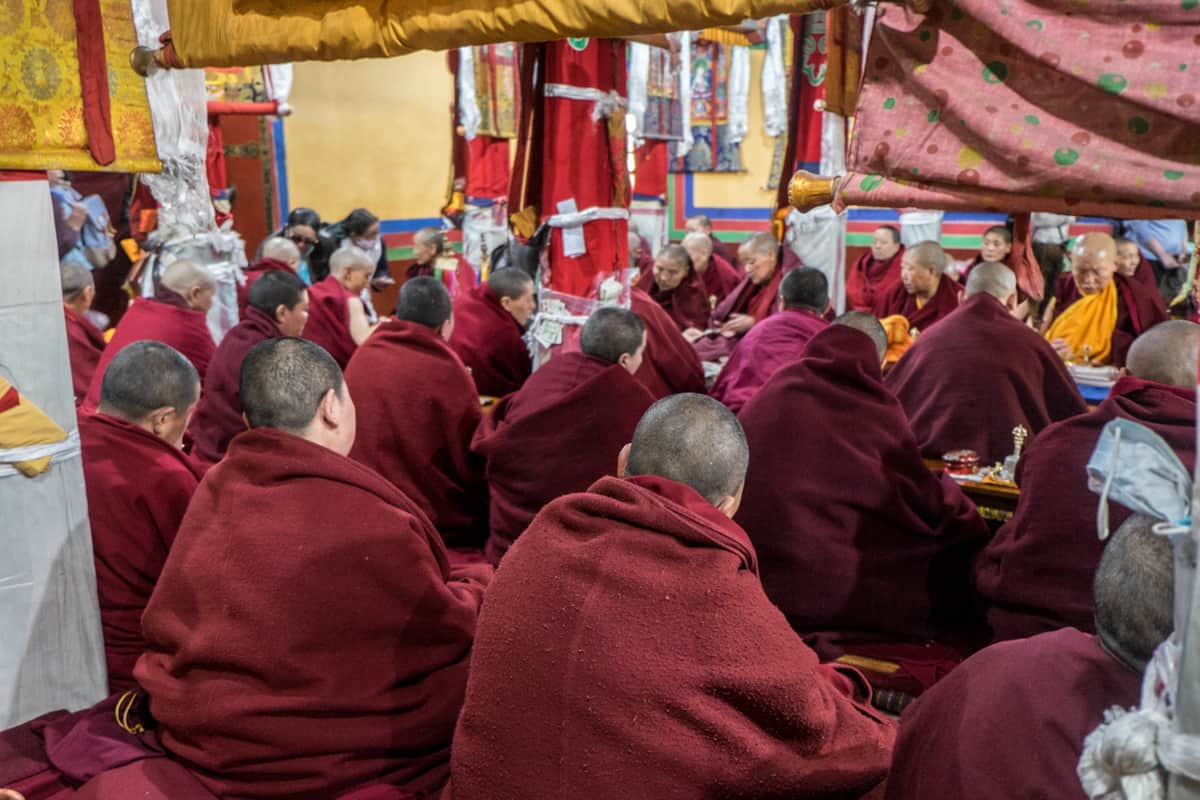
Tibetan Nuns in morning chant at Ani Tsankhung Nunnery in Lhasa
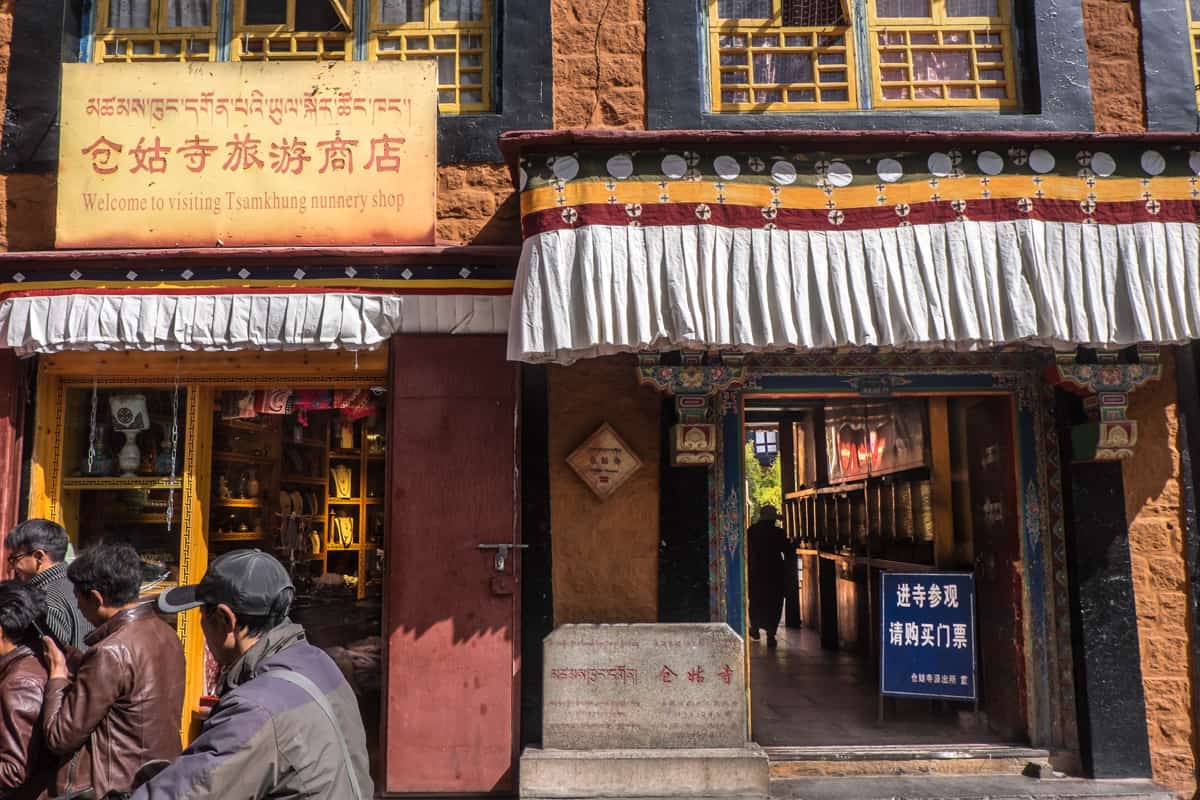
Elevation 4000m
Gyantse used to be Tibet’s third-largest town. While its administrative status has diminished, it remains one of the last cities not wholly overtaken by Chinese influence and mass structure.
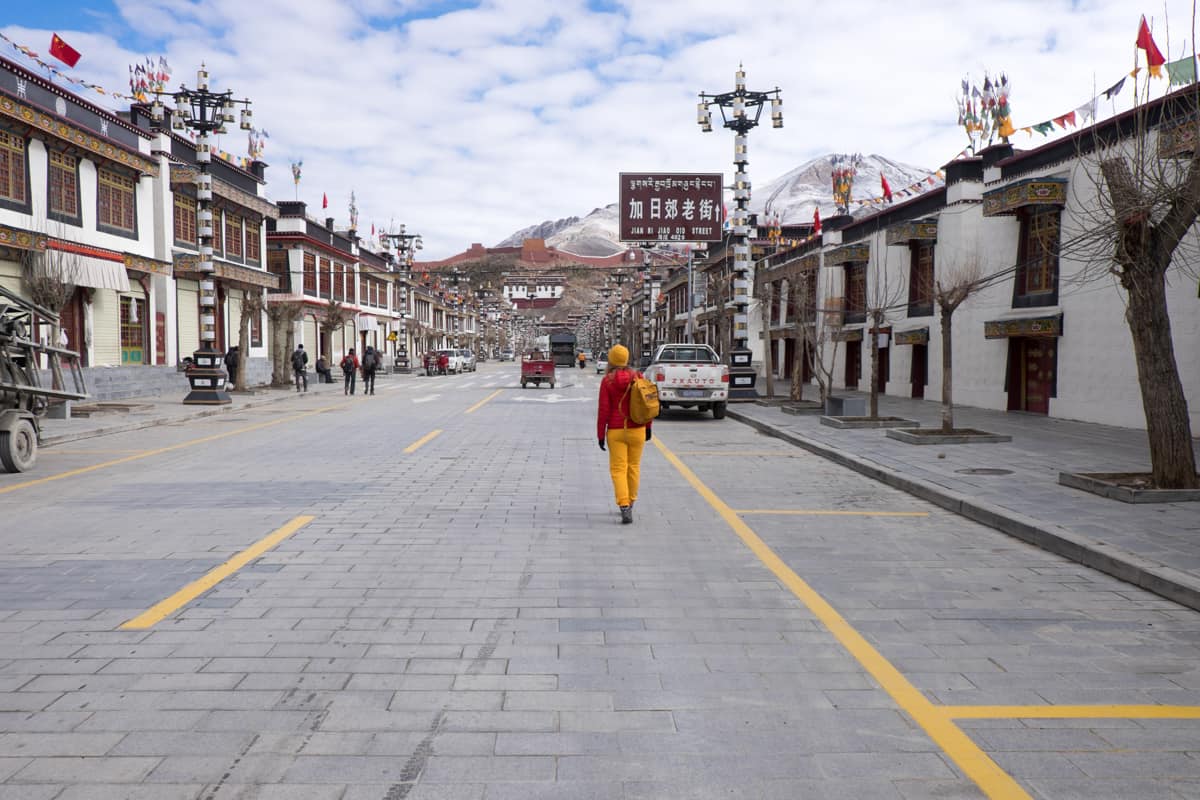
Gyantse, Tibet
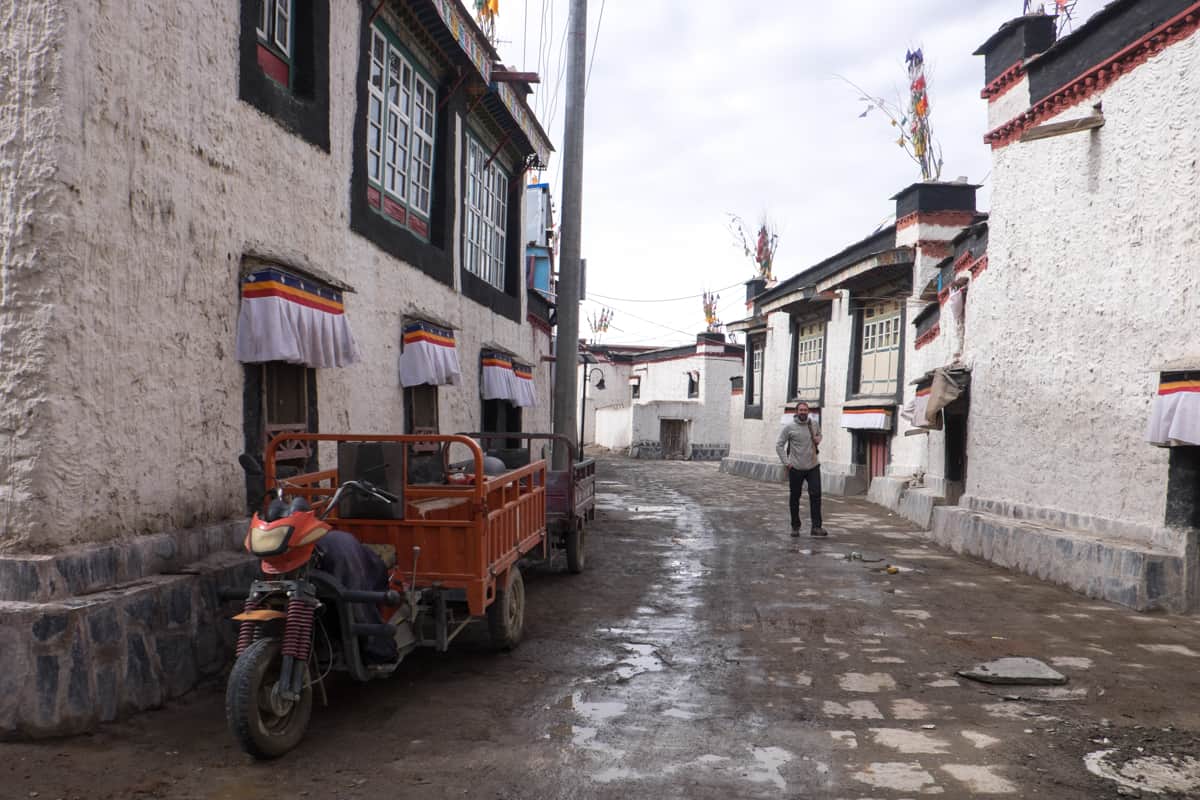
Gyantse village streets
It takes 9 hours to get here from Lhasa, with spectacular viewpoints to make a stop, including the Kambalaat High Pass at 4794m where you can view Mt. Nojin Kangatan (7191m) and drive part of the parameter of Lake Yamdork.
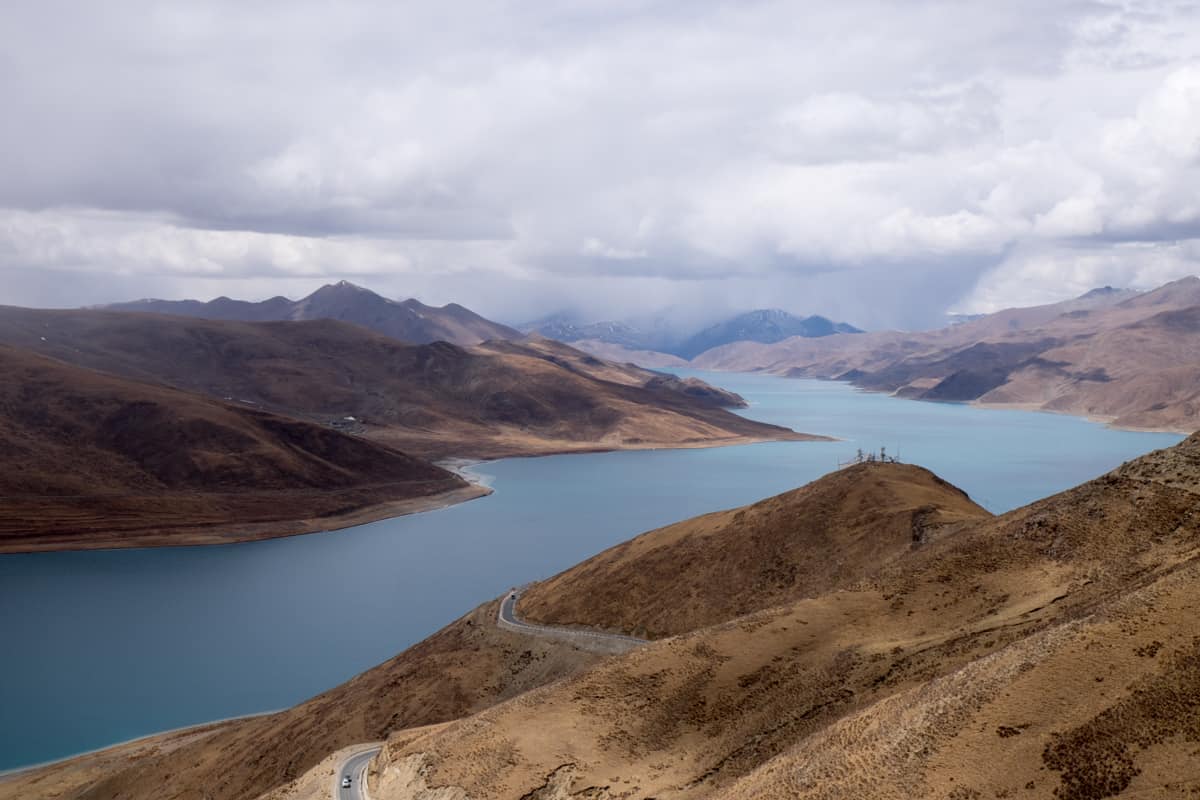
Views over Lake Yamdork, Tibet
Here we visited the Palcho Monastery , which you breathlessly climb for 20 minutes for a broad panoramic view of the surrounding village, fortress and mountain ranges. This moment of calm looking out over such a surreal canvas is a time to reflect on where you are.
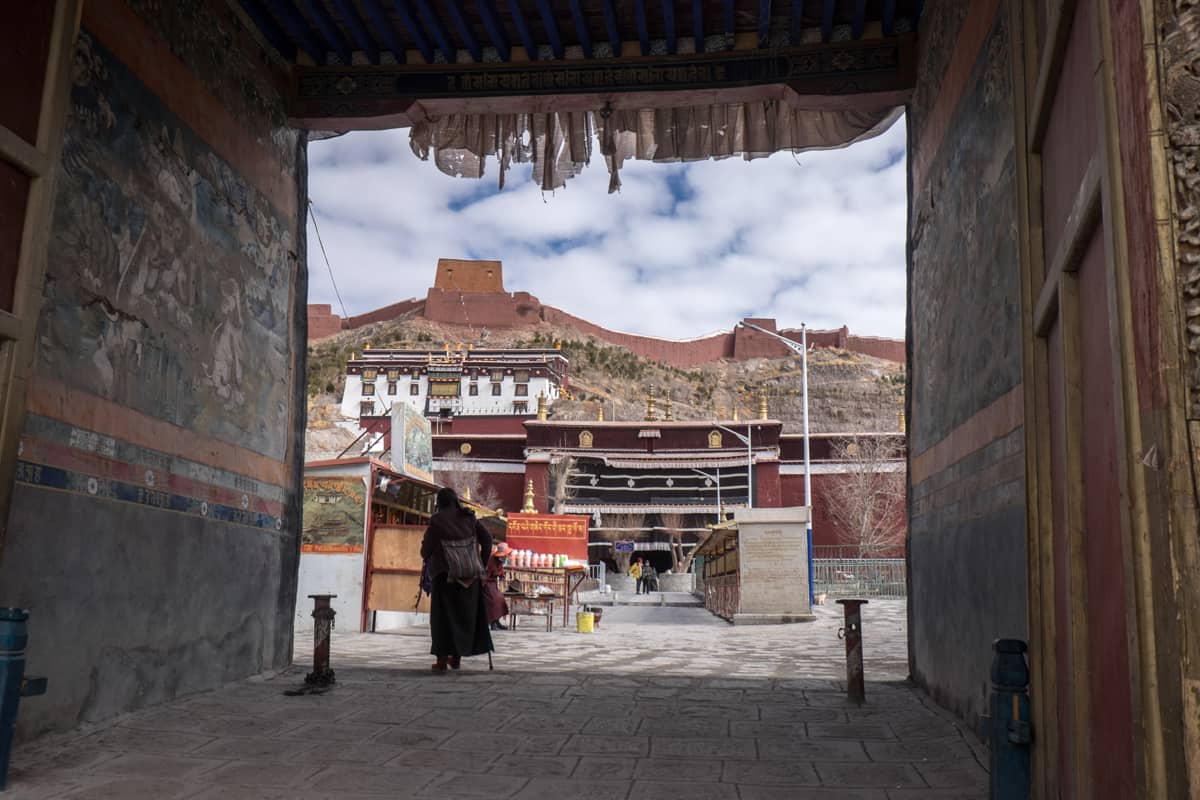
Entrance to the Palcho Monastery in Gyantse
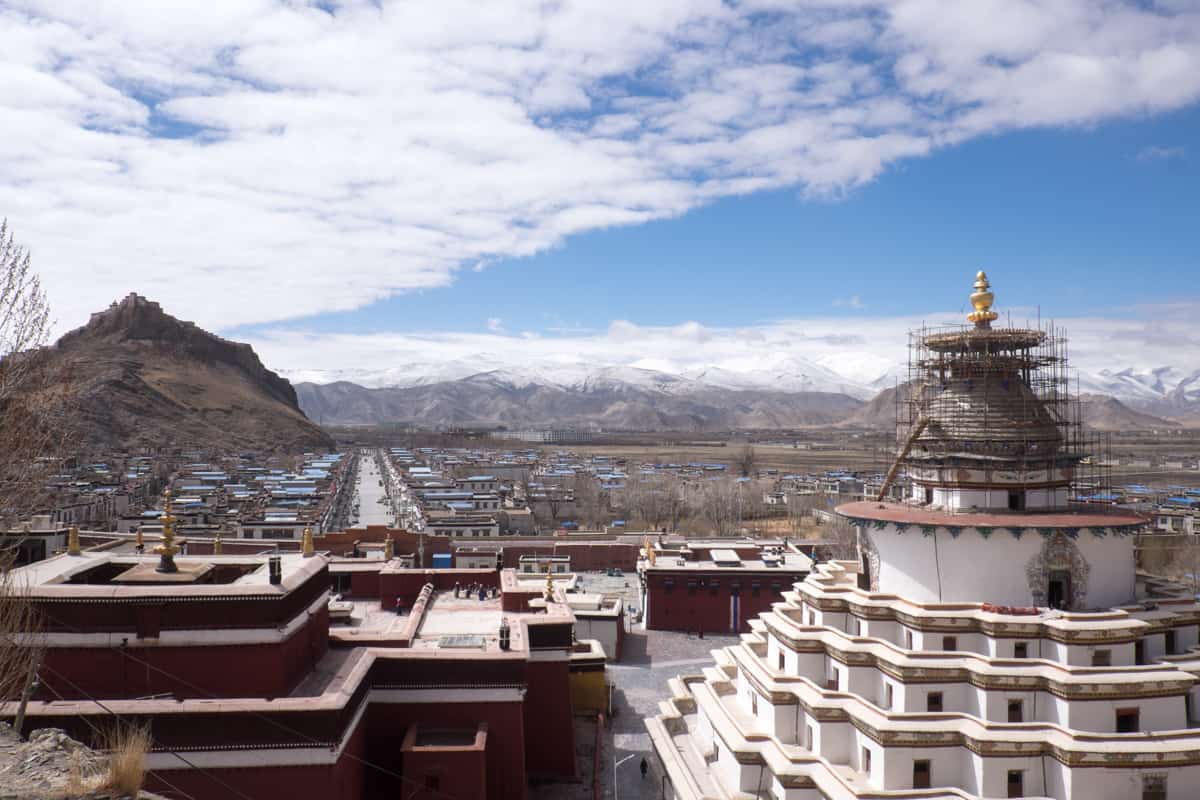
The sweeping views from the top of the Palcho Monastery
Elevation 4,300m
Tibet’s second-largest city of Shigatse is a two-hour drive from Gyantse.
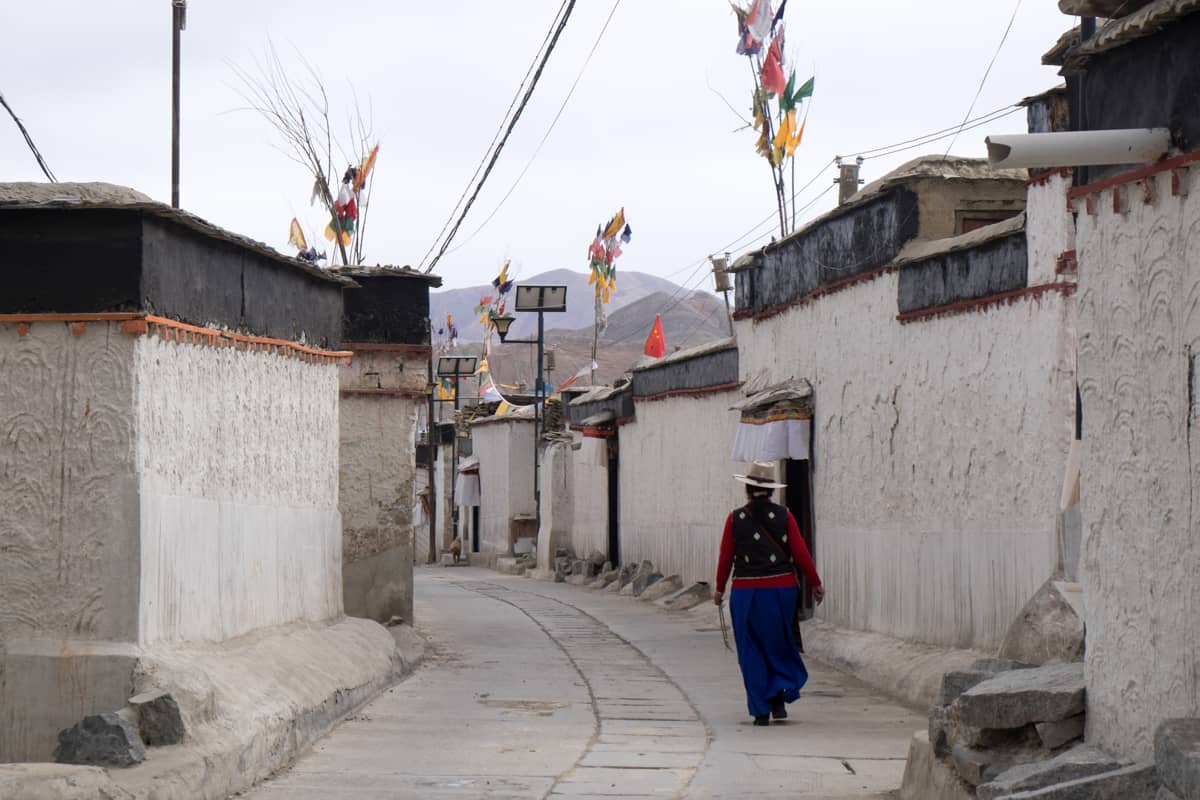
A Tibetan woman in a traditional village in Shigatse
Better known as the Panchen Lama’s traditional seat (the second highest order of the Dalai Lama), Shigatse is on the map because its home to Tibet’s best-preserved Monastery Tashilompo Monastery where once, 4700 monks lived.
It’s considered by pilgrims to be the second Potala Palace and is visited daily by hundreds of people here to see the 26m high Buddha made from 278kgs of gold.
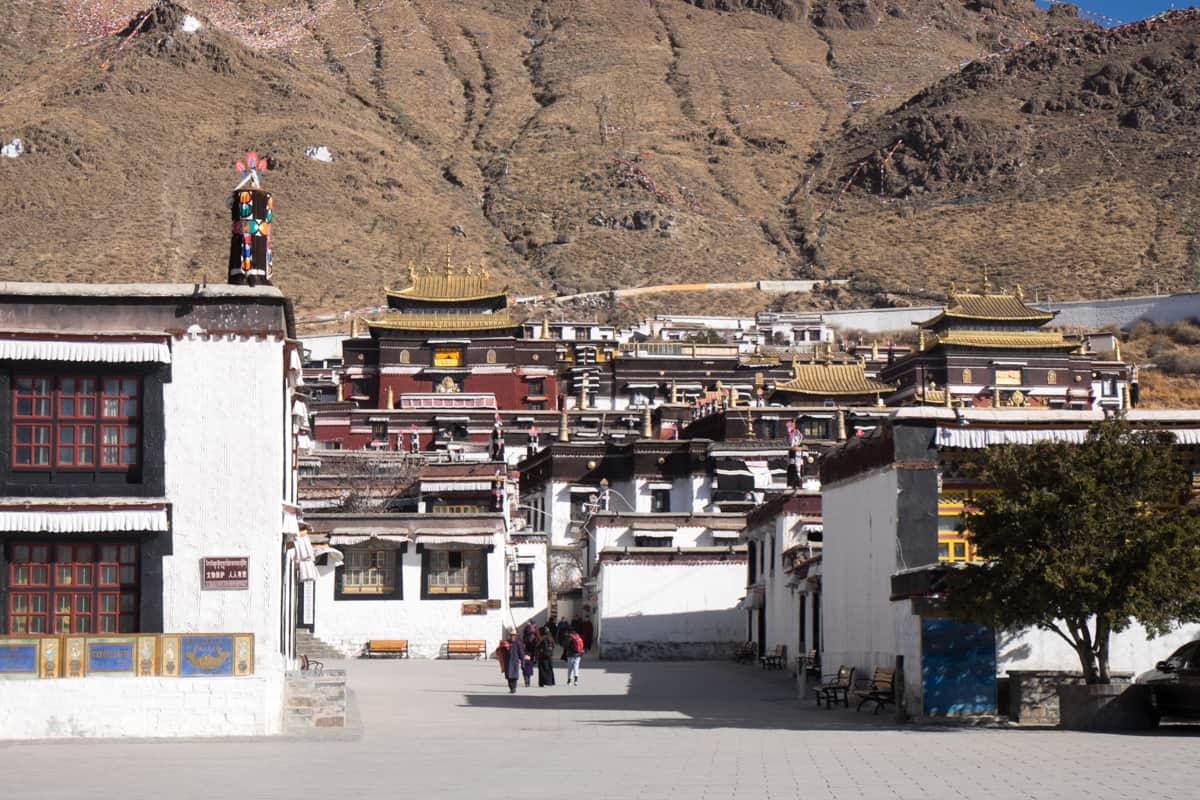
The Tashi Lhunpo Monastery in Shigatse Tibet
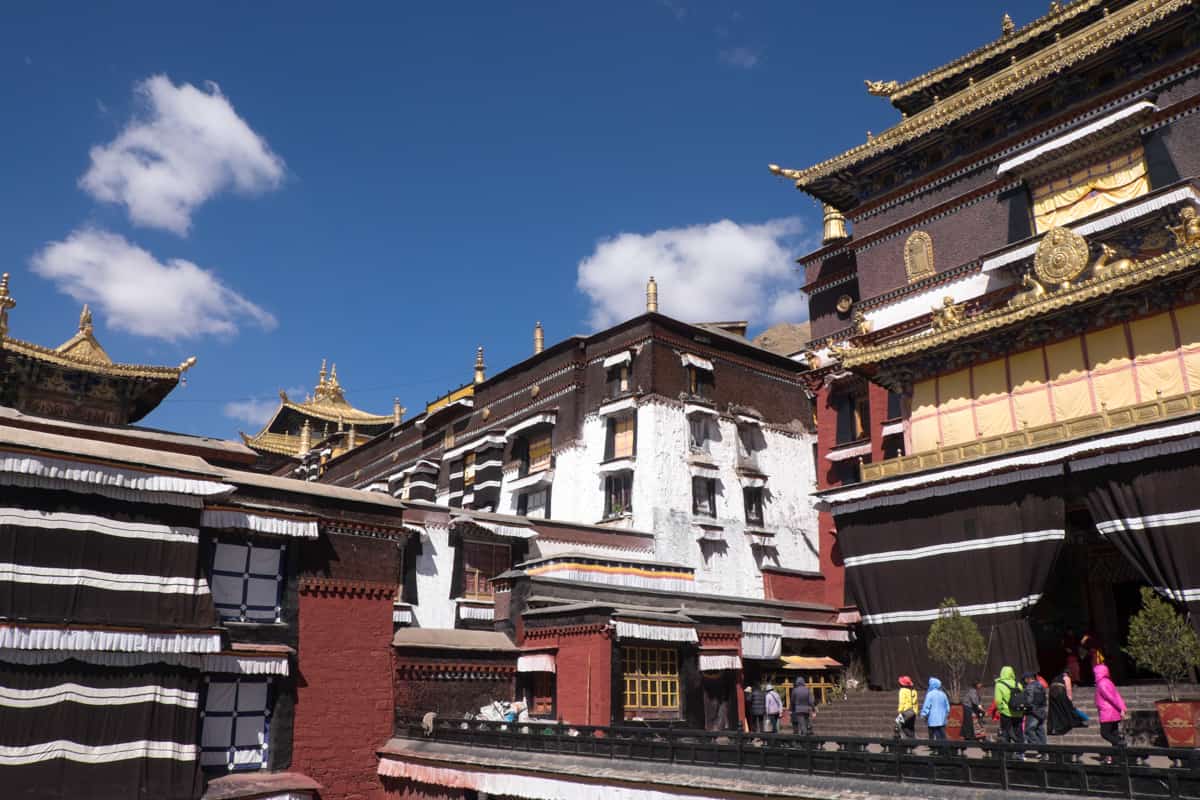
A short drive from Shigatse, our time in neighbouring Shegar was a sleepover point at 4,300m, ready for the nine-hour drive to Everest Base camp the following day.
Elevation 4980m
On the way to the Everest Base Camp area, you get to visit the Gyatso Pass at 5248m – the highest pint you will be on the trip. Another accolade to rack up here is to say you’ve used the highest toilets on earth.
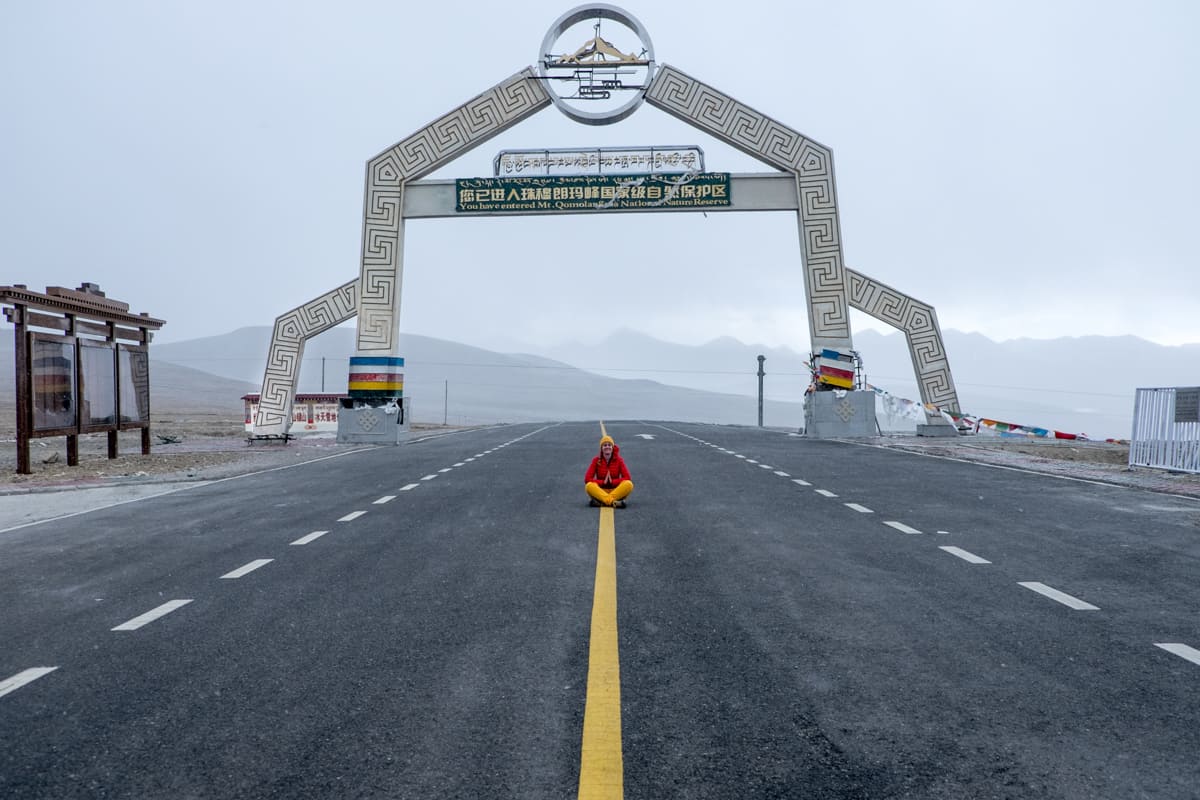
The Gyatso Pass – the highest road in Tibet
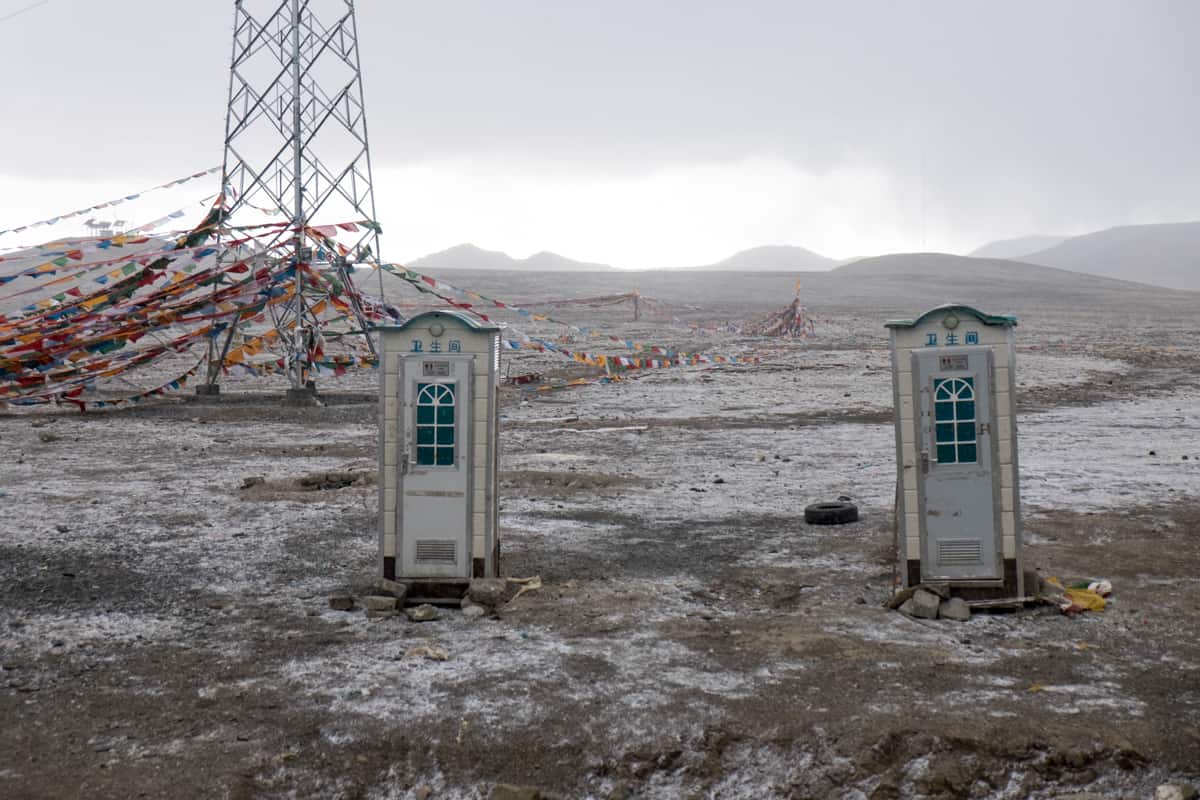
The toilets on the Gyatso pass in Tibet are the highest toilets on earth!
The drive to the Rombuk Monastery was an endless stream of white-capped mountain scenery, with everybody in the vehicle full of excitement with every glimpse of Everest as we rounded corners and valley walls.
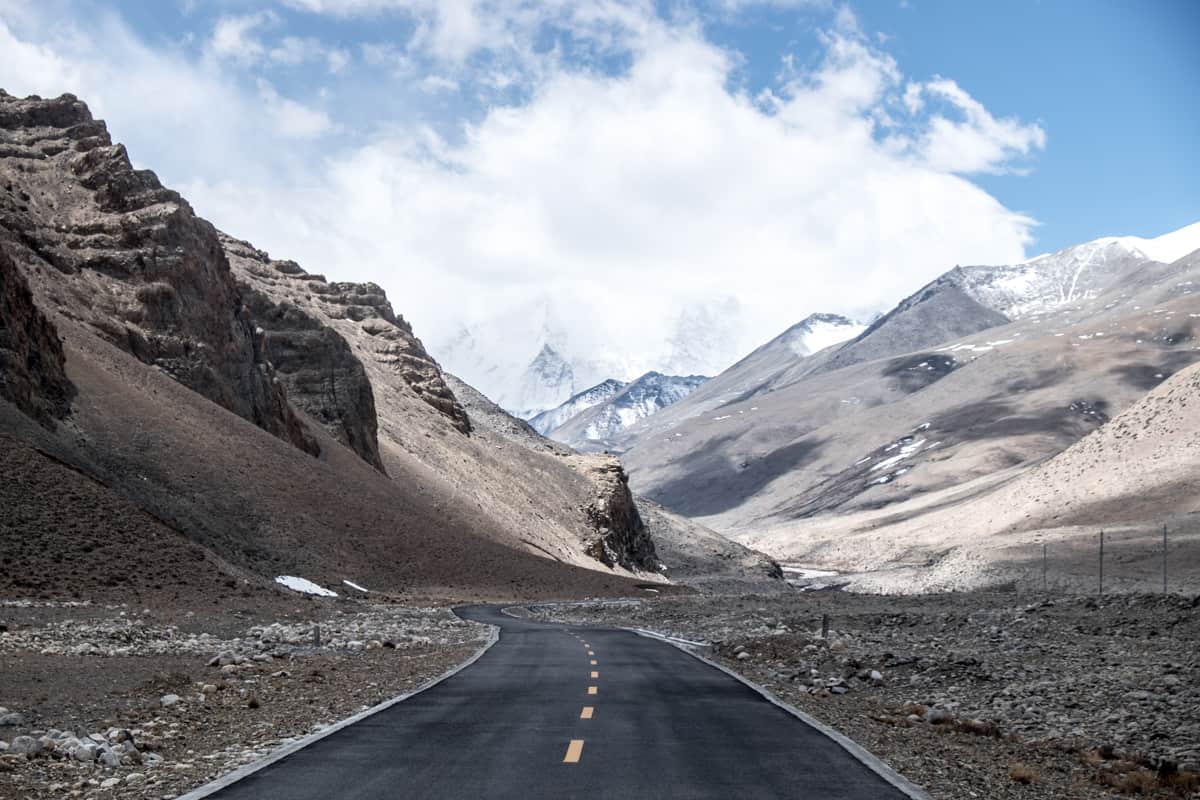
View of Mount Everest in Tibet
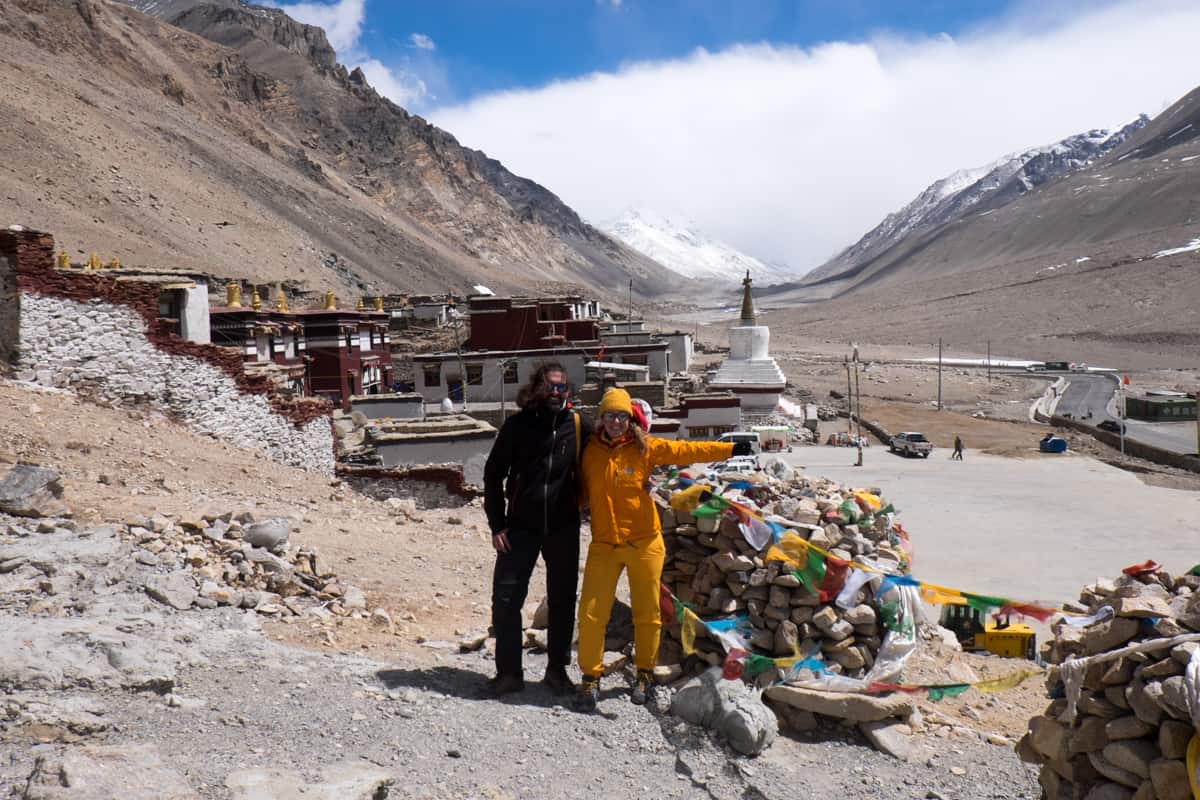
Rombuk Monastary view to Tibet Everest Base Camp
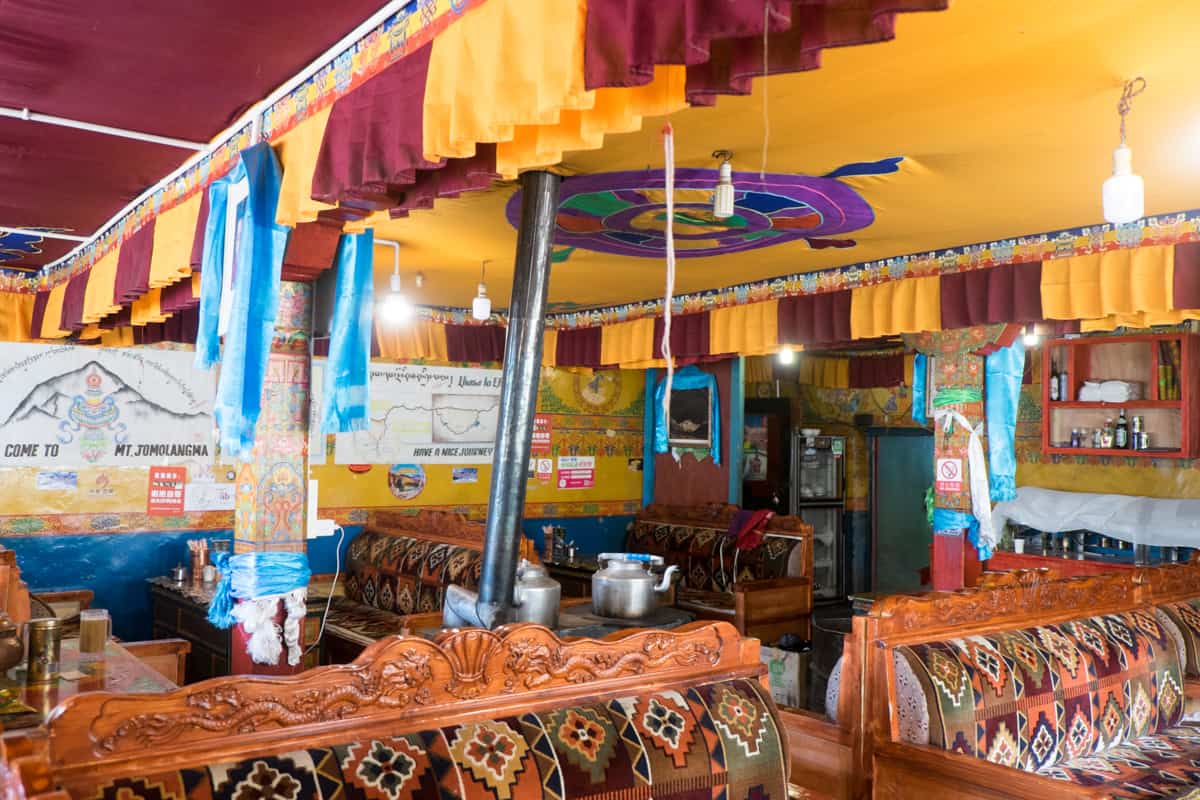
Inside Rombuk Monastary at Tibet Everest Base Camp
The Monastery stay is basic but comfortable, with a chance to walk to the Base Camp checkpoint and climb a small view for an elevated viewpoint. On the other side of Everest is where my first mountain adventure completing the Everest Base Camp Trek, began in Nepal seven years ago. Everest Base Camp on the Tibet side might have been moved back by 7km, but nothing beats the view we had of the world’s highest mountain.
READ MORE: Everest Base Camp Trek, Nepal – Reaching the Top of the World
Overnight it had snowed, so we were able to take another walk towards Everest as it stood glowing with a golden morning halo.
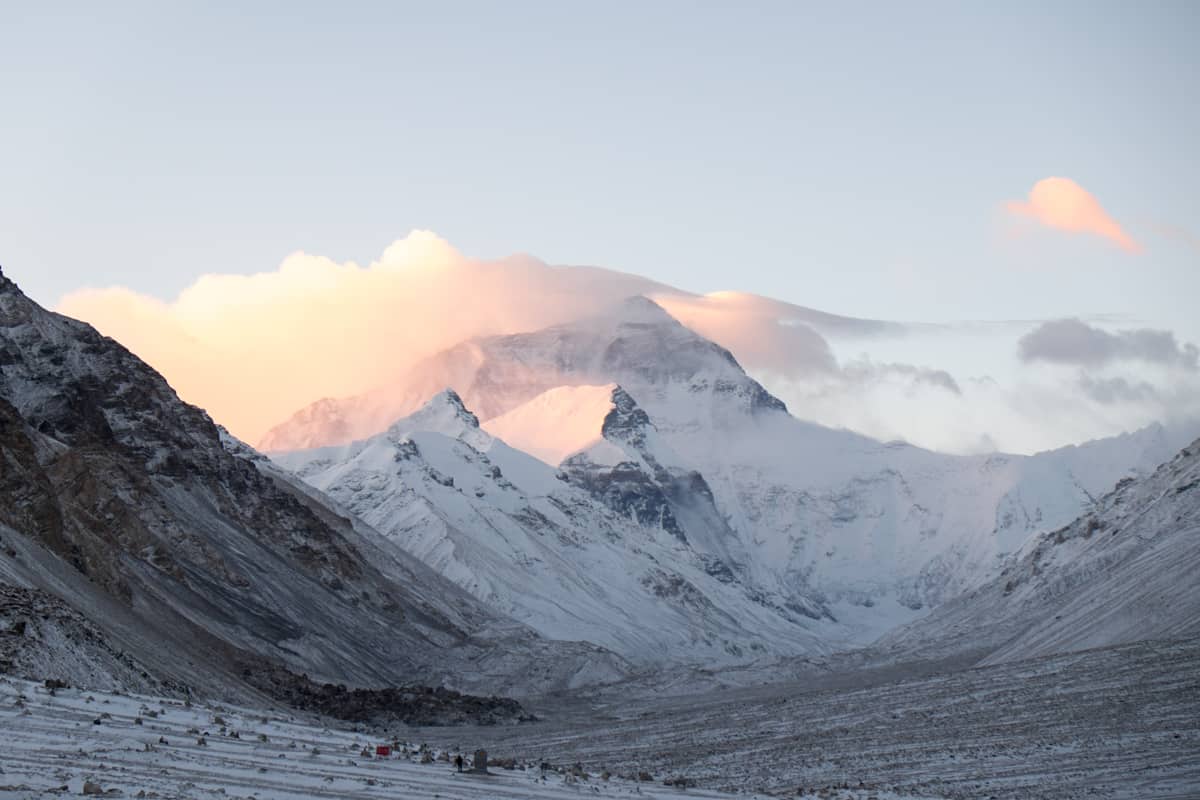
Leaving Mount Everest behind, we took back to the road for a 9-hour drive to the Nepal-Tibet border town of Kyirong. While there is not much to see here, it is where we had our last Tibetan dinner and a good night’s rest before the 10-hour drive back to Kathmandu.
What to Pack for Tibet
- Layers including merino wool thermals , t-shirts, fleece, windproof or tri-climate jacket and a waterproof jacket. I layered as swapped and changed. One minute it’s sunny, and you work up a sweat walking around. The next, you will be jumping out of the car to snap away at the valley ridges and mountain scenes where it’s cold, windy, raining or even snowing. Every day is a surprise.
- You will need modest clothing covering shoulders and knees for when you enter monasteries, temples and other religious areas. Casual long-sleeve travel tops are acceptable, or best tops with cardigans or light-sport jackets.
- Jeans and hiking trousers ( Mammut are my go-to brand for fit and comfort). Wear your most comfy pants for long journeys, my favourite being my roomy, yellow climbing pants.
- Gloves and a hat for those cold, windy and sometimes snowy conditions at high heights
- Trekking shoes (better when walking outside in more adverse weather conditions and walking at Everest Base camp) and sneakers / comfortable walking shoes for general city wandering. My top picks are the Asolo hikers and the tougher Salewa MTN Trainer Mid GTX range. I have Vivobarefoot for everyday walking .
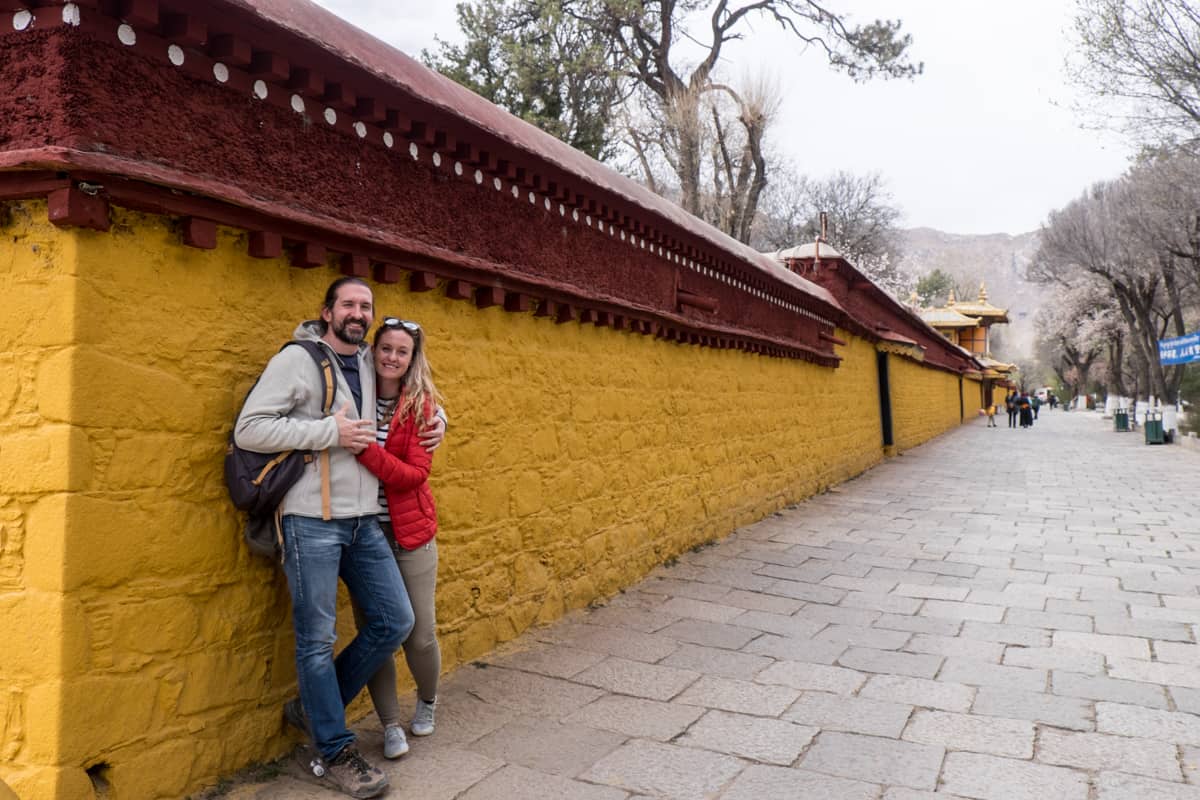
- Sunglasses and sunscreen. Particularly in the morning to mid-afternoon in Lhasa, the sun was extreme. A sun hat is recommended for those more sensitive to the heat.
- Silk sleeping liner for an extra layer at Everest Base Camp and monastery stay and a head torch since the toilet is in a separate building outside of your room. If you have the time to shop around, you can also find these items in Kathmandu before the trip start.
- Toilet paper for roadside ‘nature toilets’ and squats.
- Hand sanitiser (diarrhoea is one of the main health issues for Tibet)
- A Microfibre travel towel is a good, lightweight extra (where you might need a fresh, clean towel or for use at EBC).
- Snacks for sustenance on the road. I usually take a week’s worth of protein and healthy snack bars .
- Painkillers (also to help with early-onset symptoms of altitude). I was able to get stronger 600mg Ibuprofen, only on prescription from my doctor. However, they were vital in curbing the early onset of migraines which would have caused further sickness.
Take crisp, new dollars with you for exchange in Tibet to Chinese Yuan. The ATM didn’t work for everyone. It was also impossible to get a large number of Rupees changed to dollars while in Nepal.
Altitude sickness can occur in some people around the 2,500 m, but everyone is different. For example, I start to feel sick at 4,000m, and it has taken a few trips and treks to work that out.
But the high altitude in Tibet isn’t something to be worried about. The trip is designed to allow enough time in Lhasa to acclimatise and includes many ‘high to low’ drives to cover various altitudes, so your body adjusts. There’s a precise science to the trip itinerary, the route and the designated stops that has you covered without you having to overthink it, but here are some extra t ips for avoiding altitude sickness when in Tibet.
Avoid intense activity when you get to Lhasa. Our trip specifically had four days on the ground to ensure enough time to acclimatise and take things slowly. Stroll, and rest when you feel your body is getting tired. It’s always about listening to your body.
Say hydrated . Drink plenty of water and get plenty of sleep. Dehydration and fatigue are not what you need on this trip when some days involve a lot of sightseeing and long walks around sites. You can pick up dehydration sachets in Kathmandu, which you’ll find in all supermarkets stocked up for those about to go trekking. Or take electrolyte drinks, tablets or salts with you .
Be aware of your body as you slowly climb to a higher altitude . Our G CEO carried a finger pulse monitor, and each day we wrote down our heart rate and oxygen levels. This daily test allowed him to monitor anyone in the groups who could be sick or face any potential issues ahead of time.
You can purchase Diamox tablets in Kathmandu before the trip. However, we managed to find a herbal tablet version in Lhasa that we could begin taking as we were leaving Lhasa to prepare for higher altitudes.

Travel Tibet and Come Back Changed
Tibet is an emotional dive into an ancient Buddhist culture and a journey through the Himalayan plateau’s highlands. A sensorial spectacle on multi-levels that you won’t ever forget.
For further information on the Tibet tour, including the departure dates during the seven-month travel window, see the High Road to Tibet trip overview . I travelled with G Adventures as an ambassador to promote destinations responsibly and where tourism money and practice is used for social good.
Travel Tibet and see it from a different perspective
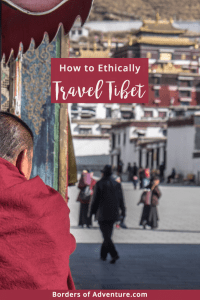
About Becki
Becki Enright is a British Travel Press Award-winning writer whose work focuses on changing perceptions about misunderstood aspects of destinations. Her writing combines storytelling with insight into the social, historical, political and economic factors that shape the country or place in relation to tourism. Becki has appeared live on Sky News and CNN and has contributed to high profile media including National Geographic, Time.com, Guardian online, New York Times, Grazia and Buzzfeed.
Tenzin says
6 January 2021 at 10:43 am
I thoroughly read your whole article about Tibet travel and really mind-blowing! I love the place and the people in Tibet.
31 October 2019 at 7:19 am
Tibet is really an amazing place with wonderful people. The uniquely spiritual place offering fabulous monasteries, breathtaking natural views, stunning high-altitude treks as well as one of the friendliest people. By traveling in Tibet, you will appreciate the visual feast and experience a lifetime cultural encounter.
Deborah says
25 July 2019 at 6:41 pm
This looks amazing. Thank you for this really thorough look into what a trip to Tibet can be and all the details to keep in mind. Great read!
26 July 2019 at 11:41 am
Thank you, Deborah!
25 July 2019 at 11:54 am
I had no idea Tibet was so fiercely policed – it seems crazy to me that you can’t even enter with a ‘Tibet’ guidebook! But I really admire and respect your view point on this, Becki: it would be very simple to just not go as some form of boycott or protest, but I think it’s important to visit to meet people, support their economies and take in the reality for yourself – without bringing your own political agenda on board and trying to place others (i.e. tourguides) in compromising situations.
25 July 2019 at 2:48 pm
It can be a hard choice for many, in choosing to go or not. But my stance, as you picked up, is always to go and witness things for yourself, make your own informed decisions and support the local people. China’s control here does exist with paranoia, and the situation is complex, delicate and emotionally charged. Yet, Tibet is somewhere with such immense beauty and unique spiritualism that it should be experienced. All we can do is tell our stories.
Leave a Reply Cancel reply
Your email address will not be published. Required fields are marked *
- Article Archives
- Work with me
- Privacy Policy

How to Plan a Tibet Tour 2024: Expert Tips
Commonly referred to as the "roof on the world", Tibet has the world's highest "castle" — the Potala Palace and the world's tallest peak — Mount Everest (altitude 8,848 meters). Tibetan Buddhism dominates the cultural landscape, and there are many Buddhist monasteries scattered across Tibet.
Content Preview
- 1. Can I Visit Tibet Now?
2. How to Get a Tibet Permit
3. it is safe to visit tibet.
- 4. Things Not to Do
5. Best Times to Travel to Tibet
- 7. Tips for Seniors and Children
8. Tibet Travel Insurance
- 9. How to Get to Tibet?
1. Can International Travelers Visit Tibet?
Yes. But please remember , independent travel is not allowed : you will need to go on an organized tour provided by a certified travel agent who will also provide your Tibet Permit.
Send us your inquiry if you would like some provisional help with planning. To ease your concerns, You enjoy 100% refund of any payments made to China Highlights prior to 3 weeks before departure ( detail⇒ ).
Updates : Travelers from visa-free countries just need to provide us with passport photos to apply for a Tibet permit if your itinerary in Tibet is less than 15 days.
Applying for a Tibet permit is a different process from getting you r China visa . Application from individuals is not accepted: it must be done through a travel agency.
Fortunately, it is easy for us to handle all the procedures and we can 99% guarantee your Tibet permit success . With our step-by-step guidance, applications are almost always successful. The procedure is as follows:
If you are from a visa-free country, just disregard this step.
No matter whether it is a group tour or a private tour.
If you are from a visa-free country, just send your passport to us.
Normally it will be posted by express mail to your pre-Tibet stop.
Except for L (Visitor/Tourist) Visa holders, you are also required to provide proof of a place at your company/school .
For expats in China , you will need to provide a work/study certificate .
Don't worry: your travel agency (we) will give you guidance in preparing all the items.
As far as personal security goes, Tibet is a safe place with a low crime rate. Even if you walk around Tibet alone in your free time, your personal security is not expected to be threatened.
When walking in the streets of Lhasa you will find lots of police stations , and armed policemen can be seen everywhere in the streets. They are normally on duty 24/7.
As a pure land with devoted Buddhist people, wherever you go a wide smile will be there to greet you.
With an average elevation of 4,500 meters (15,000 feet) above sea level, probably your biggest concern is altitude sickness in Tibet.
It is perfectly okay for ordinary people to travel to Tibet, including seniors or kids , however, it is suggested that you consult a doctor before traveling if you have a heart problem or high blood pressure.
Oxygen cylinders will be available in the vehicle for every China Highlights customer during your stay in Tibet.
You may want to read more about staying healthy in Tibet .
4. Things Not to Do When Planning a Tibet Trip
- Don't book your tour any later than 10 days before departure to ensure we have (your travel agency has) plenty of time to apply for Tibet permits.
- Don't book flights before the Tibet permit is issued, especially during this COVID-19-affected period. You might find that a Tibet Permit is required to confirm a flight booking, but your permit cannot be obtained until 2–7 days before your tour! It is better to ask a travel agent (us) to organize your flight tickets as it is easy for them (us) to handle all these problems, as well as cancel flight tickets if there is any travel ban due to COVID-19, etc.
- Don't plan your Tibet trip for March. Tibet will be closed to foreign travelers during the Tibetan New Year period, which is usually in February/March and is based on the Tibetan calendar. During this period, it is worth considering other Tibetan regions such as Qinghai , Sichuan , and Yunnan , which have many of the cultural and scenic attractions that Tibet does without access restrictions.
- Don't arrange a tight schedule in Tibet to sure your tour arrangement is as flexible as possible. You may need more time to let your body get used to the high altitude. See How Long to Spend in Tibet
- Don't make changes to your itinerary (such as pre-Lhasa city or travel destinations in Tibet) once your Tibet Entry Permit is issued, otherwise, you will need to apply for a new one! Please do tell your travel agency (us) in advance if you want to make any changes to your Tibet plan.
The weather in Tibet is largely affected by altitude . Therefore, even in the same month, the temperature in southern (low altitude) and northern (high altitude) Tibet can be very different.
Every season has its advantages and characteristics. Exploring Tibet in different months shows you different scenery and cultural activities for different travel experiences.
Spring (April to May) is best to enjoy less-crowded attractions and a favorable rate of hotels (except for the Labor Day holiday: May 1-5). The peach blossom in Nyingchi is really worth seeing.
Summer is best for seniors and kids because the air's oxygen content is higher during this period. You can enjoy most of the sights in Tibet when nature is at its most vibrant and also experience rich festivals. Local people make their living by growing barley and raising yaks there every summer. You can take part in the work of local Tibetans . In the evening, you can cook and enjoy dinner with a local Tibetan family. While it's more crowded than other months, there are higher costs due to the higher demand for flights, trains, and hotels.
You can travel to every place in Tibet during autumn , which provides the year's best weather for hiking . The most popular trekking trails by far are the Everest Base Camp Trek and the Mount Kailash (Yatra) Trek — a famous pilgrimage route. It is also the best time to admire the breathtaking snow-capped Mount Everest when the sky is particularly blue, the air is clean and dry, and there are few clouds.
Winter is Tibetan people's leisure time and many of them choose to make a pilgrimage trip to Lhasa from their various Tibet regions. Small religious activities can be found in many corners of Lhasa. In winter, blue glaciers are an unusual and striking feature of Tibet, with ice cracks and bubbles all over the frozen lakes, the huge ice blocks appear to be a charming blue color. It is also a good time to enjoy the favorable rates of hotels. See 5-Day Tibet Winter Tour
See more on Best Times to Visit Tibet .
6. Budget for a Trip to Tibet
The budget depends on where, when, how many people, how many days, hotel class, private or group tour, transport, and other requirements you may have.
You could get the approximate price from our 8-Day Tibet Tour (based on 2 people for a private tour) for reference. The price of 8 days would be about USD 2200 per person, including private transfers in Tibet, meals, admission fees, guiding, hotels, etc.
To make the most of your budget, you are suggested to book a few months in advance to enjoy some early booking discounts or travel with more than four people to share private tour costs.
If you have a holiday in winter, travel to Tibet in December or January to enjoy the special winter rates including discounts on hotels, airfares, and entrance tickets.
7. Tips for Traveling with Seniors and Children
- Make sure any seniors and children in your group are healthy enough to visit Tibet by consulting a doctor. Seniors with cardiovascular diseases or chronic respiratory ailments are not suggested to travel to Tibet.
- Stay in Lhasa for 2 days for acclimation before touring any wider in Tibet.
- Traveling with a wheelchair is not convenient in Tibet , as most of the attractions are located on hillsides without a chairlift or elevator, which means those in wheelchairs will miss the Potala Palace and monasteries. But it is fine to visit places with flat roads in a wheelchair, such as Barkhor Street, Jokhang Temple, and Lake Yamdrok.
- Children under 4 years old are not suggested to visit high-altitude regions in Tibet, such as Everest Base Camp (5,200 m), Mount Kailash (4,700–5,600 m), or any place over 4,500 m. Lhasa (3,800 m), Lake Yamdrok (4,000 m), and Nyingchi (3,100 m) are perfect choices for them.
- Be sure your children can well express how they are feeling to identify symptoms of altitude sickness.
- Bring some snacks for your kids , as the foods in Tibet will probably not be to their liking — most of the dishes have a heavy flavor and will be quite strange to them. However, if your children are adventurous eaters, this could work out well.
- If you are a family with 2 adults and 1 kid , your family can simply sleep in one bed if there is enough space or ask for an extra bed or cot.
- If your family has 2 adults and 2 children or more, it is better to book adjoining rooms (rooms are often connected by a door). This type of room is limited in availability and not provided in every hotel, please ask our travel advisor to choose hotels for you.
During our over 20 years of experience , we have organized Tibet tours for customers from 4 to 82 years old . Please do tell us about any special requests you have , and our professional travel advisor will solve any problems for you.
You may want to read more tips and suggestions on How to Deal with Altitude Sickness .
It is wise to get travel insurance when you travel to Tibet. Here is what you need to consider when selecting your policy:
1. It is better to get "cancellation for any reason" insurance in case of a sudden closure of Tibet (although this is not frequent, it could happen at any time). Booking with China Highlights, you enjoy free cancellation up to 22 days before departure for your Tibet tour or other China tours.
2. Check if it covers an emergency medical evacuation, which could help you quickly descend or leave Tibet if you suffer severe altitude sickness.
3. If you plan to trek in Tibet, check if your policy covers trekking in Tibet.
4. Check if your travel insurance includes medical expenses for your trip to Tibet in case you need medical services in a hospital there (due to altitude sickness).
5. Other typical air travel issues should be covered, for example, a snowstorm closing down your airport before you can board your flight to Tibet, or arriving only to find your luggage is on its way to another city…
Based on what we know from our previous customers, the most popular insurance companies are InsureMyTrip and World Nomads.
9. How to Get to Tibet? — Easiest from China
Broadly speaking, there are two ways you can enter Tibet: from China's cities or from Nepal , but the easiest way by far is from the China side.
Travel from China's cities
There are direct flights from China's major cities to Lhasa in Tibet, such as from Beijing , Shanghai , Chengdu , and Chongqing . The most frequent and reliable flights to Tibet are from Chengdu, with about eight flights per day.
Trains to Tibet depart from these cities: Beijing, Shanghai, Guangzhou , Xi'an , Chongqing , Lanzhou , and Xining .
Xining is the best place to start the train journey, as it is the beginning point of the most beautiful section of the Qinghai-Tibet Railway with the shortest train journey to Lhasa (20–22 hours), compared to around 30–50 hours for further departure points.
See more details on How to Get to Tibet .
Example: the Best Way to Travel to Tibet from the U.S.
1. Book a flight from a USA city to a China city: Beijing, Shanghai, etc.
2. Spend a couple of days in your China arrival city to get over jet lag.
3. Take a flight to Chengdu , which is the best city for connecting flights to Lhasa (almost all flights to Tibet stopover in Chengdu). You could happily stay a night in Chengdu — home to China's giant pandas — and spend a day sightseeing in the city before going to Tibet.
A wonderful panda volunteer keeper program experience would be worth a day there.
4. Take a morning flight from Chengdu to Lhasa (2½ hours) so that you can have plenty of time for acclimation in the afternoon before you sleep to avoid altitude sickness effects as much as possible.
On your return journey, you could experience the Qinghai-Tibet Railway from Lhasa to Xining with beautiful scenery along the way , and then take a flight from Xining to a large city in China for the flight home.
Traveling out of Tibet by train will help you successfully get train tickets. Lhasa-Xining train tickets are five times easier to buy than Xining-Lhasa tickets! This also means you can save a lot on the ticket booking fee.
Tips: Taking a flight into Tibet is better than a train because a good sleep in a hotel in Lhasa is much more helpful to altitude acclimation than spending a night on the train.
Most passengers find it more difficult to fall asleep on the train, and tiredness makes altitude sickness more uncomfortable.
You may need information about How to deal with altitude sickness in Tibet
Travel from the Nepal Side
There are two ways into Tibet from Nepal: by flight and by road .
You should first consider issues of a China visa and Tibet Entry Permit , no matter whether you'll go by flight or road. Procedures are different from traveling from a Chinese mainland city to Tibet.
Y ou must apply for a China visa and Tibet permits in Nepal via a travel agent . Any China visa issued in your resident country will be invalid for Tibet travel. You will need to stay in Kathmandu for at least 3 working days to wait for the visa and permit.
By road, you can travel from Kathmandu to Lhasa via the Gyirong border (possibly with a convenient side tour to Mount Everest).
For more, see How to Travel from Nepal to Tibet .
- 2-Week Private China Tour: Beijing–Xi'an–Lhasa-Shanghai
- 12-Day China Silk Road Tour from Xi'an to Kashgar
- 11-Day China Classic Tour
- 14-Day China Natural Wonders Discovery
- 15 Best Places to Visit in China (2024)
- Best (& Worst) Times to Visit China, Travel Tips (2024/2025)
- How to Plan a 10-Day Itinerary in China (Best 5 Options)
- 8 Days in China: Top 15 Tours and Itineraries (2024/2025)
- China Weather in January 2024: Enjoy Less-Crowded Traveling
- China Weather in February 2024: Places to Go, Costs, and Crowds
- China Weather in March 2024: Destinations, Crowds, and Costs
- China Weather in April 2024: Where to Go (Smart Pre-Season Pick)
- China Weather in May 2024: Where to Go, Crowds, and Costs
- China Weather in June 2024: How to Benefit from the Rainy Season
- China Weather in July 2024: How to Avoid Heat and Crowds
- China Weather in August 2024: Weather Tips & Where to Go
- China Weather in September 2024: Weather Tips & Where to Go
- China Weather in October 2024: Where to Go, Crowds, and Costs
- China Weather in November 2024: Places to Go & Crowds
- China Weather in December 2024: Places to Go and Crowds
Get Inspired with Some Popular Itineraries
More travel ideas and inspiration, sign up to our newsletter.
Be the first to receive exciting updates, exclusive promotions, and valuable travel tips from our team of experts.
Why China Highlights
Where can we take you today.
- Southeast Asia
- Japan, South Korea
- India, Nepal, Bhutan, and Sri lanka
- Central Asia
- Middle East
- African Safari
- Travel Agents
- Loyalty & Referral Program
- Privacy Policy
Address: Building 6, Chuangyi Business Park, 70 Qilidian Road, Guilin, Guangxi, 541004, China
- BOOK WITH CONFIDENCE
- EMAIL NEWSLETTER
(800) 998-6634
Nomadic Expeditions

Travel Experts 9am-5pm EST

Explore the Himalaya

TIBET, NEPAL, AND BHUTAN
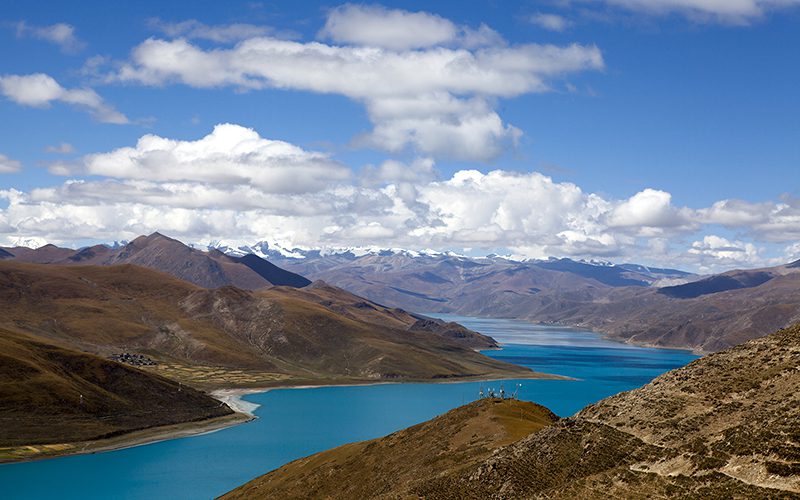
Inclusions & Exclusions
LAND PRICE INCLUDES: • All accommodation in hotels listed in the above itinerary based on double occupancy and inclusive of all taxes;
• China/Tibet: Airport transfers in Chengdu using A/C private vehicles; All ground transportation using non-air conditioned vehicles in Tibet; All sightseeing excursions as listed in itinerary; All meals after arrival in Tibet; All entrance fees to all monuments, monasteries, park service, etc; Services of full time Tibetan Tour Manger and Guide from arrival in Tibet to departure from Tibet; All fees associated with obtaining the ‘Tibet Travel Permit;
• Nepal: Mountain flight airfare; Everest summiteer guide during mountain flight; Round-trip airfare between Kathmandu and Pokhara; Domestic airport departure taxes; All ground transportation using air-conditioned vehicles in Kathmandu; Services of full time Nepalese Tour Manger and Guide from arrival in Nepal to departure from Nepal; All sightseeing as noted in the itinerary; All entry fees at all temples, museums and monuments on sight seeing excursions; Govt. Service Taxes as applicable;
• Bhutan: All meals in Bhutan; All ground transportation using nonair conditioned vehicles in Bhutan; Services of full time Bhutanese Tour Manger and Guide from arrival in Bhutan to departure from Bhutan; All entry fees at all temples, museums and monuments on sightseeing excursions; Bhutan Visa Fee; Bhutan Tourism Fee; All Govt. Service Fees & Taxes.
LAND PRICE DOES NOT INCLUDE:
• International airfare; Internal Asia Airfare is quoted separately and is subject to change by airlines;
• Lunches and dinners unless listed in the itinerary;
• En route stop-overs and hotels;
• Excess baggage charges (on flights) and airport taxes;
• Items of a personal nature such as alcoholic beverages, laundry, mail, phone calls, faxes, etc.;
• Tips/gratuity to all local staff, including drivers, guides etc.;
• Trip cancellation, travel delays, or baggage insurance;
• Charges incurred as a result of delays beyond the control of Nomadic Expeditions.
NOMADIC EXPEDITIONS
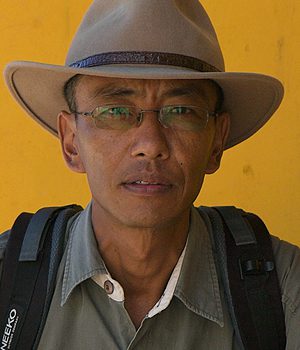
Sonam Badal
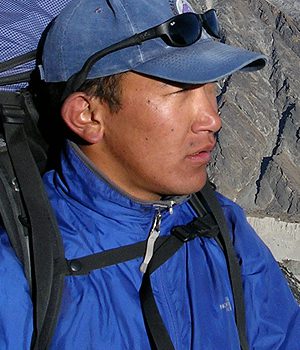
Mingmar Sherpa

Kinzang Tashi
HIMALAYAN ODYSSEY
Photo Gallery
Relevant Blogs
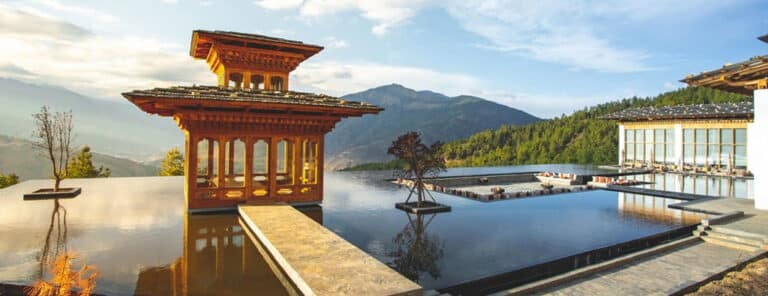
Choosing Your Stay: The Best Lodges in Bhutan’s Five Valleys
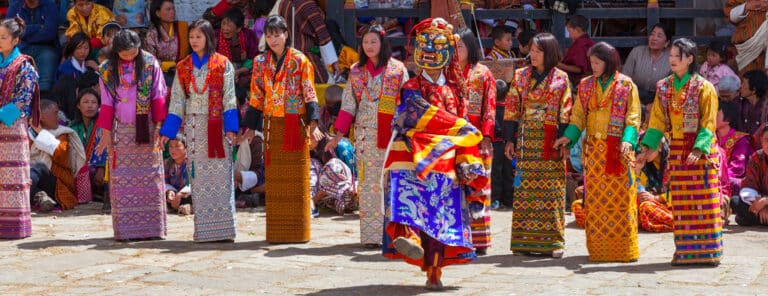
Festivals of Bhutan
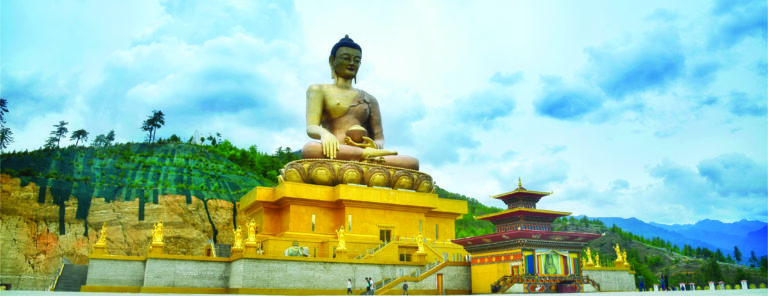
Top 7 Experiences in Bhutan
After flying east across multiple time zones, you will arrive late in the evening and will be met by our Chengdu staff who will transfer you to your hotel.
(Shangri-La Hotel)

Depart early this morning for your flight to Tibet. If the weather is clear, the flight from Chengdu to Lhasa will offer spectacular panoramic views of the eastern ramparts of the Himalayas. China’s highest mountain peaks, the 24,783’ Minya Konka, and the mighty Namche Barwa (25,439 ft.) loom majestically on the horizon, surrounded by countless snow-capped peaks and high alpine valleys, climbing vertiginously upwards to the high-altitude Tibetan plateau.
Your guide will meet you at the airport for the drive (1.5 hours) across the Yarlung Valley to Tsedang (11,152 ft.). On your way, enjoy the exquisite beauty of the mighty Brahmaputra River, known as the Yarlung Tsangpo in this part of Tibet. The Yarlung Valley is certainly one of the most beautiful parts of Tibet, and the historic town of Tsedang will be your day’s destination. You spend the rest of the day relaxing and enjoying the sights in Tsedang, nestled beneath the slopes of the sacred Gangpo Ri.
Tsedang was at the crux of Tibetan civilization until Lhasa emerged as the preeminent center of Tibetan society in the 7th century. InTsedang you will have the opportunity to visit the monasteries of Ganden Chökhorling and Ngachö, and the ancient castle of Yumbu Lakang, the oldest building in Tibet.
As this is your first day at a higher elevation, physical exertion is recommended to allow your bodies to acclimate to the altitude. Take a late afternoon walk through the bazaar, if you’re feeling up for it.
(Tsedang Hotel; B, L, D)
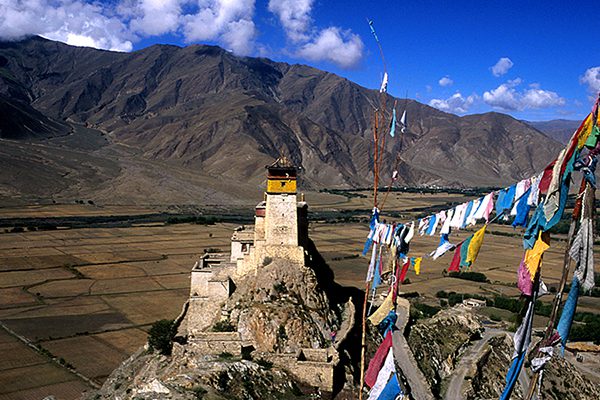
Begin your day with a drive through the stunningly beautiful Yarlung Tsangpo Valley as you head toward the important monastery of Samye. Aside from its tremendous scenic beauty, the Yarlung Valley is also famed for its place of honor in the Tibetan mythological canon. According to tradition, it was in the Yarlung Valley that Tibetan civilization came into being. At Gangpo Ri, it is said that Avalokiteshvara, the Bodhisattva of Compassion, descended to earth in the guise of a monkey, and together with an incarnation of the goddess Tara, was the progenitor of the Tibetan race.
To reach Samye, you must cross the mighty Tsangpo River by ferry to reach Surkhar on the river’s north bank. From here it is a short drive to Samye, Tibet’s first monastic institution, founded in the 8th Century CE by the fabled King Trisong Detsen. This monastery is closely associated with the legendary Padmasambhava, aka Guru Rinpoche, who established the Buddhist faith in this region of Tibet. Due to its close connection with Guru Rinpoche, Samye was originally tied to the Nyingmapa sect of Tibetan Buddhism, though it later came to be associated with the Sakyapa school. Samye is distinctive in that it is laid out as a mandala of theBuddhist cosmological vision. In its center rises the pivotal structure, the Ütse, which symbolizes Mt. Meru, the center of the Buddhist universe. Samye’s many temples, chapels, and chörtens are laid out around the Ütse in a circular pattern, signifying the oceans and continents of the Buddhist cosmos. After thoroughly exploring Samye, you will return through the Yarlung Valley to Tsedang.
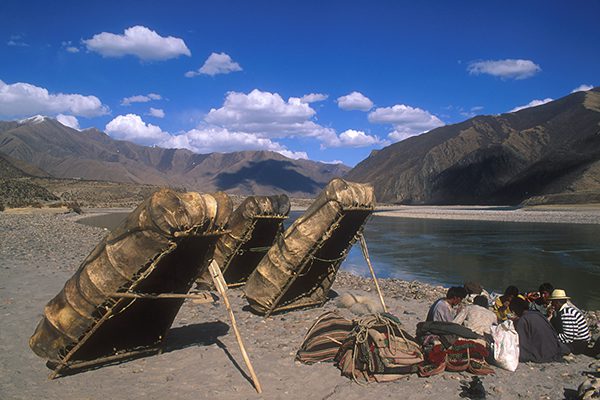
Take the old trade route over high passes and along the turquoise waters of Yamdrok Lake to Gyantse (13,050 ft.) Nomadic shepherds may be in this area and you may have the opportunity to visit them.
Yamdrok is known as the “scorpion lake,” due to its twisting shoreline, which, as the moniker suggestions, resembles a scorpion. Yamdrok is one of the four sacred lakes of Tibet and is a major pilgrimage site in its own right, with a kora path ringing its shores. The lake will be your companion for a good portion of your drive to Gyantse. From the rushing waters of the Tsangpo to the high mountain passes of Kamba-la and Karo-la, festooned with prayer flags, the drive from Tsedang to Gyantse is a breathtaking and photogenic journey.
Arriving in Gyantse, situated in the fertile and agriculturally productive Nyang-chu Valley with the impressive Gyantse Dzong (fort) sitting stolidly atop its lofty perch, you check in to your hotel and take in some sites in Gyantse. The highlight of your time in Gyantse will be a visit to the city’s most famous site, the sublime Kumbum chörten, located at the Pelkor Chöde Monastery. At one time, both the Gelugs and Sakya sects had monasteries at Pelkor Chöde.
As with most of Tibet’s great monastic institutions, Pelkor Chöde suffered greatly during the Cultural Revolution, but is nevertheless enjoying a period of revival. The Kumbum (which means “100,000 images” in Tibetan) is blessed with a plethora of amazing Buddhist murals, frescoes and statuary. You will also see many devout pilgrims completing the short kora around the Kumbum, spinning prayer wheels as they circumambulate themystical Gyantse Kumbum protected by the ever-watchful eyes of the Lord Buddha.
(Gyantse Hotel; B, L, D)
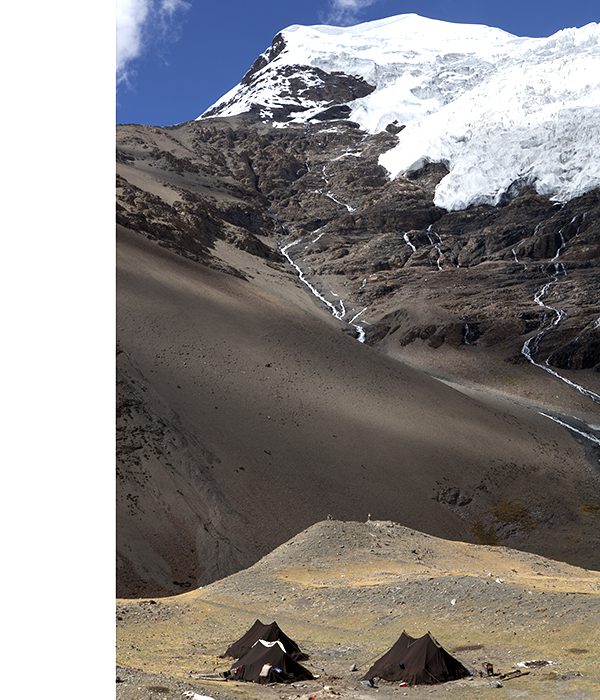
Traveling on the modern road that traverses the fertile green fields and dun-colored hills of the Nyang-chu Valley, you arrive in Shigatse (12,800 ft.), Tibet’s second largest city, and home to the monastery of Tashilhunpo, residence of the Panchen Lamas.
En route you have the option of stopping at Shalu Monastery and the small agricultural communities.
After checking in at the hotel, embark on a visit to Tashilhunpo. Founded in 1447 by another disciple of the great Tsongkhapa, Tashilhunpo was the resting place of the 1st Dalai Lama.Nevertheless, the institution has come to be identified with the Panchen Lamas, the second most important spiritual reincarnation in Tibetan Buddhism (after the Dalai Lamas). Although the original manifestation of the Panchen Lama was identified by the “Great Fifth” Dalai Lama, a rivalry between the two great figures developed over the course of the following centuries.
Tashilhunpo is an intriguing place to visit. It is a very large complex and, like Drepung, rewards the visitor who takes the time to explore the wander the monastery’s byways. Tashilhunpo is an active monastery with a fairly sizeable contingent of monks in residence. The highlight of a visit to the monastery is the massive, 75-foot-plus gilded statue of Maitreya.
(Tashi Chuta Hotel; B, L, D)
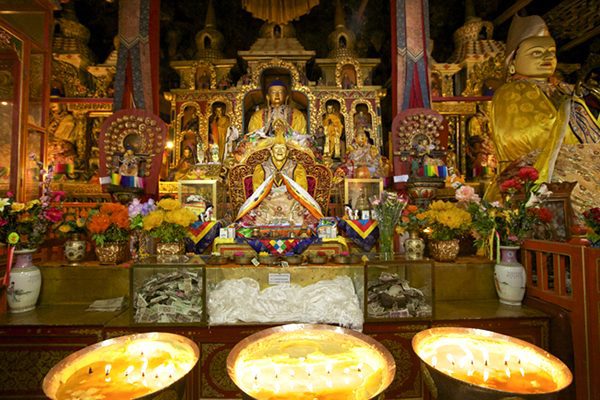
Drive along the powerful Tsangpo (meaning The River) as you make your way through the beautiful countryside of Ü, the historically rich province of Central Tibet. Winding your way through the stunningly austere Tibetan landscape, you finally enter the environs of Lhasa, Tibet’s most populous city. There before you, standing imposingly upon its lofty precipice, is the staggeringly beautiful and instantly recognizable Potala Palace, its regal red and white façade and glittering golden gables towering over the Kyi-chu Valley.
The “forbidden city” of Lhasa will reveal its unique character and enchanting mystique as you visit many of its most significant historical and cultural sites.
(Shangri-La Hotel; B, L, D)
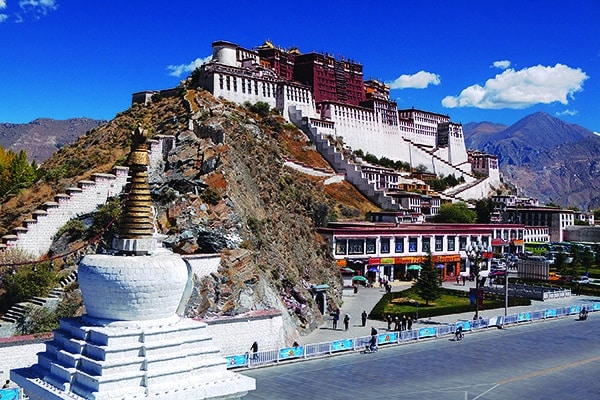
Spend the next two days exploring the city’s most important sites.
Drepung Monastery, beautifully situated in the unpopulated hills west of Lhasa, is a remarkable place. At one time Drepung was home to 10,000 monks, establishing it as the largest monastic institution in the world. Drepung is a large establishment and it is worth the time to explore in depth. Drepung was founded in 1416, just prior to the establishment of Sera. Notably, Drepung’s Ganden Palace was home to the Dalai Lamas until the construction of the Potala by the Great Fifth Dalai Lama in the 17th century. Drepung’s many colleges, halls and temples extend up the hillside towards the peak of Gephel Ri, encouraging the visitor to wander the many byways that meander through the compound’s whitewashed structures. One of Drepung’s many attractions is the massive, two-story statue of Maitreya, the Future Buddha, which attracts pilgrims from throughout Tibet. Drepung’s dramatic location offers splendid views of the Kyi-chu Valley below, including the monastery of Nechung nestled at the foot of the hill below Drepung.
Jokhang is Lhasa’s sacred religious temple. While the Potala Palace played host to Tibet’s affairs of state, Lhasa’s second great historic site, the Jokhang temple, is the religious heart and soul of Tibetan Buddhism. The Jokhang, arguably Tibet’s holiest religious shrine, was constructed in the 7th Century CE under the guidance of the indomitable King Songtsen Gampo. As legend has it, Songtsen Gampo’s Chinese and Nepalese brides brought the Dharma to Tibet, as well as the holiest Buddhist relic in Tibet, the “Jowo Rinpoche.” This golden, bejeweled statue of the Buddha Shakyamuni is the highlight of any visit to the Jokhang. The roof of the Jokhang, with its wonderful golden gables and carvings, offers a magnificent view of the Potala and the busy Barkhor markets below.
The Barkhor, the maze-like warren of shops and stalls that surrounds the Jokhang, will beckon you to join the Tibetans who travel here to pay homage to the Jokhang as they circumambulate the sacred shrine.
Pilgrims journey from throughout Tibet to make prostrations and to complete this ritual kora. Join with these amazing pilgrims as they make their way around this venerable site, and lose yourself amongst the vibrant sites, fantastic smells, and distinctive sounds of the bazaars of the Barkhor.
Looming over Lhasa and the Kyi-chu Valley is the monumental Potala Palace. A visit to this amazing historical site is certainly a highlight of any trip to Tibet. Explore the many chapels, halls and tombs of the Red Palace. Based on the mythical Potala in South India, this more tangible incarnation of the palace was the home of Tibet’s god-kings, the Dalai Lamas. Begun by the 5th Dalai Lama in the 17th century, the Potala was the winter residence of the Tibetan spiritual leader from the time of “The Great Fifth” until the current and 14th Dalai Lama, His Holiness Tenzin Gyatso, occupied it. Now a museum, the Potala is a treasure trove of Tibetan history, its dark and mysterious chapels luring the visitor to discover its many secrets.
Visit Sera Monastery, located to the north of Lhasa, which is perhaps most famous for the always lively sessions that take place in the Debating Courtyard.
Sera was founded in 1419 by a student of the legendary Tsongkhapa and was once home to several thousand Gelugs monks. Although the monastery is populated by far fewer monks these days, Sera, like many other Tibetan monasteries, is reemerging as a prominent center ofTibetan Buddhist studies. After exploring the Main Assembly Hall and many colleges, it is arguably the highlight of any visit to Sera to relax beneath the shady canopy of the Debating Courtyard’s many trees and revel in the sights and sounds as Sera’s monks energetically argue the finer points of Buddhist philosophy.
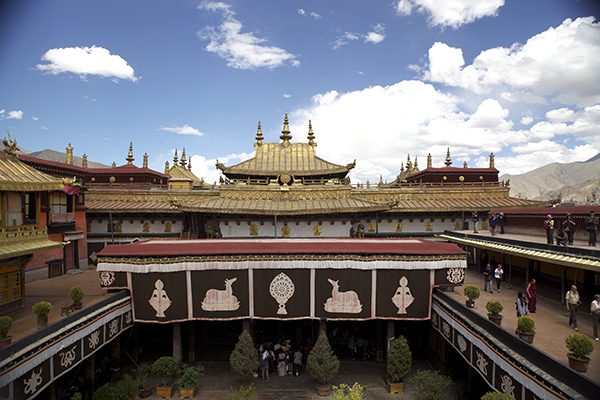
Early this morning transfer to Lhasa Airport for your flight to Kathmandu. As Nepal is 2 hours 45 minutes behind Tibet time (all of China/Tibet is on Beijing time, some three time zones to the east), you actually gain time upon arriving Kathmandu.
The legendary locale of Kathmandu conjures images of the ultimate mysterious and exotic travel destination. Located in Central Nepal, the Kathmandu Valley is the center of Nepali cultural and political life. Indeed, the Kathmandu Valley has been a hub of civilization for over two millennia. Kathmandu is living history, where the modern and ancient continue to mingle. It is an unforgettable experience to wander the mysterious bazaars of old Kathmandu, and this afternoon you can take a walking tour of locales such as the Durbar Square, Hanuman Dhoka, theancient palace of the Gorkha Kings and, of course, Kathmandu’s incomparable bazaars. While in Kathmandu, you will be staying at the iconic Yak & Yeti Hotel, in the heart of Kathmandu. The hotel is built around the All Durbar, the old palace of the Rana Dynasty. Through the years it has been the place to stay for royalty, heads of state, Hollywood celebrities and many mountaineering expeditions bound for Everest and the high Himalaya.
(Yak & Yeti Hotel; B)
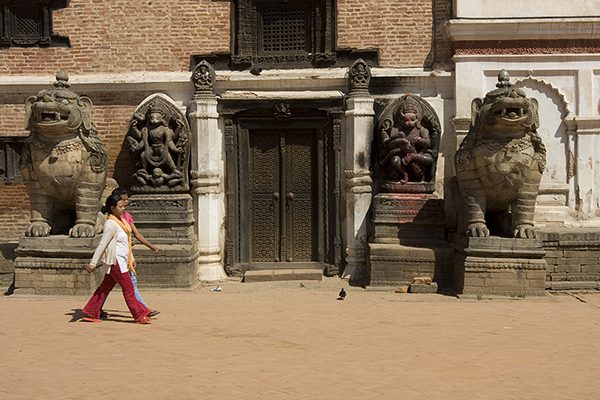
Enjoy a dawn Mt. Everest-view flight guided by a Sherpa Climber. These turbo-prop pressurized aircraft have been specially outfitted with large viewing windows (every passenger has a window seat) and follow a flight path that parallels the high Himalaya all the way to Everest and back. Your Sherpa guide will keep you informed of all the names and climbing routes of the peaks as you fly by them. On return to your hotel, have breakfast with the Sherpa Guide and get all your questions on climbing Everest answered.
Although Nepal is the world’s only Hindu kingdom, the Buddhist faith is prevalent throughout the country. Indeed, some of Kathmandu’s most renowned sites are Buddhist. The eyes of the Lord Buddha gaze serenely upon the Kathmandu Valley from atop the photogenic stupa at Swayambhunath, also known as the Monkey Temple, for reasons that will become apparent when you visit. Swayambhunath is steeped in mythology, linked to the bodhissatva Manjushri, with historical links back to the 5th century. You can climb the stupa’s 365 steps with Buddhist pilgrims and join them in their ritual circumambulation. Views of the Kathmandu Valley from Swayambhunath are spectacular.
The large Buddhist stupa at Bodnath, a World Heritage Site, is equally renowned. The stupa is one of the world’s largest, dating back to the 6th century. Located on the old trade route from Nepal to Tibet, Bodnath is also home to a sizeable Tibetan community and is a wonderful place to witness traditional Buddhist ritual, as well as to shop for Tibetan arts and crafts.
Kathmandu is also home to the great Hindu temple atPashupatinath, located on the banks of the Bagmati River. This is a major pilgrimage site for the followers of Shiva, drawing Hindu faithful from around the world. Although the temple is off-limits to non-Hindus, travelers can still visit the temple precincts and view the temple from the opposite bank of the Bagmati. From here, one can see the temple’s cremation ghats and witness firsthand the Hindu cycle of life.
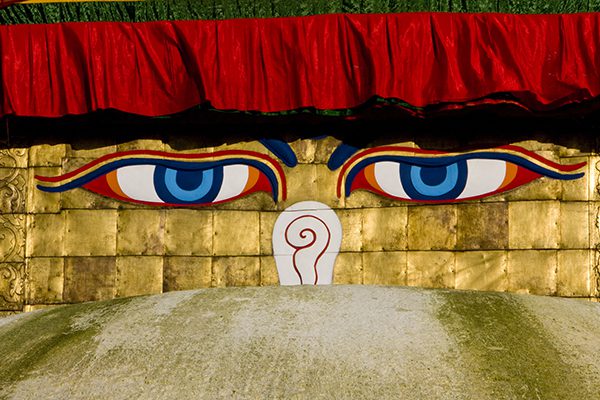
Fly to Pokhara this morning. Nestled in the Pokhara Valley, the city of Pokhara is surrounded by the towering Himalaya, including several of the range’s legendary peaks – Dhaulagiri, Manaslu, the iconic fish-tail peak of Machhapucchare, and of course, the redoubtable Annapurnas. Spend the remainder of the day exploring Pokhara and walking around the bazaar.
(Fishtail Lodge; B)

Revel in the glory of the mighty Himalaya as you visit sites and go on hikes around Pokhara; your guide can discuss specific options with you. Early morning, row across the lake and then hike up to the World Peace Pagoda giving you a bird’s eye-view of Pokhara City and the Valley. A short (1- to 1.5-hour) strenuous hike, almost all of it straight uphill. There are a hundred Peace Pagodas built around the world and this one in Nepal was actually the 71st Pagoda that was constructed. This project initiated soon after World War II by Nichidatsu Fujii, a Japanese monk, who was greatly inspired by Mahatma Gandhi, to inspire World Peace. There are three Pagodas built in the U.S. – San Francisco; Grafton, NY; and Leverett, MA. On the way back across the lake stop at the very active Parahi temple, built on a small island in the middle of the lake.
Return to Kathmandu. Delve deeper into the history of the Kathmandu Valley, visiting the ancient temple city of Bhaktapur and nearby Patan, including the rug-weaving center of Refugee Tibetans. The evening is at your leisure.
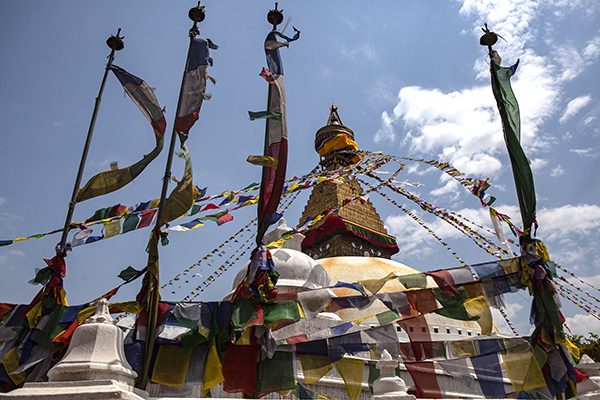
Your flight to Bhutan is parallel to the Himalayan range and one can see Everest, Makalu, and Kanchenjunga if the weather is clear. As you enter the Paro Valley, you will sweep past forested hills with the silvery Pa Chu (Paro River) meandering down the valley below. Paro Dzong (fortress) and Ta Dzong (watchtower) on the hills above the town will be a fine sight. Your guide will meet you at Paro airport and will transfer you to Bhutan’s capital, Thimphu, an exciting blend of tradition and modernity. The afternoon is at your leisure.
(Zhiwaling Ascent; B, L, D)
Your full day of sightseeing starts of with a visit to the market, where everyone goes to buy fruits and vegetables, rice, grains, chilies and other fresh foods. The crowded stalls offer many colorful local items such as yak tail dusters, butter teacups, turquoise from Tibet and musical instruments.
Visit the Institute for Zorig Chusum (commonly known as Painting School), where students undertake a six-year course on the 13 traditional arts and crafts of Bhutan, and continue onto the Textile and Folk Heritage Museums. These museums, both of which opened in 2001, provide fascinating insights into Bhutanese material culture and way of life.
The third king, His Majesty Jigme Dorji Wangchuck, as a monument to world peace and prosperity, envisaged the construction of the National Memorial Chorten. Completed in 1974 after his untimely death, it is both a memorial to the Late King (“the Father of Modern Bhutan”) and a monument to world peace. The paintings and statues inside the monument provide a deep insight into Buddhist philosophy.
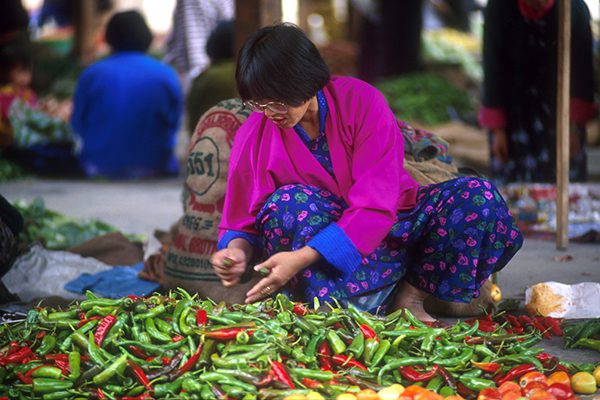
Begin your drive to Punakha via Wangduephodrang. You will drive by what remains of the Wangduephodrang (or Wandgi) Dzong, sitting atop a hill at the confluence of the Punakha Chu and Tang Chu rivers. It was the town’s most visible feature and suffered great damage in a fire in June 2012. You arrive Punakha early afternoon, and will visit Punakha Dzong, a massive structure built at the junction of two rivers. Punakha was the capital of Bhutan until 1955, and still serves as the winter residence of the monk body. The first King, Ugyen Wangchuck, was crowned here in 1907. The fortress has withstood several damages from fire, earthquake and flood. The latest flood of October 1994 caused great damages to the fortress but miraculously spared the statue of Buddha Jojampa.
(Dhensa Resort; B, L, D)
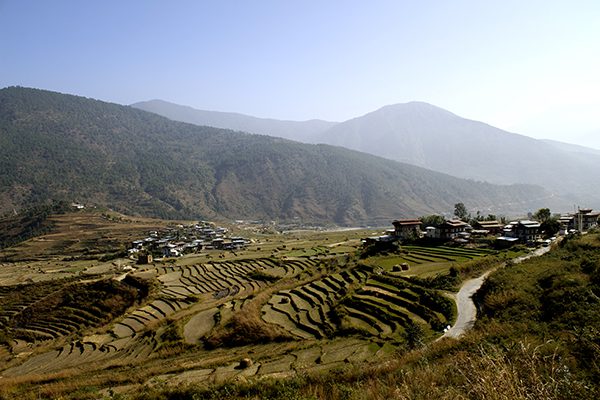
After breakfast, you embark on a walking excursion to Chimi Lhakhang, situated on a hillock in the center of the valley, which is dedicated to Lama Drukpa Kuenley, who in the late 15th century used humor, songs, and outrageous behavior to dramatize his teachings. Due to this, he is also known as the “Divine Madman.” This temple is also known as the temple of fertility. It is widely believed that couples that do not have children are usually blessed with a child soon after praying at the temple. It is a 30-minute walk across a field from the road to the temple. The trail leads across rice fields to the tiny settlement of Pana, which translates as “field.” The trail then follows a tiny stream downhill to Yoaka and across more fields before making a short climb to Chimi Lhakhang.
In the afternoon you take a beautiful hike to the regal Khamsum Yuelley Namgel Chorten, which was built to remove negative forces and promote peace, stability and harmony in the changing world. The Chorten dominates the upper Punakha Valley with commanding views across the Mo Chu and up towards themountainous peaks of Gasa and beyond.
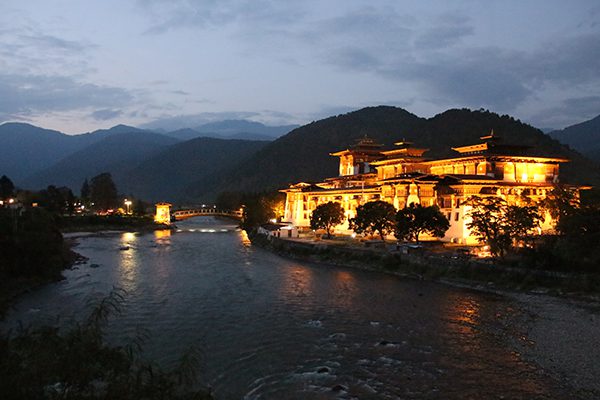
After an early breakfast, you drive up to Dochu-la pass (3,088 meters/10,130 feet) stopping briefly here to take in the view and admire the chorten, mani wall and prayer flags that decorate the highest point on the road. If skies are clear, the following peaks can be seen from this pass (left to right): Masagang (7,158 meters), Tsendagang (6,960 meters), Terigang (7,060 meters), Jejegangphugang (7,158 meters), Kangphugang (7,170 meters), Zongphugang (7,060 meters), a table mountain that dominates the isolated region of Lunana, and, finally, Gangkar Puensum (7,497 meters), the highest peak in Bhutan.
After checking in to your hotel (which offers a view of Taksang Monastery), you leave to visit Ta Dzong, originally built as a watchtower, which now houses the National Museum. The extensive collection includes antique thangka paintings, textiles, weapons and armor, household objects and a rich assortment of natural and historic artifacts. Walking down the trail, you will come to Rinpung Dzong (“Fortress of the Heap of Jewels”), which has a long and fascinating history. Along the wooden galleries lining the inner courtyard are fine wall paintings illustrating Buddhist lore such as four friends, the old man of long life, the wheel of life, scenes from the life of Milarepa, Mount Sumeru and other cosmic mandalas.
(Zhiwaling Heritage; B, L, D)
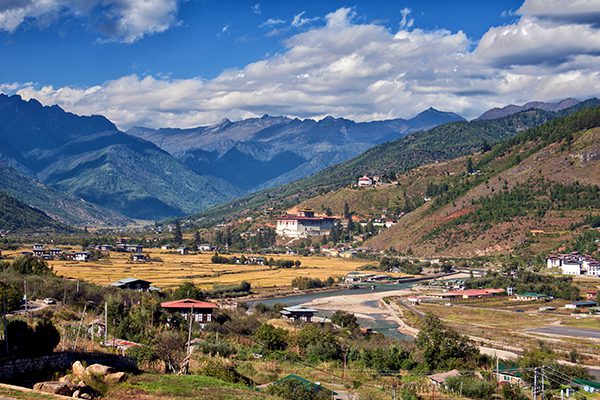
Experience the wonders of the Drukgyel Dzong, a ruined fortress where Bhutanese warriors fought Tibetan invaders centuries ago. The Dzong was destroyed by accidental fire in 1951 and left in ruins.
Explore the dzong and surrounding village, and on a clear day experience the spectacular view of the majestic Mt. Chomolhari (7,314 meters/23,990 feet). The snowy dome of sacred Chomolhari, the “mountain goddess,” is best seen in all her glory from the approach road to the Dzong. Along the way you will see the 7th-century Kyichu Lhakhang, one of the 108 temples built in the Himalayas by the Tibetan King Songtsen Gampo. The building of this temple marked the introduction of Buddhism to Bhutan.
You will also take an excursion to Taktsang, the most famous of Bhutanese monasteries. It is said that Guru Rinpoche arrived here on the back of a tigress and meditated at this monastery, hence its moniker of the “Tiger’s Nest.” The hiking excursion to themonastery’s viewpoint takes about five to six hours round trip.
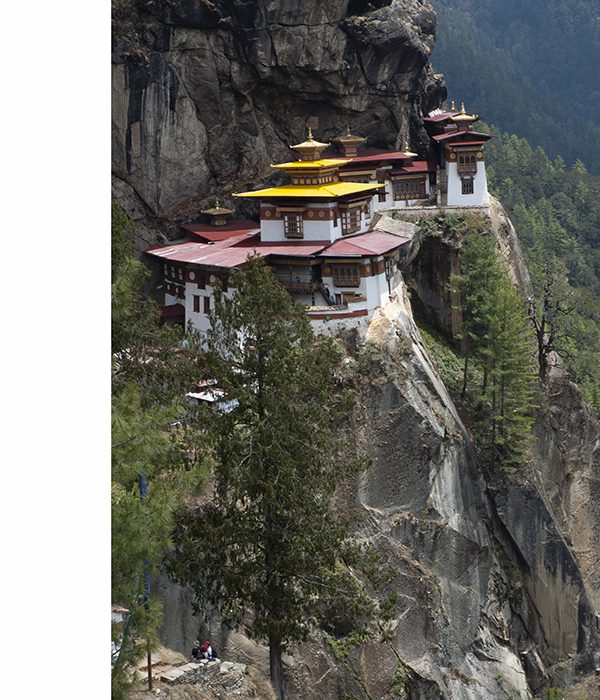
Transfer to Paro Airport for your flight to Bangkok and your flight home.
24/7 Custumer Support
- . (+01) 234-567-8910
- . [email protected]
- . 08:00am ~ 05:30pm (Mon to Sat)

Tibet 2024 Guide & Tips
Your Guide to Travelling to Tibet
What do you imagine when someone mentions Tibet?
Well, we know how the “Roof of the World” looks like in popular imagination. Seclusion. Peaceful yaks. Chanting monks in vermillion and saffron robes. A place that captures your senses. And then leaves you with new discoveries about you and the world itself. In fact, Tibet is much more than that. Yes, you’ll encounter everything found in pictures and videos online. But there are things no smartphone can capture.
An example of how Tibetan civilization honors the gods through temples.
Tibetan masks with various colors hanging on a door in lhasa.
Tibet is unique in its geography, culture, and biology. The history spans thousands of years back to the Neolithic. Throughout the vast times, Tibetans created a stunning civilization . You can’t find Tibet anywhere else on our planet. It’s there and waiting for you. If you have an adventurous spirit, then this is your next destination. Planning a trip consumes time. And some places need more effort than others. Tibet isn’t suitable for a spontaneous, book-a-day-before type of vacation.
- Where is the "Roof of the World"?
- Why visit Tibet?
- What's the best time to go there?
- How to get there?
- Where to stay?
- What are the best tours?
- Where to go and what to see?
- How to get the travel permit?
- How to pack?
In the following paragraphs, you’ll learn all you need to know about Tibet travel.
Just read on further:
Where is Tibet? – The “Roof of The World”
Tibet is a remote region on a plateau north of the Himalayan Mountains. The Tibet Autonomous Region stands in the westernmost part of China. The countries of Bhutan, India, Myanmar, and Nepal are in the South.
Did you know the average altitude is 4300 meters above sea level? For many of us, it’s the highest place we’ll ever visit in our lives.
Tibet and its plateau formed as a result of powerful geological forces. The Indian Subcontinent pushes into Asia. Currently, this creates the Himalayan Mountain Range. The range grows centimeter by centimeter every year.

Why is Tibet worth visiting?
You’ll have a kaleidoscope of memories. The beautiful and haunting monk chants in the monasteries. That hustle and bustle of the Barkhor Street Market. Even just the idea that you step into a truly iconic region in the world.

The curiosity to see the land and its symbols might pull you here. But the locals’ open and warm hearts and their gracious smiles leave impressions for a lifetime. As a fascinating destination, Tibet is one the must-visit list of many travelers.

What is the best time to visit Tibet?
People mostly visit Tibet from March to May and September to October. The days tend to be warmer and sunny. There might be light showers in the afternoon, but generally, there’s not much rainfall.
Lhasa is a great destination all year round. Autumn means beautiful scenery of an endless color variety. Winter helps you avoid the influx of Chinese tourists seen by other seasons. And it doesn’t get as cold as you might imagine.

Springtime is another great time to visit Lhasa. The awakening of nature provides a captivating backdrop for your stay. What about the summertime? Lhasa allows you to escape the hot weather. It’s true that there’s more precipitation, though. Luckily, the rainfall often arrives at night.
But some of the Tibetan highlights do have distinct favorable times to visit. Hiking Mt. Kailash is best from May to July and September to October. Schedule Everest Base Camp trek between May and June. Visiting Ranwu Lake works best from April to May and September to October.

Have any questions about the best visiting times for any other Tibetan sights? Feel free to message us now!
How to get to Tibet?
You may fly into Lhasa from anywhere in the world. Nowadays, even the most distant places aren’t more than three connections away. Any of the major Chinese cities do fine as your last stop before Tibet. Since Tibet is in China, you must pass through customs at any of the major hubs.
Are you already in China? Or have a bit more time? Taking a train from mainland China to Tibet is a special experience. The train from Beijing or Chengdu to Tibet moves on the highest train tracks in the world. This train route crosses through the Qinghai grasslands. The region contains plenty of wildlife.

Accommodation in Tibet
You’ll find a wide range of accommodation options in Lhasa. Depending on your budget, you can opt for a simple guesthouse or more upscale hotels. Keep in mind that the accommodation comfort level outside the major cities is basic. That said, in cities like Lhasa and Shigatse, you could expect the best hotels to easily reach four stars.

Guesthouses

This is a distinct type of accommodation that’s usually family-owned. Everyone in the household contributes to keeping the place running. Often, these guesthouses are called teahouses as well.
So, what could you expect from the experience? Guesthouses typically have multiple beds in one room. There is a public bathroom outside. Some hotels in big cities, like Lhasa and Shigatse, have both standard Western-style rooms and multi-bed guesthouse style provided for the clients.
In Rongbuk Monastery guesthouse, you are able to pick between single beds, one double bed, or multiple beds in one room. Another aspect concerns remote areas. When you trek 2-3 days around Mount Kailash, for example, the guesthouse is a movable plank house. It’s better to take your sleeping bag for hygiene and keeping yourself warm. In most guesthouses, you are able to order some basic food items. For example, some places cook fried rice, chowmein noodles, or Tibetan soup.

Are you planning to do some trekking? Expect plenty of nights spent in a tent. In many cases, the tents are large dome tents for backpacking. But when you do Everest Base Camp, you’ll probably get accustomed to wall tents. Generally, these wall tents have wooden frames. Compared to the dome tents, these structures have more space.
The porters set up the main tent as well. Usually, you’ll enjoy your meals in the main tent. And in the Everest Base Camp, you’ll encounter teashops and snack places set up in this type of tents.

What are the best tours in Tibet?
You can experience Tibet by participating in a variety of tours. In reality, there’s not a single best Tibet tour.
It’s all individual. The best option for you is to check what Tibet Group Tours are available.
What’s that one place you couldn’t leave Tibet without seeing it first? Maybe you have a bucket list of Tibetan sights. Check which tours come closest to reaching your dream trip.

But, for starters, you should decide whether you want to partake in a group or private tour. Private tours allow for a more intimate and tailored experience in the region. But they come with an expensive price tag. Group tours allow cutting costs without skipping any important sights.
Small group tours provide the perfect balance. You won’t be in a group so big that you’ll not even learn all the peoples’ names. But you’ll neither pay the steep fees of a private tour.

Best Tibet Group Tours
The next step is to pick the destination(s) and duration of your Tibet tour. There are many options to choose from.
8 Day Everest Base Camp Tour
5 day lhasa and yamdrok lake tour.
Some travelers even book more than one tour and spend some time in Lhasa between the tours.
Trekking Tour: 15-Day Mt. Kailash
Trekking is very popular in Tibet . The terrain provides plenty of challenges while the surrounding scenery rewards the strenuous activity. There are less hikers in Tibet compared to the neighbouring Nepal. And that’s just great because you’ll have more personal space to admire the dramatic landscapes.

Things to do and places to see
Don’t trust anyone who says they have the complete list of things to do in Tibet. There’s too many to count. And some of the moments and experiences aren’t something you could plan ahead. It’s just the magic that happens when you travel.
But in the following list, you’ll find some of the best things to do in Tibet in our opinion. Check out our blog for further information on the particular sights, activities, and things to do in Tibet.
Some of the best things to do in Tibet include…
Stunning lakes in Tibet
Yes, there are numerous lakes to be visited in Tibet. You could even say that lakes are as sacred to the locals as monasteries and temples. When you walk along the shores of one of these lakes, you’ll know exactly what we mean.

Consider visiting Yamdrok Yumtso. This lake is a stop along the popular drive from Lhasa to Gyantse. The trip allows you to eventually reach Everest Base Camp. There are many wonderful monasteries on the way as well.
The other lake highlights include Namtso in central Tibet and Peiku Tso. The former proves to be spectacular when you are lucky enough to have white peaks in the background. But the latter gets a water reflection of mighty Mt. Shishapangma standing at a dizzying height of 8,013 meters.
The timeless classic: Everest Base Camp
Everest Base Camp (EBC North). This is the legendary destination in Tibet. You could pair EBC with a visit to the Rongbuk Monastery.
We recommend doing an overnight stay. You’ll get up close and personal with the world’s tallest mountain. A beautiful experience of a lifetime to be savored!

Unforgettable Jokhang Temple

Monasteries all over Tibet
There are visitors who come to Tibet only for the monasteries. Many stunning buildings await, but there are a few must-visit ones out there as well. Three Great Temples are made up of three monasteries: Ganden, Drepung, and Sera. Visit at least one of these!

And then there’s Rongbuk Monastery. Rongbuk is a very special place because it’s the highest monastery in the world. The place is made up of a working monastery, and then an older one maintained by a solitary Lama. Rongbuk is located near the Everest Base Camp.
Getting the Tibet Travel Permit
You need a special permit to visit Tibet. In most cases, a tour company can process all the permits for you. Still, let’s take a look at some useful tips concerning Tibet permits.
Tibet Permit Tip #1: Getting the permit
Taking a plane to Tibet? Hopping on a train? The particular mode of transport doesn’t matter. You need a Tibet Tourism Bureau (TTB) permit. You can only get this by using a guide along with a travel company for the duration of your trip.
Also, you need private transport for trips outside of Lhasa. Travel in Tibet without the supervision of a licensed guide isn’t possible.

Tibet Permit Tip #2: Extra permits
Tibet permit tip #3: timing for the permit.

Timing is crucial when you plan your itinerary. Keep in mind that your tour company needs 14 days at minimum to arrange the permits and post you the TTB permit. Important reminder: you still require the permit if your flights are only within China.
Tibet Permit Tip #4: Extra permit for Kathmandu, Nepal
You could travel overland from Kathmandu (Nepal) as well. Doing this requires an extra permit. You might find that continuing your journey into China could become difficult after obtaining the extra permit.

What to prepare for Tibet?
Let’s take a quick look at the essential things you need to have for your Tibet trip. You’ll find a longer list of packing suggestions in our blog.
Travel documents
Sort out all your travel documents beforehand. You need to have Chinese Entry Visa. Additionally, you have to get a Tibet Travel Permit (TTP). Only a registered tour operator can help you with the latter.
Proper clothing for Tibet exploration
This is a very important aspect to consider when packing for your Tibet tour. The temperature can make a huge drop in the nighttime. When staying in simple guesthouses or tents, it’s better to prepare accordingly.
Clothing should be layered. Think of an onion when packing your clothes! Even outside the winter, weather can sometimes vary a lot during a single day. Also, the temperatures and the general atmosphere changes when you gain or lose altitude.

Electronics and adaptors

Take an adaptor because you may encounter three different types of plugs in Tibet. Take your camera or a smartphone with a good camera. There are plenty of amazing shots to be taken in this region.
Personal hygiene
Take all the personal hygiene products with you. These include shower gel, shampoo, toothpaste, etc. Definitely take a hand sanitizer gel. This comes handy in places where you don’t have any chance to wash your hands. Also, it’s smart to have some extra toilet paper and wet wipes with you while traveling in Tibet.
The bottom line of travelling to Tibet
Travelling to the “roof of the world” is an incredible experience. You want to plan ahead because it’s not a book-and-go destination. Visitors need an official permit along with a local guide.
In this guide, we outlined all the basics you need to know when planning a trip to Tibet.
Became excited? Tibet is just a click away.
Select the tour and submit your information
*Select your preferred tour from the list and we’ll get back to you with the available departure dates!
- 0086-891-6679450
- Everest Base Camp Tour Mount Kailash Tour Lhasa Tour Top 7 Tibet Tours Tibet Private Tour
- 4 Days Lhasa City Essential Group Tour from USD490 8 Days Lhasa to Everest Base Camp Group Tour from USD930 9 Days Lhasa Shigatse Mt.Everest Namtso Tour from USD1240 15 Days Mt.Everest & Mt Kailash Group Tour from USD1990
- 7 Days Lhasa Mt. Everest Kathmandu Overland Group Tour from USD980 12 Days Lhasa Mt Everest & Mt Kailash Kathmandu Group Tour from USD1990 13 Days Classic Tibet Nepal Bhutan Group Tour from USD2706 13 Days Tibet Nepal Nature Scenery Tour from USD2810
- Beijing and Tibet Tours Shanghai and Tibet Tours Chengdu and Tibet Tours Xian and Tibet Tours Guangzhou and Tibet Tours
- 6 Days Xining Lhasa Train Tour from USD880 6 Days Chengdu Lhasa Train Tour from USD785 7 Days Beijing Lhasa Train Tour from USD1040 8 Days Shanghai Tibet Train Tour from USD1235 Trains to Tibet
- Flights to Tibet
- Tibet Attractions
- Tibet Hotels
- Tibet Weather
- Tibet Permit
- When to Travel
- Plan a Trip
- How to Get to Tibet
- Travel Tips
- Tibetan New Year Tibetan Festivals Customs and Traditions Tibetan Food Tibetan Buddhism
- Bhutan Nepal Tibet Tours Nepal Tours Bhutan Tours Lhasa to Kathmandu India to Tibet
- Tibet Travel Tips
Tibet and Nepal
- Tibet Travel Guide
- Introduction to Tibet
- Reasons to Visit Tibet
- Top Things to Do
- Tibet Tour Packages
- Attractions
- Tibet Travel Permit
- Weather & Climate
- Things to Know Before Going
- Plan a Trip to Tibet
- How to Visit Tibet
- Best Time to Visit Tibet
- Avoid Altitude Sickness
- Packing List
- Tibet Landscape
- Tibetan Culture
- Tibetan Festivals
- Tibetan Buddhism
- Tibetan People
- Tibet Currency
- Shopping in Tibet
- Tibetan Food
- Etiquette and Taboos

- Last Updated: 2024-05-20
Tibet and Nepal are two wonderful tourist destinations of the Himalayas. They are adjacent to each other and are both landlocked. Because of this proximity, they have many commonalities. Geographically, they share a sizeable portion of the western Himalayas, including the majestic Mt. Everest—the highest mountain in the world. Culturally and historically, they share some commonalities likewise.
Yet, despite these similarities, Tibet and Nepal have remarkable differences. These differences are obvious in their culture, religious practices, topography, weather, travel highlights, travel policies, and the ways of life of their people. You’ll readily notice these similarities and differences if you are going to visit both or either of the two.
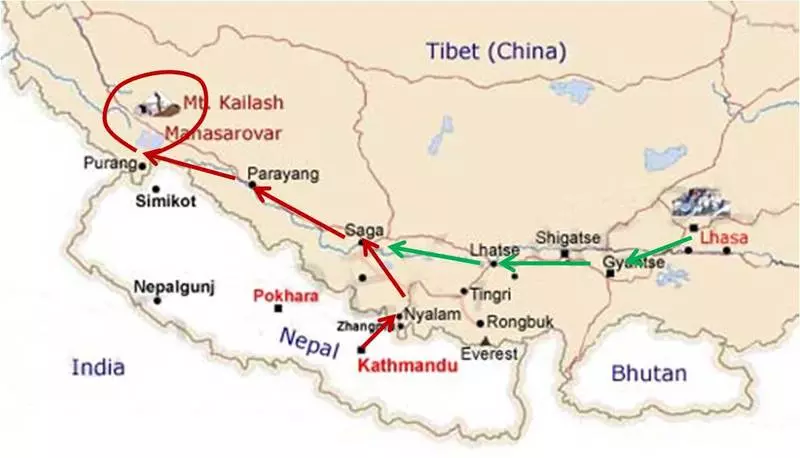
Similarities Between Tibet and Nepal
The similarities between Tibet and Nepal are borne of their proximity to each other and their long history of being trade partners throughout the centuries. Here are some of their most obvious similarities:
Tibet and Nepal Both Have High Average Elevations
Both Tibet and Nepal are situated high up in the Himalayas. Tibet is on the northern side of the Himalayas, while Nepal is on the southern side. Both also claim Mount Everest and share that distinctive tag of having the highest mountain in the world. Tibet has an average altitude of more than 4,000 meters (13,123 ft), while that of Nepal is 3,265 meters (10,712 feet).
In Tibet, the altitude of the northwest is higher while the southeast is lower. There are five mountains with an elevation of more than 8000 meters(26,246 feet).
Nepal may have a lower average elevation than that of Tibet, but its average elevation is still remarkably high. Nepal might have the most complex terrain in the world. There're eight mountains with an elevation of more than 8000 meters (26,246 feet). While in Kathmandu, the altitude is just 1300 meters (4,265 feet). This kind of feeling is really wonderful so many tourists regard gliding in Pokhara, Nepal as the most exciting experience in the world.
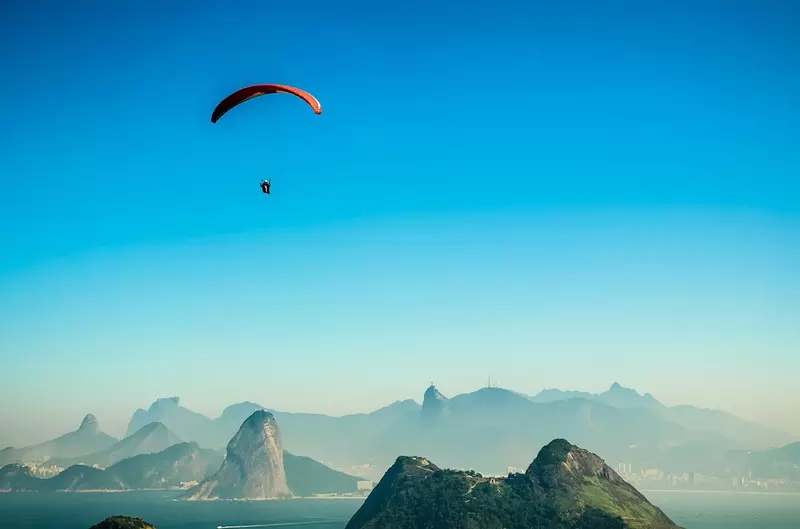
Both are Deeply Influenced by Buddhism!
Buddhism has pervaded the way of life of the Tibetans for more than a thousand years since its introduction in the 7th and 8th centuries AD. Since then, it has greatly imbued the culture and way of life of the Tibetan people to a point that it is almost impossible to extricate or separate Buddhism from the Tibetans’ way of life. Around 78.5% of the Tibetans are Buddhists.
Nepal is the birthplace of Siddhārtha Shakyamuni who was born in Lumbini, Nepal. Despite this fact, Nepal is less Buddhist than Tibet with only 10.74% of Nepal’s population being Buddhist. Moreover, Buddhism in Nepal is second only to Hinduism in terms of the number of adherents. About 86.2% of the local people believe in Hinduism, which is the major religion in Nepal.
Buddhism, however, has played a major role in the tourism of both Tibet and Nepal. Every year, thousands of devotees and adherents of Buddhism visit Tibet and Nepal to do a pilgrimage to some of the sacred sites of both places. Thousands of travelers visit Nepal to see the Swayambhunath Stupa, Swayambhu Maha Chaitya, and Boudha Stupa. In Tibet, however, many tourists and pilgrims visit Tibet’s famous Buddhist monasteries and temples like the Jokhang Temple, the Potala Palace, Mt. Kailash, Lake Manasarovar, and other monasteries. Pilgrims usually do the Kora around these sacred sites.
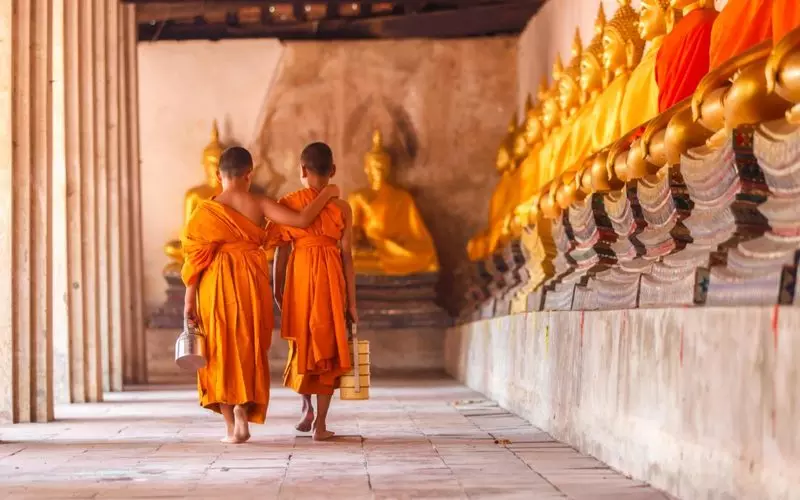
Differences between Tibet and Nepal
Despite the similarities between Tibet and Nepal, you will readily notice the remarkable differences between these two neighbors upon closer scrutiny. Here are some of the obvious differences between these two lands:
Difference in Geography
As mentioned above, the geographical difference between Tibet and Nepal is remarkable. Tibet is mostly situated in the Tibetan Plateau, and its climate is somewhat dry and harsh. Tibetan Plateau features varied landscapes that are generally shaped by its high attitude. In Tibet, you'll see high-altitude lakes, vast prairies, open plains, and snow-capped mountains.
Geographically, Tibet can be divided into two regions called "the lake region” and the “river region.” The lake region, in northwest and west Tibet, has more nomadic inhabitants while the river region in east, west, and south Tibet is more agricultural.
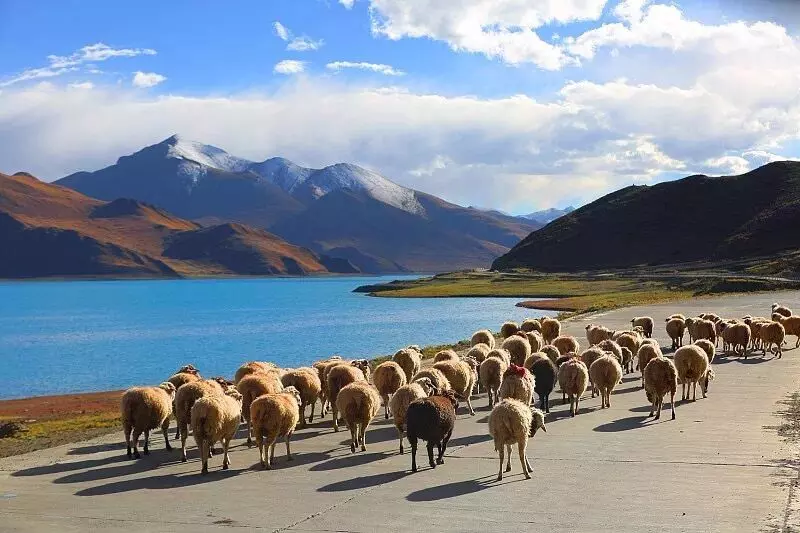
Nepal, on the other hand, sits on the other southern side of the Himalayas. Hence, the landscape of Nepal starts with the massive Himalayas that stretches from east to west in north Nepal. Then, the landscape gradually dips as you move south. Further down south, the landscape slopes down to an altitude of 1,000 meters and gradually eases out toward Nepal's lowland border with India.
Difference in Religion
There's a stronger Buddhist atmosphere in Tibet. More than three-quarters of the population are devout Tibetan Buddhists. Although there are still some followers of Bon - the ancient religion in Tibet , Buddhism has long been the official religion of the land. Because of the great majority of Buddhists in Tibet, Buddhism has greatly suffused the way of life of the Tibetans. In fact, it is not superfluous to say that it is hard to separate their way of life from Buddhism.
Nepal is predominantly influenced by Hinduism. This religion has pervaded Nepal's social structure, although Buddhism is also a major influence in Nepal. Hence, you’ll see Hindu temples sitting side by side with Buddhist temples in Nepal.
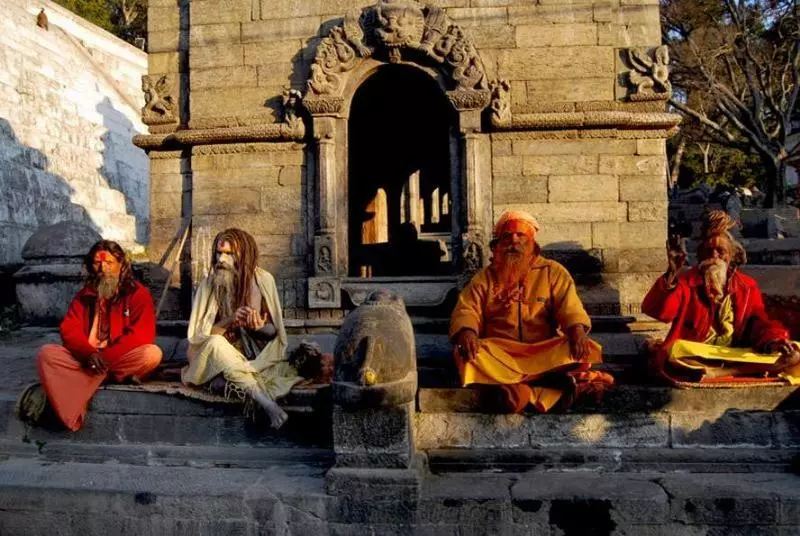
Difference in Culture
Several factors brought about the present culture of Tibet. Its partial isolation from the outside world played a crucial role in shaping its culture. Furthermore, the pervasive influence of Buddhism has colored every facet of Tibetan life. Buddhism also evolved on its own in the Tibetan Plateau leading to the development of a unique Tibetan Buddhism.
Nepali Culture, on the other hand, is more influenced by the subcontinent of India throughout the centuries, though Tibet also played a role in the shaping of Nepali culture. Tibetans and Nepali also have different languages. Moreover, their festivals, although both religious, also have a tinge of differences from each other.
Difference in Weather
There is also a significant difference between the climate of Tibet and Nepal. Since Tibet is isolated by the Himalayas, it only catches a minimal amount of rainfall throughout the year. The mountain ranges usually catch much rainfall before rain clouds reach the Tibetan Plateau. So, most of Tibet is either desert steppe, permafrost, or tundra.
Much of Tibet generally experiences frost for six months every year. Its lakes, especially, those of the highest lakes, have ice from the months of October to March. Tibet's weather is also characterized by strong sunshine, cold and dry air, and a huge difference in night and day temperatures. Moreover, its high altitude results in lesser oxygen, thin air, and a lower boiling point for water.
On the other hand, Nepal's latitude is almost the same as that of the state of Florida which is tropical. And, because of its varied elevations, it has eight distinct climate zones ranging from tropical to constant snow. The tropical zone is in the part of Nepal that is lower than 1,000 meters where you will find the best papayas, mangoes, and bananas. This region is called "Terai."
Nepal also has a subtropical region. This subtropical region has an elevation of 1,000 to 3,300 meters, which is roughly 22% of Nepal's land area. It also has a subalpine zone with an elevation from 3,000 to 4,000 meters, and an alpine zone with an elevation that ranges from 4,000 to 5,000 meters. In the Alpine zone of Nepal, there are very few inhabitants.
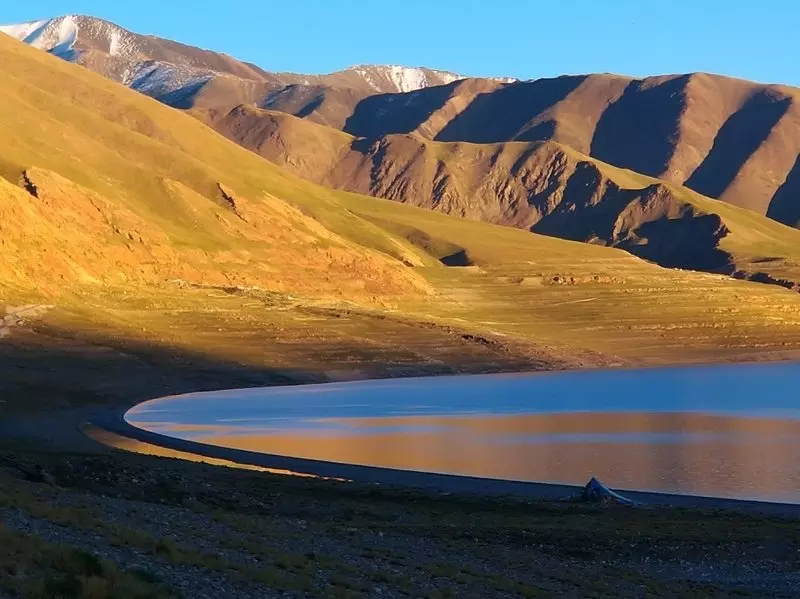
Different Tourism Seasons
Because of the radical difference in their climate, Tibet and Nepal have different peak tourism seasons. The main travel season in Tibet is from spring to autumn with peak periods from April to October. Its off-travel season is from November to January.
On the other hand, Nepal's northern regions have peak travel seasons from April to May as well as September to October. The southern regions have peak tourism season from November to March.
Different Travel Policies
Tibet and Nepal have different travel policies. Tibet has stricter policies when it comes to tours inside Tibet. First, you need to have several documents before you can start touring this land. These necessary documents include the Tibet Travel Permit and Chinese Visa . However, if you are traveling to areas near the borders of India or Nepal, you need to have a Frontier Pass , while if you are traveling to militarized areas like Ngari or Nyingchi, you need to have a Military Permit . Lastly, you can only have your Tibet tour organized by a travel agency in Tibet, and this tour should be pre-arranged.
Nepal, on the other hand, has a more liberal travel policy. Travelers can enter the country with a simple tourist visa. You can get this visa upon arrival in Kathmandu, applying with your own passport. Moreover, with this visa, you can tour any place in the country with little or no restrictions at all.
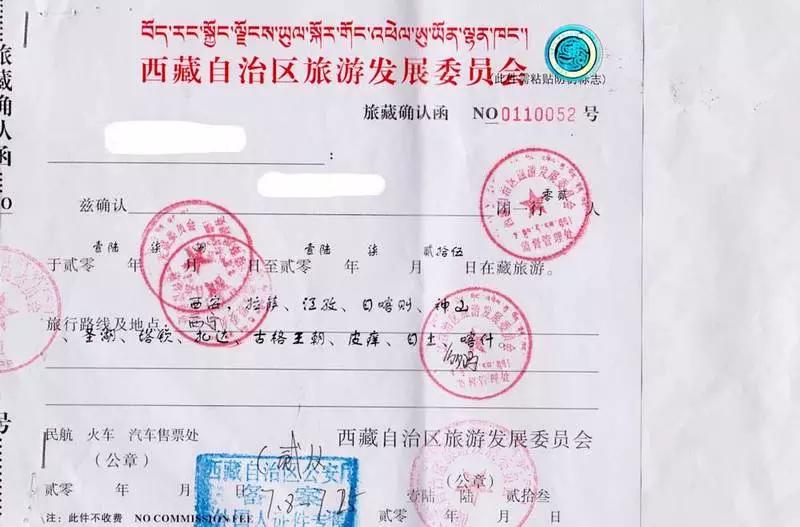
Different Ways of Reaching the Capital Cities of Tibet and Nepal
Tibet’s capital is Lhasa while that of Nepal is Kathmandu. Both have their own airports. Tibet has the Lhasa Gonggar Airport and four other airports in the different Tibetan prefectures. Nepal has Kathmandu’s Tribhuvan International Airport .
Tibet has a railway system coming from mainland China. Its capital, Lhasa, is reachable via the Qinghai-Tibet Railway. So, you have the option of riding a train from mainland China to Lhasa. Nepal, at present, has no railway system. So, you can only reach Kathmandu by bus, car, or by plane.
Between Kathmandu and Lhasa, you can either take a flight or have an overland tour via Gyirong Port , along the Sino-Nepal Highway .
Main Tourists Attractions of Tibet and Nepal
Tibet is an amazing place to visit because of its rich history, Buddhism culture, and awesome natural sceneries and wonders. It has Lhasa with the Potala Palace and the Jokhang Temple, which are both UNESCO World Heritage Sites. Tibet also has sacred lakes like Namtso, Lake Yamdrok, Lake Manasarovar, and many more. Plus, it has famous monasteries like Rongbuk, Samye, Tashilhunpo, Ganden, Drepung, and Sera Monasteries. It also has Mount Everest—the highest mountain in the world, and Mount Kailash—the most sacred mountain in Asia. Especially, after the completion of the Qinghai-Tibet Railway , millions of tourists annually flock to Tibet from mainland China and other parts of the world.
Nepal has Kathmandu— its capital city—which is also a famous tourist destination. This city is so unique that you will never find another city with such an exotic atmosphere as this in the world. Kathmandu also has many UNESCO World Heritage Sites such as Durbar Square and Boudhanath Stupa (Bodhnath). Nepal also has Bhaktapur - a Royal City and Swayambhunath (Monkey Temple) on a hilltop west of Kathmandu and many other tourist sites that deserve a visit. By the way, Nepal is the world's top 1 trekking paradise. Especially, those routes that lead to Annapurna Region and Mount Everest Base Camp. Plus, Nagarkot, a village facing the Himalayas, is regarded as the best of all lookout of the Himalayas. In some parts of Nepal, tourists also enjoy wilderness activities like mountain biking, rock climbing, bungee jumping, trekking, bird watching, paragliding, hot air ballooning, and hiking.
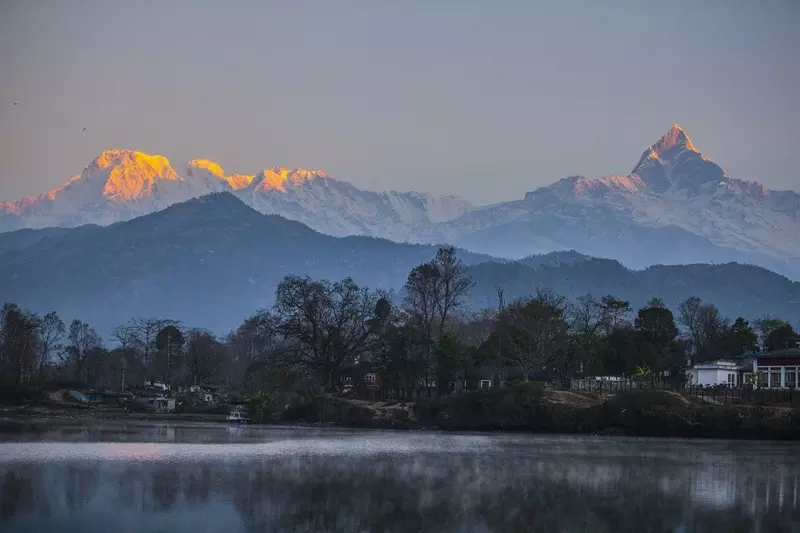
Some of the best tour packages in the Himalayas include a tour of both Tibet and Nepal . These tour packages offer the best of both lands and are the most sought-after tour packages in this part of the world. These tour packages usually start from Tibet and move to Kathmandu for your better adaption to the altitude.
These tours usually take 7~13 days and may include an epic journey across the scenic Kathmandu Valley to the mesmerizing sceneries of the Tibetan Plateau. They are also mostly cross-border tours that let you see the rural areas and other cities of Tibet and the other towns of Nepal. Moreover, these tours let you visit the Everest Base Camp (EBC) and enjoy the amazing scenery of the friendship highway along the way.
Related Articles
Nepal Visa Tourists can get a Nepal visa on arrival when reaching Kathmandu airport or road borders at Birganj, Sunauli, etc. $30 for a 15-day entry Nepal tourist visa.
Nepal Tibet Map Nepal and Tibet are located on the south and north side of the Himalayas. Here're practical travel maps of the world's two top tourist destinations.
China Group Visa(Tibet Group Visa) To enter Tibet from Nepal, you need a China Group visa from the Chinese Embassy in Kathmandu with your passport, an invitation letter and one headshot.
Travel from Lhasa to Kathmandu, by Land or by Flight? Traveling from Lhasa to Kathmandu by land, you will ride 1100km and enjoy scenic spots along Friendship highway. And traveling by flight is more comfortable.
Nepal to Tibet Transportation Traveling from Nepal to Tibet involves various transportation options depending on your preferences, budget and routes.
How to Travel from Nepal to Tibet? Traveling from Nepal to Tibet is a great way to enjoy the Buddhist culture and Himalayan landscapes. Currently, you can go by plane or by road.
Travel From Kathmandu to Everest Base Camp To Everest Base Camp in Nepal, you can fly to Lukla then trek there. To EBC in Tibet, you can fly to Lhasa then drive there or travel overland from Kathmandu.
Kathmandu to Lhasa Flight Flights from Kathmandu Tribhuvan International Airport(KTM) to Lhasa Gonggar Airport(LXA) cover a distance of 600km and take 90 mins. Check more!
Email response within 0.5~24 hours.
Sign up for our newsletter below. It's a great way to stay in touch with us and receive great news when we have them ready for you.
- Favorites 0
- [email protected]
- Newsletter signup

Great Tibet Tour is a local tour company based in Lhasa, Tibet. It was founded in 2005 and recommended by Lonely Planet as one of the best reputed local Tibet travel agencies.
With the great responsibility, professional know-how and passion for innovation, Great Tibet Tour endeavors to provide you with enjoyable, thoughtful service, and authentic culture discovery.
Nepal Tibet Tours - Best Tours for Tibet Nepal 2024
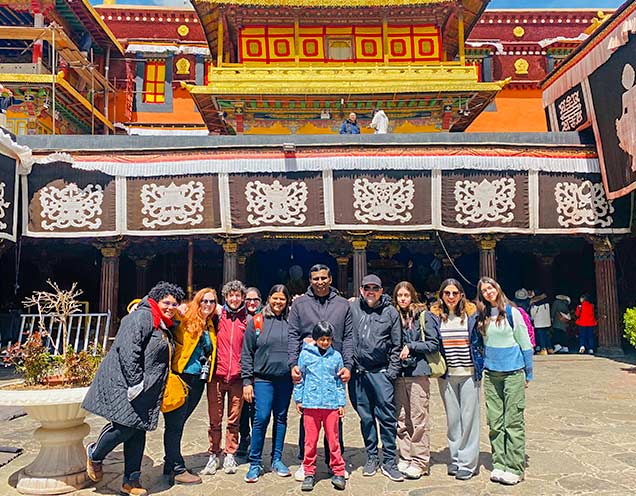
"Excellent Tour, best experience"
"A unique experience despite a difficult context thanks
to an experience team of organisers"
8 Best Tibet Nepal Tours
Looking for an in-depth exploration of Nepal and Tibet ? Why not experience the best of both destinations? You can spend 4-9 days exploring Kathmandu , Pokhara, Nagarkot, and Chitwan in Nepal , and then spend another 4-8 days visiting the highlights of Tibet , including Lhasa , Yamdrok Lake, Mount Everest, Shigatse, Namtso Lake and more. Combining Tibet and Nepal together will make your trip truly unforgettable.
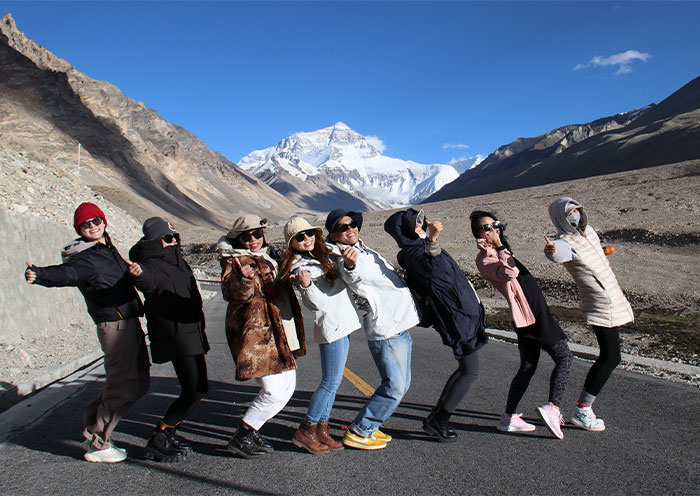
7 Days Classic Tibet Nepal Overland Tour from Lhasa to Gyirong via EBC
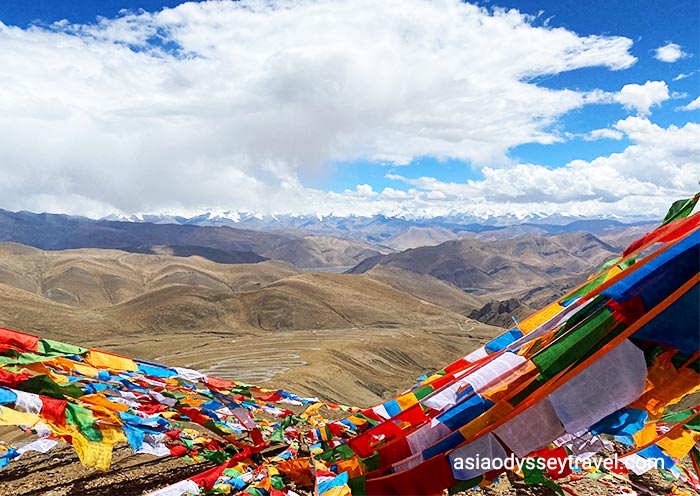
11 Days Tibet Nepal Overland Tour with Old Tingri to EBC Trek
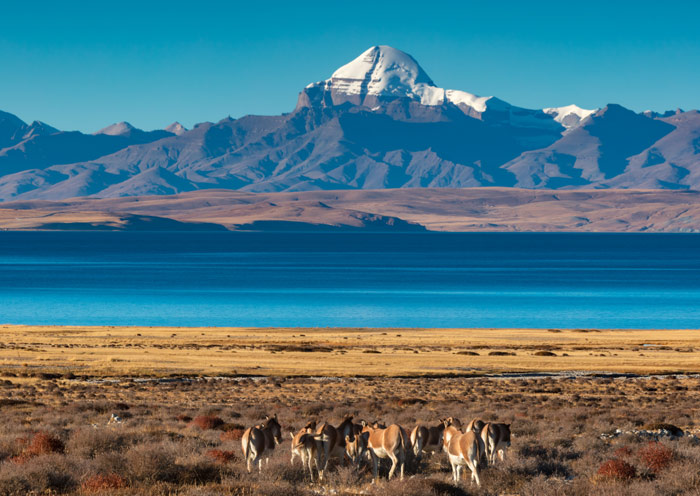
13 Days Lhasa to Kathmandu Overland Tour via Gyirong with EBC & Mount Kailash Trek
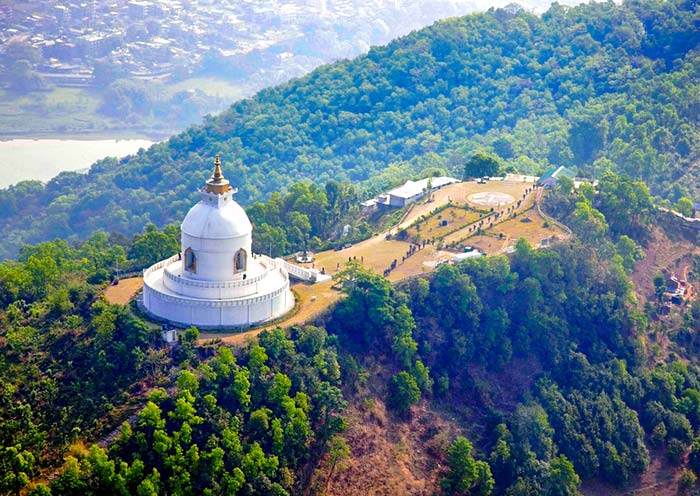
14 Days Tibet Nepal Overland Odyssey Tour (Classic Route)
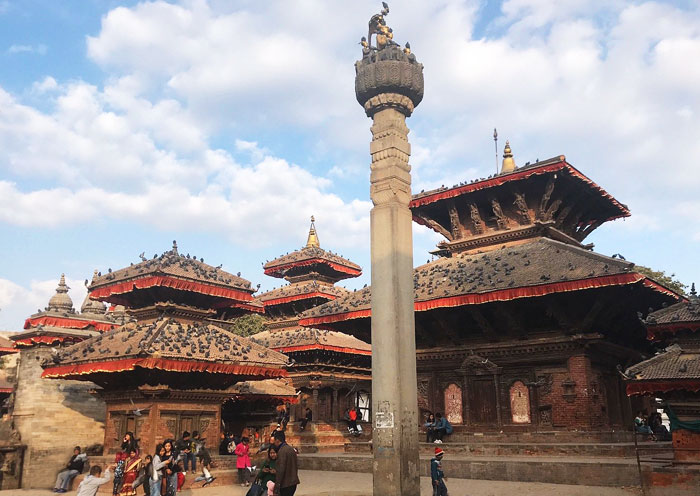
7 Days Kathmandu to Lhasa Overland Tour without EBC
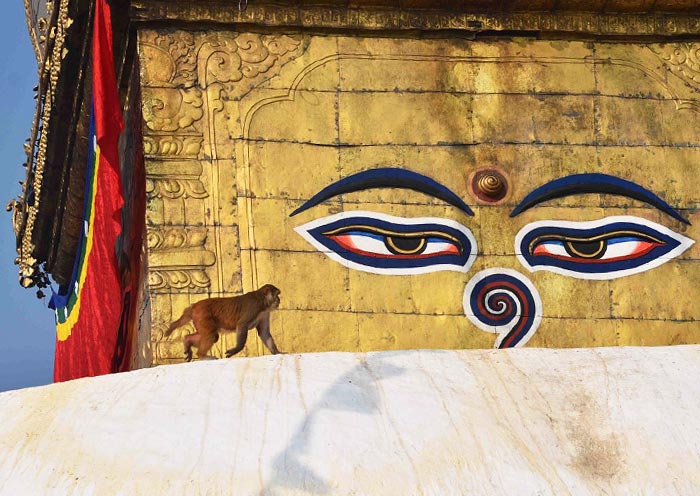
15 Days Classic Nepal & Lifetime Everest Base Camp Tibet Tour
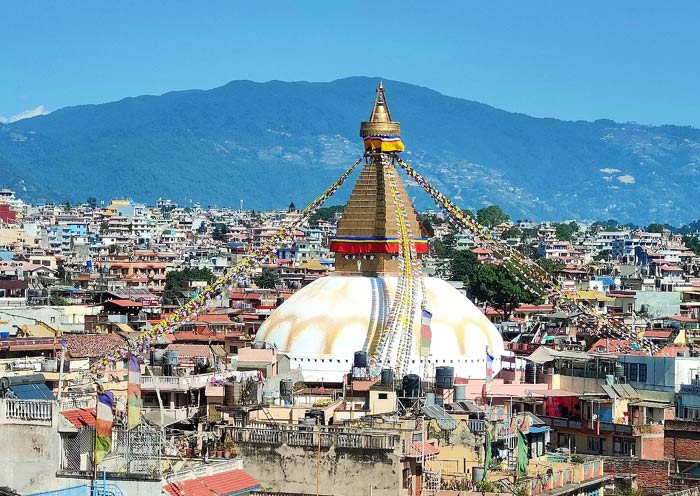
11 Days Best Nepal Tibet Overland Tour with Kathmandu, EBC & Lhasa
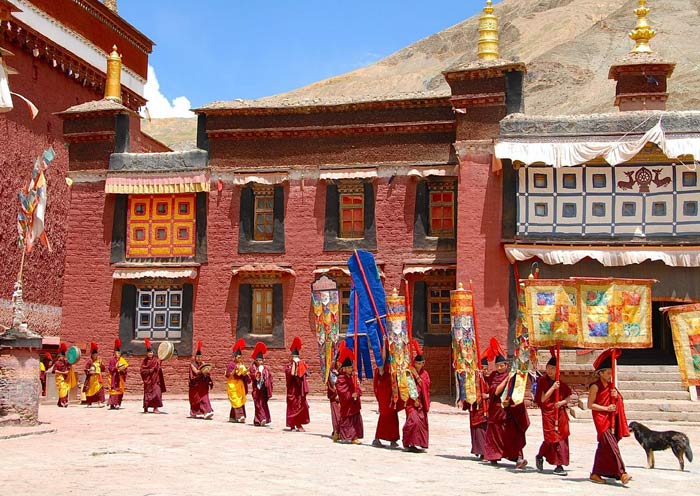
8 Days Lhasa, EBC to Kathmandu Overland Tour (Slow Pace)
Choose your nepal tibet tours by classification.
2024/2025 >>
You can travel from Lhasa to Kathmandu by overland or by flight. Select the following 3 Lhasa to Kathmandu tour packages ranging from 7 to 13 days to explore Tibet first and then enjoy your trip in Kathmandu. Best prices are guaranteed!
It is a popular choice to enter Tibet from Kathmandu, Nepal. Travelers can have an immersive cultural experience in Kathmandu by exploring “the City of Temples” and then reach Tibet by overland or by flight. Choose one of the 3 best tours from Kathmandu to Lhasa for a memorable experience.
Take an unforgettable journey through China , Tibet , and Nepal . Explore iconic Chinese cities like Beijing , Shanghai , Chengdu , and Xian before visit Tibet. Exit through the Gyirong Border to Nepal , or start your journey in Nepal and make your way to Tibet and cover highlights of China . Customize your tour at the best prices!
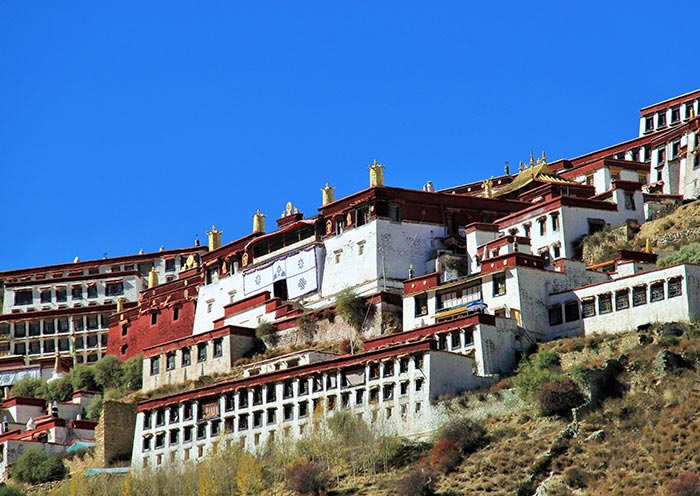
9 Days Ganden Monastery to Samye Monastery Classic Trek with Holy Lhasa Tour
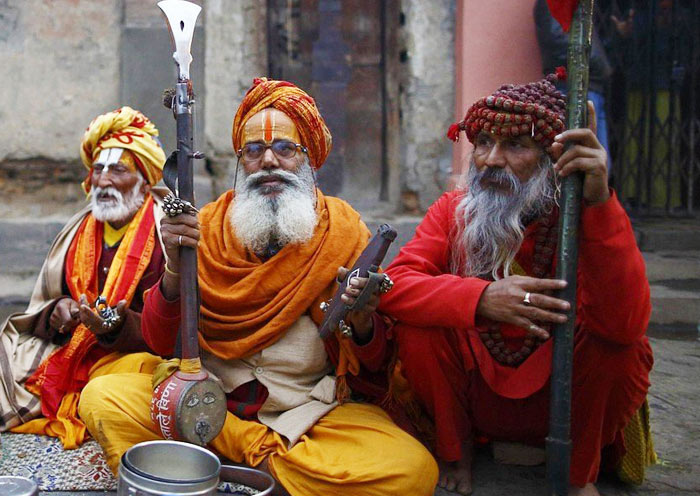
8 Days Kathmandu to Lhasa Overland Adventure Tour with EBC Experience
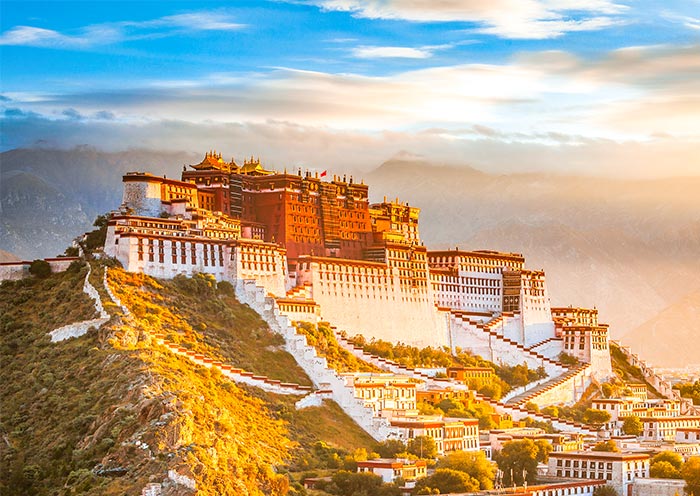
4 Days Tibet Lhasa Essence Tour from Kathmandu (by Flight)
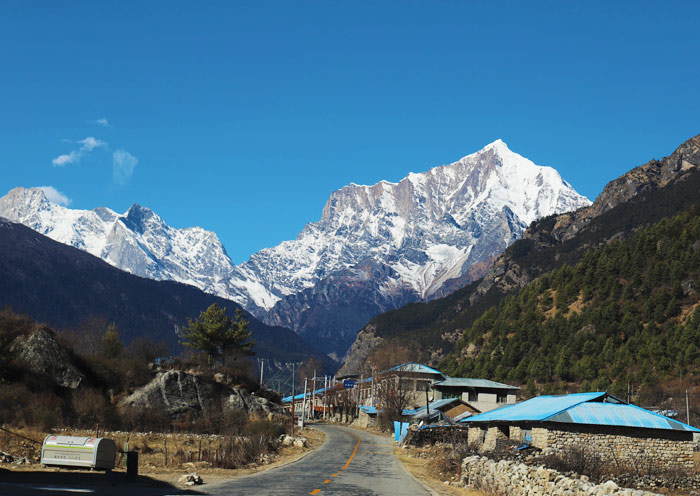
10 Days Tibet Nepal Tour from Xining to Lhasa & EBC, Overland by Gyirong Border
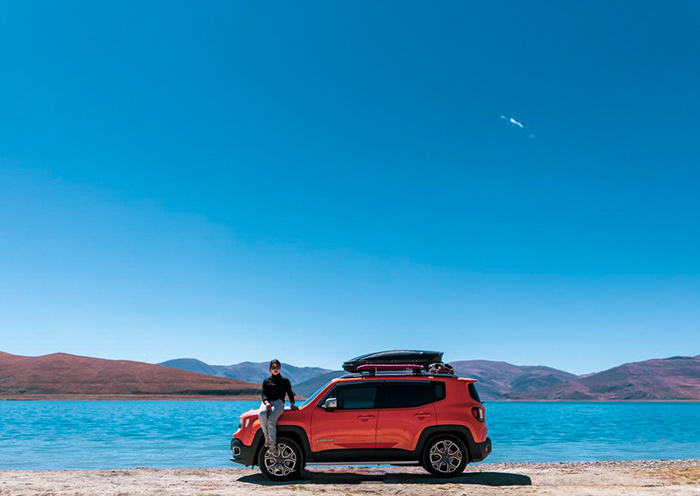
14 Days China Tibet Nepal Overland Tour with Great Wall, Terracotta & Mt.Everest
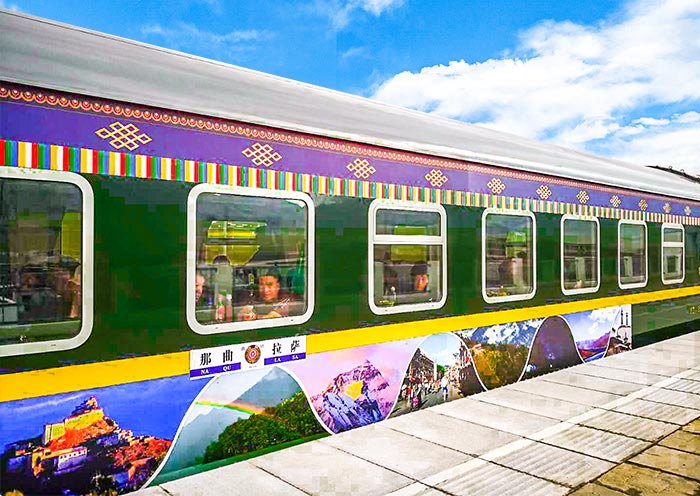
10 Days Chengdu & Lhasa to Kathmandu Overland Tour via Qinghai-Tibet Railway
Top reasons to take nepal tibet tours with us.
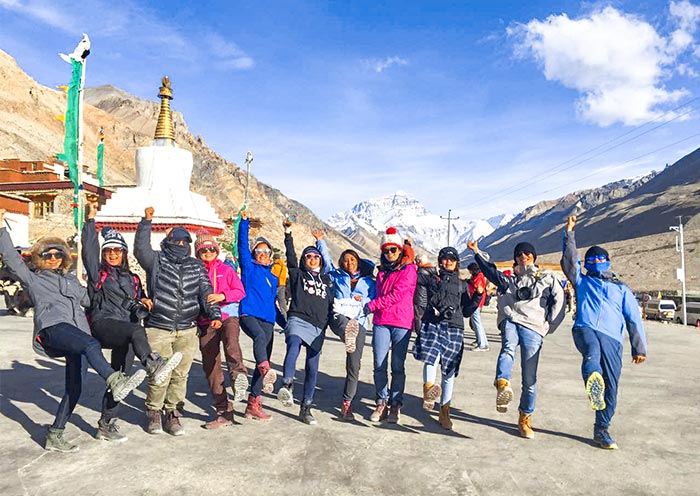

What to Expect Nepal Tibet Tours with Asia Odyssey Travel
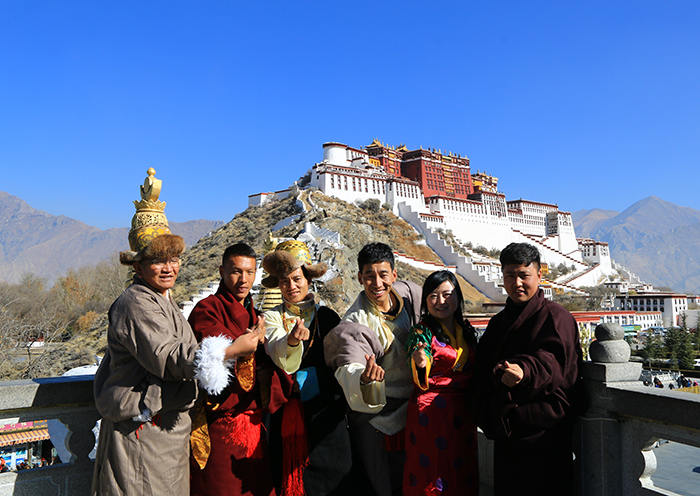
Professional & Knowledgeable Nepal/Tibet Local Guides
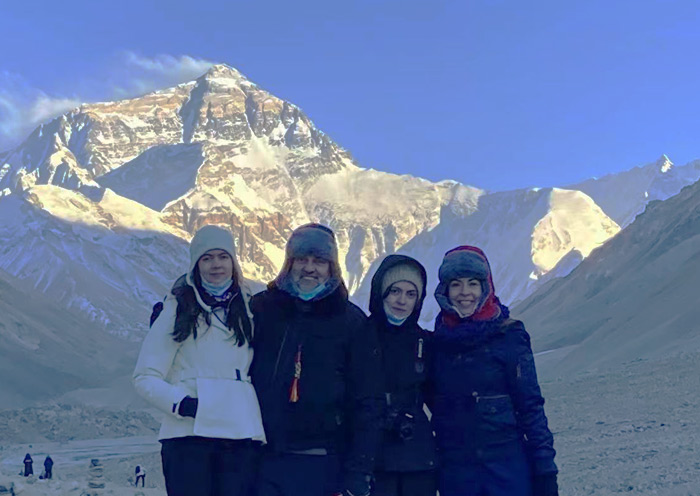
Flexibility & Comfortable Pace on Your Own
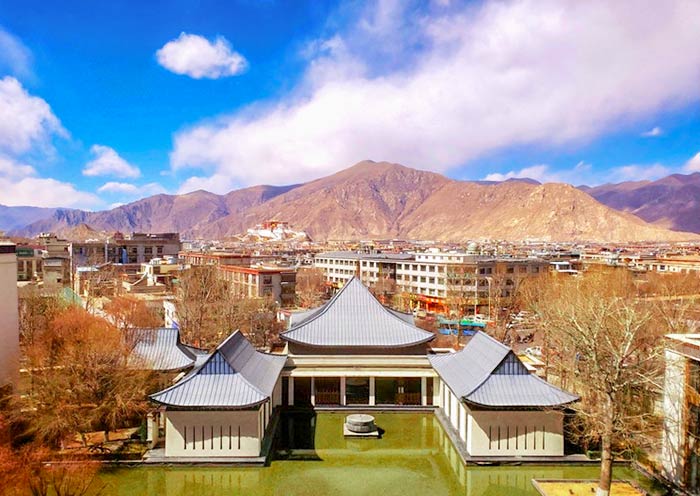
Well-selected Hotels/Guesthouses in Every Destination

Authentic Experiences & Various Activities
1. What are the accommodations like on a Tibet tour? +
There are two main types of accommodation choices on a Tibet group tour: basic standard and comfortable . In major cities like Lhasa, there are a variety of accommodation options available, ranging from 3 star to 4 star hotels. In more remote areas, such as near Mount Everest or Mount Kailash, the accommodations may be more basic, with simple guesthouses or tented camps. We will email you the detailed hotel arrangement after your booking.
Learn more about Where to Stay in Tibet & Lhasa >>
2. At what age are children suitable for Tibet tour? +
There is no specific age requirement for children to take a Tibet tour, but it is important to consider the high altitude and the physical demands of some of the activities involved. Children who are too young or not physically fit may not be able to participate in some of the more strenuous activities, such as trekking or hiking at high altitudes.
It is recommended that children be at least 4 years old to take a Tibet tour, as younger children may have difficulty adjusting to the high altitude.
3. When is the best time to visit Tibet? +
The best time to visit Tibet is from April to October , during the spring, summer, and autumn seasons. The weather during this time is mild and dry, with clear skies and comfortable temperatures.
The peak tourist season is from late June to early October . However, visiting in the shoulder seasons of April-May and mid-October to November can offer fewer crowds and lower prices. You can decide your best time to come to fulfill your Tibet dream.
Besides the weather condition, there are some grand festivals such as Saga Dawa Festival (May/June), Tibetan New Year (February) and Shoton Festival (August). If you are interested in the cultural experience in Tibet, feel free to contact our travel experts to match your ideas and likes.
Learn more about Tibet Weather & Best Time to Visit Tibet >>
4. Do I need to get a Tibet permit to visit Tibet? How long does it take to obtain? +
All foreign travelers are required to obtain a Tibet Travel Permit to visit Tibet . The permit can only be applied for through a registered travel agency in Tibet (we are local based Tibet travel agency with office setting in Lhasa) and is required to purchase flight or train tickets to Tibet. The permit is necessary to enter Tibet and visit certain areas within the region, including Lhasa and Mount Everest Base Camp . Travelers should plan ahead and allow sufficient time for the permit application process, as it can take one to two weeks to obtain the necessary permits .
All foreign travelers are advised to make their bookings at least one week in advance and send the necessary documents to us for obtaining the permits. However, if you plan to visit Mount Kailash , it is recommended to book at least two weeks in advance, as it may take longer to obtain the necessary permits.
Learn more about Tibet Travel Permits & How to Obtain >>
5. How many days for a classic Tibet tour? +
6. What is the best time to visit Nepal? +
The best time to visit Nepal for tours and travel is during the spring (March to May) and autumn (October to November) seasons. These months offer pleasant weather, clear skies, and ideal conditions for trekking and outdoor activities. Check more about Nepal Weather & Best Time to Visit Nepal
7. How do I obtain a visa for Nepal? +
To obtain a visa for Nepal , you can apply for a tourist visa at the Nepalese embassy or consulate in your home country or upon arrival at the Tribhuvan International Airport in Kathmandu . You will need a valid passport, completed visa application form, and the required fee in the form of cash or credit card. Get more ideas about the Nepal visa from our travel experts >>
8. What are the popular tourist attractions in Nepal? +
Nepal boasts numerous popular tourist attractions , including the UNESCO World Heritage Sites of Kathmandu Durbar Square, Bhaktapur Durbar Square, and Pashupatinath Temple. Other notable attractions include the sacred site of Lumbini , birthplace of Buddha, the scenic lakeside town of Pokhara , and the wildlife-rich Chitwan National Park .
9. What are the accommodations like in Nepal? +
Accommodations in Nepal range from luxury hotels to budget guesthouses and tea houses during trekking. In major cities like Kathmandu and Pokhara, you'll find a wide range of options to suit various budgets and preferences. Learn more about Kathmandu Nepal Hotels: Best Hotels in Kathmandu >>
10. What are the recommended adventure activities in Nepal? +
Nepal is known for its adventurous activities, including paragliding , white-water rafting, bungee jumping, and mountain biking. You can also engage in thrilling experiences like canyoning, zip-lining, and rock climbing. The recommended place to try the adventure activities is Pokhara .
Latest Tibet Nepal Tours Reviews from Our Customers

Destination(s): Tibet
Date of Experience: May 25, 2024
Tour Customized by: JoJo
You May be Interested in This Tour: Customized Tour

Sightseer03878258550
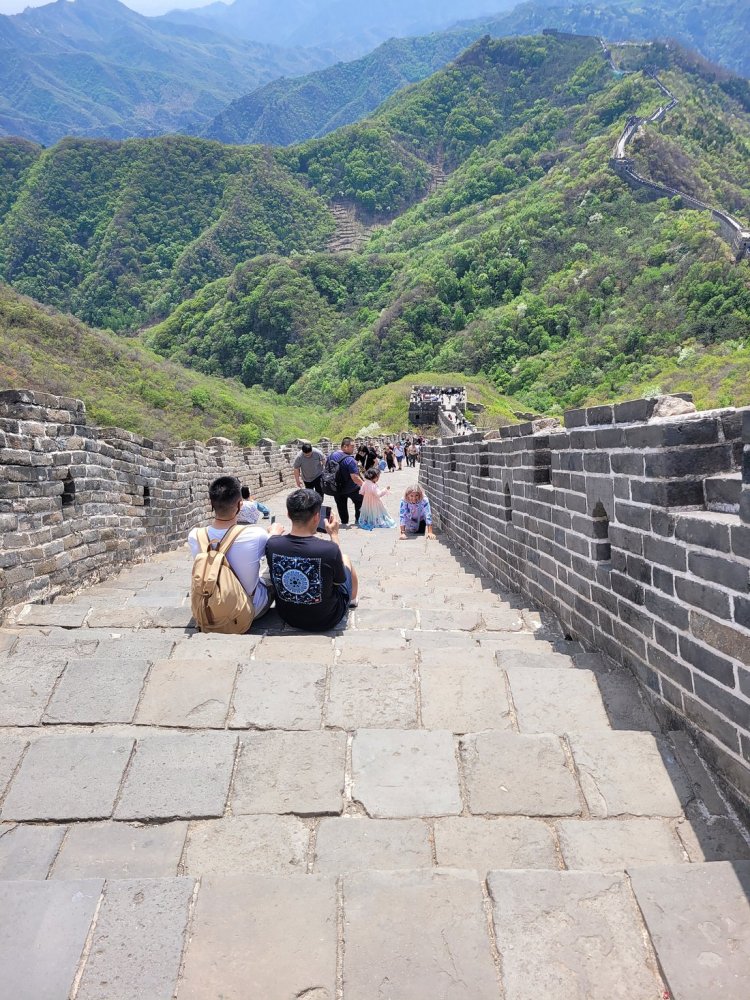
Destination(s): Beijing, Xian, Tibet
Date of Experience: Apr 30, 2024
Tour Customized by: Vincent

Cheryl Call
Date of Experience: May 26, 2024
Tour Customized by: Tony
Create a tour based truly on your preferences, including all aspects of your travel in the destination
Himalayan Tours with Travel Inspiration in 2024
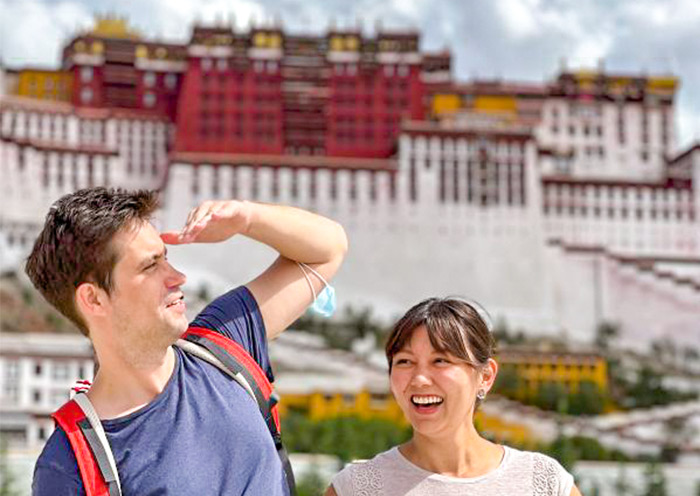
- Top 10 Tibet Tours
- Tibet Group Tours
- Tibet Train Tours
- Tibet Luxury Tours
- All Tibet Tours 2024
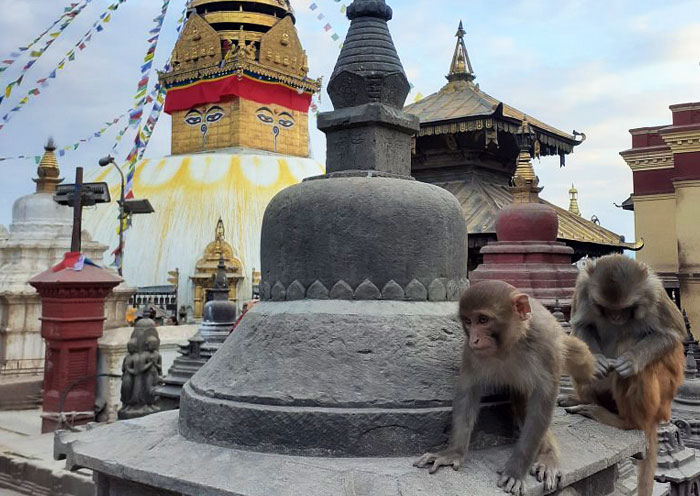
- Nepal Tours
- Best Nepal Tours
- Kathmandu Tour Packages
- Lhasa to Kathmandu Tours
- Kathmandu to Lhasa Tours
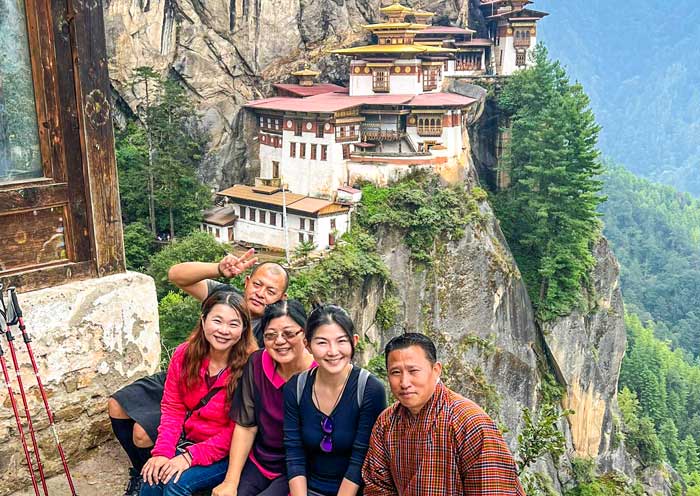
- Top 10 Bhutan Tours
- Bhutan Group Tours
- Bhutan Family Tours
- Bhutan Luxury Tours
- All Bhutan Tours
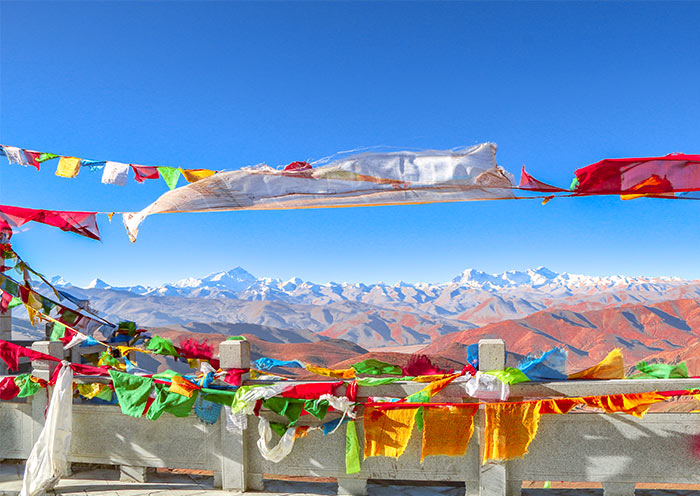
- Himalaya Tours
- Nepal Bhutan Tours
- Tibet Nepal Tours
- China Tibet Nepal Tours
- Tibet Nepal Bhutan Tours


[email protected]

(+977) 9851162501

+977-9851162503
- Call us through:

Tibet popular known as the "Roof of the World" and "Forbidden Land", has been considered as the mysterious and fantasy place and a dream destination for travelers from all over the world. Tibet is the heart of Buddhist culture and philosophy, and the most mesmerizing destinations of the world today as it seems as reserved as ever. It is not only the geographical and natural enchants but also a long historical culture and religion that appeal the foreigners to visit Tibet at least once in a lifetime. Rich and beautiful land with an average altitude over 4,000m (13,120ft) above sea level possessing more than fifty peaks above7,000m (22,960ft), Tibet is home to eleven Himalayan mountains over 8,000m (26,240ft). Bordered by China, India, Nepal, Sikkim, Bhutan, Burma and Kashmir, Tibet is home of over two million people of rich ancient cultures.
Talk to an expert

Surya Thapa
Travel Expert, Nepal
Call me at: +977-9851162501 +977-9851162503

Activities in Tibet

Tibet Tours

Mt Kailash Tour
Global Holidays Adventure boasts of the decade long service to its clients in the land of Tibet i.e Tibet Overland Tour. We offer various exciting packages, all with the quality service in a reasonable price. We have native guides who speak foreign languages as well. So, join us for an enticing journey to be cherished forever.
With the inside tours and trekkings, Nepal also provides the outside family tour to Tibet.
Don’t miss out the Tibet Everest Base Camp trek, if you’re fond of trekking.

- 86-28-85227275 / 85223672
- 86-19138970032 (6 p.m. to 9 a.m. GMT+8)
- Private Tours
- Group Tours
- Lhasa & Surrounding Tours
- Mount Everest Tours
- Mount Kailash Tours
Tibet Train Tours
Tibet Hiking Tours
- Tibet Family Tours
- All Tibet Tours
- Beijing + Tibet Tours
- Chengdu + Tibet Tours
- Shanghai + Tibet Tours
- Xian + Tibet Tours
- All China tours
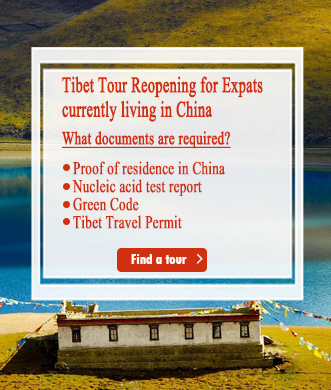
Tibet Tours 2024/2025 - Top 16 Tibet Vacation Packages
Latest Tibet Travel News (updated on May 25, 2022):
⑴. Lhasa-Nyingchi High-speed Railway is under operation now, making the journey between Lhasa and Nyingchi as short as 3.5 hours. Check detailed Lhasa to Nyingchi Train Schedule >>
⑵.Thanks to the successful control of the COVID-19 pandemic in Tibet and other regions of China, Tibet has opened to expats living in China since May. Now it’s safe and convenient to travel to Tibet with our firsthand travel information and worry-free tour packages.
● Places Opened: Lhasa and surrounding areas (Potala Palace, Jokhang Temple, Barkhor Street, Namtso Lake...); Gyantse (Palcho Monastery, Gyantse Dzong); Shigatse (Tashilumpo Monastery, Sakya Monastery); Mount Everest , Mount Kailash, etc.
● Requirements: Your passport and Chinese visa, proofs of work and you haven’t been out of China since you entered China for more than 90 days from your company, screenshot of local healthy green code, Nucleic acid test within 7 days (you need to provide one when apply for the permit and another one when you enter), Tibet Travel Permit (we will obtain for you).
The holy land Tibet is waiting for you! Contact us to start your Tibet tour now ! Early birds get better price!!
Having been isolated from outside world for centuries, Tibet is full of a deep sense of spirituality and mysticism. Once upon a time, only travelers with the strongest mind to conquer the jagged peaks and turbulent river by foot can witness the unparalleled beauty of Tibet, but now Tibet is just a click way, with the improvement of tourism facilities plus Tibet Discovery’s expertise guide. You can easily travel to this “Holy Land” by flight from many popular cities in China by direct flights and trains, or from its neighboring Nepal either by overlanding driving or plane. Once stepping on the land of Tibet, you can magnify your dream as big and high as the plateau is. Soak in the smoke, incense and chatting of the devout pilgrims in the temples and climb up on to the roof of the grandiose Potala Place to look down upon the holy city; Drive cross high passes and deep valleys to encounter with a mysterious heavenly lake; Challenge yourself in the memorable trekking to get close to the sacred snow mountains including Mount Everest, Mount Kailash, etc.; Discover the contemporary changes of local Tibetan lives in a local park of Lhasa or in a rural village near Yamdrok Lake. There are so many things to do and to explore.
As a Tibetan local based agency, Tibet Discovery is your best assist and companion to enjoy your adventure in Tibet. We provide you authentic, tailor-made and valuable Tibet tour packages, including valuable private tours and budget small group tours, and take care of your trip from travel permit, transfer, dinning, and accommodation to sightseeing with great flexibility of your own.
What Are the Advantages of Our Tibet Tours
- Tibet Travel Permit and other required documents guaranteed.
- One-of-a-kind experience full of remarkable sights and unparalleled insights.
- Fully escorted and worry-free tour packages including tour guide, transportation, meals, hotels...
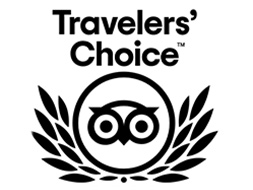
- Best Tibet Private Tours
- Top Tibet Group Tours
What is a private tour? You will have your own private local tour guide, vehicle and driver who only serve for you, and enjoy the flexibility to arrange the tour activities accordingly, such as changing the visiting order of attractions or extending the visiting time of certain place. You can also stop on the road if you want to take a rest or take photos.
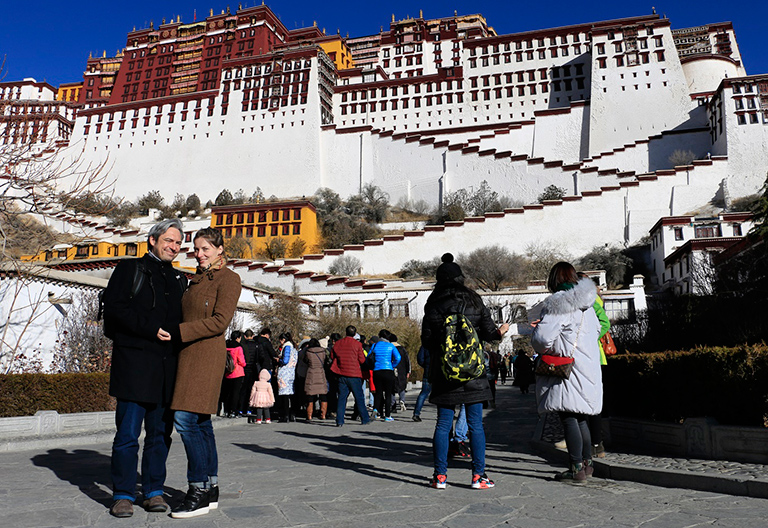
4 Days Lhasa City Private Tour - Heart of Tibet
This is one of our most popular tour packages in Tibet - visit the best landmarks in Lhasa and learn about authentic Tibetan culture. Airport / train station pick up.
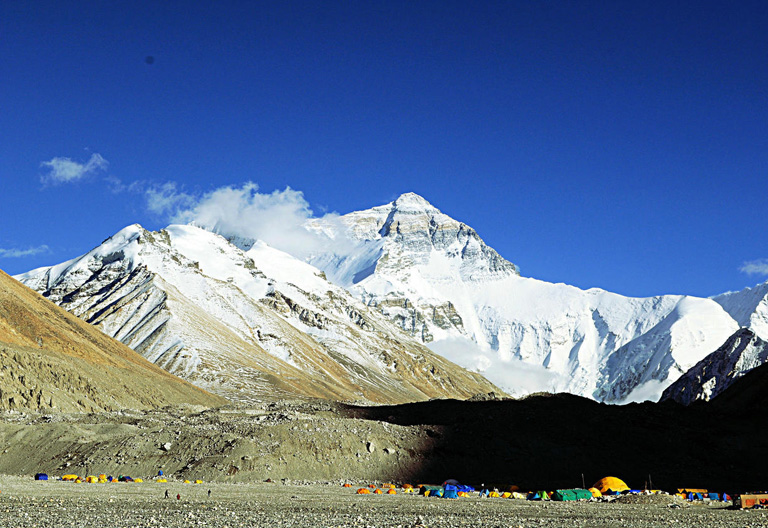
Lhasa / Gyantse / Shigatse / Everest / Lhasa
8 Days Lhasa to Mount Everest Private Tour
Tibet tour wouldn't be complete without a visit to Mount Everest. This tour offers you a complete Tibet tour and weaves together Tibet's most classic sights into a package.
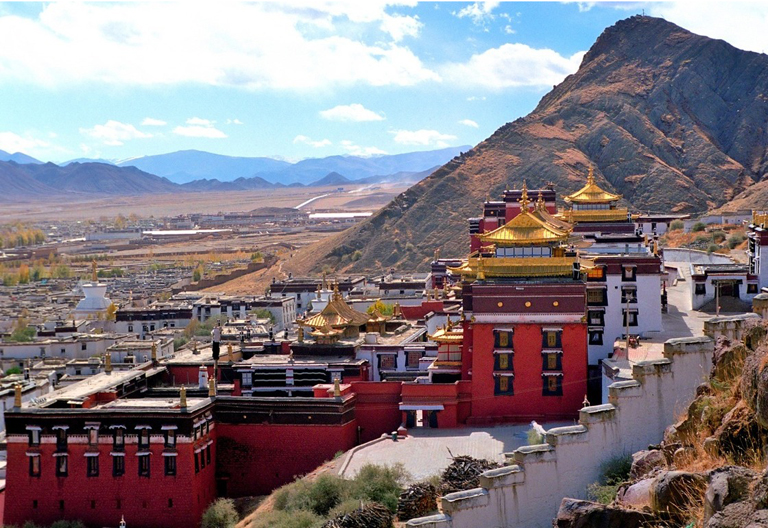
Lhasa / Gyantse / Shigatse / Lhasa
6 Days Lhasa Gyantse Shigatse Private Tour
Present you the landscape of Golden Triangle Cities of Tibet - Lhasa, Gyantse and Shigatse. Dig into Tibetan culture and enjoy beautiful Yamdrok Lake en route.
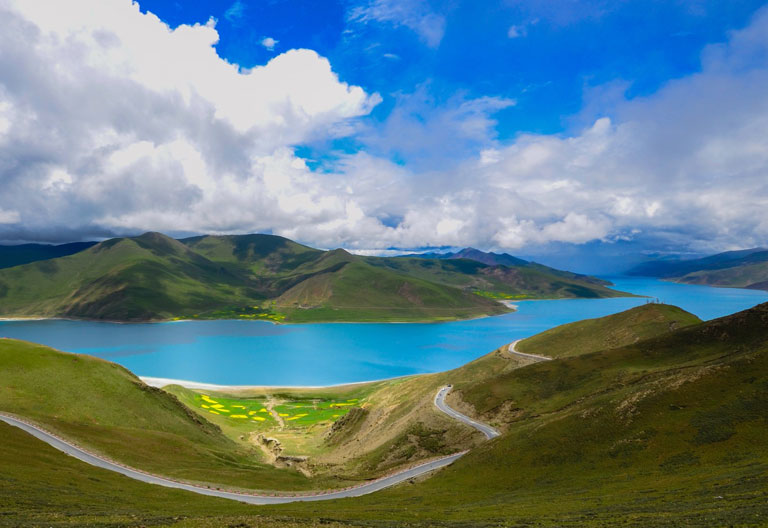
Lhasa / Gyantse / Shigatse / Mount Everest / Gyirong
7 Days Lhasa to Gyirong Border Overland Tour via Mount Everest
This overland tour is a deep exploration into exotic Tibet. Enjoy the very essence of Tibet - Lhasa, Shigatse, Mount Everest, then travel from Gyirong Port
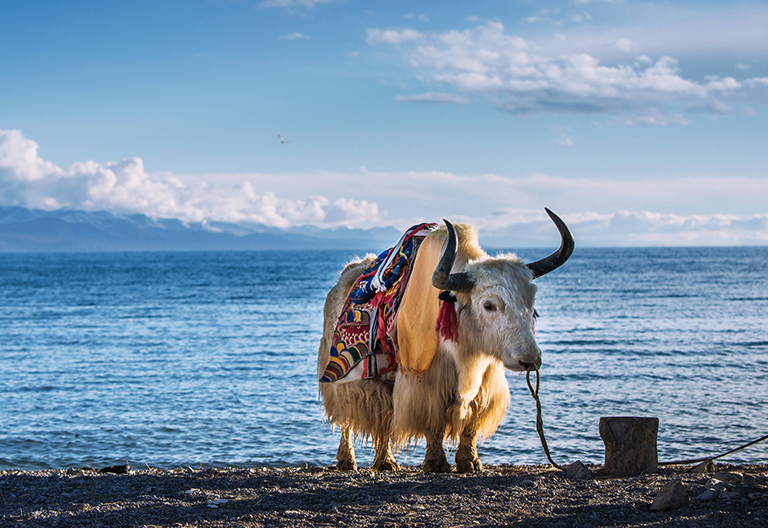
Lhasa / Shigatse / Mount Everest / Namtso Lake / Lhasa
9 Days Tibet Discovery Tour plus Everest and Namtso Expedition
Tibet Discovery Tour - follow popular destinations from Lhasa to Gyantse, Shigatse, Mount Everest and Namtso Lake. Must-see places for first-timers.
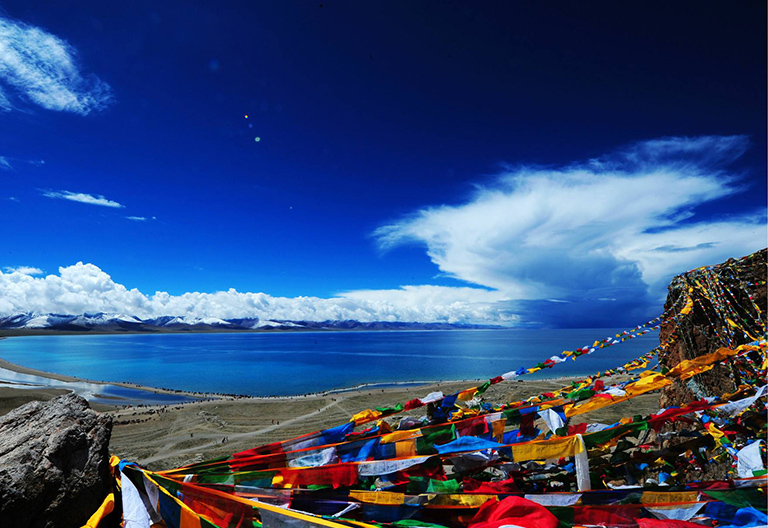
Lhasa / Namtso / Lhasa
5 Days Lhasa Highlights & Holy Lake Namtso Tour
Experience Tibet the way it is meant to be experienced. Ideal for those with limited time but want to see the major attractions in Tibet and be a bit adventurous.
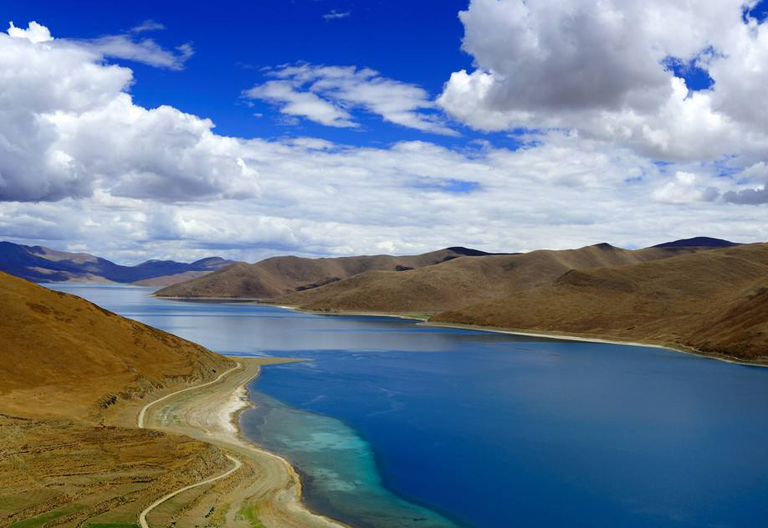
Lhasa / Yamdrok Lake / Lhasa
5 Days Best of Lhasa & Beautiful Yamdrok Lake Tour
Explore landmarks in Lhasa, take a side trip to stunning Yamdrok Lake. Compared with Namtso Lake, Yamdrok Lake is easier to reach and lower in altitudes.
What is a group tour? Our group tours take you to visit the most visited places - Lhasa, Namtso, Shigatse, Everest, etc. All tour packages have been successfully operated for many years and created loads of amazing experiences for our customers. They are featured in budget price and fixed departure dates with maximum size of 12 members.
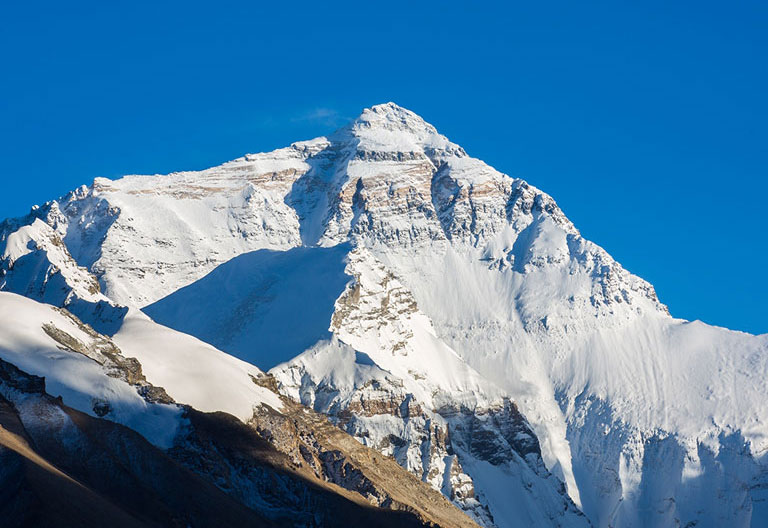
8 Days Tibet Highlights Group Tour with Mt. Everest
This is once in a lifetime memorable journey to discover the heart and essence of Tibet and magnificent Everest.
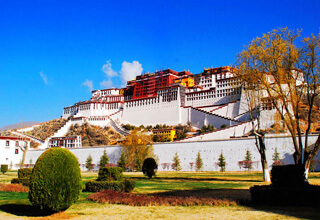
4 Days Best of Holy City Lhasa Group Tour
Classic Lhasa itinerary, covering the best highlights of the holy city, including Potala Palace, Jokhang Temple, Drepung...
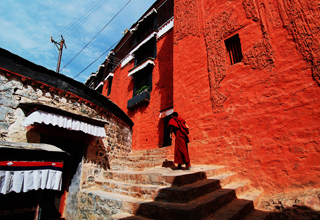
Lhasa / Gyantse / Shigatse
6 Days Lhasa Gyantze Shigatse Classic Tour
In brief 6 days to explore the most representative sites to touch deep into Tibetan culture.
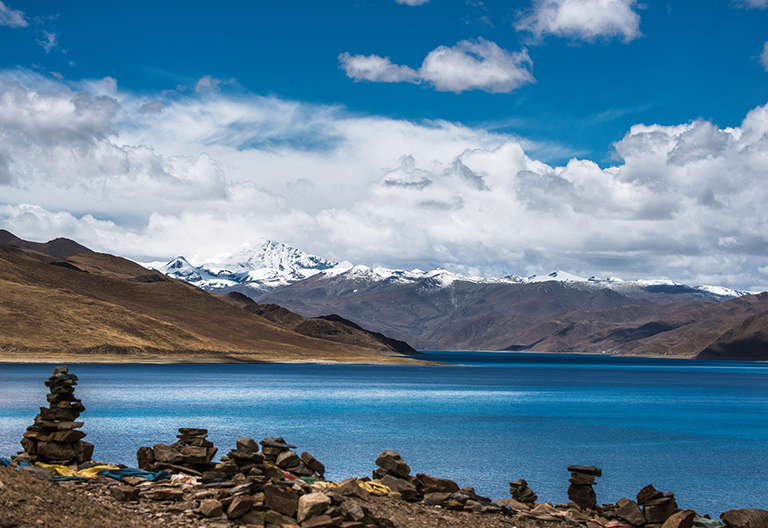
Lhasa / Yamdrok / Lhasa
5 Days Lhasa Group Tour with Sidetrip to Yamdrok Lake
Want a budget tour with Lhasa highlights as well as a glimpse of beautiful nature of Tibet? This is the best offer.
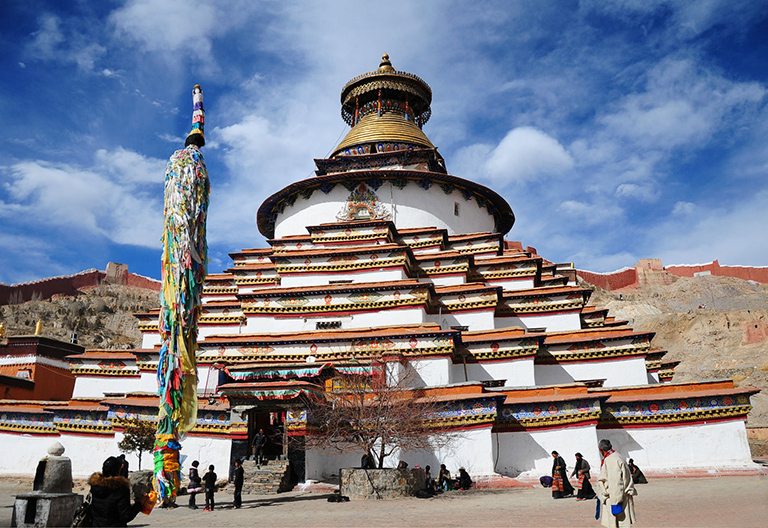
Kathmandu - Gyirong - Tingri - Mount Everest - Shigatse - Gyantse - Lhasa
8 Days Tibet Group Tour from Kathmandu
Classic route of traveling from Kathmandu to Lhasa via Gyirong Port. Full of attractions!
Tibet Tours on the Focus
Does a particular aspect of Tibet fascinates you? Tibet Discovery Tours is specialized in finding unique experience of Tibet, and leading you to explore what interests you most. Our Private Tibet Tours will take you to explore deep into the Holy Land, with loads of options, freedom & flexibility. You can choose from the following themes or let us help design your own trip.
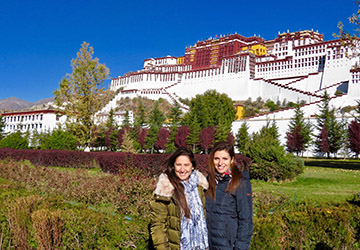
China Tours including Tibet - Strongly Recommended
Generally speaking, more than 80% of our traveler traveled to Tibet from China due to flexible choices of flights and trains. Many of them chose to travel Tibet with other famous and popular destinations in China, such as Beijing (Great Wall, Forbidden City), Chengdu (Giant Panda), Shanghai (the Bund), Xian (Terracotta Warriors), etc. Tibet Discovery has designed many China Tours including Tibet with different length and themes. Feel free to request a quotation or let us customize a tour of your own.
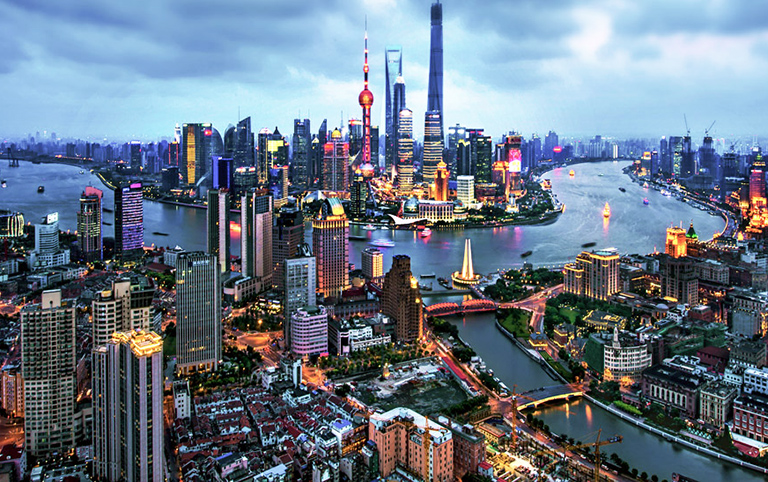
12 Days Best China Highlights Discovery Tour
Destinations : Beijing / Xian / Lhasa / Shanghai
This tour is strongly recommended for visit-time China visitors covering top destinations in China. It is all about bringing China's history and culture to life.
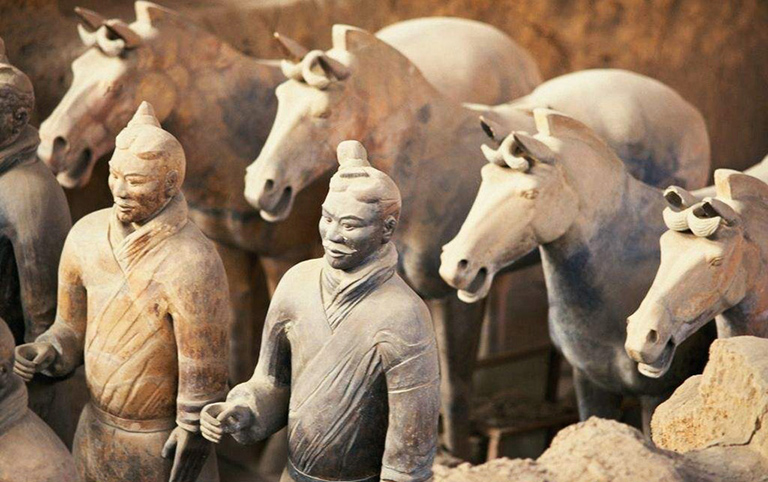
13 Days Beijing Xian Lhasa Kathmandu Adventure Tour
Destinations : Beijing / Xian / Lhasa / Shigatse / Gyantse / Mount Everest / Gyirong / Kathmandu
Start your adventure from Beijing and finish at Nepal Tibet border so that you don't have to return to Lhasa or other cities in China. Full of diverse experiences.
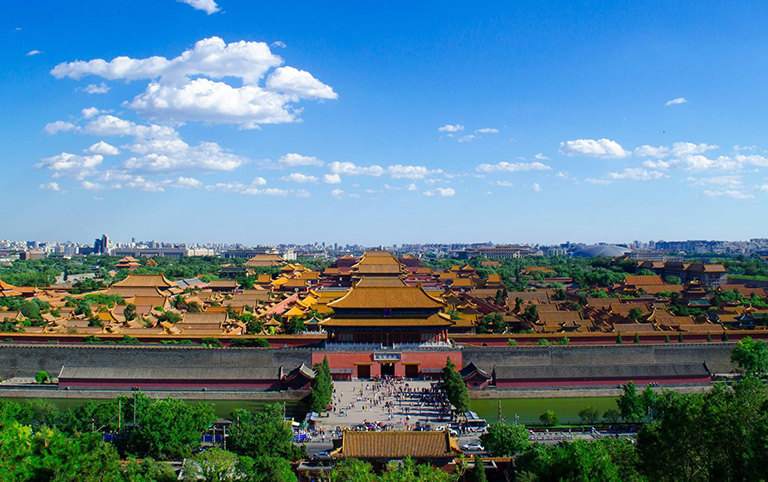
13 Days China Highlights Tour with Panda Visit and Tibet Discovery
Destinations : Shanghai / Chengdu / Lhasa / Xian / Beijing
Amazing diversity tour - exploring Chinese history and culture in Beijing, Shanghai and Xian, encounter with Giant Pandas, experiencing authentic Tibetan culture.
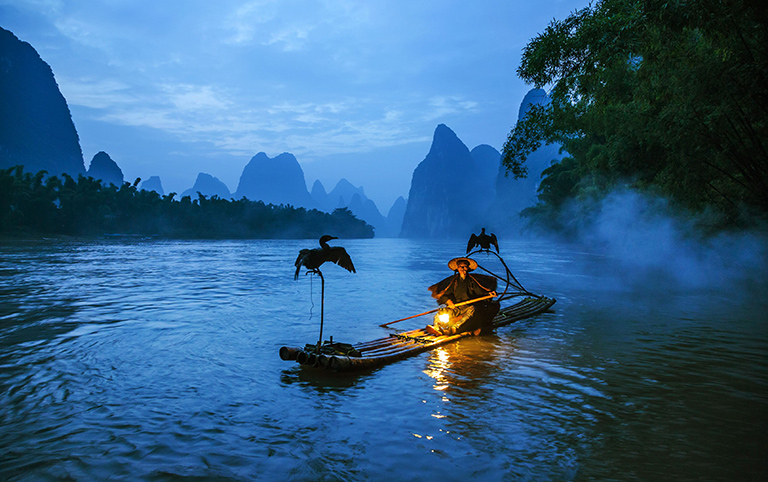
15 Days Essential China Odyssey Tour with Guilin Paradise Vacation
Destinations : Shanghai / Guilin / Chengdu / Lhasa / Xian / Beijing
The best highlights and all expected impressions of China are included - most beautiful place in China - Guilin, ancient capital city - Xian, meeting adorable Giant Pandas, mysterious Tibet...
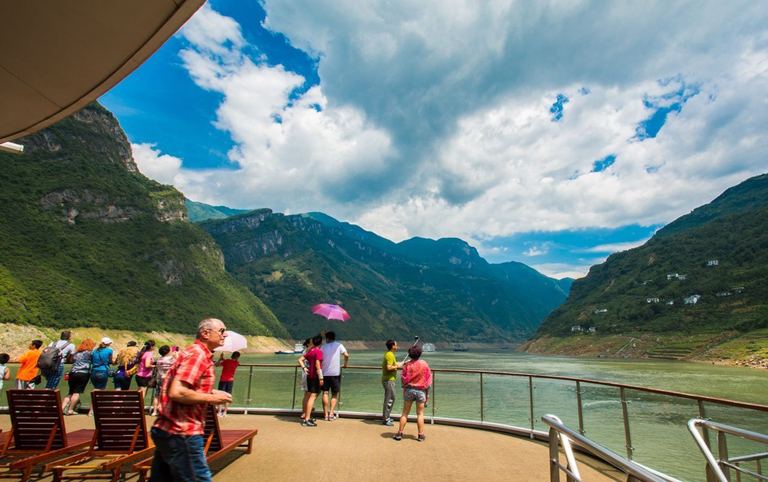
17 Days Best China Tour with Tibet and Yangtze River Cruise
Destinations : Beijing / Xian / Lhasa / Chengdu / Chongqing / Yangtze River / Shanghai
Encompassed China Highlights - explore China with a relaxing Yangtze Cruise, Asian best gastronomy city - Chengdu, Great Wall hiking, wonder of Terracotta Warriors, grandiose Potala Palace...
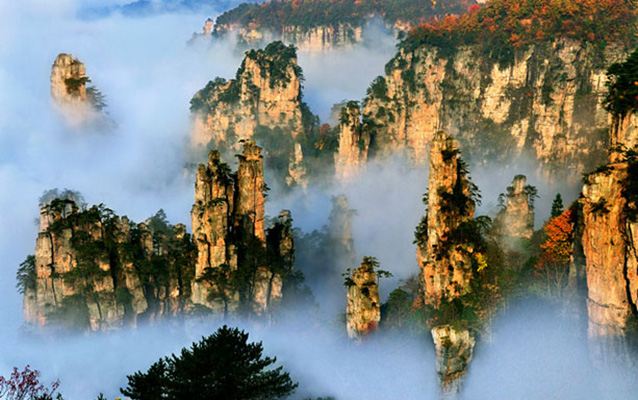
15 Days China Diverse Tour with Tibet and Zhangjiajie Avator Exploration
Destinations : Beijing / Chengdu / Lhasa / Xian / Zhangjiajie / Shanghai
You will not only learn about the Chinese culture and history, but also enjoy the top landscapes in China - historical word heritage sites, modern metropolis, adorable pandas. The most exciting part is to visit the Avatar world in Zhangjiajie.
Tibet Tours from China Gateways
You can travel to Tibet from many cities in China. Among all gateway cities, Beijing, Xian, Shanghai, Chengdu, Xining, Shangri-la (Yunnan) are most popular with travelers. You can either travel to Tibet by flight or train.
- Tibet Tours from Beijing
- Tibet Tours from Chengdu
- Tibet Tours from Hong Kong
- Tibet Tours from Xian
- Tibet Tours from Xining
- Tibet Tours from Shanghai
- Tibet Tours from Yunnan (Kunming/Shangri-la)
Nepal Tibet Tours - Himalayan Treasures Discovery
The mysterious Himalaya is full of treasures, and Tibet possesses only a small part of the treasures. Traveling southward from Tibet to Nepal , you will encounter with more historical and natural wonders. All located in Himalayan Range, Nepal and Tibet share some in common, such as Buddhism, Himalayan mountains, but the differences and contrasts are bigger. Generally speaking, Nepal is more lively and Tibet is more spiritual. Take one of our Nepal Tibet Tours to start your once in a lifetime Himalayan adventure now!
Recommended Nepal Tibet Private Tours
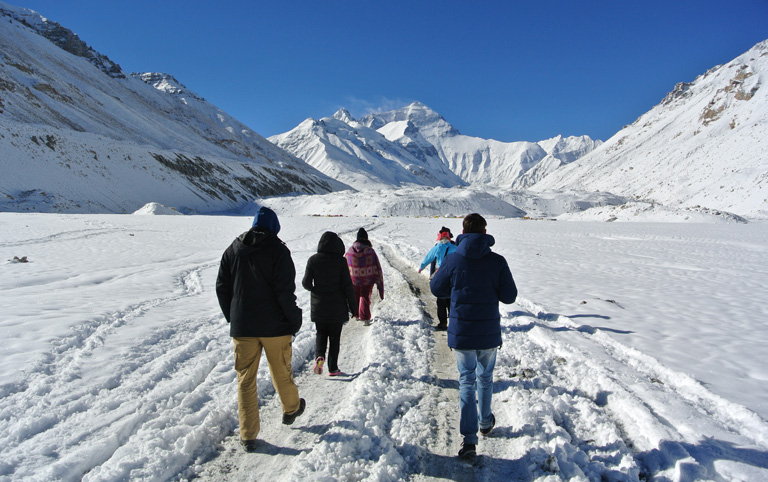
7 Days Kathmandu to Lhasa Private Tour via Mount Everest
Kathmandu - Gyirong - Everest - Shigatse - Gyantse - Lhasa
This tour is specially designed for those who want to travel to Tibet from Nepal. It starts from the capital city of Nepal - Kathmandu, then goes northeastward to Lhasa. Highlights come along the way from beginning to the end.
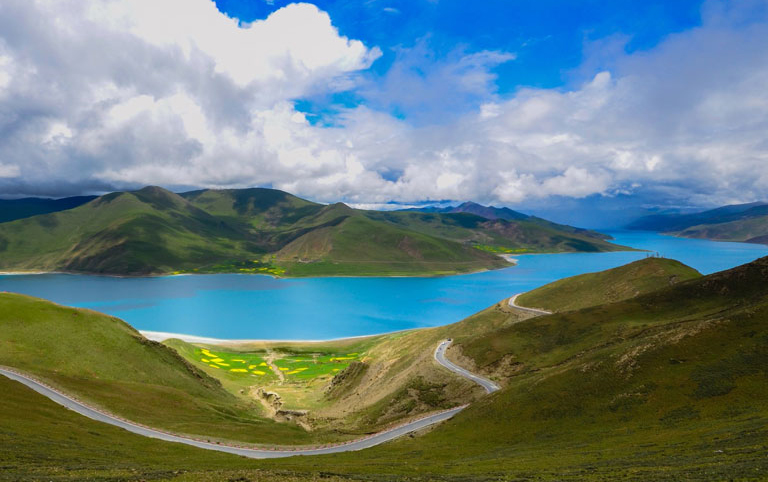
8 Days Kathmandu to Lhasa with Mount Everest Adventure by Flight
Kathmandu / Lhasa / Gyantse / Shigatse / Everest / Gyirong / Kathmandu
Lhasa, Shigatse, Mount Everest Base Camp Tour from Kathmandu covers the Tibetan culture, spiritual nature and exciting adventure, which will leave you a forever-lasting memory...
Recommended Nepal Tibet Group Tours
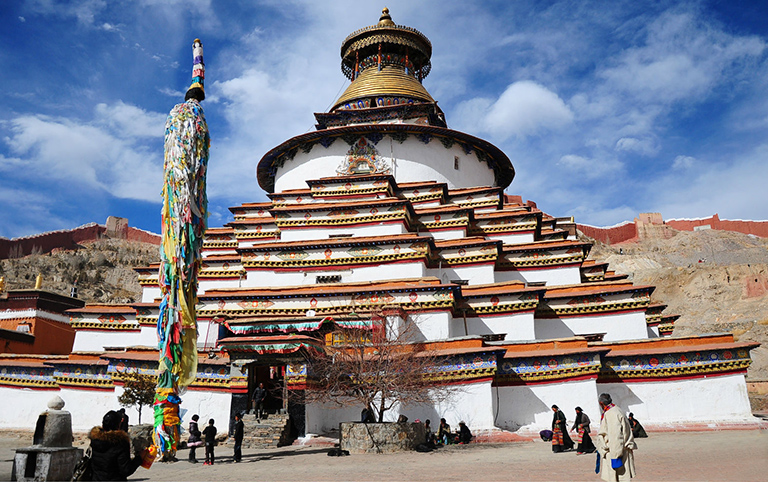
8 Important Things You Should Know Before Tibet Tours
After operating Tibet tours for over 10 years, we have already achieved a deep understanding about What Tibet has to offer, what our customers want to see and experience most, what are the major concerns during our customers’ trip. Here we list out the most frequently asked questions that our former customers about tour planning, travel documents, itinerary, hotel, booking, dinning. You are also welcomed to submit your question to us, our travel experts are always ready to help.
Tibet Tourism Bureau stipulates that all foreign tourists, including Taiwanese, are not allowed to travel Tibet independently. You are only permitted to travel to Tibet with a China travel agency which will arrange travel services for you, including creating itinerary, tour guide, driver and vehicle, permit application, etc. This doesn’t mean you can’t enjoy a free and relaxing trip in Tibet. Actually, most areas in Tibet are open for foreign travelers, and can be visited with a tour, private tour or group tour, with China travel agency.
To travel in Tibet, all Non-Chinese passport holders need to have a Tibet Travel Permit which can only be applied for by China travel agencies like Tibet Discovery with Tibet Tourism Bureau in Lhasa. You must obtain it before your tour starting. The permit will be checked when you board your flight/train to Tibet.
Traveling with Tibet Discovery, you don't have to worry about the complicated procedures of Tibet Travel Permit application. All you have to do is to confirm a tour package with us and send us your passport and Chinese via copies at least 15~20 days in advance before your tour, we will take care of all the rest things. Once the permit is issued by Tibet Tourism Bureau, we will deliver to you at the appointed address in China's other cities, such as your hotel, local travel agency, etc. Besides Tibet Travel Permit, you also need to have a Chinese visa and valid passport to support your Tibet trip.
Generally speaking, months from May to October are recommended. Other months are usually very cold, and possible have heavy snow. During November to April of next year, Namtso Lake is mostly frozen, and not suitable for travel. If you only visit Lhasa, Gyantse and Shigatse and other cities with lower altitude, you can take a trip all year around.
Having an average altitude of about 4500 meters (14,750 ft), Tibet is the highest land in the world. The altitude of the capital city Lhasa is 3650m (12,000 ft). Most of attractions in Tibet are located over 3700 meters above the sea level. The elevations of some higher places, such as EBC, Namtso Lake, Yamdrok Lake, Mount Kailash (trek) may reach to more than 4500 meters between 5700 meters.
You may suffer a bit from High Altitude Sickness in the beginning days of your Tibet trip if you haven’t had rich high plateau travel experience. But don’t worry too much, the high altitude can be acclimatized usually in 2~3 days. Our suggestion is to take a physical examination and get suggestions from your doctor, and also bring some medicines to prevent from High Altitude Sickness before your trip. While in Tibet, you should keep warm all the time, avoid strenuous activities, drink more water and eat more vegetables and carbohydrates. You’d better not take showers during the first two days after your arrival at Tibet. If you don’t feel well, get help from your tour guide or go to the hospital without any delay.
Currently common tourist can only get to Tibet from China cities or Nepal (Indian passports pilgrims can enter Tibet from specific border ports).
Travel from China Cities to Tibet
Take a domestic flight from other cities like Chengdu, Beijing, Xian, Xining, Kunming, etc. or an international flight from Kathmandu, or take a train from China's other cities, like Chengdu, Xian, Beijing, Chongqing, Shanghai, Guangzhou, Xining, Lanzhou, etc.
Travel from Nepal to Tibet
Take a flight from Kathmandu Tribuvan International Airport to Lhasa, or enter Tibet from Gyirong Port at Nepal-China border. This port is about 89km from Kathmandu, about 820km from Lhasa, and about 360km from Mount Everest (Tibet Side). To travel from Nepal to Tibet, you have to apply for a Group Visa in Kathmandu.
A large backpack and a smaller one are recommended (the smaller one can be used for daily activities). Also bring the necessary medicine you need. Other stuffs like sunglasses, snow glasses, hats, lip balm, sun block are recommended.
As for wearing, you are suggested to dress in layers (both thin and thick jackets). Down jacket is necessary in Spring (Feb~May) and Autumn (Sept~Nov). A pair of durable and comfortable shoes is necessary.
1) You are not allowed to take photos inside the chapels of the monasteries, but photography of the architecture is allowed; 2) You should take off your hat and sunglasses to show respect when you entering a monastery. Wearing shorts and exposing shoulders are disrespectful; 3) Try to walk and talk quietly to not disturb the living and study of the monks in the monasteries.
We offer both private customizable Tibet tours and fix-departure group tours. What are the differences?
Private tours - firstly, you have the flexibility to arrange the group activities according to your personal interests; secondly, you can also travel at a slower and comfortable pace; thirdly, you will have your own private local tour guide, private vehicle and private driver for your group.
Group tours - traveling with a group tour, you will join other people in a fixed-departure date, and share the itinerary, vehicle and tour guide, which will greatly cut down your expense. To ensuring high quality service, we limit the group size to a maximum of 12 people.
Ask A Question
86-28-85223685
Prefer to tailor a trip that totally suits your requirements and interests? Our 20+ professional, helpful and friendly travel experts are ready to help! Tell us your needs, and one of our experts will get to you with trip details within 0.5~23.5 hrs. You can also call us at 86-28-85227275 / 86-28-85223672.
"Amazing time in Lhasa"
"Excellent organization and very memorable trip"
"Fabulous trip through China and Tibet"
Tibet Tours
Tibet Group Tours
Tibet Private Tours
Lhasa City Tours
Tibet Everest Tours
Mt. Kailash Tours
China Tibet Tours
Beijing Tibet Tours
Chengdu Tibet Tours
Xining Tibet Tours
Shanghai Tibet Tours
Yunnan Tibet Tours
Xian Tibet Tours
Hong Kong Tibet Tours
Travel Advices
How to Plan Tibet tour
9 Things to Know
How to Get to Tibet
Tibet Travel Permit
Top Tibet Attractions
Best Time to Visit
High Altitude Sickness
Tibet Accommodation
Destinations Guide
Mount Everest
Any questions, please email us at: [email protected] or call us at: +86-28-85227275 / 86-28-85223672 (Monday-Friday 9 a.m. to 6 p.m. GMT+8) 86-19138970032 (6 p.m. to 9 a.m. daily GMT+8) Copyright © 2011-2024. All rights reserved.
- Responsible Travel
- Our Service
- Payment Guide
- Testimonial
- Terms & Condition
- Privacy Policy

Search Your KeyWord
How to travel from nepal 2024 updated.

How to travel to Tibet from Nepal?
Getting a China Group visa can be a breeze if you apply from Nepal! One can reach Tibet from Nepal by either flying to Lhasa, Tibet from Kathmandu, Nepal or by opting for an overland tour from the Nepal border Rasuwa Gadi between Kyirong town in Tibet.
If you are traveling to Tibet from Nepal, this article provides guidance.
For those intending to travel to Tibet from cities within China , please refer to this separate article.
Content Table for Travel Tibet from Nepal.
Travel to tibet from nepal., 1. plan the trip a month in advance..
To ensure a smooth trip to Tibet, it is recommended that you plan your itinerary one month ahead of time. Also, it is essential to reserve your Tibet tours beforehand to allow enough at least 20 days for us to process your China Tibet group visa and Tibet Travel Permit.
To travel to Tibet from Nepal, you will require two essential documents: the China Tibet group visa and the Tibet Travel Permit . You can rest easy knowing that we will handle the process of obtaining both documents for you .
2. How to get a China group visa from Nepal?
Our travel agency needs scans of travelers' passports and the exact dates of their entry and exit from Tibet, along with confirmation of their Tibet tour itinerary booked through us, in order to obtain the China group visa from Nepal.
3. How long will it take to apply for a China group visa?
It is recommended to allocate three to four business days to obtain the China Tibet Group visa.
You can arrive in Kathmandu, Nepal, four business days prior to your travel departure to Tibet and complete the visa formalities on the first day with the assistance of our travel agency in Nepal. All you need to do is provide your signature and passport-size photo and leave your original passport with the Nepal Chinese Embassy.
After that, you are free to explore Nepal on your own or with the help of our Nepal travel agency. While traveling, you can use a photo of your passport scanned on your phone to book hotels in Nepal. The day before your travel departure to Tibet, you need to meet our Nepal travel agency manager to collect your passport and China Tibet group visa documents. The next day, you can take a flight or overland travel to Tibet.
It is important to note that the Chinese Embassy in Nepal has scheduled closures on weekends and certain holidays annually. To ensure a hassle-free visa application process, please refer to the holiday dates for the year 2024.
4. What are the 2024 holiday dates for the China Embassy in Nepal?
- April 4th, 5th, 6th ( Ancestor Memorable Day)
- May 1st to May 5th ( International Labor Day)
- June 25th, 26th, 27th ( Dragon boating festival )
- October 1st, 2nd, 3rd, 4th, 5th, 6th, 7th, 8th ( National holiday )

Photo: China Group Visa
5. What is the cost of the China Tibet Group visa fee?
Regular visa fee / four working days.
USA: $ 204 per person
Canada: $ 104 per person
Other Countries: $ 80 per person
* Note: Service charge is included in the above visa fees.
Urgent visa fee / three working days.
USA: $ 229 per person
Canada: $ 129 per person
Other Countries: $ 105 per person
Note: Service charge is included in the above visa fees.
6. What is the latest update on the China Tibet Group Visa 2024?
- To obtain a China visa from Nepal, the minimum requirement is four individuals. However, you can rest assured that you can reach out to us via email for any further inquiries.
- By April, travelers will be able to fly from Kathmandu to Lhasa. Alternatively, there will be the option of a vehicle journey from Nepal to Tibet via the Rasuwa Kyirong border.
7. The Chinese Embassy in Nepal requires what specific details?
- Four full working days in Kathmandu.
- The Traveler must have their original passport with them.
- One photo with a white background (size example below).

Photo: Example of China Tibet Group visa photo size with a white background.
Upon arrival in Nepal, travelers have the option to pay for the China Tibet group visa fee. To arrange the visa, our affiliate agency in Nepal will visit the airport or the traveler's hotel.
8. What are the requirements for booking a Tibet tour from Nepal?
- A well scanned copy of your passport.
- The tour's entry and exit dates will need to be confirmed, along with the destinations to be visited while traveling through Tibet.
- Payment deposit of 50 US dollars per person using Paypal. [email protected]
9. What are the entry and exit dates for the Tibet Travel Permit?
P lease note that your entry and exit dates will be recorded on the Tibet Travel Permit. It is crucial to leave Tibet and other cities in China by the specified exit date. As per regulations, travelers are advised to limit their visits to only the sites listed on the Tibet Travel Permit. As soon as you arrive at Lhasa Gonggar airport or the Kyirong border with Nepal, our friendly tour guide will obtain the Tibet Travel Permit and welcome you.
10. How to Purchase flight from home to Nepal ?
Below, we suggest ways to buy your flights to Nepal and then use the Tibet Travelers agency to arrange your travel to Tibet either by land or plane. We suggest using the Kayak , Trip.com , and Fare Compare websites to find the best international flights to Nepal. You can also look for trustworthy flight websites from Google.
11. How to purchase a flight from Nepal to Tibet?
If you need assistance in obtaining flight tickets from Kathmandu, Nepal, to Lhasa, Tibet, we are here to help. Please note that in order to board a flight to Tibet, travelers are required to possess the original Tibet Travel Permit at Lhasa airport or Nepal border town if they travel by land. In order to ensure that you have the proper documentation, we will arrange for one of our tour guides to meet you at Lhasa airport or Nepal border.
12. What about the Tibet Travel Permit?
As we apply for a Travelers China Group Visa, we will simultaneously apply for a Tibet Travel Permit. During our trip, our tour guide will carry the Tibet Travel Permit with them and present it to public offices for registration at Lhasa Gonggar airport or the Nepal border town of Rasuwa between Kyirong when picking up the Travelers. The permit will also be with the Tour Guide throughout our traveling in Tibet.

Photo: The stunning Mount Kailash.
13. What are the Tibet Travel Recommend ations?
We recommend a few travel itineraries for travelers. The first Tibet travel journey is a 10-day Tibet travel that begins in Lhasa and culminates at Mount Everest base camp and Namtso Lake. The second Tibet trip we recommend is a 17-day Tibet travel journey from Lhasa that takes you to Mount Kailash , where you will trek for three days over 52km at an altitude of 5000 meters. During this tour, you will also visit the Guge Kingdoms and Mount Everest base camp.
If you're a traveler intending to visit Nepal following Tibet, we highly suggest our 8-day overland excursion from Lhasa to Kathmandu , which includes a stop at Mount Everest's North Face Base Camp.
14. How to meet your agency staff in Tibet?
Begin your journey in Tibet by meeting our amiable team of Tibet Travelers, Tibetan local Tour Guide, and local Tour Driver either at Lhasa airport or the Nepal border town.
We are eagerly waiting to greet you and display the splendor of Tibet, so please feel free to reach out to us if you have any queries or apprehensions. We would be delighted to receive your feedback. You can reach us anytime through Live Chat, DM on Instagram, or by sending us an email at [email protected] . I can't wait to help you plan your Tibet tour and tibet travel adventure!

Dec 22, 2023
Tibet Travel, Tibet Tours, Tibetan Local Tibet Travel Agency
© Copyright 2016-2024 All Rights Reserved Privacy Policy

- Travel Advice
- (86)28-8175 4631

TOP 6 Tibet Small Group Tours
8 Days Lhasa to Everest Base Camp Small Group Tour
Lhasa - Yamdrok Lake - Gyantse - Shigatse - Everest Base Camp - Dinggye - Sakya - Shigatse - Lhasa
From USD939 p.p
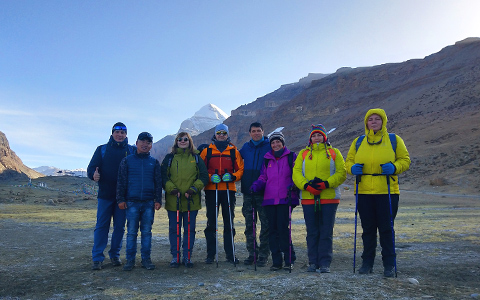
15 Days Mount Kailash and Lake Manasarovar Small Group Tour
Lhasa - Gyantse - Shigatse - E.B.C - Lake Manasarovar - Kailash Trek - Saga - Shigatse - Lhasa
From USD2059 p.p
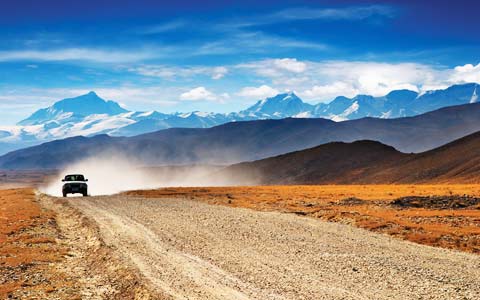
7 Days Lhasa to Kathmandu Small Group Tour
Lhasa - Shigatse - Everest Base Camp - Gyirong Border - Kathmandu
From USD979 p.p
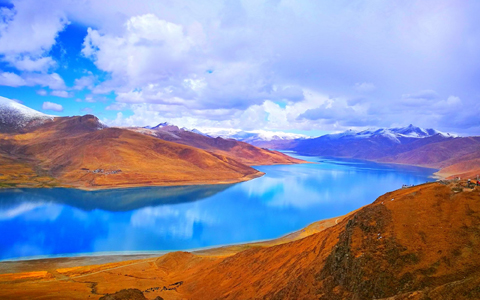
5 Days Lhasa and Yamdrok Lake Small Group Tour
Lhasa - Yamdrok Lake - Lhasa
From USD689 p.p
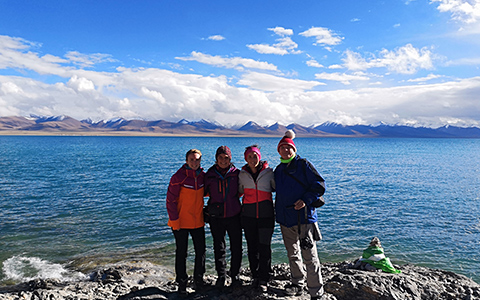
10 Days Everest Base Camp with Lake Namtso Small Group Tour
Lhasa - Gyantse - Shigatse - EBC - Shigatse - Lhasa - Namtso Lake - Damxung - Lhasa
From USD1289 p.p
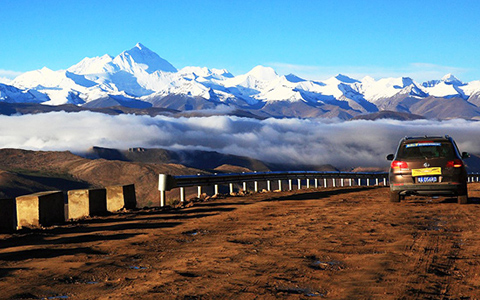
8 Days Kathmandu to Lhasa Driving Across Himalaya Overland Adventure Tour
Kathmandu - Gyirong Border - Everest Base Camp - Shigatse - Lhasa
From USD1169 p.p
Tibet Tours
- Tibet Bike Tours
- Tibet Winter Tours
- Tibet Family Tours
- Tibet Photography Tours
- Eastern Tibet Tours
Tibet Train Tours
- Tibet Festival Tours
- Tibet Culture Tours
- Lhasa Chengdu Overland Tours
- Tibet Motorbike Tours
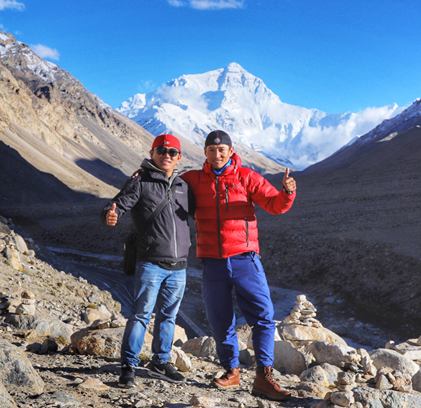
TOP 6 China Tibet Group Tour Packages
- 16 Days Beijing Xian Tibet Mount Everest Kathmandu Tour from $2790
- 17 Days Beijing Tibet Nepal and Bhutan Tour from $3390
- 18 Days Beijing Lhasa Chongqing Yangtse River Shanghai Tour from $3568
Start Your China Tibet Tour from
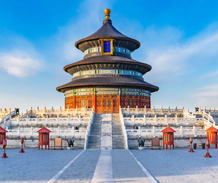
- Chengdu Tibet Tour
- Guangzhou Tibet Tour
- Yunnan Tibet Tour
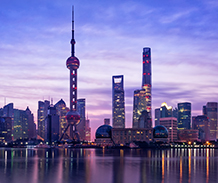
- Hong Kong Tibet Tour
- Chongqing Tibet Tour
- Xian Tibet Tour
TOP 6 Tibet Nepal Group Tour Packages
- 10 Days Kailash and Manasarovar Tour from Kathmandu from $1749
- 15 Days Beijing Lhasa Shigatse EBC Kathmandu Tour from $2014
- 17 Days Kathmandu to Beijing Overland Tour from $2283
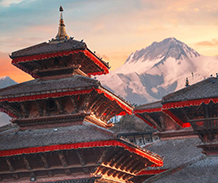
Lhasa to Kathmandu Tour
- Being Tibet Nepal Tour
- India Tibet Nepal Bhutan
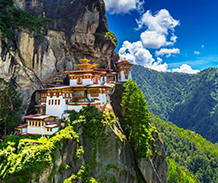
Kathmandu to Lhasa Tour
- China Tibet Nepal Bhutan
- Tibet Bhutan Tour
Tibet Train Routes
- Chengdu to Lhasa Train
- Xi'an to Lhasa Train
- Guangzhou to Lhasa Train
- Chongqing to Lhasa Train
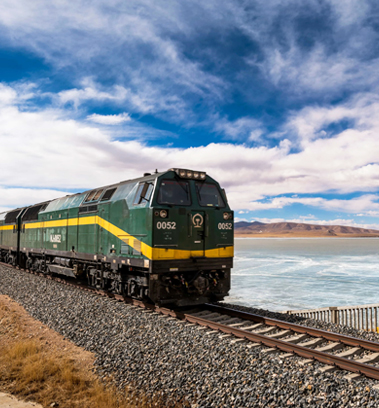
Tibet Travel Permit

For planning your Tibet trip, you will first need a Tibet Travel Permit. Just tell us your travel plan, and we will help you to get it in an easy way.
More Tibet Travel Permit Guide
- What Permits are Needed to Visit Tibet Everest Base Camp
- What Permits are Required to Visit Mount Kailash in Tibet
- How to Apply for Tibet Travel Permit from Different Countries
- Tibet Travel Permit without Tour: Is It Possible
- What Is the Aliens' Travel Permit and How to Get It
Top-Read Tibet Travel Advice Articles
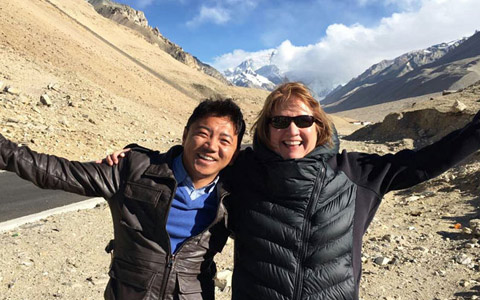
- What are the Best Places to Visit in Tibet
- Is It Safe to Travel to Tibet? Here’s What You Need to Know
- 8 Things to Do in Tibet that Won't Waste Your Trip
- Top FAQs about Altitude Sickness in Tibet
- 20 Things to Know before Choosing a Hotel in Tibet
- How to Enjoy a Budget Tibet Tour
- How to Get to Tibet from Beijing, Shanghai, Kathmandu, etc

All Tibet Group Tour
- 10 Days Beijing Xian Lhasa Shanghai Small Group Tour From USD1072
- 12 Days Chengdu Tibet Railway Lhasa Namtso Shigatse Small Group Tour From USD1575
- 13 Days Beijing Xian Lhasa Yangtse River Shanghai Small Group Tour From USD1725
- 14 Days Beijing Xian Lhasa Shigatse EBC Chengdu Small Group Tour From USD1603
- 15 Days Beijing Xian Lhasa Chengdu Guilin Shanghai Small Group Tour From USD1787
All Tibet Tours
Tibet Group Tour
- Lhasa and Surrounding Tour
- Everest Base Camp Tour
- Mount Kailash Tour
- Nepal & Tibet Tour
- China & Tibet Tour
- Trekking Tour
Central Tibet Tour
Eastern Tibet Tour
- Biking Tour
- Cultural Tour
- Family with Kids Tour
- Photography Tour
Festival Tour
All China Tibet Tour
All Nepal Tibet Tours
- 7 Days Lhasa to Kathmandu Small Group Tour From USD979
- 7 Days Kathmandu & Lhasa Tour By Flight
- 9 Days Kathmandu & Tibet Golden Triangle Tour
- 14 Days Nepal & Tibet Highlights Tour
- 10 Days Tibet and Nepal: Journey to the Highest Himalaya
- 13 Days Classic Tibet Nepal and Bhutan Tour
- 14 Days Lhasa to Kathmandu Overland Tour from Beijing
- 14 Days Journey to the Himalayan Kingdoms
- 17 Days An Epic Journey through India, Nepal & Tibet
- 11 Days Himalaya Overland Tour from Lhasa to Kathmandu
- 18 Days Travel through Silk Road to Tibet and Exotic Nepal
All China Tibet Nepal Tour
- 10 Days Beijing Xian Lhasa Kathmandu Small Group Tour From USD1276
- 12 Days Beijing Lhasa Shigatse EBC Kathmandu Small Group Tour From USD1712
- 15 Days Beijing Lhasa Shigatse EBC Kathmandu Small Group Tour From USD2014
- 15 Days Beijing Xian Lhasa Shigatse EBC Kathmandu Small Group Tour From USD2242
- 17 Days Kathmandu to Beijing Overland Small Group Tour From USD2283
- 20 Days Beijing Xian Lhasa EBC Kathmandu Pokhara Chitwan Small Group Tour From USD2799
Tibet Train
- Beijing to Lhasa Train
- Shanghai to Lhasa Train
- Xining to Lhasa Train
- Xian to Lhasa Train
- Lanzhou to Lhasa Train
- Tibet Travel Permit FOR FREE
- Get a Tour Quote
- Tibet Budget Group Tour
By Destinations
- About Tibettour.org
Tibet vs Nepal: What is the Difference? Which is Better to Visit?

Often mistaken for each other, Tibet and Nepal are two stunning tourist destinations lying next door to each other, and they share many similarities. However, despite these shared similarities, they also have their differences, leaving many people wondering which one is better to visit or if touring both is the ultimate choice. This article aims to provide answers to these questions and help you make an informed decision.
Tibet vs Nepal: Location Difference
Lying either side of the mighty Himalayas, in Southeast Asia, Tibet and Nepal are the closest of neighbors, and have been trade partners for more than a thousand years. Tibet Autonomous Region of China and Nepal share a border along the line of the Himalayas that stretches for around 1,414 kilometers (879 miles), from Ngari in northwestern Tibet to the southwest of Shigatse Prefecture.
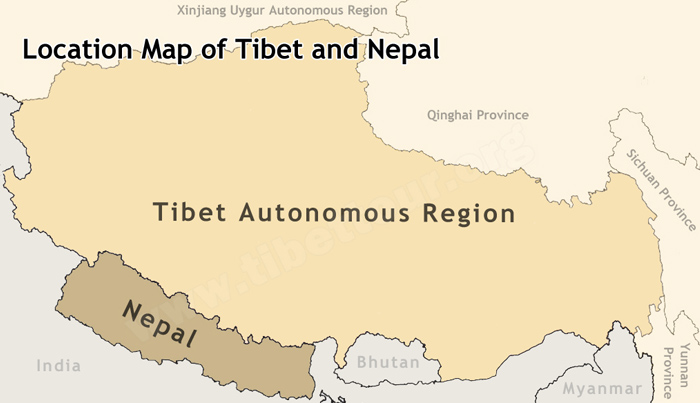
Lying between China and India, Nepal is a small landlocked country, around one-fourth of the size of Tibet. In direct contrast, while Tibet may also be landlocked, it is the westernmost part of the People’s Republic of China.
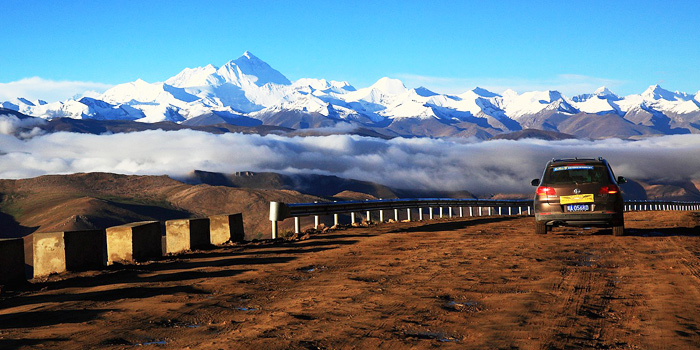
Tibet vs Nepal: Landscape Difference
The landscape is the most obvious difference between Tibet and Nepal. While the Tibetan landscape lies wholly on the vast Qinghai Tibet Plateau, the highest plateau in the world, Nepal’s landscape is varied, ranging from the high mountains of more than 8,000 meters to the lowland areas in the south of the country, along the border with India.
Tibet’s landscape is one of high altitudes, desolate deserts, lush valleys, and vast open prairies that all lie at an elevation of between 3,500 and 6,000 meters. While there are huge differences in elevations across the Tibetan plateau, wherever you go it is at high altitudes that mean a risk of altitude sickness for international travelers and tourists from mainland China.
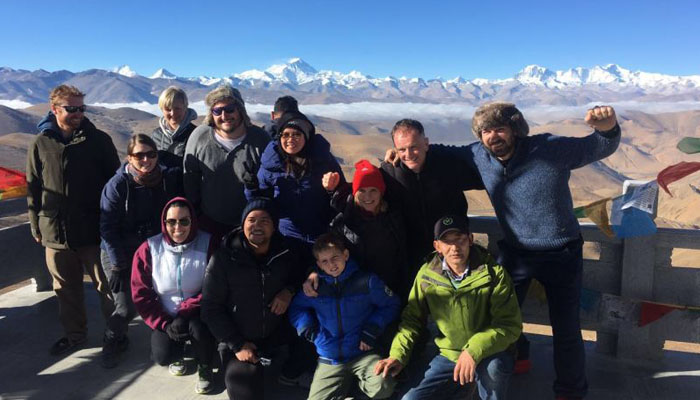
Nepal’s varying landscape starts with high mountains along its border with Tibet, dropping down to lower mountains and then foothills as you get further away from the border. These natural foothills, formed by the lifting of the Himalayas billions of years ago, drop down to rolling hills and lush valleys at altitudes of less than 2,000 meters, such as the stunning Kathmandu Valley, which averages around 1,500 meters.
As you move closer to the border with India, the altitude drops even more, and the forests of the central region of Nepal give way to the dense sub-tropical jungles of the lowland Terai region, lying at altitudes of just a few hundred feet.
Tibet vs Nepal: Religion and Culture Difference
Tibet is a mainly Buddhist land, where Tibetan Buddhism is the main religion. Introduced to Tibet in the 7th century, and taking over from the ancient animistic Bon religion of the plateau, Buddhism has spread across the plateau in such a way that it is a major part of the Tibetan culture, and Buddhist rituals and ceremonies can be found in every aspect of the daily lives of most Tibetans.
Bon, the original religion of the plateau, has a small number of followers still, largely thanks to the anti-Buddhist King Langdharma from the 9th century. There is also a small community of Roman Catholic Tibetans in the region, though they are very few and make up less than 0.01 percent of the population. However, Buddhism remains the predominant religion of the Tibetan people wherever they live.
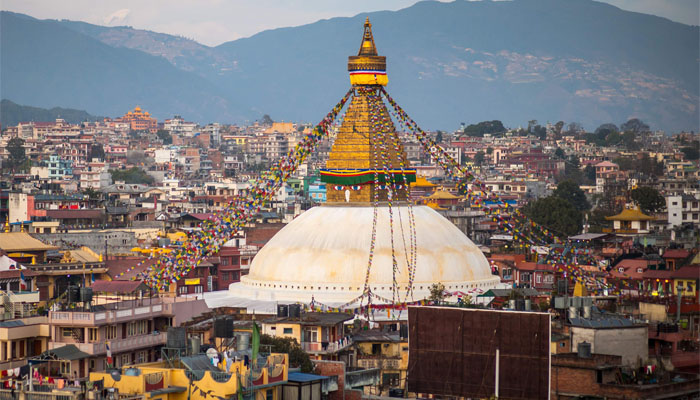
Nepal is a predominantly Hindu nation, albeit with a number of other religions mixed in, including Buddhism, Jainism, Christianity and Catholicism, Islam, and others. A very multicultural country, even the predominance of Hinduism in Nepal is not enough to keep it pure. Hinduism in Nepal has aspects from many other religions incorporated into it these days, especially Buddhism. Buddhist ceremonies and rituals have been adopted by Nepali Hinduism, and it is common to see Buddhists at Hindu ceremonies, and vice versa.
Tibet vs Nepal: Everest Base Camp Difference
Mount Everest lies on the border between China and Nepal, and both Tibet and Nepal have base camps for climbers and tourists.
In Nepal the base camp lies at an altitude of around 5,364 meters and is the higher of the two base camps. However, there is no view of the summit of the world’s highest mountain from the base camp in Nepal, and visitors need to trek up to the site at Kala Patthar to get a view of the peak.
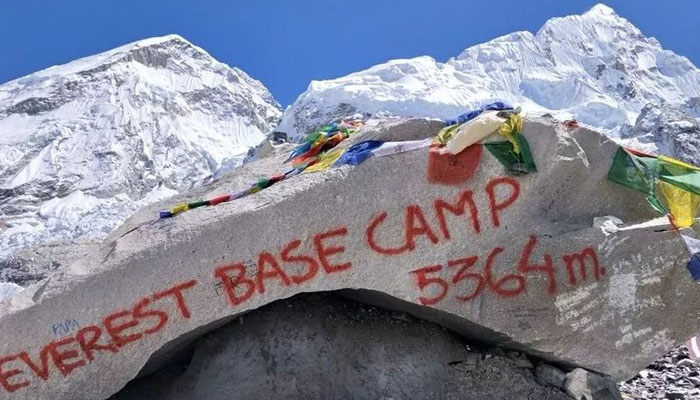
Getting to the base camp in Nepal is also a lot harder than in Tibet. Lying more than 60 kilometers from the nearest accessible town, visitors to the southern base camp need to fly to Lukla and then trek to the base camp, a hike that takes around 12 days round trip.
The Tibetan base camp on the northern side of Mount Everest, however, is much more easily accessed. A well-maintained road stretches along the G318 Friendship Highway leading to the northern base camp. Tourists can easily travel by road vehicle, enjoying a smooth journey without the need for trekking, all the way to the base camp. Additionally, an eco-bus service operates between Rongbuk Monastery and the base camp, offering convenient transportation options throughout the day.
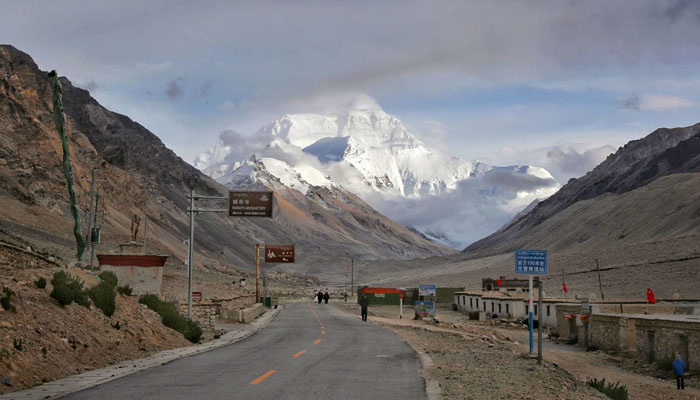
Tibet vs Nepal: Best Travel Time Difference
For Tibet, the best time to visit is from spring to autumn, encompassing April to October, which showcases the region at its finest. Warm and comfortable weather prevails, making it an ideal time for exploration. Summer is the peak season when the plateau is blanketed with vibrant and breathtaking landscapes. On the other hand, spring and autumn are perfect for mountain treks and clear views of Mount Everest's majestic peak.
Meanwhile, Nepal's dry season from October to May beckons travelers with its stable weather and minimal precipitation. This season sets the stage for remarkable treks across Nepal's stunning landscapes. The post-monsoon months of October and November are particularly popular, painting the country in lush greenery and revealing unobstructed mountain views.
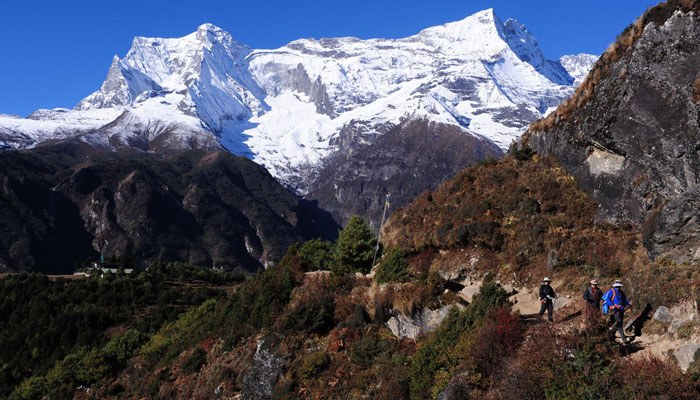
Tibet vs Nepal: Travel Highlight Difference
Traveling to Nepal and Tibet is a very different travel experience as well. Tibet is a land of Buddhist monasteries, vast open prairies, high mountains, and stunning lakes, all of which can be seen on any of the many tours that run across the plateau.
Monasteries and mountains are the main highlights of the tours of Tibet, and the provincial capital of Tibet Autonomous Region, Lhasa, is renowned for its sacred Jokhang Temple, a 7th-century temple that was built to house one of the oldest remaining statues of Buddha.
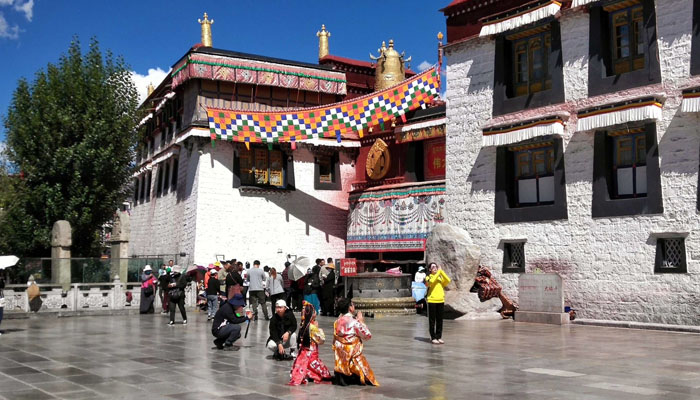
The plateau also holds many secrets, from the beauty of the Great Three Sacred Lakes of Tibet to the stunningly beautiful lush green valleys that can be found in a number of places across Tibet. Traveling in Tibet is an experience of culture, religion, discovery, and adventure.
Meanwhile, Nepal has a different idea of what it means to be adventurous, as it is the trekking capital of the world. The most popular reason for travelers visiting Nepal, trekking is big business and has become the largest part of the country’s tourism industry.
Hundreds of thousands of international travelers head to Nepal every year to make the treks to EBC and around the Annapurna Massif, as well as to many other places in the Nepali Himalayas and the lower foothills. Nepal also has a lot of other adventure sports you can try there, from kayaking and mountain biking to white-water rafting and paragliding.
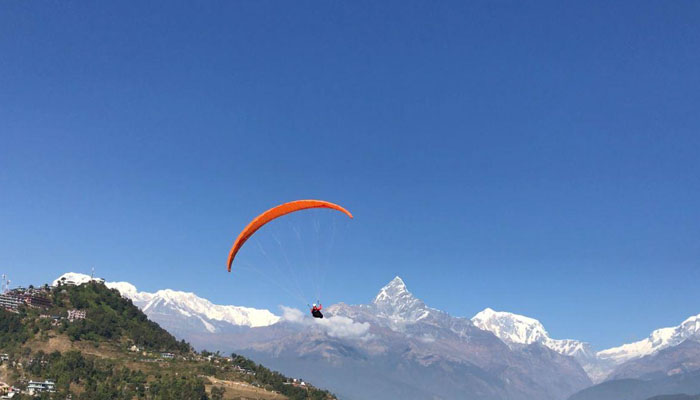
Nepal does have a cultural side to its tourism industry as well, and there are a good number of temples and monasteries that can be visited, for those that enjoy discovering more about the local cultures and religions. Majority of these are in the famous Kathmandu Valley, known as the “real Nepal”, though there are a few outside, such as the site at Lumbini, the birthplace of Buddha.
Why Visiting Both Tibet and Nepal is the Best Choice?
Nepal and Tibet are often traveled together as part of a longer tour of the area, and there are very good reasons to do so.
Lying side by side in the Himalayas, it is easy to travel from one destination to the other, and this can be done from either side of the mountains. Transport from Nepal to Tibet or Tibet to Nepal is easy and convenient, and the border crossing at Gyirong Port (Tibetan side of China) and Rasuwa Gadhi (Nepal) is well set up to give tourists to both destinations an easy way to transfer from the border to the nearby towns.
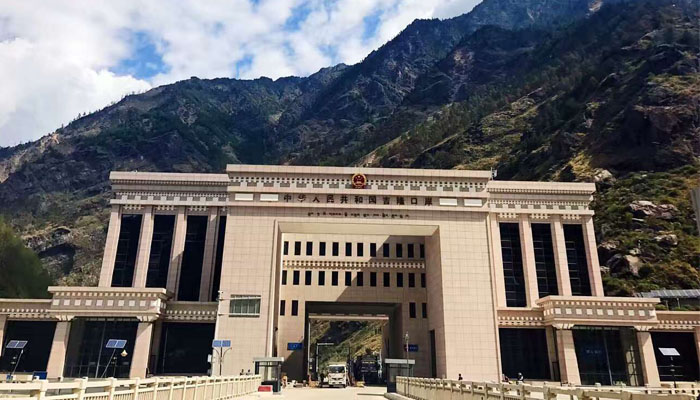
It is also a great way to discover the differences that exist between the two neighbors, from the different religions and cultures to the differences in landscapes and scenery. It is also fun to see the similarities between Nepal and Tibet, in the monasteries and temples, the high mountains, and the uniqueness of the two cultures.
How to Enjoy a Smooth Tibet and Nepal Tour?
Prepare the required permits for tibet and nepal tour.
While all you need for a tour in Nepal is the Nepal Entry Visa, which can easily be obtained once you arrive in Nepal, there are more requirements for a tour of Tibet.
To travel to Tibet, you'll first need a China Visa. If you enter Tibet from mainland China, you can get your Chinese Visa from the nearest embassy. However, for those entering from Nepal, the visa is a Group Visa, and can only be applied for by the tour operator once you arrive in Kathmandu.
Meanwhile, you also need to obtain the Tibet Travel Permit , which is a must before you enter Tibet, regardless of which side you are entering Tibet. Only a registered tour operator can make the application for the permit, and you need to book your pre-arranged tour before the permit can be applied for.

Additionally, there may be more documents to be obtained to visit different areas of the plateau region, such as the Aliens’ Travel Permit for Mount Everest Base Camp on the Tibetan side. But no worries! We can help to handle all of them on your behalf as long as you book your Tibet and Nepal tour with us.
Choose the best way to travel between Tibet and Nepal
There are two ways to travel between Nepal and Tibet, by flight or by overland tour. Flights run daily between Tibet’s Lhasa Gonggar International Airport and Kathmandu’s Tribhuvan International Airport, but are expensive despite it being just a 90-minute flight.
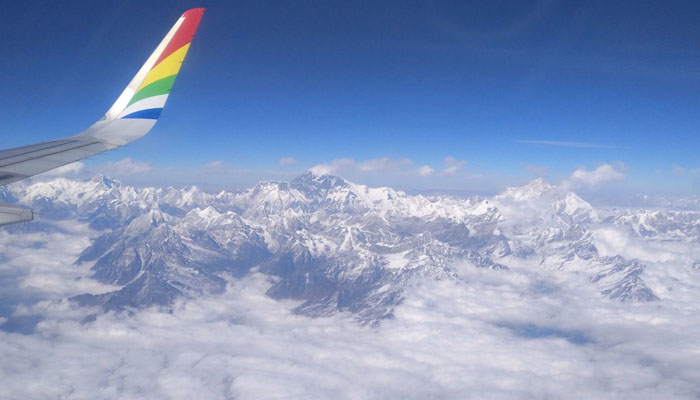
Overland travel is the best way to enter Tibet from Nepal, as you have the opportunity of acclimatizing to the higher altitude of the plateau on the first days in Tibet, instead of having to acclimatize in Lhasa after the flight, and then travel overland for your tour.
The trip from Kathmandu to Lhasa is an amazing journey that allows you to see the Himalayas from both sides, as the trip to the border from the Nepali capital is by car and is done over two days. After crossing the border, you will be met by your guide and driver, who will give you the tour of a lifetime for your journey through Tibet.
Tibet and Nepal are completely different places in the Himalayas, and should not be confused for each other. The wealth of differences actually outweighs the similarities of these two stunning destinations, which makes it well worth visiting both instead of just one or the other. If you are still unsure of whether to visit both Tibet and Nepal together, then come and speak to our professional tour advisors, who can help you with any other queries you may have.

Quick Inquiry
We'll get back to you within 24 hrs FOR FREE.
Related Articles
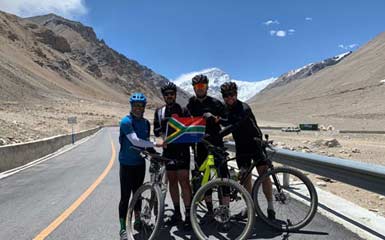
Recommended Tibet Tours
Price From Only US$939
Price From Only US$2059
Price From Only US$1169
Price From Only US$979
.jpg)
Price From Only US$509
Price From Only US$1289
Ask a Quick Question
Question Summary *
Please fill in your contact information, we will send you the answer by email
SUBMIT Cancel
Be the First One to Comment "Tibet vs Nepal: What is the Difference? Which is Better to Visit?"
Budget Tibet Group Tours
- > 4 Days Lhasa Tour
- > 5 Days Lhasa & Ganden Monastery Tour
- > 6 Days Central Tibet Tour
- > 8 Days Everest Base Camp Tour
- > 15 Days Mount Kailash Tour
Our Best Tours
- > Tibet Small Group Tours
- > Tibet Nepal Tours
- > Tibet China Tours
- > Tibet Nepal China Tours
- > Tibet Train Tours
Office Address : Room 8102 (first floor) of Lhasa Gang Gyan hotel, Beijing East Road, Chengguan district, Lhasa.
News & Updates
Sign up to receive our newsletter for great articles, stunning photos, and special deals.
Featured On:
- Get to Tibet
- Testimonials
- Travel Tips
- FAQ’s on Tibet Travel Permit & China-Tibet Travel Visa
- Welcome to Tibet Shambhala Adventure’s Tibet Travel Blog
- For Tibet Travel Contact – Tibet Shambala Adventure

Home » 8 days Nepal to Tibet overland tour
8 days Nepal to Tibet overland tour

8 days Nepal to Tibet tour
Nepal to Tibet Overland Tour
8 days Nepal to Tibet Overland Tour is the most famous tour where you can visit two countries with different culture, traditions, variety in food, Religion etc. some are common for instant Religion like Buddhism are also practicing in Nepal and shares the world’s highest mountain.
Nepal and Tibet are the closest neighbor where you can have breathtaking drive from Kathmandu to Tibet via Kyirong Border, for now the only border crossing between Nepal and Tibet is Kyirong Border. So, this Tibet tour will be the best option for you to experience with Tibet Shambhala Adventure. “A journey of a thousand miles must begin with a single step”.
How to get to Nepal? There are two ways to get to Nepal. First way to get to Nepal is by Air. Nepal is very much flexible to the tourists to enter Nepal so if you just think of traveling to Nepal, you can easily book a ticket and fly to Kathmandu, the capital city of Nepal. You don’t have to prepare visa before your arrival since Nepal government gives arrival visa to most of the countries’ tourist.

Usually, the shortest visa that you can get at the airport is 15 days Nepal tourist visa and it cost around 25US$. If you already plan to travel to Tibet from Nepal and back to Nepal after your Tibet travel, you might ask for a multiple entry visa so that you don’t have to ask again another visa to enter Nepal when you return from Tibet. The multiple visa might cost a little higher and longer days of visa.
How to look for a right travel agency in Kathmandu for Nepal to Tibet overland tour ?
There are thousands of travel agencies in Kathmandu and you will see several hundreds of travel agencies in Thamel Bazar of Kathmandu valley. Most of those travel agencies can help you to arrange Nepal to Tibet overland tour and can help you to get China group visa for Tibet travel.
Another way to look for a right travel agency is to search the best local Tibetan travel agency from google or other internet resources and you can directly deal with local Tibetan travel agency who can give you more accurate information and better Tibet trip cost prior to your arrival in Nepal or even from Kathmandu.
How to get China visa and Tibet travel permit for the Nepal to Tibet overland tour?
Make sure that you must have around a week time to wait in Kathmandu for the documents of China visa and Tibet travel permit if you book the trip in Nepal. The Nepalese agency has to get China visa invitation letter from the partner Tibetan travel agency and the application of China visa in Kathmandu takes you three working days.
Make sure that your passport is not a diplomatic passport and that you don’t enter Nepal with diplomatic passport because without Nepal visa on your normal passport, you will not be able to enter Tibet from Kyirong border.

Driving distance from Kathmandu to Kyirong border in Tibet ?
The driving distance between Kathmandu and Kyirong border is 150Km only but the road condition is not so good, especially during the summer because it is a heavy monsoon in Nepal and sometimes it is possible to have heavy landslides as well. An adventure four-wheel drive journey is started early in the morning in Kathmandu and arrive in Kyirong between 2-3.00 Pm Beijing time.
Kyirong is the bordered town between Nepal and Tibet. The total driving time is around 8-9 hours. The landscape is beautiful, dominated by hillside villages, forested gorge, and green rise field and the Langtang national park.

How to cross Nepal Tibet border?
Once you arrive in Syaburibesi at Nepal side, there are Nepali border guides who can travel to China Tibet side with special license so our Nepali guides will introduce to the border guides and will take you to Tibet side. Just take a departure stamp from Nepal custom at Syaburibesi and walk over the friendship bridge between Nepal and China Tibet.
Meet your local Tibetan travel guide at China custom with all your necessary Tibet travel permits with him. Be in the queue, give the passports to your Tibetan guide. The guide will do necessary paper work from China custom and then give the passports back. Get entry stamp on your China group visa and drive to Kyirong town which is 18km from the border. The road condition is far better than the road in Nepal.

Is it important to spend a night in Kyirong border?
It is very important to have a night in Kyirong during Nepal to Tibet overland tour because in the one hand, the travel distance from Kathmandu to Kyirong is very long and tough. In the other hand, your Tibetan guide must make another Tibet permit from PSB (People’s Security Bureau ) by showing your original passports for the travel route from Kyirong to Lhasa. Another reason to spend a night in Kyirong is to acclimatize to the condition of high altitude in order to succeed your Tibet travel.

How far is the travel distance from Kyirong to Lhasa?
This Nepal to Tibet overland tour officially begins from Kyirong town. Kyirong is the birth place of Milarepa who is one of the most famous Buddhist Yogi, got enlightenment within his lifetime. If the time permits, you can also visit this sacred cave on a rocky mountain to the left side of the main road to Lhasa after around 20km drive from Kyirong. The total distance of 8 days Nepal to Tibet overland tour is around 1098km from Kathmandu to Lhasa, the capital city of Tibet.

What you can see during 8 days Nepal to Tibet overland tour?
This Tibet overland tour will take you through some of the highest mountain passes including Gungtang la pass, Gyatso la pass, Karola pass and Kampa pass. All those high mountain passes are above 5000mts above sea level and you will enjoy a panoramic view of different Himalayan Mountain ranges and beautiful lakes including Yamdrok lake.

You will drive through beautiful Tibetan villages, dominated by their unique Tibetan architects with white washed walls, colorful prayer flags raised onto the roof of the Tibetan traditional houses, fertile lands of barley and rapeseed flowers, great view of Mt Everest and other above 8000mts mountains including Shisha Bangma and Jo Oyu.

Visit Shigatse, the second largest city of Tibet and Tashi Lhunpo monastery, one of the six largest monasteries in Tibet and the seat of the successive of the Penchen Lama.
Gyantse town, one of the least influenced town from modernization and a home to Palchoe monastery and Kubum Pagoda stupa, the largest Buddhist stupa in Tibet with 9 stories high. The old town of Gyantse and the Tibetans who are into their traditional costume makes the town very unique and special. Old fortress of Gyantse Dzong and beautiful Tibetan traditional houses make it a real Tibet.
After Gyantse, your 8 days Nepal to Tibet overland tour takes you to Lhasa city via Karola glacier, located to the foot of Nechen Kangsang snow mountain ( 7200m ) and Yamdrok lake, one of the most beautiful and most sacred lakes in Tibet. You will be driving along the lake side and will enjoy seeing a fantastic view of entire Yamdrok lake and Nechen Kangsang snow mountain from the top of Kampala pass which is the last highest mountain pass during your 8 days Nepal to Tibet overland tour.
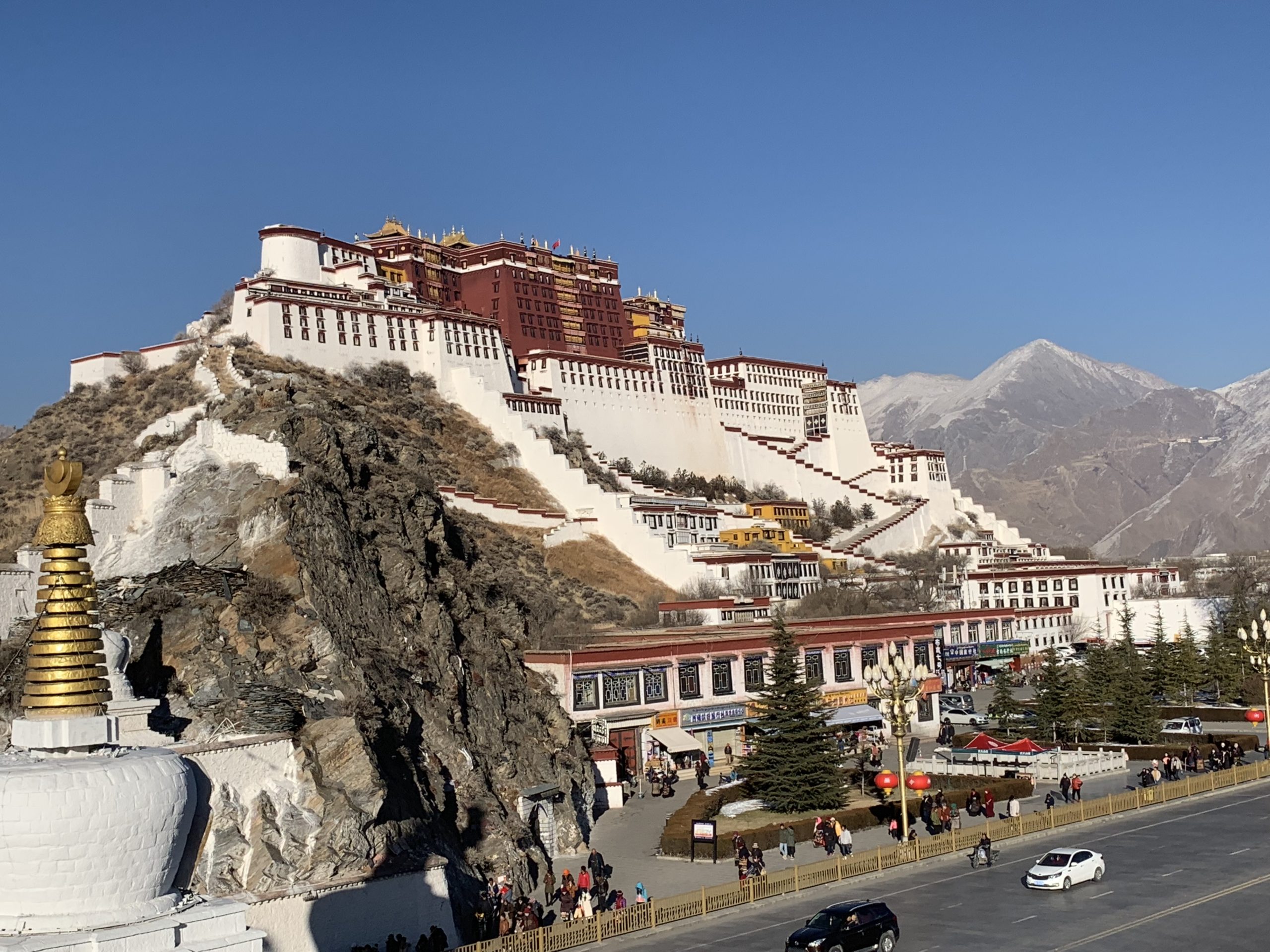
Driving down the zigzag road of Kampala pass, you will enter into the Brahmaputra river valley ( Yarlung Tsangpo in Tibetan ) The valley is created by Brahmaputra river which is the longest and largest river in Tibet, starts its source from the western part of Tibet near Mount Kailash, flows through Shigatse, Tsetang, the cradle of Tibet, located to the south of Lhasa city and continuously to the south and finally empties into the Bay of Bengal.
In the summer time, the valley is very beautiful by extreme green trees, barley field, and beautiful Tibetan villages and finally enter into Lhasa, seeing the Potala Palace standing still in front of you when you cross over the bridge of Lhasa river after Lhasa train station, Eventually, reaching Lhasa as your final destination of the 8 days Nepal to Tibet overland tour.
Lhasa is the center of Tibetan culture, religion, business and official headquarters. It is also the home to some of the most famous and greatest sights of the Buddhist temples, Palaces and monasteries. Some of them have been listed in the UNESCO world heritage sites. Visiting the highlights of the Lhasa city including the Potala Palace, Jokang temple as the UNESCO world heritage sites and Drepung and Sera monasteries, the largest Buddhist philosophical colleges in the world, dominated by beautiful Tibetan traditional buildings, old wall painting and lots of ancient culture and antiques inside the monasteries.
If you visit the monasteries during special occasions, you will witness monks chanting, musk dancing and of course monks debating in Sera monastery. During your Tibet tour, you can also see some of Tibetan festivals such as Shoton festival or Yogurt festival in the middle of summer, monks’ musk dancing festivals or Thangka display festivals if you are lucky to take Tibet tour for a right time of the festival.
During your Tibet tour, it is very important to take a walk around the Jokang temple and enjoy walking with local Tibetans around the Jokang temple and watching the Bazzar in Bharkor. In front of the Jokang temple, it is very interesting to spend some time to watch a big group of Tibetan pilgrims who are doing prostration in front of the joking temple to pay homage to the most sacred statue of Buddha Shakyamuni.
Condition of the Road from Kyirong to Lhasa:
The road condition in Tibet these days is very good and most part of the road in all the regions of Tibet is paved so it make the tourist to travel to Tibet more conveniently than before. Regarding on the road condition of this 8 days Nepal to Tibet overland tour, apart from Nepal side, the road for entire Tibet journey is paved so it is an easy and comfortable road journey except crossing some of the highest mountain passes of the Himalayas through many zigzag roads.

When is the best time to do 8 days Nepal to Tibet Overland Tour?
The best time to do this beautiful Nepal to Tibet overland tour is from April-October because during this period of time, you can see beautiful green scenery, warm and beautiful weather, comfortable temperature and many Tibetan traditional festivals also occur during summer time but you can do this Tibet tour throughout the year because of a good road condition and good facility on the way from Kyirong to Lhasa.

What kind of food you will get during Nepal to Tibet overland tour?
Nowadays, no need to worry about the food in Tibet during your Tibet trip because there are plenty of Chinese and Tibetan restaurants in every stop like Kyirong, Tingri, Shigatse and Gyantse. In Kyirong, Shigatse and Gyantse, you can also find restaurants which serve continental food as well.
Once you arrive in Lhasa, you will have a variety of food options that there are western, Chinese and Tibetan restaurants and many of them are high quality restaurants where you can get different kinds of imported wine and whisky.

What kind of hotel you will get during this Tibet tour?
Nowadays, the hotel facility in Tibet has been improved a lot for the last 10 years so there are different optional hotels available on the way during your Tibet trip.

What kind of guide you will get for the Tibet trip ?
Most of the time, you will get English speaking guides in Tibet but if you have a specific language speaking guide request, Tibet Shambhala Adventure can arrange you French, German, Italian, Spanish and Russian speaking guides for your Tibet tour. All the guides of Tibet Shambhala Adventure are local Tibetans and they are knowledgeable and very well know the culture, religion, lifestyle of the people of Tibet and so on.
What kind of vehicle you will get during Nepal to Tibet overland tour?
In Tibet, you must have a tourist licensed vehicle and it depends on what kind of vehicles you will be provided. Normally, it depends on the size of your group. If the group number is above 4 people, we will arrange comfortable mini van, or van, mini bus or bus according to the group size. Tibet has the largest tourist bus as 29 seats. If your group is bigger than 27 people, then we will arrange two buses for the Tibet trip.

Is there high altitude problem for this Tibet tour?
Usually, having a little dizzy or headache in the beginning of Tibet tour, it is very common and usually, this kind of symptom will be gone after 2-3 days in Tibet. Drinking a lot of water is compulsory and you might take some high altitude herbal medicine, made in Tibet which really helps you to avoid from altitude sickness. In general, most of the tourists don’t get severe altitude sickness because this kind of Tibet tour is slowly moving around.
How is the travel Rescue and evacuation system for this Tibet travel tour?
Actually, there is no need of travel evacuation for this kind of Tibet trip because you are traveling through towns and cities so just incase you are sick from altitude, your guide will take you to the hospital nearby and they will take care of altitude problem. If they can not solve the problem, then they will send you to Lhasa or Shigatse for the further treatment. In Tibet, we don’t have helicopter evacuation service. You will be sent to the hospital by ambulance.
Does the trip cost cover Tibet travel insurance?
If you book Tibet trip with an officially registered travel company in Tibet like Tibet Shambhala Adventure, they all have travel agent liability and travel accidental insurance but we recommend you to buy personal and evacuation travel insurance to make sure that all your cost will be covered just incase you are sick from altitude.
Can we get Medical kit and Oxygen during your Tibet tour?
Tibet Shambhala Adventure always offers a big full cylinder of oxygen in your vehicle and medical kit including some altitude medicine, cold and headache medicine, bandages and other necessary equipment for the medical kits.
How much does it cost for 8 days Nepal to Tibet overland tour?
The cost of Tibet tour mainly depends on as below:
- Which month you are traveling to Tibet?
- Number of People in a Tibet travel group.
- What type of accommodation you are requesting
- If you want us to include all three meals etc
In General, if you take a private 8 days Nepal to Tibet overland tour, it will cost around 1300US$ per person approximately on the basis of 2 people group size but if you are looking for a low budget Tibet tour, you can join our fixed Departure tour from Kathmandu to Lhasa and this Tibet tour departure is guaranteed on every Saturday. To have more information of this Tibet trip, please check Tibet travel at Tibet Shambhal Adventure .
Can you extend the tour to mainland China after this Tibet trip?
Yes, we can definitely help you to extent this Tibet tour to any kinds of mainland China cities. You can travel to mainland China from Tibet by flights or train but the most important thing is that you must let your travel agency know when you book the Tibet travel because you must ask for a separate single China visa when we apply for the China visa in Kathmandu. Once you have a separate China visa, you can easily travel to mainland China from Lhasa.
About The Author:
This Article has been written by Dawa Tsering, Managing Director at Tibet Shambhala Adventure . Dawa Tsering, a resident of Lhasa city, has worked 20 years in the Tibetan tourism industry, traveling to every corner of Tibet including the western and eastern Tibet, Qinghai, Gansu, Yunnan, Kardze Tibetan Autonomous Region. He has dedicated a lot to the Tibetan tourism industry especially, adventure trekking, motor biking, mountain biking and Tibetan home stay. He is fluent in Chinese, Tibetan and English. He can tailor you any type of unique Tibet tour and Tibet trekking tour throughout the region.
Contact Information:
Company Name: Tibet Shambhala Adventure
Contact Person: Dawa Tsering
Designation: Managing Director
Contact No.: +86-891-6386662
Fax: 86-891-6321655
Address: Nyangra Road, Xinfu xincun, 89
Lhasa, Tibet Autonomous Region,
China 850000
Email: [email protected]
Website: https://shambhala-adventure.com/
Recommended Tibet Tours & Trekking

Tibet Trip: 8 Days Everest base camp tour from Lhasa to Nepal
$1180 details.

Tibet Travel: 7 Days Tibet Nepal Overland Tour
$1080 details.
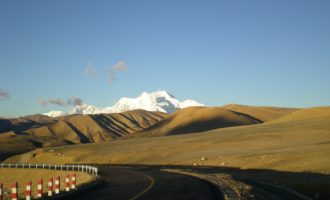
Nepal travel: Nepal to Tibet Overland Tour
$899 details, add your comment cancel.

happy.tibet.tours

Tibet Inquiry

+86-13908907271


A Complete Guide to Travel Nepal, Tibet, and Bhutan in ‘One Go’
Planning a trip to the Himalayan countries Nepal, Tibet, and Bhutan in ‘One Go? Here is a complete guide to help you plan the Himalayan single trip smoothly.
“Based on our experiences organizing Nepal Tibet Bhutan Tour packages for more than a decade, we present the most important things that you should know before traveling to these nations in a single trip.”
A trip to Nepal, Tibet, and Bhutan as 3 Country Himalayan destinations that cover three different countries in a single tour allowing us to experience the culture, tradition, history, and religion of each country. From the magical city of Kathmandu including ancient temples & palaces to the roof of the world of Tibet including the Potala Palace & monasteries in Lhasa and Tibet Everest Base Camp to the last Shangri-La, Bhutan to explore the cultural cities of Paro and Thimphu with a hike to Tiger’s Nest . This can be the complete combo trip to the Himalayas and learn about the culture, history, and religion (Buddhism and Hinduism) that are being practiced differently in each country.
How to plan the 3 Country Himalayan tours (Nepal, Tibet, and Bhutan)?
First of all, it is advised that you allow at least two weeks to explore these three beautiful Himalayan destinations and choose the best tour company that can help you plan all the arrangements including Visas and flights to and from Paro and Lhasa. 3 Country Himalayan Tours (Cross-Country) including Nepal, Tibet, and Bhutan can be started from any city such as Kathmandu, Lhasa, or Paro . Depending on your flight, destination, and cheapest fare; you can choose the cities to start your journey of 3 Country Himalayan Tours. However, some procedures need to be followed before you book the tour. Your tour operator can organize everything including Visas, flights, etc and it is wise to know everything before you plan this trip.
3 Country Himalayan Tours STARTING from Kathmandu
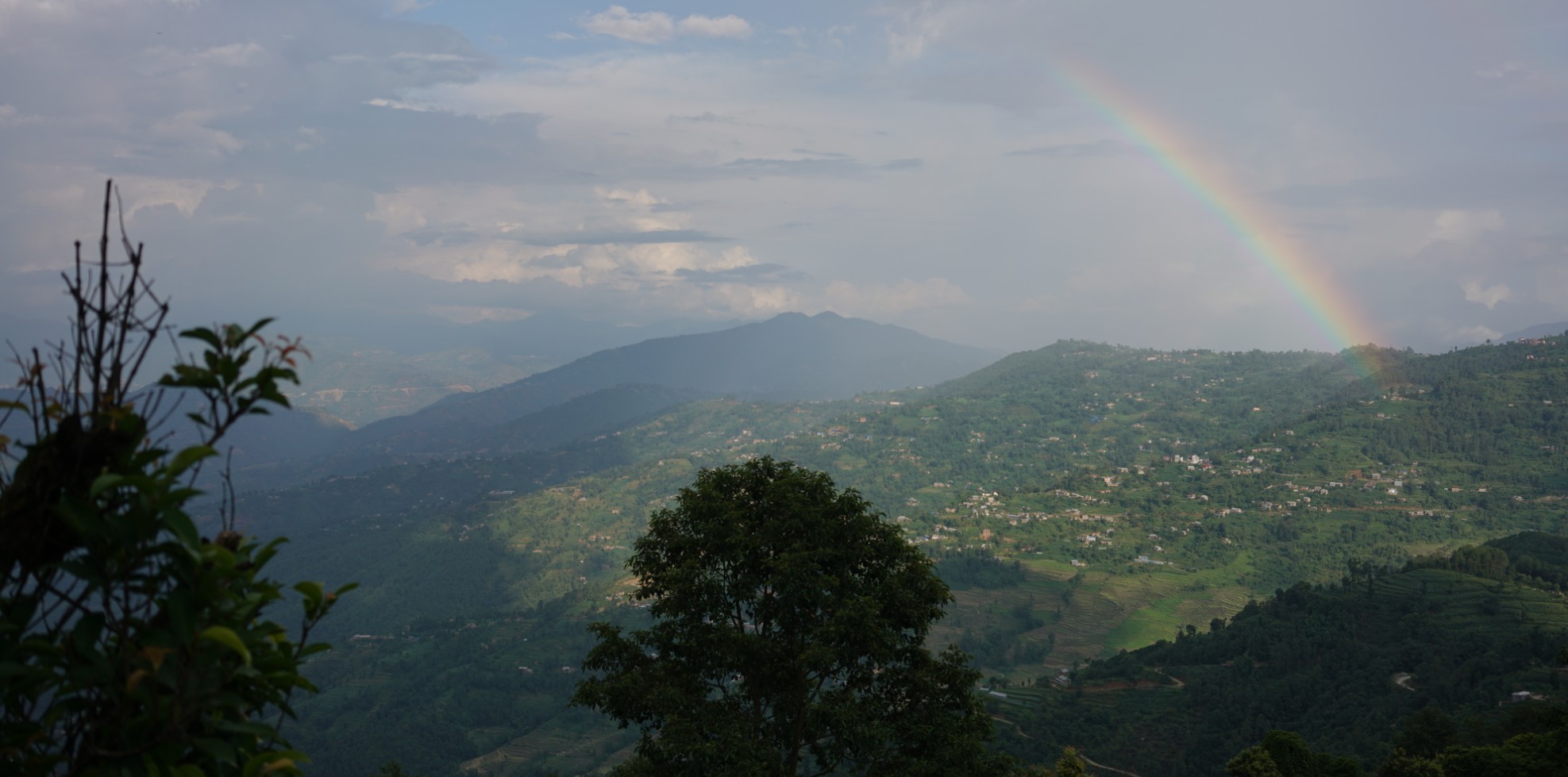
Trip Starts: Kathmandu (Nepal)
Trip ends: paro/kathmandu, itinerary in order: kathmandu (nepal) – lhasa (tibet) – bhutan, total no. of days suggested: 11-14 days.
Starting the trip from Kathmandu could be the first choice for most travelers. It is much easier to plan the 3 Country Himalayan Tours including the flight and visa from Kathmandu. Tour agents based in Kathmandu are well experienced in organizing your tours professionally. However, it is important to select the best itinerary and tour company to have a hassle-free arrangement. Here are the point-wise suggestions that you can take into account before you plan a trip starting from Kathmandu.
- First of all, make sure your visa is valid at least 6 months before the tour start date and obtain a multi-entry Nepal Visa either on arrival in Kathmandu or your hometown. Send the color-scanned clear passport copy to your tour agent whom you are looking to book the entire trip after you confirm the tour and price. It is advised to book all three destinations with the same company to have a better experience.
- Allow at least 4 working days in Kathmandu to process the Tibet Group Visa (TGV) . Your original passport must be submitted to apply for the TGV at the Embassy of China in Kathmandu and your tour operator can process the visa on your behalf. Until TGV is issued, you can go for a tour around Kathmandu and its surroundings or take a half-day H elicopter tour to Everest Base Camp . If you are a fit hiker, you may go for the Everest Base Camp Trek , Annapurna Base Camp Trek , Ghorepani Poonhill Trek , Kathmandu Culture trek , or any other guided private day tours .
- It is advised to pick Tibet first and then Bhutan . This helps save your time and the Bhutan Visa Clearance can be ready during the trip to Tibet. You can choose Tibet tours from 3-4 days to 7-8 days, depending on your holiday time and budget. If you are planning a budget tour for 7-8 days in Tibet, you can choose 7 nights 8 days Kathmandu to Lhasa overland Tour which starts every Saturday from Kathmandu or you can plan a tailor-made private tour.
Suggested Itinerary | 3 Country Tour Nepal Tibet Bhutan – 11 Days
3 country himalayan tours starting from lhasa -arrive from china (beijing/chengdu) .

Trip Starts: Lhasa, Tibet (3650m) – Arrive from Beijing or Chengdu via flight or train
Trip ends: paro/kathmandu, itinerary in order: lhasa – kathmandu – bhutan, total days suggested: 11-14 days.
The 3 Country Himalayan tour can be started from Lhasa – before you book the flight and tour; you should be aware of the permit and visa requirements for the Tibet tour. If you are entering from Beijing or Chengdu to Lhasa via flight or train; make sure that you have the original permit in hand before you leave for Lhasa. You can plan the Lhasa-only trip or take an overland tour to Kathmandu via Everest Base Camp.
- To process the tour, you will be required to obtain a Chinese individual tourist visa in your home country and send it to your tour operator once you confirm the tour and price. Because only the tour company is allowed to take you around who issues the permit for you. So choosing a different company after getting permits is not possible.
- If you are working or studying in China, you will need to send the visa copy along with the leave/no objection letter from your concerned employer or university.
- Your tour operator will process the permits which take a minimum of 5-7 working days or it might take even longer during the peak season (July, August, and September).
- After the permits are issued in Lhasa, the original permits should be couriered to the address in China where you will be staying for a night (It is advised to stay at least a night in China). Send your apartment or hotel address where the agent can send them safely, grab your permits, and fly or train to Lhasa. However, in some routes, the color print of your permits is accepted.
After the trip to Tibet is over, you may fly into Kathmandu from Lhasa or take an overland tour to Kathmandu via the Kerung border . If you are traveling overland, there will be a guide at the border to receive you and take you to Kathmandu, it takes about 7-8 hours through the rough road to reach Kathmandu. Then, you can explore around Kathmandu and beyond before you fly to Bhutan.
Suggested Itinerary | 18 Days Classic Tibet Nepal Bhutan Overland Tour from Beijing
3 country himalayan tours starting from paro, bhutan.
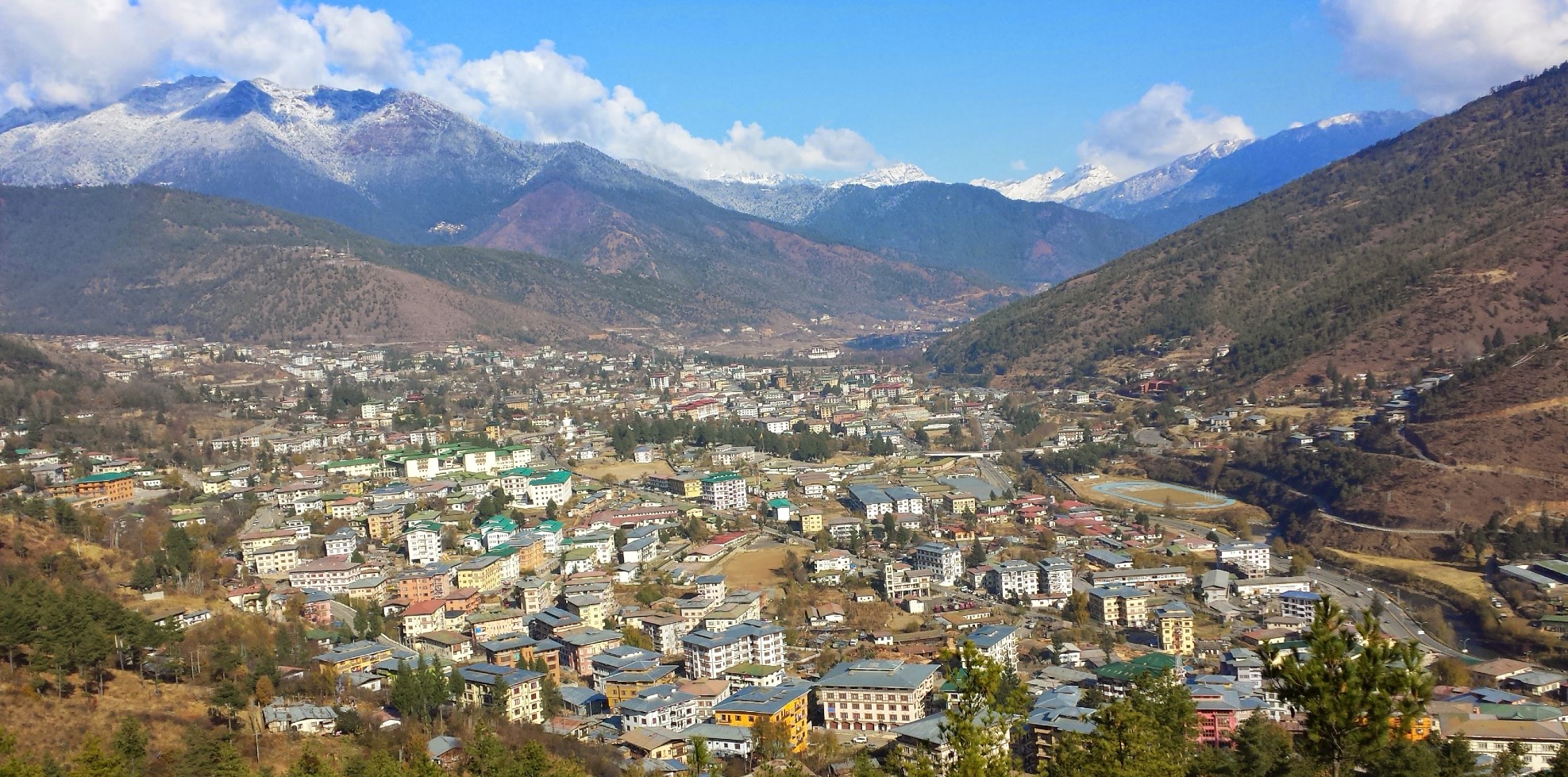
Trip Starts: Paro, Bhutan
Trip ends: lhasa (fly to mainland china/kathmandu), itinerary in order: bhutan – kathmandu – lhasa.
Same as Kathmandu, you can plan 3 Country Himalayan Tours starting from Paro, Bhutan. You can land at Paro airport from several destinations such as Thailand (Bangkok), India (Delhi, Kolkotta Guwahati, Bagdogra) Singapore, Bangladesh (Dhaka), and Nepal (Kathmandu) . There are two flights ( Du rk Air and Bh utan Airlines ) in operation, check the destinations and available dates before you confirm the date of your holiday to the Himalayas. After you complete the tour in Bhutan, you will fly to Kathmandu, a short flight from Paro to Kathmandu, you can enjoy the eye-level Himalayan vistas from the window – request for a left seat window for KTM to Paro and a right window seat for Paro to KTM. As described above, you will need to allow at least 4 working days in Kathmandu to process for TGV and fly to Lhasa or travel to Lhasa via border crossing.
3 Country Himalayan Tour BUDGET Plan
It is advised to travel in a group to minimize the tour cost as tailor-made private trips are expensive especially if you are traveling solo. Being two people & choosing 3 country tours for about 11-14 days with a 3-Star hotel stay with breakfast, guide, private transportation, and entrance fees; the budget would be between USD 3500-USD 5000 Per Person including flights and visas to/from Kathmandu. However, it depends on the package you choose, there will be varieties of budget to luxury versions and prices may differ accordingly.
RELATED CONTENT | Why not learn about Bhutan Travel Information and Tibet Travel Information ?
The destinations Tibet and Bhutan DO NOT allow independent travel and it is a must to hire a licensed guide. The trip has to be booked through the local tour company or any international associates. There are some group tours available for the Tibet tour that you can check before you book the trip. However, if you are a couple or group of friends/family of three or more with similar travel interests, it is wise to book tailor-made private trips to have a better travel experience.

Best time to go
It is possible to travel to three destinations all year round and getting the perfect weather for each destination at the same time can be difficult sometimes. Tibet is on the high Himalayan plateau and has arid weather and long winter the best time to visit Tibet is during summer (June, July, August, and September) whereas Nepal and Bhutan share sub-tropical climates with four seasons such as spring ‘pre-monsoon’ (March, April, May), Summer ‘monsoon’ (June, July, August), Autumn ‘post-monsoon’ (September, October, November), and winter (December, January, February). Exploring only cities on this trip, all seasons are suggested, however; if you wish to choose the best months for combining the trip for all three destinations, it is recommended to travel during April, May, September, October, and November to enjoy the best weather/climate of three places of Nepal, Tibet, and Bhutan.
The Best tour package that you can choose from HimalayanWindows
There are several packages that you can choose or customize as per your requirements; here are some of the popular packages that are liked by our previous clients – take a look:
- 3 Country Tour (Nepal, Tibet Bhutan) – 11 Days
- Nepal Tibet Bhutan Culture Tour – Luxury Version – 12 Days
- Bhutan Tour from Kathmandu- 7 Days – Add-On Tibet, if you are interested
- Everest Base Camp Trek and Bhutan Tour- 17 Days – Add-On Tibet, if you are interested
- Himalayan Combined Tibet Nepal Tour- 14 Days – Add-on Bhutan, if you are interested
- Cultural Tour and Trekking (Nepal, Tibet, and Bhutan) – 20 Days
The purpose of this blog is to provide essential information for those planning a trip to Nepal, Tibet, and Bhutan as part of a single package. If the trip ideas mentioned above do not fully satisfy your requirements, please feel free to contact us at any time. It is important to note that rules and protocols, particularly in Tibet, can change unexpectedly. Therefore, it is wise to stay updated with the latest information before finalizing any decisions.
At HimalayanWindows, we are delighted to address any questions you may have and assist you in planning a once-in-a-lifetime trip. We wish you a joyful and safe journey as we emerge from the aftermath of the Coronavirus (Post-COVID-19) pandemic and gradually return to normalcy. Namaste!
*This blog was last edited by HimalayanWindows on July 4, 2023.
Have questions? Make us an enquiry, our experts will help you customize and plan your perfect trip. Let’s get started!
Related Posts
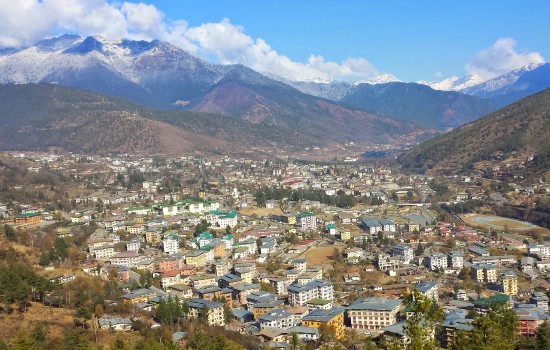
Bhutan: Best 10 Places to Visit in 2024
Introduction to Bhutan's Majestic Beauty Bhutan, a hidden paradise nestled in the…
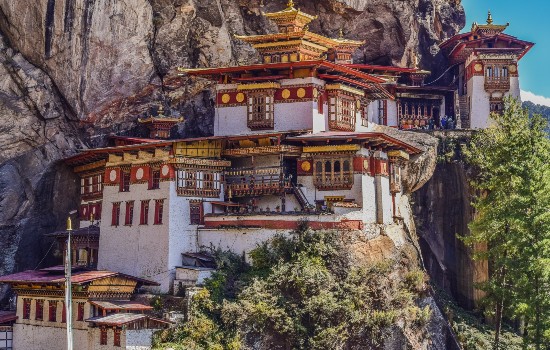
Bhutan Cuts Tourists Fee by Half to Boost Tourism
The Himalayan Realm of Bhutan is set to cut in half the…
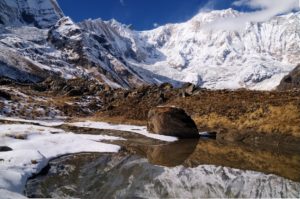
Journey of a lifetime: Trekking to Annapurna Base Camp
Embarking on the epic trek to Annapurna Base Camp is an adventure…

Planning Your Nepal Trip: Seasonal Insights and Practical Tips
Nepal, a captivating blend of majestic landscapes, rich cultures, and spiritual heritage,…
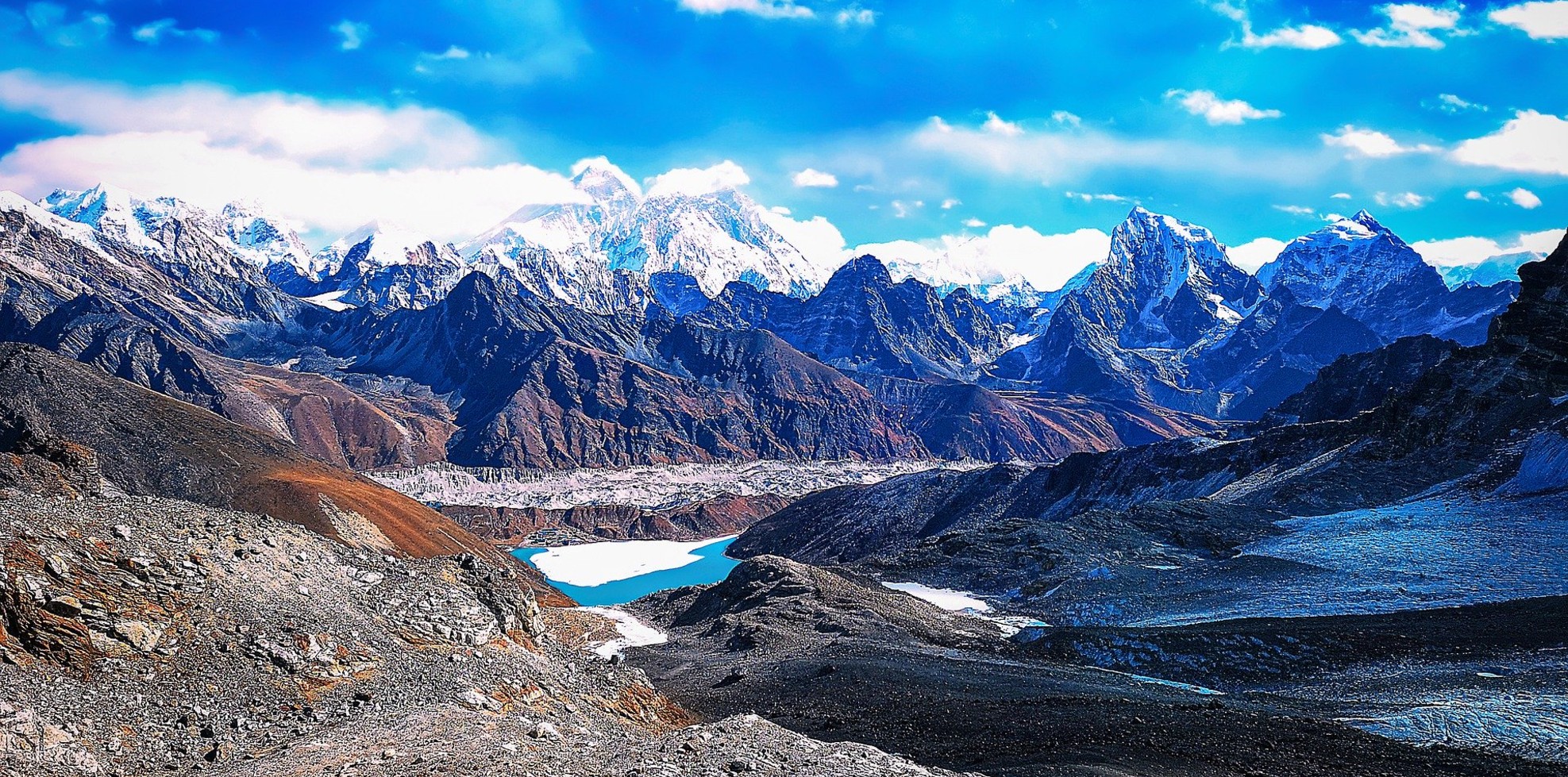
Best Time to Hike Everest Base Camp w/Pros & Cons
Gokyo Ri View When is the best time to Hike Everest Base…
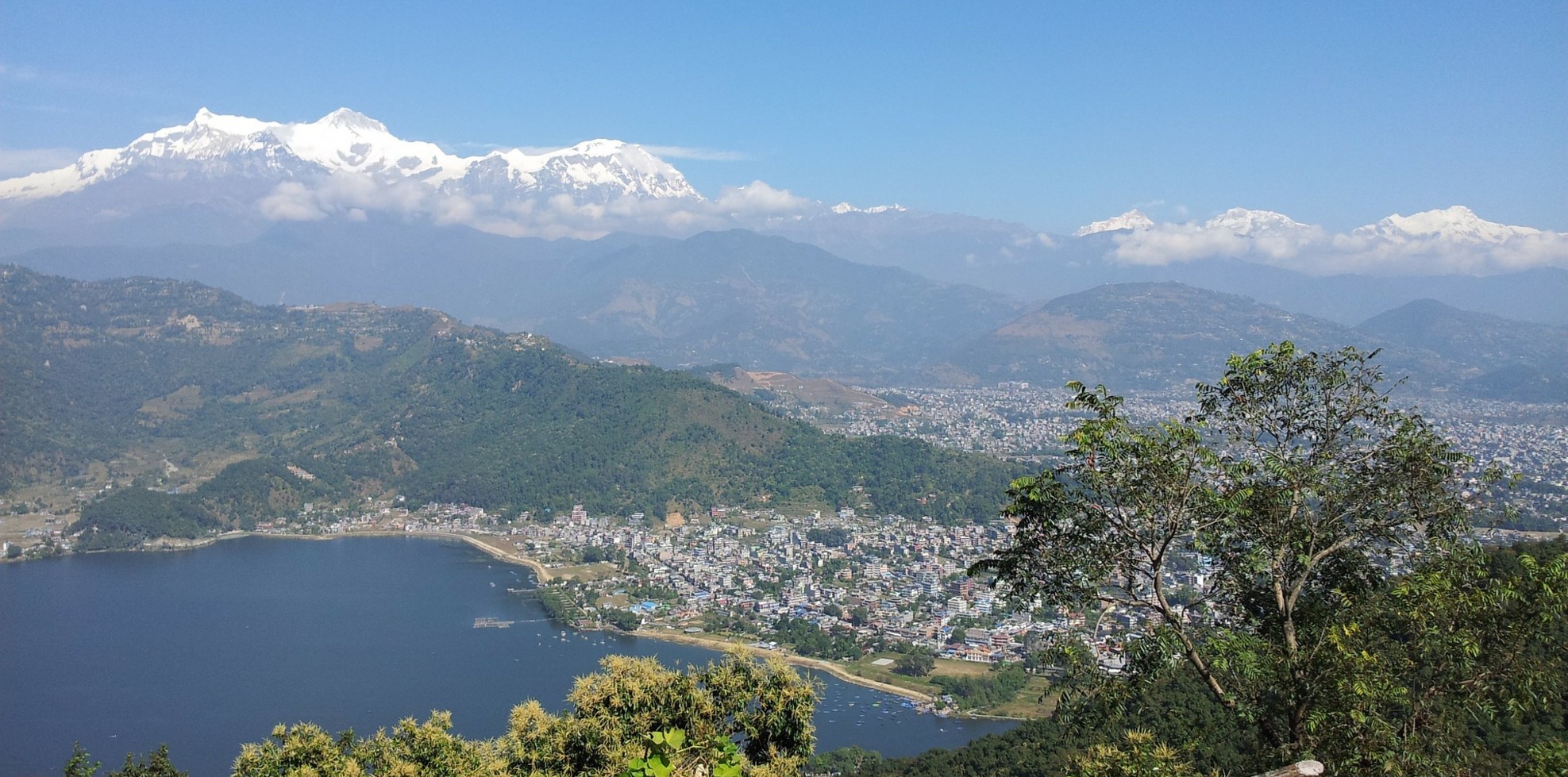
Explore the Enchanting Himalayas: Wonders of Nepal and Bhutan
Introduction: Embarking on a journey to Nepal and Bhutan is like stepping…

Lhasa city tour
Lhasa-ganden monastery- namtso lake.
- Everest Base Camp tour
Lhasa -EBC-Nepal border
Lhasa -ebc-mt kailash tour, bayi-pomi-rawok lake.
- Tibet travel FAQS

Travel in Tibet Tour Company
Most popular packages.

Lhasa -Everest Base Camp Tour

We are happy to make you happier

How to get into Tibet
Tips before travel.

Aenean lacinia bibendum nulla

Post Different Thumb

Let see how beautiful Tibet is
Enter from china to lhasa.

Enter from Nepal to Lhasa

Travel in Tibet is a vlalalallalalllalllalalla la fldjsa fjdlsa jfldks jfldksj fldskj
From the blog

Hello world!


More Than Just Mountaineering: 10 Most Thrilling Things To Do In Nepal
- Experience the breathtaking beauty of the Himalayas by taking a scenic flight over Mount Everest and other stunning peaks in Nepal. Enjoy the views of lakes and green landscapes during this 50-minute flight.
- For water sport enthusiasts, canyoning in the Bhotekoshi Valley offers an adrenaline-pumping experience. Jump off cliffs into mountain streams and explore the gorges of Nepal for an exciting water adventure.
- Stand-Up Paddleboarding on Fewa Lake in Pokhara Valley is a unique and thrilling way to enjoy the calm waters and beautiful views of the surrounding mountains. Perfect for adventure seekers year-round, except during the monsoon season.
Nepal is naturally beautiful, with endless stunning landscapes and dramatic peaks towering into the skies. The country is renowned for its massive mountain ranges and mountain-related adventures that attract outdoor fanatics from around the world. However, Nepal is beyond just mountains. There are many incredible destinations, ranging from land to the sea, where adventure seekers can engage in adrenaline-pumping outdoor activities.
From paragliding and skydiving to bungee jumping and ziplining, this incredible Asian beauty has something to offer every outdoor enthusiast beyond Mount Everest. Without further ado, here are the most thrilling things to do in Nepal beyond the Himalayas.
Related: 10 Most Thrilling Once-In-A-Lifetime Adventures You Can Only Experience In Canada
Fly Over The Himalayas
One of the best ways to come up close to the Himalayas is via a flight over Mount Everest. An experience for a lifetime, there's no need to skydive if one isn't willing to embark on such an extreme sport. Just enjoy the scenic and stunning views on the flight for around 50 minutes.
Beyond Everest, some of the most spectacular peaks that one can also see in the sensational flight include Mount Makalu, Mount Dorje Lhakpa, and Mount Pumori. Aside from the mountains, views of gorgeous lakes and green landscapes are also part of the dreamy experience.
Buddha Air offers this experience , while Top Himalaya Guides is also a great alternative.
Go Canyoning In The Bhotekoshi Valley
Canyoning is an amazing water sport that can be enjoyed in different ways, including rock climbing, rappelling, and swimming. However, the most thrilling of them is jumping into the mountain stream from a cliff and flowing with it. The gorges of Nepal and their fast-flowing rivers make the experience even better.
Head to Bhotekoshi Valley River and plunge into its streams to enjoy a refreshing bath. Alternatively, visit the waterfalls and join the cascading waters as they pour into small pools below to enjoy the magic of this water sport.
- Location of Bhotekoshi Valley: Near the Tibet border, 3 hours drive from Kathmandu
- Best time for this experience: March to May, September to November
Go Stand-Up Paddleboarding At Fewa Lake
Paddling feels different while standing, and thanks to the calm waters of Fewa Lake, one can comfortably engage in this activity. Located in Pokhara Valley, the lake is beautiful in light blue and surrounded by mountains that stand guard over it. Paddleboarding over it is one of the coolest things to do in Nepal beyond the mountains.
As the freshwaters dance alongside the waves, scenic views of the mountains and the landscape beyond make the experience thrilling and truly rewarding.
- When to go paddleboarding in Nepal: Year-round, although rivers can be extreme during monsoon season, which lasts from mid-June to early September.
Related: For Adventurers: 10 Best Countries With The Most Thrilling, Once-In-A-Lifetime Adventures
Explore Siddha Cave
The Siddha Cave in Bimal Nagar offers a unique experience for adventure seekers who want to deviate from their routine adventures. The cave is 0.5 kilometers long inside and nearly 50 meters tall. It is Nepal's largest cave and can comfortably accommodate 2,500 persons at a time. Although that rarely ever happens. Hence, a visit here allows one to explore this hidden natural gem without the crowd.
Bats are common sights here, including stalactites, stalagmites, and wonderful cathedral-like halls in the dark.
- Location of Siddha Cave: Bimalnagar, Tanahun District, 4 hours from Kathmandu
Go Skydiving Over Everest
Skydiving is one of the world's most thrilling adventures that every traveler should check off their list. Fortunately for those on a budget, there are many amazing yet affordable places to go skydiving . But whatever one pays for skydiving In Nepal is worth it; it is special and comes with views of the astonishing Himalayas range.
Imagine dropping off a plane over the incredible Mount Everest , descending at thousands of feet above sea level before engaging a parachute and landing safely. Only hiking to the top of Mount Everest beats skydiving above it in thrills, but these are feats for only the brave. In comparison, skydiving is safer. Alternatively, skydive above the Annapurna mountain, which is lower than Everest.
Check out a complete guide to skydiving Mount Everest in Nepal to know the best time to enjoy this thrilling bucket list experience.
Go Hot Ballooning In Pokhara
Hot ballooning is one of the best ways to feel on top of the world, and Nepal offers this experience on a platter. Head to Pokhara, Nepal's tourism melting pot and adventure capital, to fly over mountains and jaw-dropping landscapes. The adventure kicks off at Dhampus or Landrukh village to land at Mardi Khola and Hemja.
As the flight progresses, capture striking views of the mountains, such as Annapurna and Dhaulagiri, including panoramic views of Lakes Fewa and Pupa. The flight may last for 30 or 60 minutes, but the experience lasts a lifetime.
Nepal Trek Adventure offers this experience, and Balloon Nepal is also a great alternative .
Head For A Jungle Safari In Chitwan National Park
Jungle Safari might sound like an adventure best experienced in Africa. However, this exciting and thrilling experience with nature is surprisingly possible in Nepal at the Chitwan National Park. The park, a UNESCO World Heritage Site, offers jungle tours in a jeep that takes one into nature's wild for stunning sightseeing.
Join this sensational safari in the park to spot the Nepal tigers, one-horned rhinos, Indian leopards, a variety of snakes, and other indigenous fauna. In addition, one can bathe elephants in their breeding center, watch birds, and ride canoes in the park.
There are many guided tours available for those visiting Chitwan National Park in Nepal .
Soar Through The Air While Ziplining In Sarangkot
Experience the thrill of soaring above mountains, a lake, and lush vegetation in this once-in-a-lifetime adventure that makes a great alternative to mountaineering. Ziplining offers a similar feeling to mountaineering, and it is more exhilarating at Sarangkot, a hilly ward in Pokhara, western Nepal.
Overlooking the Annapurna circuit, one of the world's best mountain hiking destinations, this scenic hill is a hot spot for ziplining adventures. The zip-flyer starts from Sarangkot at 1,626 meters and runs over Pokhara Lake down to Hemmja Plain, making it one of the world's longest ziplines.
Discover when to visit Nepal in terms of seasons and what to do during each before booking these thrilling experiences.
Get Thrills By White Water Rafting In Sun Kos i
Beyond mountaineering experiences, Nepal is home to many fast-flowing rivers and rapids for sensational water rafting adventures. However, the Sun Koshi River is the best place to experience this thrilling adventure.
Raft along this iconic river and experience the force of its category V rapids. It's truly an experience that only feels magical as the adventure courses through white river banks, lush jungles, beaches, ancient temples, and quaint villages.
- Best time for white water rafting in Nepal: October to December, March to May
Related: A Guide To All Seven Of Nepal's UNESCO World Heritage Sites
Go Bungee Jumping Over The Bhote Kosi River
Bungee Jumping is an epic adventure that rivals mountaineering in Nepal. In this country, it is entirely different and exhilarating. Nothing beats the feeling of dropping from the suspension bridge over River Bhote Kosi in Nepal, near the border with Tibet.
At 160 meters, it is one of the world's best free falls, and while in motion, views of the river rushing from the green-covered gorge complement the experience. Accessing the steel suspension bridge is via a 3-hour drive from Kathmandu, and the experience is one to cherish for a long time.
- Cost for Bhotekosi river bungee jumping: Rs. 7500 (90.75 USD) for Nepali, Rs. 9900 (119.79 USD) for Chinese & SAARC Countries , Rs. 12000 (145.20 USD) for other foreigners
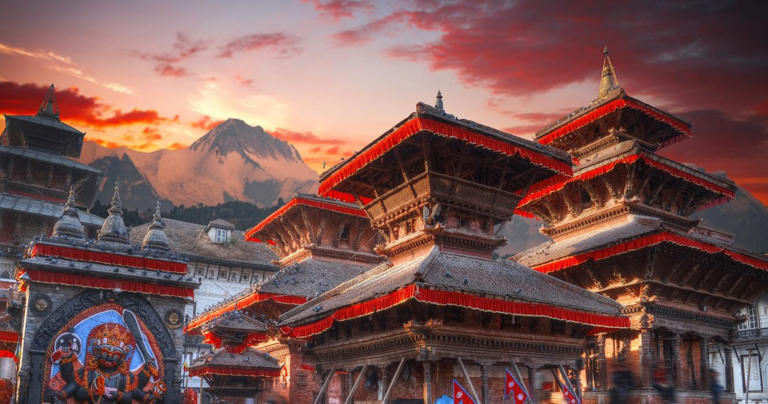
- Travelogues
- Travel Agent Cooperation
.jpg)
Are Tibet and Nepal the Same? The Differences and Similarity of Tibet and Nepal
Tibet and Nepal are both amazing lands of the mighty Himalayas, and are both great places to visit. These two stunning tourist destinations share a large portion of the western Himalayas, including Mount Everest and several others of the world’s highest mountains.

Why do Most People think Tibet and Nepal are the Same?
Some people mistakenly think Tibet and Nepal are the same due to a few reasons. Firstly, their geographic proximity in the Himalayan mountain range creates confusion. Although they are located on different sides of Mount Everest, this fact may be overlooked.
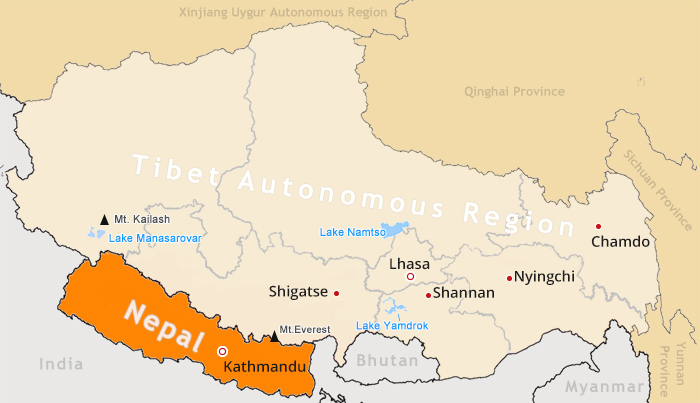
Secondly, both regions have a rich tradition of Buddhism, leading to the assumption of similarity. However, Tibet and Nepal have distinct cultural practices within Buddhism. Lastly, limited knowledge or exposure to the region can contribute to misconceptions.
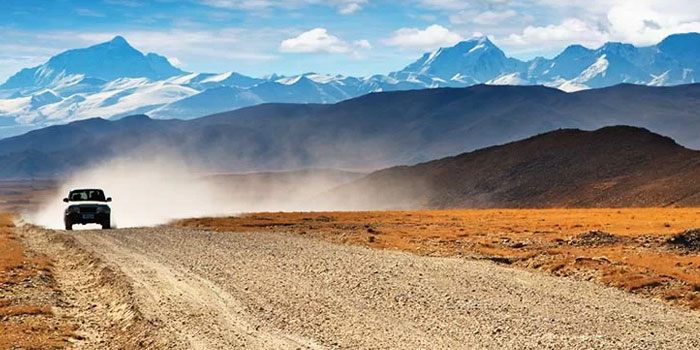
7 Days Lhasa to Kathmandu Overland Small Group Tour
Difference 1: landscapes in tibet and nepal.
The biggest difference between Tibet and Nepal is the landscapes in each location. Tibet is a harsh and somewhat arid land, lying on the world’s highest plateau. With an average elevation of around 4,000 meters, the plateau does have a varied landscape, which depends largely on the altitude. With vast open plains and prairies, huge lakes that are dotted across the region, as well as hundreds of smaller lakes too, and an almost uninterrupted transition from plains to mountains, the plateau landscapes in most of the region could not be more different than those of Nepal.
>> Learn more about Tibet and Nepal through different tourist maps
In Nepal, the landscape starts high with the massive mountains of the Himalayas. These tall peaks stretch along its northern border, from west to east, and below them, instead of plains, are the usual lower slopes that can be found below most mountain ranges. Then you travel into the lower foothills, gradually descend as you head south to the southern Terai region, which has an altitude of fewer than 1,000 meters; and finally to the lowland plains that border with India along the southern borders. Nepal also has a varying altitude, with the high mountains transitioning to foothills that are less than 3,000 meters above sea level, the Terai and valleys that are mostly below 1,000 meters, and then the plains, which lie at around 200-300 meters.

Difference 2: Culture in Tibet and Nepal
Even though both Tibet and Nepal are influenced by Buddhism, the culture are different in Tibet and Nepal.
The culture and identity of Tibet are inextricably linked to its Buddhist religion, and religious practice is a major part of the average Tibetan’s daily routine. The culture in Tibet has developed over more than a thousand years of Buddhism in the region, and is partly due to the harsh high-altitude plateau landscape, as well as some influencing factors from India, Nepal, Mongolia, and China. When Buddhism was introduced to the plateau in the 7th and 8th centuries, it exerted a deepest influence on the Tibetan way of life than anything else, and has also changed in the various regions, mostly due to the environmental and geographical differences across the plateau.

Nepali culture is a distinct fusion of the Tibet-Mongolian and Indian (Indo-Aryan) influences of more than three thousand years. These influences are the result of a long and varied history of trade, migration, and conquest. Nepal has had a lot more influence from India than from China over the centuries, and while there is a large Buddhist population in the higher mountains, most of the country is Hindu.
Difference 3: Religion and Spirituality in Tibet and Nepal
Religion and spirituality play significant roles in both Tibet and Nepal, but they differ in their religious practices and what you can witness in each region.
In Tibet, Buddhism is the predominant religion, specifically Tibetan Buddhism. The landscape is adorned with magnificent monasteries, such as the iconic Potala Palace in Lhasa, and the vibrant Jokhang Temple. These sacred sites are inhabited by devoted monks who diligently follow their religious path. Exploring Tibet allows you to witness the devoutness of local pilgrims who undertake arduous journeys to visit sacred sites, prostrating themselves along the way.
In Nepal, while Buddhism is also practiced, Hinduism holds a major influence. The country is dotted with temples and pagodas, such as the famous Pashupatinath Temple in Kathmandu. Nepal is known for its spiritual gurus or "Babas," who are revered for their wisdom and spiritual guidance. Witnessing vibrant religious festivals, such as the colorful celebration of Holi and the sacred rituals of Dashain, provides insight into the deep religious devotion of the Nepalese people.
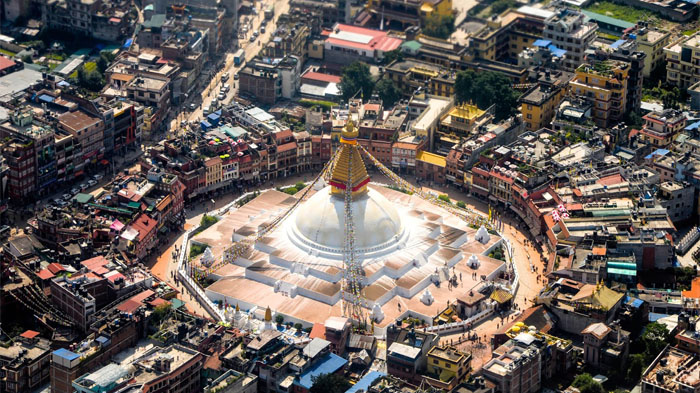
Difference 4: Travel Policy in Tibet and Nepal
Nepal has substantially different travel regulations than Tibet does. As a visitor, all you need is a basic tourist visa, which you can get upon arrival in Kathmandu to enter Nepal, and then you're free to go anywhere you'd like inside the nation.
However, Tibet is somewhat unique. You are required to arrange your Tibet trip with a licensed tour operator in advance, and you will need both a Chinese Visa and Tibet Travel Permit to enter Tibet. Traveling around Tibet is also restricted, and you require permits for the different areas that only the tour operator can obtain. You also need to have a private guide and private vehicle for all travel within Tibet.

Insider Tips: As the leading Tibet tour operator in Lhasa, we can help you get Tibet Travel Permit with a 100% guarantee and other indispensable travel documents to places like Mt.Kailash, etc. Please feel free to contact our travel consultants for free consultancy.
Difference 5: Best Travel Seasons in Tibet and Nepal
The best travel seasons in Tibet and Nepal differ due to their distinct climates and weather patterns.
The best time to travel Tibet is from spring to autumn, with the peak period occurring from April and May and from September to October. Summer is the busiest time for tourism, while the period from November to January is the low season. Despite being accessible year-round, spring (April to May) and autumn (September to October) are the best seasons for clear mountain views, including Mount Everest. During these periods, the weather is generally stable, and the skies are clearer, offering breathtaking panoramic views of the Himalayas.
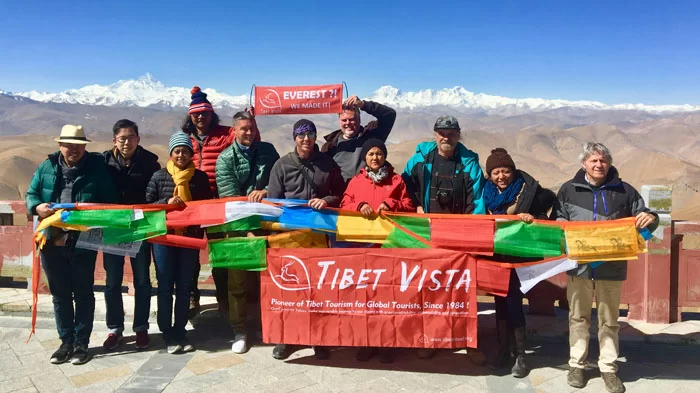
Nepal, on the other hand, experiences distinct rainy and dry seasons. The rainy season, known as monsoon, occurs from June to September and brings heavy rainfall to the region. This period may not be ideal for outdoor activities or mountain views due to cloudy conditions. The dry season, from October to May, is the best time to visit Nepal , particularly for trekking and mountaineering enthusiasts. The weather is generally dry and stable, offering clearer views of the mountains and pleasant temperatures.
When planning a Nepal Tour it is essential to consider your preferences and what you wish to experience. The dry season provides optimal conditions for outdoor activities, while the monsoon season can offer unique cultural experiences and fewer crowds in certain areas.
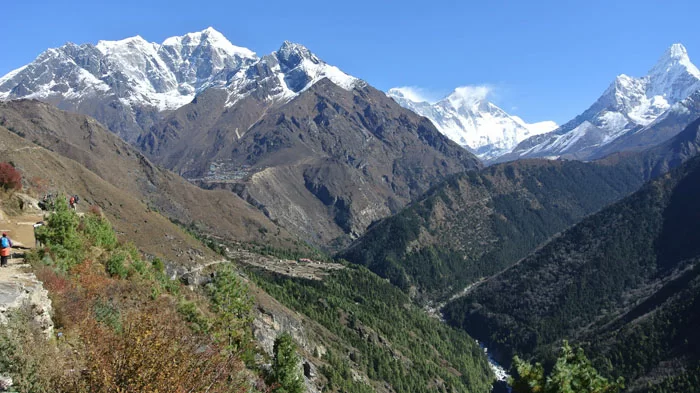
Difference 6: Mount Everest Tour in Tibet and Nepal
When it comes to Mount Everest tours , Tibet and Nepal offer distinct experiences:
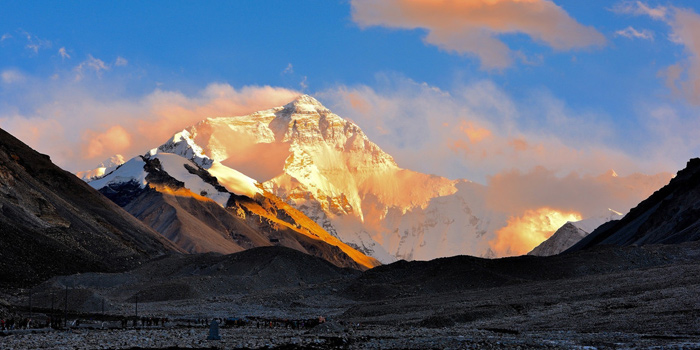
8 Days Lhasa to Everest Base Camp Small Group Tour
In Nepal, the Everest region offers a wider range of activities and trekking routes. Besides visiting Everest Base Camp from the South side, trekkers can embark on iconic trails like the Everest Base Camp Trek or the Gokyo Lakes Trek. These routes allow for an immersive experience in the breathtaking Himalayan landscapes, encountering Sherpa culture and picturesque villages along the way.
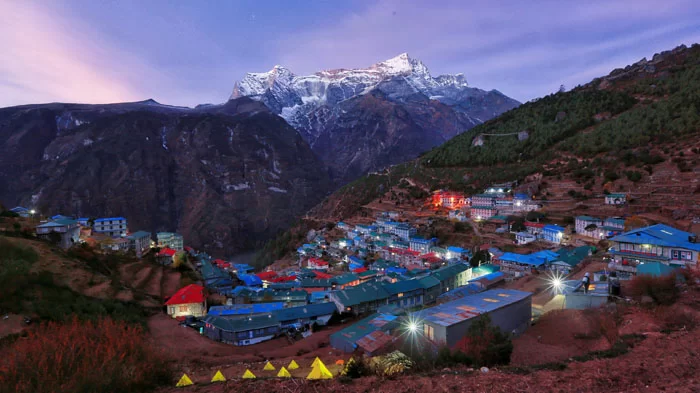
If your ambition is to climb Mount Everest, Nepal is the preferred choice. The South side of Everest in Nepal is the more popular and well-established route for mountaineering expeditions. Nepal provides the necessary infrastructure, support services, and experienced guides for those seeking to conquer the summit.
Difference 7: Travel Highlights in Tibet and Nepal
Tourism in Tibet is mostly centered on the Buddhist monasteries, the unique culture, and the stunning landscape, with only a small percentage of tourism dedicated to adventure activities such as trekking. And with its stunning landscapes and unique Buddhist culture, Tibet has something no other destination in the world has.

The most notable activities in Tibet include exploring the historic monasteries of Lhasa, such as the majestic Potala Palace and the revered Jokhang Temple. Embarking on a tour of the holy lakes, such as Yamdrok and Namtso, provides breathtaking natural beauty.

15 Days Kailash and Manasarova Tour
Nepal, however, has a different perspective, and while culture and landscape do come into it, the main reason people travel to Nepal is for the amazing trekking that can be done in the Everest and Annapurna Region, as well as the other adventure activities you can find across the country.
In Nepal, the capital city of Kathmandu offers captivating sightseeing opportunities, including UNESCO World Heritage Sites like Durbar Square and the sacred Pashupatinath Temple. The scenic city of Pokhara entices with its outdoor activities, such as trekking, paragliding, and mountain biking amidst stunning mountain vistas. Exploring Chitwan National Park provides a chance to encounter wildlife on an exciting safari adventure.

Should I visit one or travel to Tibet and Nepal together?
If you're wondering whether to visit Tibet or explore both Tibet and Nepal together, combining the two is an immensely popular choice. These tours, expertly organized by registered Tibetan operators, offer a captivating itinerary that begins in the breathtaking city of Lhasa and concludes with a journey across the Nepal-China border at Gyirong Port, including a remarkable side trip to Mount Everest.

While starting with Tibet and concluding in Nepal is a prevalent approach, the reverse Kathmandu to Lhasa overland tour is also an option. Planning this kind of trip is easier than you might anticipate since the tour operator handles all the arrangements for Tibet tours . Once that part of the journey is secured, coordinating a trip to Nepal becomes a breeze.
Headquartered in Lhasa with branches in Kathmandu, we are dedicated to meeting all your tour needs in Tibet and arrange a tailored tour in Nepal. Our knowledgeable advisors are ready to assist you in planning and organizing your entire journey from Lhasa to Kathmandu and beyond, ensuring an unforgettable experience.
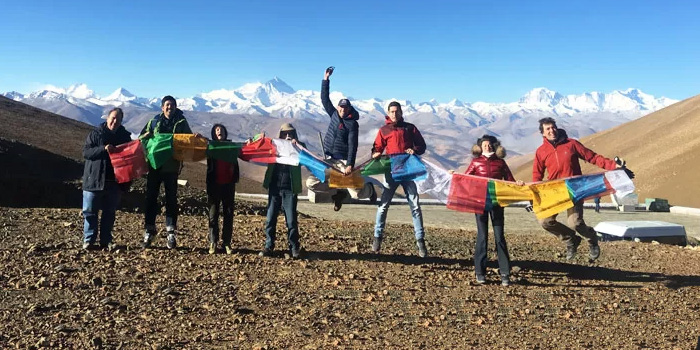
8 Days Driving Across Himalaya Overland Adventure from Kathmandu to Lhasa
While there are a lot of things that Nepal and Tibet have in common, there are many things that are different about these neighbors. Partially because of the massive barrier of the Himalayas, and party because of the major influence of India on Nepal and China on Tibet, these close destinations are distinctly unique from each other, like chalk and cheese.

About the Author - Master Kungga Dundruk
Kungga Dundruk, often respectfully referred to as “Manager Kunga”, is the most revered and legendary Tibetan guide in our team.
Currently working as a customer service manager in Lhasa, Kunga used to study business overseas and got his Bachelor of Business in Nepal and India before moving back to his homeland. With pure passion for life and unlimited love for Tibet, Kunga started his guide career as early as 1997.
As a legendary Tibetan guide with 22 years of guide experience, Kunga was awarded the Gold Medalist of China’s Best Tour Guide in 2019, marking the pinnacle of his career. Today, Kunga loves sharing his wealth of Tibetan knowledge through travel articles and stands ready to offer prompt support whenever our guests need help in Lhasa.
https://plus.google.com/+Kunga-TibetVista
Read all my articles about Tibet travel
Related Articles & Posts

Are Tibet and Nepal the Same? There are same festures and differeneces concering tourism in Nepal and Tibet, like the cu ...
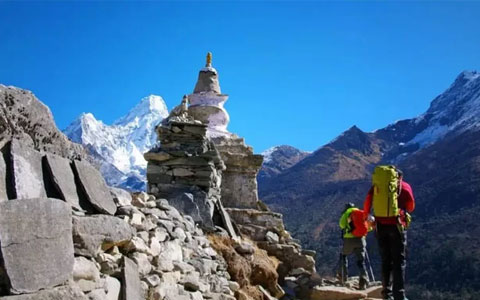
Nepal is one of the most popular places to travel for trekking, mountain climbing, and adventure holidays. Nepal is safe ...

How to get to Nepal? The best and most popular way is to travel to Nepal from China or India either by flight or by over ...

Compared with travelling overland from Nepal to Tibet via Gyirong Port, taking flight from Kathmandu to Lhasa is a faste ...

8 Days Lhasa to Everest Base Camp Small Group Tour: Marvel at Mt.Everest Real Close from 4 Different Viewing Platforms
Lhasa - Gyantse - Shigatse - Everest Base Camp - Shigatse - Lhasa

15 Days Kailash and Manasarova Small Group Tour: A pilgrim’s final fantasy and the greatest overland trip in Tibet.
Lhasa - Gyantse - Shigatse - E.B.C - Saga - Kailash Trek - Darchen - Lake Manasarovar - Saga - Gyirong - Tingri - Lhasa

10 Days Lhasa to Everest Base Camp and Namtso Lake Small Group Tour
Lhasa - Gyantse - Shigatse - EBC - Shigatse - Lhasa - Namtso Lake - Damxung - Lhasa

Kathmandu - Gyirong - Everest Base Camp - Tingri - Shigatse - Gyantse - Lhasa

4 Days Lhasa Impression Small Group Tour: Explore the Heart of Tibet and Mingle with the Locals

7 Days Lhasa to Kathmandu Overland Small Group Tour: Traverse from the North Side to the South Side of Mt.Everest for the Best of the Himalayas
Lhasa - Gyantse - Shigatse - Everest Base Camp - Gyirong - Kathmandu

6 Days Central Tibet Culture Small Group Tour: Explore Tibet's religion, cultural gems, and captivating landscapes.
Lhasa - Gyantse - Shigatse- Lhasa

13 Day Lhasa, Mt. Everest, Mt. Kailash, Lake Manasarovar and Kathmandu Adventure Tour
Lhasa - Gyantse - Shigatse - EBC - Saga - Darchen - Kailash Trek - Darchen - Saga - Gyirong - Kathmandu
0 Comment ON "Are Tibet and Nepal the Same? The Differences and Similarity of Tibet and Nepal "
Check All Tibet Travel FAQs Here

- Election 2024
- Entertainment
- Newsletters
- Photography
- Personal Finance
- AP Investigations
- AP Buyline Personal Finance
- AP Buyline Shopping
- Press Releases
- Israel-Hamas War
- Russia-Ukraine War
- Global elections
- Asia Pacific
- Latin America
- Middle East
- Election Results
- Delegate Tracker
- AP & Elections
- Auto Racing
- 2024 Paris Olympic Games
- Movie reviews
- Book reviews
- Personal finance
- Financial Markets
- Business Highlights
- Financial wellness
- Artificial Intelligence
- Social Media
Not possible to search for British climber and his Sherpa who went missing on Everest, official says
Phunjo Lama who became the fastest female to scale the Everest returns at airport in Kathmandu, Nepal, Sunday, May 26, 2024. Lama scaled the peak in 14.5 hours becoming the fastest female to do so. (AP Photo/Niranjan Shrestha)
Everest climbers, Shiva Sapkota and Gyanendra Shrestha welcome Phunjo Lama, center, on her arrivals at airport in Kathmandu, Nepal, Sunday, May 26, 2024. Lama scaled the peak in 14.5 hours becoming the fastest female to do so. (AP Photo/Niranjan Shrestha)
Kim Lal Gautam puts the national flag on Phunjo Lama on her arrival at airport in Kathmandu, Nepal, Sunday, May 26, 2024. Lama scaled the peak in 14.5 hours becoming the fastest female to do so. (AP Photo/Niranjan Shrestha)
Phunjo Lama who became the fastest female to scale the Everest arrives at airport in Kathmandu, Nepal, Sunday, May 26, 2024. Lama scaled the peak in 14.5 hours becoming the fastest female to do so. (AP Photo/Niranjan Shrestha)
A couple takes selfie with Phunjo Lama, right, on her arrivals at airport in Kathmandu, Nepal, Sunday, May 26, 2024. Lama scaled the peak in 14.5 hours becoming the fastest female to do so. (AP Photo/Niranjan Shrestha)
Phunjo Lama displays a tattoo of Mount Everest on her forearm on her return from Everest, at airport in Kathmandu, Nepal, Sunday, May 26, 2024. Lama scaled the peak in 14.5 hours becoming the fastest female to do so. (AP Photo/Niranjan Shrestha)
- Copy Link copied
KATHMANDU, Nepal (AP) — A Nepali official said Sunday it wasn’t possible to search for a British climber and his Sherpa guide who went missing after reaching the top of Mount Everest six days ago because both fell on their way down from “a very high altitude” on the Chinese side of the mountain which will require further coordination to form a search party.
Daniel Paul Paterson, 40, and his local guide Pas Tenji, 23, were reported missing Tuesday on the world’s highest peak which is on the border between China and Nepal.
This climbing season, which started in March and is expected to end in a few days, saw four climbers — two Mongolians, one Nepali and one Kenyan — die. The Kenyan climber’s guide, Nawang Sherpa, has been missing since May 22.
Last year, 18 climbers died while attempting to scale the treacherous 29,032-foot (8,849-meter-) mountain , according to Nepal’s mountaineering department.
“It is not possible to search for the missing climbers right now because the British (mountaineer) and his Sherpa fell from the bottom of Hillary step which is at about 8,800 meters (26,964 feet) and toward the Kangshung Face in Tibet,” said Khim Lal Gautam, an official at Everest’s base camp who monitors climbers.
The Kangshung Face is one of the Tibeatean eastern-facing sides of the mountain, controlled by China.
“It is going to be difficult to search for them because they have fallen on the Tibet side which needs coordination,” Gautam said.
Hundreds of climbers have successfully scaled Everest this month during the short window of good weather. Climbers also reported the usual number of mountaineers en route to the peak’s top this week.
“The traffic of climbers heading to the summit was similar to that of the past two or three years,” Tendi Sherpa, who has scaled the peak 17 times, out of which twice was this month, told The Associated Press.
Tendi said when he and his team reached the summit on May 21, despite seeing “around 200 climbers ... they were all organized and using their experiences and expertise” to navigate the crowd.
Among Tendi’s climbing team was Phunjo Jhangmu Lama who scaled the peak in 14 hours and 31 minutes, regaining the title of the fastest female climber of Mount Everest.
Lama also said the climbers’ traffic was normal and that most of her climb from the base camp to the summit went smoothly without any long halts.
“Traffic is nothing new,” Lama said. “It has been going on for years.”
Recently, some have complained that the mountain is becoming too crowded with climbers and dirty because of littering.
In March, Kanchha Sherpa, 91, the only surviving member of the mountaineering expedition that first conquered Everest, echoed the sentiment, saying that the number of climbing permits should be reduced.
During the 2023 spring climbing season, 667 climbers scaled the peak, bringing along thousands of support staff to the base camp, and raising concerns over the generation of trash and waste.

COMMENTS
Tibet Nepal tour provides you with the one-stop tour service for the epic journey across the Himalayas from Tibet to Nepal. As a local Tibet travel agency, with offices in Lhasa, and Kathmandu, we offer both small group and private tours that combine the best highlights of Tibet and Nepal tour with easy border transfer and multiple tour options and attentive services.
Best Travel Seasons for Tibet Tour Via Nepal: A Guide to Planning Your Adventure. Tibet and Nepal are popular travel destinations for adventure and cultural experiences in Asia. However, their climates differ significantly, with Tibet having a high-altitude plateau sub-tropical climate, while Nepal has a more varied climate dependent on season ...
Also, you need AT LEAST four full business days in Kathmandu for your Tibet and Nepal travel agencies to arrange the group visa. Finally, flying to Lhasa's elevation of 11,975 ft/ 3658 m. from Kathmandu's 4593 ft / 1400 m puts most travelers at high risk of altitude sickness.
The Sino-Nepal Friendship Highway makes it possible to travel through the best parts of the Himalayas. There is no doubt that the best way to travel from Tibet to Nepal is to travel through the highway from Lhasa to Kathmandu. It is one of the most epic overland routes in the world. Starting from the holy city Lhasa, you will pass by the sacred ...
How long is the overland route. Tibet to Nepal classic tour map. The reasonably paced tour from Lhasa to Tibet-Nepal border takes at least 7 days. It includes the time necessary for acclimatizing to the high altitude of Tibet, and the actual travel time. Almost no one takes the shortest possible route to the border.
A China Group Visa and a Tibet Entry Permit are required if you enter Tibet from Nepal by land. This is different from traveling from a Mainland China city to Tibet. 1. China Visa Requirements. Based on current policy, it requires 4 people in a group to apply for a China Visa and an interview is needed at China's Embassy in Kathmandu.
Overland travel into Tibet from Nepal is fast becoming one of the most popular ways to get to Tibet. Instead of flying to Lhasa from Kathmandu, you travel overland through Gyirong Port, the Chinese border checkpoint between China and Nepal. Getting there is relatively easy and is a six-hour drive from the Nepali capital, though you may want to ...
The extra costs aside from the tour cost itself were: Cost of the Nepal visa ($30 for 15 days, $40 for multiple entries if staying for more days before or after your trip) Cost of the Tibet Visa (Various according to Nationality) American and Brazilian: 195 USD per person. Canadian and Romanian: 150 USD per person.
Travel from the Nepal Side. There are two ways into Tibet from Nepal: by flight and by road. You should first consider issues of a China visa and Tibet Entry Permit, no matter whether you'll go by flight or road. Procedures are different from traveling from a Chinese mainland city to Tibet. You must apply for a China visa and Tibet permits in ...
This adventure carries you from the majestic holy places of Tibet to the bustling bazaars and historic sites of Nepal and to the sacred peaks of Bhutan. Take the ancient trade route of Tibet over high passes and along the stunning turquoise waters of Yamdrok Lake. Visit the sublime Kumbum chörten of Gyantse, a multi-storied chapel of shrines ...
Travel overland journey from Nepal to Tibet via Kyirong border port. The Kyirong border town is located 130 kilometres from Kathmandu. The town on the Nepal side is called Rasuwa. There is a daily bus service available from Kathmandu to Rasuwa. You can also arrange private transportation from Kathmandu to Rasuwa.
The Tibet Autonomous Region stands in the westernmost part of China. The countries of Bhutan, India, Myanmar, and Nepal are in the South. Did you know the average altitude is 4300 meters above sea level? For many of us, it's the highest place we'll ever visit in our lives. Tibet and its plateau formed as a result of powerful geological forces.
Tibet is on the northern side of the Himalayas, while Nepal is on the southern side. Both also claim Mount Everest and share that distinctive tag of having the highest mountain in the world. Tibet has an average altitude of more than 4,000 meters (13,123 ft), while that of Nepal is 3,265 meters (10,712 feet).
1) Travel from Tibet to Nepal: It is the top choice to cover both Tibet and Nepal as it will be easier for the procedure. Tour from Lhasa to EBC and exit from Gyirong Border to Nepal. Or, fly from Lhasa to Kathmandu. 2) Travel from Nepal to Tibet: You can explore Nepal first and enter Tibet via Gyirong Border to Tibet.
Tibet Tour and Holidays - Tibet is the heart of Buddhist culture and philosophy, and the most mesmerizing destinations of the world today as it seems as reserved as ever. ... Travel Expert, Nepal. Call me at: +977-9851162501 +977-9851162503 (Or whatsapp, viber) Activities in Tibet. Tibet Tours. 6 Packages. Mt Kailash Tour. Global Holidays ...
Travel from Nepal to Tibet. Take a flight from Kathmandu Tribuvan International Airport to Lhasa, or enter Tibet from Gyirong Port at Nepal-China border. This port is about 89km from Kathmandu, about 820km from Lhasa, and about 360km from Mount Everest (Tibet Side). To travel from Nepal to Tibet, you have to apply for a Group Visa in Kathmandu.
2. If you have more than one passport, please make sure you visit Tibet with the same one you used for your Tibet Travel Permit. Or you will be denied entry into Tibet. 3. If you enter Tibet from Nepal, you need to apply for a Chinese group visa in Kathmandu. Tibet Travel Permit is an indispensable travel document for Tibet entry.
The first Tibet travel journey is a 10-day Tibet travel that begins in Lhasa and culminates at Mount Everest base camp and Namtso Lake. The second Tibet trip we recommend is a 17-day Tibet travel journey from Lhasa that takes you to Mount Kailash, where you will trek for three days over 52km at an altitude of 5000 meters. During this tour, you ...
Tibet vs Nepal: Landscape Difference. The landscape is the most obvious difference between Tibet and Nepal. While the Tibetan landscape lies wholly on the vast Qinghai Tibet Plateau, the highest plateau in the world, Nepal's landscape is varied, ranging from the high mountains of more than 8,000 meters to the lowland areas in the south of the country, along the border with India.
8 days Nepal to Tibet tour. Nepal to Tibet Overland Tour 8 days Nepal to Tibet Overland Tour is the most famous tour where you can visit two countries with different culture, traditions, variety in food, Religion etc. some are common for instant Religion like Buddhism are also practicing in Nepal and shares the world's highest mountain.
Himalayan Combined Tibet Nepal Tour- 14 Days - Add-on Bhutan, if you are interested; Cultural Tour and Trekking (Nepal, Tibet, and Bhutan) - 20 Days Conclusion. The purpose of this blog is to provide essential information for those planning a trip to Nepal, Tibet, and Bhutan as part of a single package. If the trip ideas mentioned above do ...
Travel in Tibet is a local tour operator which is completely owned and operated by Tibetan. We established the company in 2015 with all our enthusiasm and inspiration. ... When we have a clear scan of your passport and itinerary, we will send a visa application to the Chinese embassy in Nepal. Once you arrive to Kathmandu, our partner at Nepal ...
Nothing beats the feeling of dropping from the suspension bridge over River Bhote Kosi in Nepal, near the border with Tibet. At 160 meters, it is one of the world's best free falls, and while in ...
Executive Summary. This is the sixth annual report under Section 4 of the Reciprocal Access to Tibet Act of 2018 (8 U.S.C. 1182 note), enacted December 19, 2018, which requires the Department of State to provide a report to Congress, within 90 days of enactment and annually thereafter for five years, regarding the level of access People's Republic of China (PRC) authorities granted to U.S ...
Difference 1: Landscapes in Tibet and Nepal. The biggest difference between Tibet and Nepal is the landscapes in each location. Tibet is a harsh and somewhat arid land, lying on the world's highest plateau. With an average elevation of around 4,000 meters, the plateau does have a varied landscape, which depends largely on the altitude.
Twenty-four hours and 26 minutes, without stopping to sleep: Nepal's Phunjo Lama has just broken the world record for the fastest ascent of Mount Everest by a woman. Her journey from Everest ...
Not possible to search for British climber and his Sherpa who went missing on Everest, official says. Phunjo Lama who became the fastest female to scale the Everest returns at airport in Kathmandu, Nepal, Sunday, May 26, 2024. Lama scaled the peak in 14.5 hours becoming the fastest female to do so. (AP Photo/Niranjan Shrestha) Everest climbers ...